independent contractor
description: natural person, business, or corporation that provides goods or services to another entity under a contract or verbal agreement.
259 results
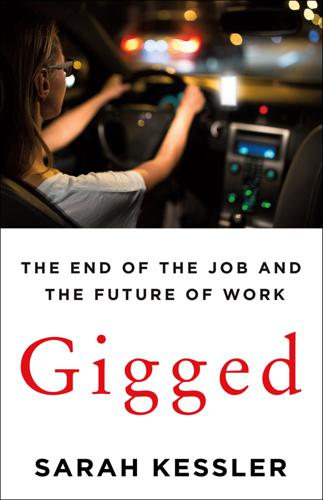
Gigged: The End of the Job and the Future of Work
by
Sarah Kessler
Published 11 Jun 2018
On one hand, these companies wanted to develop a reputation for providing great service, so that customers would begin to rely on them. On the other, their lawyers advised them that providing independent contractors with training, uniforms, benefits, or regular work shifts—that is, the things that produce happy, well-trained employees—could put the companies at risk of being sued for misclassifying employees as independent contractors. Gig economy companies were in a pickle. They wanted to provide good service, but also to avoid accusations that they were treating their independent contractors like employees. Not training workers or setting expectations at all would lead to inconsistent service.
…
According to a draft Handy circulated for discussion in 2016, companies under the proposed law could elect to contribute a portion of each transaction to an on-demand worker’s benefit fund—which he or she could put toward benefits like life insurance and dental care—and, as a result, be certain the workers would remain independent contractors. The independent contractor classification would apply to even work done previously for the company, essentially removing Handy’s risk of misclassification lawsuits. Hiring employees can cost 20% to 30% more than hiring independent contractors. Social Security and Medicare payments alone cost 7.65% of a worker’s pay. By comparison, Handy had proposed companies divert at least 2.5% of worker pay into a worker benefit account.
…
Wonolo eventually added a more traditional staffing agency option to its business, to accommodate clients who worried about misclassification lawsuits and would rather hire temporary employees than freelancers. Adding mobile technology to the process makes using both temp labor and independent contractors easier, more efficient, and ultimately applicable in more situations. Is this a bad thing? Maybe not. Gig economy boosters often point out that between 70% and 85% of independent contractors say they prefer to work for themselves.5 But the type of job that has traditionally been completed by independent contractors is narrowly defined and, most important, highly skilled. In the future, this may change. Deliveroo workers—whom the UK Central Arbitration Committee ruled in 2017 were legitimately self-employed—are, for instance, not well-paid professionals who can likely afford to create their own safety nets, but couriers.
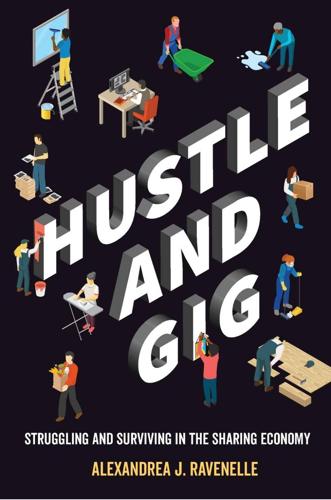
Hustle and Gig: Struggling and Surviving in the Sharing Economy
by
Alexandrea J. Ravenelle
Published 12 Mar 2019
The majority of sharing economy workers—including Uber/Lyft drivers, TaskRabbit runners, Airbnb hosts, and Handy cleaners—are independent contractors. In recent years, the number of workers classified as independent contractors has grown steadily as employers seek to avoid social responsibilities, including workers’ compensation, overtime, and disability accommodations.33 A 2015 Occupational Safety and Health Administration report suggests that temporary workers and independent contractors also receive less training and are more likely to be injured on the job as a result. Although researchers have addressed how classification as an independent contractor, as opposed to employee, can affect workers, the concept of risk is more commonly used when discussing entrepreneurs.34 Since the late 1700s, entrepreneurs have been linked with risk-taking based on Ricard Cantillon’s observations that the entrepreneur “buys at certain prices and sells at uncertain prices,” thereby bearing the risk of the transaction.35 Harvard Business School’s Howard Stevenson describes entrepreneurship as “the pursuit of opportunity beyond resources controlled.”36 Although an entrepreneur is often thought of as creating something new, the Oxford dictionary emphasizes control and risk in its definition of an entrepreneur, describing one as someone who “undertakes or controls a business or enterprise and bears the risk of profit or loss.”37 The concept of risk is particularly salient for entrepreneurs, especially in the United States; statistics from the Bureau of Labor Statistics demonstrate that roughly a third of new businesses will fail in the first two years, and that more than half won’t last five years.38 Yet Jacob Hacker has noted that risk in the workplace is no longer assumed entirely by entrepreneurs or capitalists.39 Workers have seen their health insurance coverage transformed into high-deductible plans and their company pensions converted from defined benefit to defined contribution plans (401ks), pushing the financial risk of health problems and bad investments onto the workers.
…
The New York State Legislature also created the Factory Investigating Commission to “investigate factory conditions in this and other cities” and to provide “remedial measures of legislation to prevent hazard or loss of life among employees through fire, unsanitary conditions, and occupational diseases.”9 The state commission’s reports helped modernize the state’s labor laws, making New York State “one of the most progressive states in terms of labor reform,” and led to the passing of sixty new laws that granted better building access and egress, mandated the installation of alarm systems and automatic sprinklers, increased requirements for fireproofing and fire extinguishers, improved eating and toilet facilities for workers, and limited the workweek for women and children.10 MODERN WORKERS, WITHOUT GENERATIONS OF PROTECTION In a cruel irony, workers in the sharing economy—hailed as the height of the modern workplace—find themselves without any of the workplace protections enjoyed by their great grandparents. Although workplace protections still exist for full-time and part-time employees, gig workers, as independent contractors, are outside the social safety net of basic workplace protections. In recent years, the number of workers classified as independent contractors has grown steadily, as businesses have deliberately restructured the work relationship, abandoning the employment model to escape social responsibilities.11 Independent contractors in the United States do not receive workers’ compensation, unemployment benefits, paid vacation, retirement, overtime, disability accommodations, family leave protections, protection from discrimination, or the right to form unions.
…
As critical as I am of the sharing economy and its lack of worker protections, if we aren’t going to increase incomes overall or implement a universal basic income, then we need a way to help people supplement their incomes as needed without experiencing an undue burden of risk. An easy fix would be to change how gig economy workers are classified by employers. INDEPENDENT CONTRACTOR (MIS)CLASSIFICATION While many sharing economy services tell their workers that they are small business owners or independent contractors, the determination of employee or independent contractor is actually based on federal laws, although definitions and interpretations can vary. The Fair Labor Standards Act, the Migrant and Seasonal Agricultural Worker Protection Act, and the Family and Medical Leave Act have broader definitions of employee.
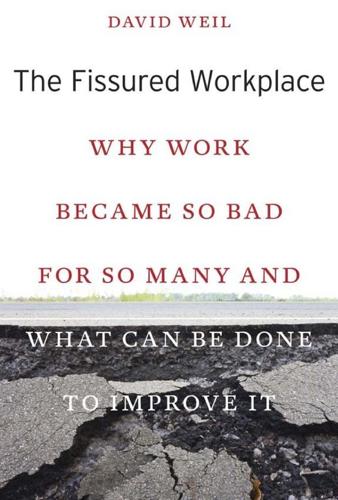
The Fissured Workplace
by
David Weil
Published 17 Feb 2014
However, a Supreme Court decision in 1944 holding that boys who sold newspapers on the street on commission were in fact Hearst employees despite the company’s contention that they were independent contractors led enraged conservatives in Congress to amend the National Labor Relations Act in 1947 to specifically exempt independent contractors.14 This has led historically to very narrow readings of coverage and application of the act. The definition of “employee” has become a hotly contested issue in recent years, particularly in regard to the reclassification of employees as independent contractors. Since independent contractors are viewed under law as business entities in their own right, they are exempted from minimum wage and overtime requirements of the Fair Labor Standards Act, workers’ compensation, unemployment insurance, Occupational Safety and Health Administration (OSHA) regulations, the National Labor Relations Act, and Social Security.15 But as the vignettes opening Part I also make clear, fissured employment further muddies these already murky waters.
…
Twenty-two states have passed legislation that addresses the classification of workers as independent contractors.54 While a senator, Barack Obama introduced the Independent Contractor Proper Classification Act of 2007. The legislation addresses misclassification by closing tax incentives that make it more advantageous for businesses to classify workers as independent contractors. Another bill, the Employee Misclassification Prevention Act, reintroduced in 2011, would require strict record-keeping and notice requirements by employers for workers classified as independent contractors and would levy significant penalties for violations of the law.55 Rebalancing Fissured Workplace Decisions Reform of existing workplace legislation and new policy initiatives could broaden the responsibility of lead organizations in the realm of employment so that it is consistent with the roles played in their other relationships with subordinate businesses.
…
For a discussion of the technology, information systems, business strategies, and public policies that enable modern lean retailing, see Abernathy and Volpe (2012). 3. The company advertises “independent contractor opportunities” on its website: “If you’re an independent contractor, select from the following links for information about opportunities with the FedEx family of companies.” The choices include FedEx Custom Critical Owner/Operator; FedEx Ground Independent Contractor; and FedEx Home Delivery Independent Contractor (http://www.fedex.com/us/indp/independentcontractors.html, accessed February 8, 2013). 4. This model of retailing has also become common in many other segments, most strikingly in food retailing, where strategies such as “efficient consumer response” seek to similarly reduce inventory exposure through use of point-of-sale information, efficient logistics, and replenishment programs for perishable and nonperishable products. 5.
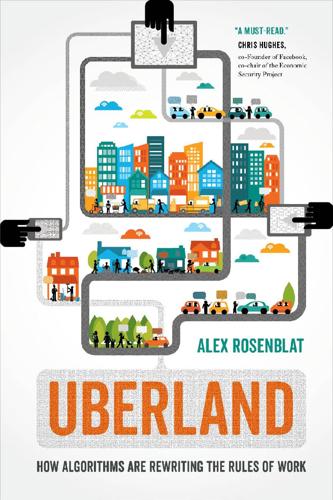
Uberland: How Algorithms Are Rewriting the Rules of Work
by
Alex Rosenblat
Published 22 Oct 2018
On appeal, a UK employment tribunal confirmed an earlier ruling that asserts Uber drivers are not independent contractors. They are workers and, as such, are protected from unlawful discrimination and entitled to a minimum wage and holiday pay, among other benefits.35 Conversely, in Florida, an appeals court ruled that drivers are independent contractors,36 and later, the state legislated their status as independent contractors. The implication is that drivers are not entitled to unemployment benefits or most labor law protections. Meanwhile, the California Labor Commissioner’s Office ruled that drivers are employees, not independent contractors, as early as 2015.37 These rulings affect the working conditions of thousands of drivers, but it’s clear that there is not a universal consensus on whether drivers should be defined as employees or independent contractors.
…
In Australia, the Fair Work Commission ruled that an Uber driver who alleged he was unfairly dismissed from his job was not protected from being fired unfairly because he is, according to their assessment, an independent contractor.33 In Toronto, Canada, a class-action lawsuit filed in January 2017 contends that drivers are misclassified as independent contractors, rather than employees.34 Misclassification lawsuits abound when it comes to Uber, but the various challenges to drivers’ employment classification have had mixed results. In the United Kingdom, there are three worker classifications: employees, workers or dependent contractors (who are formally self-employed, but who are economically reliant on a single employer for their income), and independent contractors. On appeal, a UK employment tribunal confirmed an earlier ruling that asserts Uber drivers are not independent contractors.
…
Drivers have noticed the tension between the promise of freedom and the reality of invasive algorithmic management. In fact, this tension is the basis of legal claims that drivers should not be classified as independent contractors.8 One of the fascinating aspects of Uber’s approach is that according to the company, its drivers are not workers at all—they are “consumers” of Uber’s technology services, just as passengers are. In 2013, a group of drivers and lawyers filed a class-action misclassification lawsuit, alleging that Uber was not justified in classifying drivers as independent contractors; they argued that Uber treats drivers like employees.9 In a January 2015 court hearing of the case, Uber’s lawyer explained that the company’s drivers are actually customers of its software.
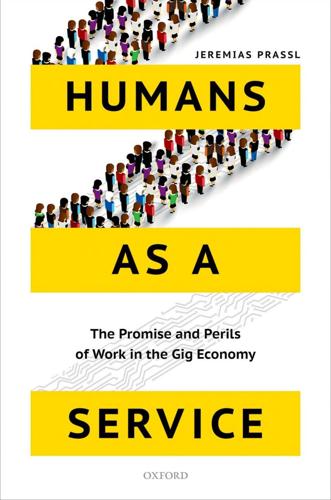
Humans as a Service: The Promise and Perils of Work in the Gig Economy
by
Jeremias Prassl
Published 7 May 2018
As a Reuters investigation in late 2015 highlighted, key industry players were often closely involved in drafting the laws—many of which contain provisions designed to classify drivers as independent contractors, beyond the scope of state-level employment law protection.61 In some cases, this is achieved through explicit carve-outs. In Ohio, for example, the relevant Act stipulates that ‘drivers are not employees [for pur- poses of key labour standards] except where agreed to by written con- tract’,62 and in Indiana, ‘an Act to amend the [State] Code concerning insurance’ discreetly stipulates that TNC drivers are similarly to be seen as independent contractors by law.63 Other states have included less direct provisions to similar effect.
…
The non-binding guidance issued to the then 28 EU member states stopped short of denying sharing-economy workers’ employment sta- tus, but suggested that only platforms that controlled the price of services, set contractual terms, and owned ‘key assets used to provide the underlying service’ should be classified as service providers.66 Even those uncomfortable with the legislative classification of gig- economy workers as independent contractors eschew employment status. At the least radical end of the spectrum, we find proposals to create a ‘third’ employment status for gig-economy workers, located between the traditional categories of employee and independent contractor. Building on the notion that on-demand economy platforms represent a genuinely novel form of work, deserving of its own legal status and regulatory apparatus, Seth Harris, a former Deputy US Secretary of Labor, and Alan Krueger, a Princeton economist who has repeatedly collaborated with on-demand platforms, have argued in favour of the statutory introduction of a third, intermediate category to capture gig-economy workers.
…
Creating such uncertainty, however, is the very point of the carefully drafted and strongly worded terms and conditions that prospective workers and customers must accept before joining a platform: TASKERS ARE INDEPENDENT CONTRACTORS AND NOT EMPLOYEES OF COMPANY. COMPANY DOES NOT PERFORM TASKS AND DOES NOT EMPLOY INDIVIDUALS TO PERFORM TASKS. USERS HEREBY ACKNOWLEDGE THAT COMPANY DOES NOT SUPERVISE, DIRECT, CONTROL OR MONITOR A TASKER’S WORK AND IS NOT RESPONSIBLE FOR THE WORK PERFORMED OR THE TASKS IN ANY MANNER.5 Everyone has agreed, it appears, that on-demand platforms are but neutral intermediaries, facilitating transactions between independent contractors and their clients—and thus most certainly outside the scope of local, national, or international employment regulation.
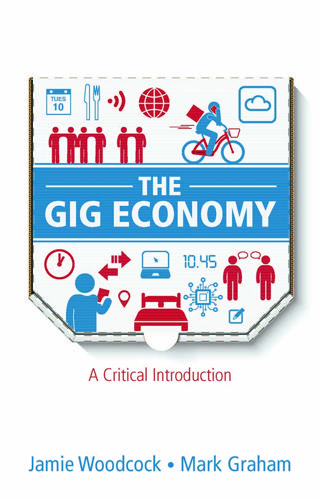
The Gig Economy: A Critical Introduction
by
Jamie Woodcock
and
Mark Graham
Published 17 Jan 2020
Their drivers are referred to as ‘partners’, not workers, and certainly not employees. Constructing the relationship in this way has involved the widespread use of a different kind of relationship, far removed from the ‘standard employment relationship’. Instead of an employment relationship, many kinds of gig work instead use versions of self-employment and independent contractor status. This goes further than the removal of stable employment that we have traced since the 1970s, representing a breaking of the employment relationship and the freeing of platforms from many of the responsibilities and requirements that used to be involved. This feeling, or subjectivity, is also a key part of the debate on precarious work.
…
It also means that workers have no access to rights around unfair dismissal or the right to organize in a trade union, issues that we will return to later. It is worth stating that we have not written this book as lawyers, and it is not our intent to get mired in debates about who is and is not an employee versus an independent contractor. We rather take the position that anyone exchanging labour power for money is a worker irrespective of their actual categorization. And that every worker deserves a set of minimum rights and protections. That said, it seems clear that many workers in the gig economy are misclassified as self-employed: a strategy that clearly offers more benefits to platforms than it does to workers.
…
Despite its reliance on labour, Uber’s business model involves avoiding sales taxes, the cost of vehicles, repairs, insurance, and meeting obligations for social security for its drivers. The main legislative loophole that Uber has taken advantage of is the categorization of its workers as self-employed independent contractors. In the process, ‘Uber created a fundamental cultural shift in what it means to be employed’ (Rosenblat, 2018: 4). However, Uber has gone way beyond just taking advantage of lack of effective regulation, through its concerted public relations and lobbying campaigns. The company employs and is advised by political operatives such as Jim Messina (the former White House Deputy Chief of Staff) and David Plouffe (Barack Obama’s 2008 campaign manager).

The Sharing Economy: The End of Employment and the Rise of Crowd-Based Capitalism
by
Arun Sundararajan
Published 12 May 2016
But the choices we make over the coming decade will determine which one dominates. Notes 1. Justin Fox, “Uber and the Not-Quite-Independent Contractor,” Bloomberg View, June 23. 2015. http://www.bloombergview.com/articles/2015-06-23/uber-drivers-are-neither-employees-nor-contractors. 2. The SS-8 form is available at http://www.irs.gov/pub/irs-pdf/fss8.pdf; detailed supplementary guidelines are available at http://www.irs.gov/Businesses/Small-Businesses-&-Self-Employed/Independent-Contractor-Self-Employed-or-Employee. 3. Fox, “Uber and the Not-Quite-Independent Contractor.” 4. Often called the “congressional watchdog,” GAO investigates how the federal government spends taxpayer dollars.
…
Indeed, there is a long history of taxi drivers operating as independent contractors in the United States. Uber maintains that it is a technology company that simply provides a platform for drivers to connect with customers in the same way that Airbnb helps hosts meet vacationers in need of accommodations. The Uber driver population also seems to not see full-time employment as the Holy Grail. In a survey conducted in June 2015 by SherpaShare, a provider of financial services to sharing economy providers, two out of three Uber drivers indicated that they viewed themselves as independent contractors to the platform rather than as employees.2 As this book goes to press, the case, involving 160,000 Uber drivers, is still underway.
…
As Fox notes, since the 1944 ruling—which for collective bargaining purposes categorized the newsboys as employees—workers classified as employees “now enjoy a wide variety of federal, state and local protections, from minimum-wage and overtime laws to unemployment insurance, that aren’t available to independent contractors.”3 This is an important distinction for a number of reasons, most saliently because the specter of future litigation may actually be preventing workers from getting benefits funded by the platforms. Since one of the IRS’s criteria for determining whether a worker is an employee is whether that worker gets benefits, a platform that considers benefits for its independent-contractor workers as, for example, a retention strategy, or a way of attracting new workers, will shy away from this to avoid potential class-action lawsuits.
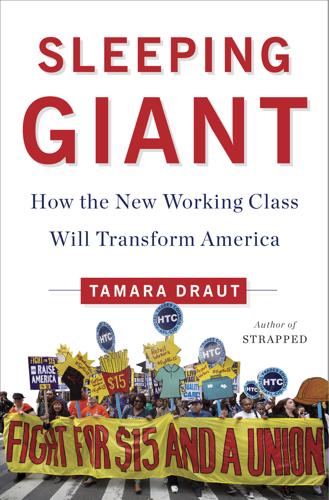
Sleeping Giant: How the New Working Class Will Transform America
by
Tamara Draut
Published 4 Apr 2016
As a result of misclassifying workers in this way, states and the federal government lose billions of dollars in tax revenue each year that supports unemployment insurance, worker’s compensation, and Social Security and Medicare, not to mention state and federal income taxes. Employers often underreport how much they pay independent contractors or pay them off the books to avoid paying taxes. Meanwhile, the workers also lose, because as independent contractors they don’t qualify for most safety-net programs when they are out of work, and they fall through the cracks of most labor and employment laws.23 So who exactly should be classified as an independent contractor? The key term here is the word “independent.” According to the IRS, what makes someone an independent contractor is that the firm paying for his or her work has direct control only over the result of the service or work provided, not over what work will be done and how it will be done.24 True independent contractors, such as realtors and freelance graphic designers, are self-employed, responsible for finding clients on their own.
…
Julia Preston, “Hershey’s Packer Is Fined Over Its Plant Violations,” New York Times, February 21, 2012, at http://www.nytimes.com/2012/02/22/us/hersheys-packer-fined-by-labor-department-for-safety-violations.html. 23. Sarah Leberstein, “Independent Contractor Misclassification Imposes Huge Costs on Workers and Federal and State Treasuries,” National Employment Law Project, August 2012, at http://www.nelp.org/page/-/Justice/IndependentContractorCosts.pdf?nocdn=1. 24. U.S. Treasury Department, Internal Revenue Service, “Independent Contractor Defined,” August 5, 2015, at http://www.irs.gov/Businesses/Small-Businesses-&-Self-Employed/Independent-Contractor-Defined. 25. Weil, The Fissured Workplace, p. 124. 26. Ibid., p. 131. 27.
…
According to the IRS, what makes someone an independent contractor is that the firm paying for his or her work has direct control only over the result of the service or work provided, not over what work will be done and how it will be done.24 True independent contractors, such as realtors and freelance graphic designers, are self-employed, responsible for finding clients on their own. The misclassification of workers as independent contractors has jumped the fence from professional occupations to include some of the lowest-paid jobs in America, including home care, janitorial work, and trucking. Today, for instance, almost all heavy-truck drivers are “independent contractors.” Rhonda, a thirty-six-year-old white woman, has driven trucks for over nine years.

Ghost Work: How to Stop Silicon Valley From Building a New Global Underclass
by
Mary L. Gray
and
Siddharth Suri
Published 6 May 2019
The majority of respondents also viewed ride-hailing services’ drivers as independent contractors rather than employees. Yet they also expected Uber, as much if not more than the driver, to manage their customer experience. This contradicts all of the current rules we have about how much a business can manage or direct those working for them on contract and what help or support an independent contractor can receive from a business that is not one’s official employer. On April 30, 2018, the California Supreme Court ruled that some Uber driver-partners should have been classified as employees rather than independent contractors. Uber was found guilty of violating existing labor laws where it withheld employee benefits to individuals who could show that Uber controlled their wages, hours, or working conditions, ability to secure work, or a “common law employment relationship” in which the ridesharing company trained, directed, or controlled how a driver-partner carried out their tasks.5 The litany of legal cases brought against Uber begs two larger questions: Who is the “employer of record” in a ghost work economy driven by a single-bottom-line scenario, and when are consumers of ghost work acting as employers, too?
…
This means that the future of business and employment will more likely resemble today’s on-demand economy than a dystopian sci-fi film in which humans disappear and robots rule. It will require people to navigate layers of software interfaces and learn to labor in the shadow of AI. It will contain an ecosystem of independent contractors like Joan, typing away in spare bedrooms, cafés, and cinder-block homes in rural India, Knoxville, Tennessee, and Portland, Oregon—or anywhere else a person with an internet connection, a computer, ambition, or financial need can get online. When little attention is paid to the workers behind these jobs, on-demand labor can quickly become alienating, debasing, precarious, and isolating ghost work.
…
Ghost Work draws on a five-year study in which we—an anthropologist and a computer scientist and the research team we mustered—investigated this booming yet still largely hidden sector of the economy.23 It is the culmination of more than 200 interviews and tens of thousands of survey responses collected from workers across the United States and India; dozens of behavioral experiments and social network analyses of on-demand work platforms; and unique studies of this labor market’s other key players, namely the people turning platforms into businesses and those hiring workers on them. It exposes a world in which steady work and salaries are being replaced by a chaotic string of small projects and micropayments, and human bosses are being replaced by automated processes that are programmed to oversee a far-flung workforce of anonymous independent contractors. Ghost Work departs from the well-known story about the rise of robots by documenting a more complicated future that is already emerging. It shows how ghost work platforms foster our belief in the magical promise of technology. As an anthropologist, Mary had her interest sparked by the specter of an atomized world of workers earning money by sorting and annotating thousands of pictures of pointy-eared dogs, hairless cats, and “dick pics.”
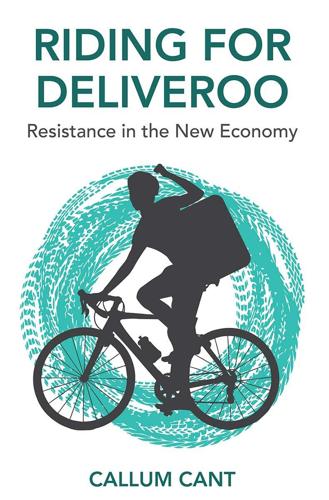
Riding for Deliveroo: Resistance in the New Economy
by
Callum Cant
Published 11 Nov 2019
So, the argument that Deliveroo is actually just exploiting workers rather than partnering with tens of thousands of small businesses takes us right to the heart of one of the key questions of platform capitalism: self-employment. ‘Independent Contractor’ Status The most widely understood element of Deliveroo’s system of control is self-employment. It’s relatively common knowledge that one of the characteristic features of platform capitalism is the misclassification of its workers as ‘independent contractors’. The claim that workers are self-employed, whilst it might be viable in court, is obviously rubbish to the workers themselves. A survey of Deliveroo workers by the IWGB found that 87.1 per cent of responding workers did not think that the status of ‘independent contractor’ accurately reflected the reality of the job and 92 per cent felt that being classified as ‘self-employed’ meant they were ‘being treated unfairly compared to an employee’ and that ‘employers deliberately misuse the “self-employed” category to take advantage of their workers’.32 On the job, I would sometimes find someone who liked being categorized as self-employed, usually because they believed that if we were given the formal rights associated with employment Deliveroo would immediately go bankrupt.
…
On top of that, Deliveroo makes no employer national insurance contributions for their ‘independent contractors’ to the state, which would otherwise be 13.8 per cent of their wage bill. Money that should be used to support statutory sick pay and pensions is instead used to expand the profit-making apparatus. In Spain, the labour inspectorate got sick of Deliveroo avoiding payments and forced the company to cough up €1.3 million in social security payments, after ruling that Deliveroo workers were employees and not independent contractors.33 But, in the UK, independent contractor status still stands, despite ongoing legal challenges.
…
CONTENTS Cover Front Matter Preface: London, August 2016 1 Introduction Workers and Bosses Workers’ Inquiry Class Composition Why Deliveroo? Notes 2 The Job Getting the Job An Average Shift Notes 3 The System of Control Algorithmic Management Work Intensification Black Box The Means of Subsistence ‘Independent Contractor’ Status The Menace of the Workers Notes 4 A Short History of Precarious Militants Dockers Builders Notes 5 Workers and Customers Migration Gender The Customers Notes 6 The Strikes The Rebel Roo The First Meeting The February Strike A Second Strike Invisible Organization Politics UberEats Notes 7 Looking Forward Fully Automated Luxury Food Delivery?
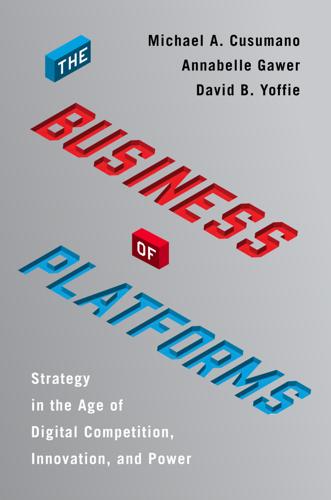
The Business of Platforms: Strategy in the Age of Digital Competition, Innovation, and Power
by
Michael A. Cusumano
,
Annabelle Gawer
and
David B. Yoffie
Published 6 May 2019
It is going to become increasingly difficult for platforms or other firms to classify workers as independent contractors. In an April 2018 landmark ruling, the California Supreme Court narrowed significantly the circumstances under which California businesses may classify workers as independent contractors rather than employees.47 The decision presumes that all workers are employees, sets out a new three-part “ABC” test that businesses must satisfy in order to classify workers as independent contractors, and places the burden on the business, not the worker, to prove that any particular worker is properly classified as an independent contractor. Under the ABC test, the business bears the burden of proving the worker satisfies all three of the following factors: (A) The worker is free from control and direction of the hiring entity in connection with the performance of the work, both under the contract for performance of the work and in fact.
…
Instead, most platforms connect people or companies with valuable assets and skills to other people and companies who want access to those assets and skills. While asset-light platforms potentially provide highly leveraged returns to investors, they create another challenge for human capital: How should platforms manage a workforce largely composed of “independent contractors”? Unlike employees, independent contractors are due no benefits, guarantee of hours, or minimum wage, enabling the enterprises that employ them to keep labor costs low. There were 57 million freelancers in the U.S. in 2017; for one-third of these people, freelance activity was their main source of income.33 Stephane Kasriel, CEO of Upwork, claimed that this class of workers is growing three times faster than the traditional workforce.
…
Labor Board Complaint Says On-Demand Cleaners Are Employees” Bloomberg, August 30, 2017. 42.Sarah Butler, “Deliveroo Boss Doubled His Pay Ahead of Riders’ Protest,” Guardian, November 11, 2016. 43.Nic Hart and Alice Head, “Gig Economy Update—CAC Rules in Favour of Deliveroo in Worker Status Test Case,” Steptoe UK Employment Law Alert, November 23, 2017. 44.Sarah Butler, “Deliveroo Wins Right Not to Give Riders Minimum Wage or Holiday Pay,” Guardian, November 14, 2017. 45.Robert Wood, “FedEx Settles Independent Contractor Mislabeling Case for $228 Million,” Forbes, June 16, 2015. 46.Kimball Norup, “Another FedEx Worker Misclassification Case Settled for $227 Million,” TalentWave, May 9, 2017. 47.Jeffrey S. Horton Thomas and Steven P. Gallagher, “Say Goodbye to Independent Contractors: The New ‘ABC’ Test of Employee Status,” HR Defense, May 7, 2018. 48.Benjamin Edelman, “Uber Can’t Be Fixed—It’s Time for Regulators to Shut It Down,” Harvard Business Review, June 2017. 49.The law applies to “platform operators,” which are defined as every natural or legal person offering professionally—whether remunerated or not—a public online communication service relying on: (1) listing or ranking through data processing the content, goods or services offered or uploaded by third parties; or (2) connecting multiple parties for the sale of a good, the provision of a service, or the exchange or sharing of content, a good, or a service.
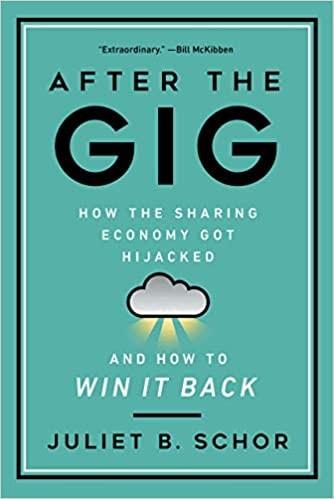
After the Gig: How the Sharing Economy Got Hijacked and How to Win It Back
by
Juliet Schor
,
William Attwood-Charles
and
Mehmet Cansoy
Published 15 Mar 2020
Nike was the poster child of global outsourcing, but eventually, the transfer of costs and risks onto workers, taxpayers, and communities became commonplace domestically as well.51 A crucial switch was from full-time employees for whom the company has many responsibilities, to part-timers, temps, independent contractors, and other “precarious” laborers. Sharing platforms have taken this “fissuring” process to another level.52 Almost all of them engage providers as independent contractors. Angelo, a courier, thought the system was unfair: “Instead of being an employee, you’re an independent contractor now. I understand it with certain companies, [but] not with these big companies, like Uber and Lyft. I don’t work for them, but I feel like they’re making so much money.
…
Another dimension of the platforms that has been widely discussed is how earners are classified in terms of employment status under the law. While a few platforms hire people as full-fledged workers, with all the rights and benefits of employment, most, including all those we studied, classify providers as “independent contractors.”17 This difference is casually referred to as W-2 versus 1099 work, in a nod to the IRS forms the two types of earners fill out.18 Questions about “misclassification” (whether “independent contractor” is the correct employment status) have been at the center of controversies about platform labor, both in the academic literature and in the courts. When companies opt for the 1099 route, it means that workers are entitled to much more freedom about when and how they work.
…
The Perils of Precarity The other main approach to understanding platform labor focuses on company policies, in particular the decision not to hire workers as employees but as independent contractors. This choice allows platforms to put costs and risks onto workers and to avoid compensating for lost earnings, injury, damage to the workers’ property (e.g., car accidents), lack of market demand, or mistreatment by customers. (While some platforms do carry insurance policies, they are typically circumscribed in their coverage.) The independent contractor model is an example of what labor scholars call “precarious work” or work that is “uncertain, unpredictable, and risky from the point of the worker,” to use sociologist Arne Kalleberg’s definition.62 First identified as a trend in the 1980s, scholars have been chronicling the increasing tendency of employers to outsource work, convert employees into contractors, take away benefits, and devolve risk.
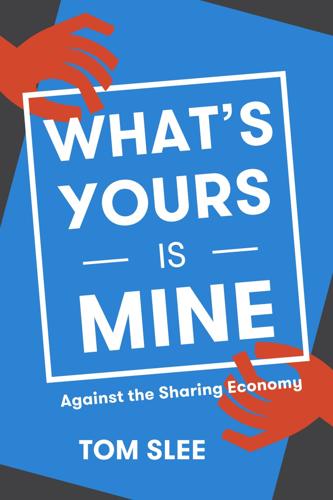
What's Yours Is Mine: Against the Sharing Economy
by
Tom Slee
Published 18 Nov 2015
In this environment, Airbnb’s bland assurances of the opportunity to “live like a local,” its continued reminders of the money that it brings to the city, and its complete refusal to consider any civic role in shaping the supply of tourist apartments sounds an off note. In the US too, there has been resistance to Sharing Economy incursions. The independent contractor status of Uber and the on-demand cleaning services have drawn legal challenges. Chapter 5 described how the issue affected cleaning services Homejoy and Handy, but let’s take a broader look. In Canada, if cleaners were on the payroll then the company would have to pay taxes, employment insurance contributions, and Canada Pension Plan contributions: by classifying them as independent contractors all these onerous costs are eliminated. Kevin Hipkins of Molly Maid, an Ontario cleaning services company with about 1,200 employees, claims that “If we could wave a magic wand, we could bring down our costs by about 30%, and avoid all this messy tax stuff.
…
For startups that want to ensure a smooth, branded customer experience, that’s a serious hindrance.18 It’s not an argument that is unique to Sharing Economy companies. After a long series of court cases, a federal appeals court in Oakland found that FedEx misclassified its drivers from 2000 to 2007 as independent contractors, a decision leading to a $228 million payout.19 Also in California, short-haul truck drivers who worked for a logistics company got a $2.2 million settlement when they were found to be employees rather than independent contractors.20 Boston lawyer Shannon Liss-Riordan has led the charge around employment status in the Sharing Economy. In her case against Uber she pointed to the strict guidelines that Uber drivers must follow if they want to stay on the platform, such as taking 90% of assignments and keeping a customer rating above a certain mark, and to the ability of Uber to dismiss (“deactivate”) drivers.
…
Uber’s rules seem to step over the line regarding whether a driver is, or is not, an employee according to Canada Revenue Agency rules. Sharing Economy workers are facing this issue with other companies too (see Chapter 7). It’s an issue that other industries face, such as construction, and the root cause is always the same: classification as an independent contractor relieves the hiring company (Uber in this case) from having to pay employment insurance premiums, sick leave, and from having to abide by employment standards. The risk is pushed entirely onto the subcontractor. If cities decide to put taxi regulations to one side for ridesharing companies, many important decisions are handed over to the company.
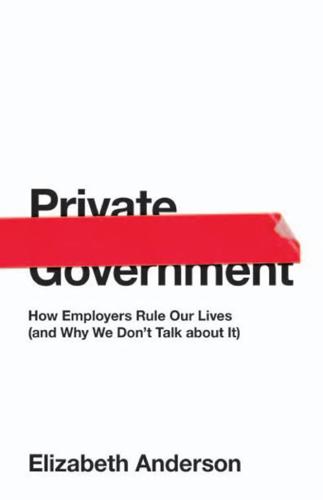
Private Government: How Employers Rule Our Lives (And Why We Don't Talk About It)
by
Elizabeth S. Anderson
Published 22 May 2017
It explains why, contrary to the pro-market egalitarian hope, the enterprises responsible for most production are not sole proprietorships. But economies of scale do not explain why production is not managed by independent contractors acting without external supervision, who rent their capital. One could imagine a manufacturing enterprise renting its floor space and machinery and supplying materials to a set of self-employed independent contractors. Each contractor would produce a part or stage of the product for sale to contractors at the next stage of production. The final contractor would sell the finished product to wholesalers, or perhaps back to the capital supplier.
…
According to the theory of the firm, this is due to the excessive costs of contracting between suppliers of factors of production.14 In the failed New England system, independent contractors faced each other in a series of bilateral monopolies, which led to opportunistic negotiations. The demand to periodically renegotiate rates led contractors to hoard information and delay innovation for strategic reasons. Independent contractors wore out the machinery too quickly, failed to tightly coordinate their production with workers at other stages of production (leading to excess inventory of intermediate products), and lacked incentives to innovate, both with respect to saving materials and with respect to new products.15 The modern firm solves these problems by replacing contractual relations among workers, and between workers and owners of other factors of production, with centralized authority.
…
This tendency facilitates a common abuse of labor law, in which employers pretend that their employees are independent contractors, to avoid minimum wage, maximum hours, benefits and safety regulations; to shift the burden of employment taxes on their workers; and to force them to pay for equipment and uniforms. The court test in such cases is always whether the employer exercises control over the worker. See, for example, Alexander v. FedEx Ground Package System, 2014 U.S. App. LEXIS 16585 (9th Cir. Aug. 27, 2014), which ruled that FedEx misclassified thousands of its California truck drivers as independent contractors. 27. Josiah Wedgwood, a pioneer of the Industrial Revolution in promoting worker discipline in his pottery factory, was also a major abolitionist. 28.

The Corruption of Capitalism: Why Rentiers Thrive and Work Does Not Pay
by
Guy Standing
Published 13 Jul 2016
The platforms insist that taskers are not employees but independent contractors, so are not covered by labour laws, entitling them to certain benefits and safeguards, including, in the USA and elsewhere, the right to unionise. Uber goes to great lengths to justify the independent contractor label, describing drivers as part-time ‘driver-partners’ who choose to provide rides using the Uber platform. TaskRabbit’s support centre poses the rhetorical question ‘Do Taskers work for TaskRabbit?’ and gives its answer: ‘No, they do not. Taskers are local entrepreneurs and independent contractors who work for themselves. TaskRabbit simply provides the platform for Clients and Taskers to meet.
…
Low-wage earners appeared to benefit most in 2015, helped by a rise in the minimum wage the year before, but this was partly a statistical illusion. The data exclude the growing numbers in so-called self-employment, who now account for about 15 per cent of the ‘employed’. Most of the jobs outsourced to ‘independent’ contractors have been low-paid, so the sample used for calculating average wages has shifted towards higher-income employees. And bonuses paid to higher-income workers boost the average. It follows that if measured average wages stagnate, actual wages must have fallen. This is a rarely noticed part of the growing inequality in Britain.
…
A decision to classify Uber drivers and other taskers as employees would reduce the platforms’ rental income by hugely increasing their operating costs. Indeed, it would destroy their business model. This is why Uber agreed a proposed $100 million out-of-court settlement in April 2016 in return for maintaining drivers’ status as independent contractors. At the time of writing the settlement had still to be approved by a judge. When US home cleaning platform Homejoy folded in 2015, the reason given was a series of lawsuits by taskers demanding to be classified as employees. However, the business model was fatally flawed for another reason.19 Homejoy offered cheap household services, taking a 25 per cent cut on transactions, which meant very low pay for those doing the tasks.
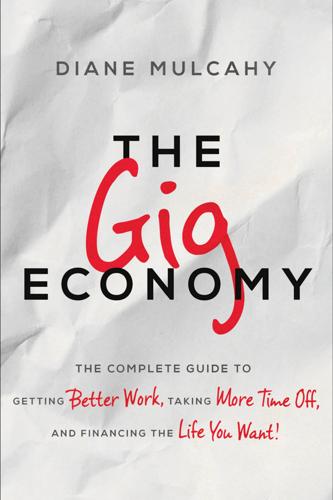
The Gig Economy: The Complete Guide to Getting Better Work, Taking More Time Off, and Financing the Life You Want
by
Diane Mulcahy
Published 8 Nov 2016
Carre, Francoise, “(In)dependent Contractor Misclassification,” Economic Policy Institute, June 8, 2015. www.epi.org/publication/independent-contractor-misclassification/ 3. IRS, “Independent Contractor (Self-Employed) or Employee?” www.irs.gov/Businesses/Small-Businesses-&-Self-Employed/Independent-Contractor-Self-Employed-or-Employee 4. U.S. Department of Labor, “Administrator’s Interpretation No. 2015-1,” July 15, 2015. www.dol.gov/whd/workers/misclassification/AI-2015_1.htm 5. www.employmentlawspotlight.com/2014/10/nlrb-adopts-new-test-for-independent-contractor-misclassification-applies-it-to-find-fedex-drivers-are-employees-who-can-unionize/ 6.
…
Dependent Contractor,” WSJ, January 28, 2015. www.wsj.com/articles/what-if-there-were-a-new-type-of-worker-dependent-contractor-1422405831 See also, Haigu, Andrei, and Rob Biederman, “The Dawning of the Age of Flex Labor,” Harvard Business Review, September 4, 2015. hbr.org/2015/09/the-age-of-flex-labor-is-here See also, Cruz, Roberto, “A Class of Their Own? Independent Contractors Causing a Conundrum,” Workforce, September 1, 2015 www.workforce.com/articles/21560-a-class-of-their-own-independent-contractors-causing-conundrum 10. Kitces, Michael, “Why Employee Benefits Will Become Irrelevant,” The Wall Street Journal, April 28, 2015. blogs.wsj.com/experts/2015/04/28/why-employee-benefits-will-become-irrelevant/ 11. Hanauer, Nick, and David Rolf, “Shared Security, Shared Growth,” Democracy Journal, no. 27, Summer 2015. democracy-journal.org/magazine/37/shared-security-shared-growth/ 12.
…
Instead, it has chosen to preserve the status quo by increasing resources to identify companies that misclassify workers as contractors instead of employees, a Sisyphean task given the government’s unclear, imprecise, and varying definitions of employee and contractor. Not unexpectedly, the trend of hiring independent contractors instead of employees has become persistent and widespread, and it’s growing. Companies incur lower labor costs, have more flexibility, and can realize greater efficiency when they purchase the labor they need by the project, by the task, and by the hour. For example, an employer can fill a former full-time marketing manager job with a part-time public relations person, a social media contractor, and an outsourced copywriter.
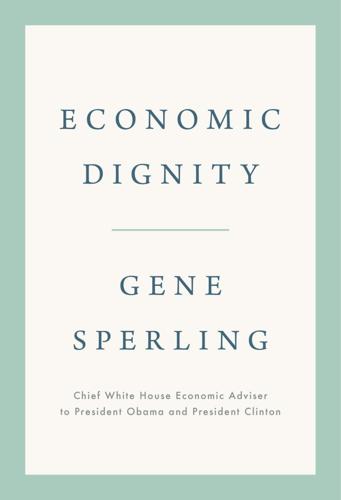
Economic Dignity
by
Gene Sperling
Published 14 Sep 2020
Under the NLRA, only workers considered employees and not independent contractors are guaranteed the right to organize. Being classified as a contractor, as gig workers like Uber workers are, impacts not only your benefits but your federal right to unionize or collectively bargain as well. Reforms to federal law to reduce misclassification, such as the PRO Act, and to expressly give independent contractors the right to unionize are required to address this issue nationwide. While California’s new law—Assembly Bill 5 (AB5), or the “gig worker bill”—instituted a stricter test for classifying a worker as an independent contractor for the purposes of California state law, it does not itself create a right to unionize for workers considered independent contractors under federal law.51 Governor Gavin Newsom and worker advocates are now seeking to use the passage of the law as leverage to craft a deal that would give workers the right to organize under California state law.52 However, these kinds of legislative changes will not be enough to address the plight of all workers excluded from unions.
…
If, for example, the need to support family or to pursue economic potential leads millions to experience harmful abuse or harassment at work, or compromises their capacity to care for their children or other loved ones, why should that not be seen as a major economic issue—whether or not it shows up in a traditional economic metric? Economic dignity will never be moneyball. Painful as it is to consider, it took a political and media focus on the “gig economy” to train national economic attention on the number of people who are considered independent contractors and lack true economic security or worker protections. It was never a first-tier economic issue before the obsession with Uber drivers. Call it the invisibility of the “pre-gig workers.” It should not have required the experience of wealthier Americans using the services of Uber drivers for the national economic dialogue to focus on the fact that millions and millions of workers—such as taxi drivers, domestic workers, and contract construction workers—have long faced the same economic insecurity and lack of protections.
…
As UberX was launching in 2012, of the nearly two million in-home workers like housekeepers, childcare workers, and direct-care aides—overwhelmingly women and a majority people of color—only 12 percent received health insurance from their job, and only 7 percent received a pension plan.14 According to a survey by the National Domestic Workers Alliance, fewer than 2 percent of domestic workers in 2011 received retirement or pension benefits from their primary employer, and only 4 percent received employer-provided health insurance; 65 percent of domestic workers did not have any health insurance.15 Even today, few realize that before the ride-sharing revolution, the taxi drivers that people used for generations rarely had health-care coverage or qualified for unemployment insurance or any help during downturns and recessions.16 For example, a 2007 study of New York City cabdrivers found they were generally classified as independent contractors—just as Uber and Lyft drivers are now—and did not qualify for overtime pay despite typically working more than seventy hours a week. A large majority lacked health insurance, despite substantial risk of on-the-job injuries.17 These facts may not have been easily captured in traditional job growth statistics or GDP measurements, but they mattered to people’s lives.
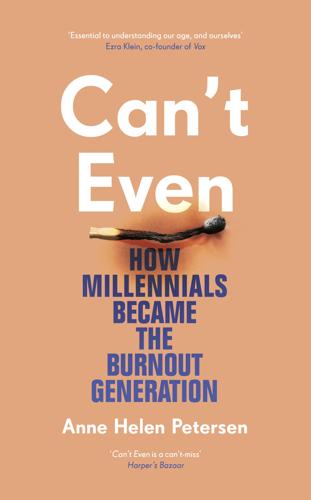
Can't Even: How Millennials Became the Burnout Generation
by
Anne Helen Petersen
Published 14 Jan 2021
It’s a solution that’s especially difficult to implement when the head of the company is saying there’s no problem in the first place: “I think a lot of the question about whether this is employee versus independent contractor misses a little bit of the point,” Tony Xu, CEO of DoorDash, told ReCode Decode. “I mean, if you think about what is the root problem, the root problem is, how do we maximize all this flexibility, which Dashers love, and provide a security blanket for those who need it?”27 One very obvious way: Hire them as employees. Masking exploitation in the rhetoric of freelancing and independent contractors’ “flexibility” avoids talking about why that flexibility is coveted: because the supposedly “thriving economy” is built on millions of people being treated as robots.
…
And as unions—and the legislation that protected them—became unpopular, so too did worker solidarity. Instead, the quest to find and win “lovable” work created an atmosphere of ruthless competition; feeling personally passionate and fulfilled by work takes precedence over working conditions for the whole.5 “Solidarity becomes suspect when each individual views him- or herself as an independent contractor, locked in a zero-sum battle with the rest of society,” Tokumitsu explains. “Every moment he or she spends not working means someone else is getting ahead, to his or her detriment.”6 Trying to find, cultivate, and keep your dream job, then, means eschewing solidarity for more work. If a coworker insists on set work hours, or even just taking a vacation, they’re not setting healthy boundaries—they’re giving you an opportunity to show that you can work harder, better, more than them.
…
We acknowledged how competitive the market was, how much lower we’d set our standards, but we were also certain that if we just worked hard enough, we’d triumph—or at least find stability, or happiness, or arrive at some other nebulous goal, even if it was increasingly unclear why we were searching for it. We fought that losing battle for years. For many, including myself, it’s hard not to feel embarrassed about it: I settled for so little because I was certain that with enough hard work, things would be different. But you can only work as an “independent contractor” at a job paying minimum wage with no benefits while shouldering a $400-a-month loan payment—even if it’s in a field you’re “passionate” about—for so many years before realizing that something’s deeply wrong. It took burning out for many of us to arrive at this point. But the new millennial refrain of “Fuck passion, pay me” feels more persuasive and powerful every day. 5 How Work Got So Shitty IN THE 1970S, THE TEMP AGENCY WAS ASCENDANT.
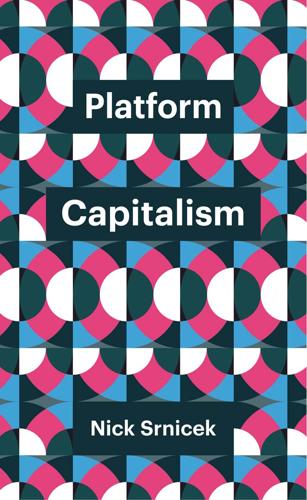
Platform Capitalism
by
Nick Srnicek
Published 22 Dec 2016
Lean platforms operate through a hyper-outsourced model, whereby workers are outsourced, fixed capital is outsourced, maintenance costs are outsourced, and training is outsourced. All that remains is a bare extractive minimum – control over the platform that enables a monopoly rent to be gained. The most notorious part of these firms is their outsourcing of workers. In America, these platforms legally understand their workers as ‘independent contractors’ rather than ‘employees’. This enables the companies to save around 30 per cent on labour costs by cutting out benefits, overtime, sick days, and other costs.59 It also means outsourcing training costs, since training is only permitted for employees; and this process has led to alternatives forms of control via reputation systems, which often transmit the gendered and racist biases of society.
…
As a result, by 1996 people were already voicing concerns that we were transitioning to ‘a “just-in-time” age of “disposable” workers’.61 But the issue involves more than lean platforms. Apple, for instance, directly employs less than 10 per cent of the workers who contribute to the production of its products.62 Likewise, a quick glance at the US Department of Labor can find a vast number of non-Uber cases involving the mislabelling of workers as independent contractors: cases related to construction workers, security guards, baristas, plumbers, and restaurant workers – to name just a few.63 In fact the traditional labour market that most closely approximates the lean platform model is an old and low-tech one: the market of day labourers – agricultural workers, dock workers, or other low-wage workers – who would show up at a site in the morning in the hope of finding a job for the day.
…
We can also find this broader shift to non-traditional jobs in economic statistics. In 200565 the Bureau of Labour Statistics (BLS) found that nearly 15 million US workers (10.1 per cent of the labour force) were in alternative employment.66 This category includes employees hired under alternative contract arrangements (on-call work, independent contractors) and employees hired through intermediaries (temp agencies, contract companies). By 2015 this category had grown to 15.8 per cent of the labour force.67 Nearly half of this rise (2.5 per cent) was due to an increase in contracting out, as education, healthcare, and administration jobs were often at risk.

Peers Inc: How People and Platforms Are Inventing the Collaborative Economy and Reinventing Capitalism
by
Robin Chase
Published 14 May 2015
And as recently as August 2014, a federal court of appeals ruled that FedEx’s 2,300 California delivery drivers were in fact employees and not independent contractors. Prior to the ruling, because these workers were not technically employees, FedEx avoided paying millions in payroll taxes. And because they were not employees, FedEx didn’t need to meet the standards imposed by fair-labor laws, such as minimum wage, overtime, or family medical leave provisions. The difference between independent contractor and employee will mean hundreds of millions of dollars to FedEx. And on the difference between contractor and employee hinges the applicability (or not) of worker protection laws that have built up over the last hundred years.
…
But once the platform is big and strong, the participation by any one random individual is irrelevant. In May 2014, disgruntled peer co-creators, aka Uber drivers, felt that the platform they were using, Uber, wasn’t paying enough attention to their needs. Several hundred of them joined the newly created App-Based Drivers Association. Because drivers are independent contractors, this can’t be considered a union, but it is effectively the same. Driver Daniel Ajema from Seattle commented, “They call us partners, and basically we demanded a true partnership.”23 Other Uber drivers who feel helpless echo these sentiments: “We want the company to understand that we are not just ants” and “Uber’s like an exploiting pimp.
…
As the number of autonomous workers grows—and the 53 million Americans today considering themselves freelancers is a very hefty number—it no longer makes sense to tie benefits to full-time employment. In fact, the reverse is true. We need to make sure that these benefits are available to everyone, despite fragmented sources of income. Lastly, government needs to protect these collaborating peers with a platform-independent contractor’s bill of rights. Successful platforms have effectively become common pool resources: the platform is producing a stream of benefits to the peers who are reliant upon it. At a minimum, peers collaborating on these platforms should be able to own, control, and remove their own data. Rules for engagement with the platform should be spelled out in understandable ways (not buried in terms-of-service agreements), equitably applied, and changeable only with adequate notice.

Wild Ride: Inside Uber's Quest for World Domination
by
Adam Lashinsky
Published 31 Mar 2017
In 2016 a federal judge in San Francisco overturned an agreement by Uber and Lyft with their drivers in California and Massachusetts that would have seen Uber paying out $100 million to confirm the drivers’ status as independent contractors. The original settlement had been a victory for Uber, which wants to avoid paying its drivers as employees. (Employees demand benefits and earn minimum wages.) Campbell sees both sides of the argument. “Obviously as a true independent contractor, you wouldn’t take jobs where you’re going to lose money,” he says, noting that Uber’s rules require drivers to accept assignments if they don’t want to lose out on potential bonuses or face “timeouts” when they are blocked from using the app.
…
Uber expanded globally almost from its beginning, far earlier than would have been possible in an era when packaged software and clunky computers were the norm. It is a leader of the so-called gig economy, cleverly marrying its technology with other people’s assets (their cars) as well as their labor, paying them independent-contractor fees but not costlier employee benefits. Such “platform” companies became all the rage as Uber rose to prominence. Airbnb didn’t need to own homes to make a profit renting them. Thumbtack and TaskRabbit are just two companies that matched people looking for project-based work with customers—without having to make any hires themselves.
…
It was a small-scale response to a new competitor, a company called Lyft, which beginning in May 2012 started a service that enabled anyone with a car to slap a giant pink mustache on the grill and “share” rides with others. Up to this point, Uber had defined itself as an upscale service, with its network of independent contractors consisting of licensed, professional limousine drivers. Now, though it initially stayed away from Lyft’s anything-goes approach, it was ready to move down-market. “The best way to describe it is that the experience will be efficient, but not as elegant,” Kalanick told the tech news site AllThingsD.

Internet for the People: The Fight for Our Digital Future
by
Ben Tarnoff
Published 13 Jun 2022
The other is that, by having software rather than humans telling workers what to do, and having the software use techniques like nudges and gamification, gig companies can pretend that nobody is telling the workers what to do, and therefore that they are not really workers at all. Uber refers to its drivers as “partners” or “entrepreneurs”; legally speaking, they are “independent contractors,” at least in the United States. This classification is a pillar of the gig-work business model, since it holds down labor costs by preventing firms from having to pay a minimum wage or comply with the other legal protections afforded to direct employees. “In the US, direct employment increases corporate costs by roughly one-third, so classifying workers as independent contractors significantly increases profitability,” notes Veena Dubal, a legal scholar who studies the gig economy.
…
In city after city, this pressure has enabled Uber to evade long-standing municipal rules regarding fares and the number of vehicles allowed on the road. Equally important is the limitless supply of money provided by investors, which can be used to bankroll lobbying, as well as to subsidize the cheap fares that undercut existing livery drivers like Schifter. Finally, the legal classification of ride-hail drivers as independent contractors is a pillar of the business model, since it keeps labor costs low. Each of these elements is inseparable from the internet. The fact that Uber is an internet company has helped it persuade politicians and regulators that it should be exempt from a century of taxi regulations—indeed, that it represents a novel corporate form, a “Transportation Network Company.”
…
The fact that Uber is an internet company has helped it persuade politicians and regulators that it should be exempt from a century of taxi regulations—indeed, that it represents a novel corporate form, a “Transportation Network Company.” Similarly, Uber’s large trove of data, manufactured through the internet, has helped convince investors to finance the firm so generously. And the managerial algorithms that this data nourishes have helped maintain the fiction that drivers are independent contractors, as bossing people around through an app camouflages the reality of Uber’s rule. These interactions illustrate an important point. An online mall is an assemblage of technical components, but the components are entangled with a wider set of political, legal, and financial forces. These entanglements are functional—they are what makes the online mall work.

Make Your Own Job: How the Entrepreneurial Work Ethic Exhausted America
by
Erik Baker
Published 13 Jan 2025
In 1936, the National Association of Direct Selling Companies successfully petitioned the Federal Trade Commission to certify that direct-sales representatives employed as “independent contractors” were not company employees for the purposes of the major New Deal legislation. Companies didn’t have to submit payroll taxes on their behalf or contribute to unemployment relief; direct-sales workers had no right to unionize; and they were exempt from wages-and-hours regulations. By the decade’s close, more or less all direct-selling companies told their salesforces what the California Perfume Company had long told the distributors of its Avon product line: “Now you are in business for yourself.” The FTC agreed.9 The spread of the independent-contractor model was just one more factor driving direct-selling companies to adopt an entrepreneurial rather than a scientific management style—that is, an approach to management that required workers to determine for themselves how they would meet their sales objectives, rather than an approach that would require them submit to precise, ostensibly scientific processes imposed by higher-ups.
…
McConnell, is perhaps our most inspiring example of a man who built up an idea into a great business,” boasted the May 1930 Outlook. McConnell’s spirit, in turn, flowed down from the company offices to animate the work of ordinary Avon sellers across the country: “All through our ranks are members of the organization, each contributing, building, day after day, year after year.”12 The function of the independent-contractor model was not exactly to isolate the individual seller from the company, but to create a fantasy of equal status, a level playing field on which sellers could approach CPC executives as co-creators of the firm’s success. If this fantasy allowed distributors to share in the glory of the company’s booming sales during the 1930s, it also placed the responsibility for individual failure squarely on their shoulders.
…
“Our dream,” Van Andel explained in 1979, “was to become nationwide, then worldwide, and to offer an entrepreneurial opportunity to average men and women.”34 Amway presented an “entrepreneurial opportunity” to its distributors because—following the lead of earlier direct-selling firms like Avon—every single one of them was technically not an employee but an independent contractor. This organizational maneuver helped ensure that Amway’s description of its employees as “entrepreneurs” was widely accepted both inside and outside of the company. “The heart of Amway is its . . . distributors, each one an entrepreneur,” a profile of Van Andel in Nation’s Business reported.

The Passenger
by
AA.VV.
Published 23 May 2022
MONEY MOVES In 2020, Prop 22—also going under the title Exempts App-Based Transportation and Delivery Companies from Providing Employee Benefits to Certain Drivers Initiative Statute (the Yes on Prop 22 campaign claimed in a lawsuit that the title was biased, but the court did not agree)—was a groundbreaking proposition, not in that it was written by the corporate sector to subvert state law but because, with over $200 million in funding, it was the most expensive ballot proposal in California history. Prop 22 created a nebulous third class for gig-economy workers between independent contractor and employee, providing some additional benefits that independent contractors don’t have but falling far short of the full protection enjoyed by employees. This new third class of employment classification was obfuscated with tech-hipster jargon about entrepreneurship, partnership, and freedom, but in the end they were using the ballot initiative system as a reach past government to design their own employment laws.
…
This new third class of employment classification was obfuscated with tech-hipster jargon about entrepreneurship, partnership, and freedom, but in the end they were using the ballot initiative system as a reach past government to design their own employment laws. To understand the story of Prop 22 we need to go back to 2018 and look at the California Assembly Bill 5 (AB5). AB5 was a state statute meant to codify a recent state supreme court decision that laid out clear delineations between an independent contractor and an employee. An independent contractor must control their own labor and time, engage in similar work on a regular basis, and be providing a service outside the scope of the business they are contracting with. Gig-economy businesses such as Uber and Lyft lobbied to have their companies placed on the exemptions list but were denied.
…
But once refused inclusion in the exemption list, Uber and Lyft took a different stance altogether; they chose to disregard AB5 in its entirety and refused to reclassify gig workers as employees. In turn, the California attorney general sued the rideshare companies, and in the summer of 2020 the court ruled against Uber and Lyft and said that they were misclassifying gig workers as independent contractors. On 10 August 2020, the companies were given ten days to comply with AB5, but they threatened to shut down their rideshare services across the state. Through the app, users were sent an ominous message declaring services to be terminated across California on 20 August. On that date, the companies announced they were granted an extension by the court until 4 November.
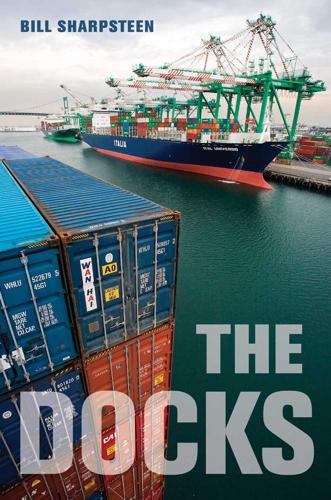
The Docks
by
Bill Sharpsteen
Published 5 Jan 2011
According to the port’s 2007 economic analysis of the Clean Truck program, the bosses Covarrubias referred to pay their independent contractors a median gross income of $75,000. Not so bad until you factor in the $46,000 in operating costs that the drivers pay out of their Los Troquerosâ•… /â•… 171 earnings, leaving them with $29,000, or about $12 an hour. The median household income in California in 2007 was $63,932. (According to one national survey, drivers who are employees of a company and thus are not independent contractors make between $14.63 and $20.07 an hour.) There are other shortcomings that chip away at the job. As independent contractors, drivers must pay for their own health insurance, plus they receive no vacation pay, workers compensation, unemployment benefits, or employer contributions to Social Security and Medicare.
…
On the surface, about the only thing that belies the owner-operator appellation he prefers is the green and dark gray Fox Transportation logo that swooshes like a vapor trail from the front grille of his truck to his door, as if to evoke an impression of speed. This isn’t the name of a company Branch owns; rather, it’s ╯ ╯ ╯ ╯ Los Troquerosâ•… /â•… 167 the trucking operation to which he reports five nights a week. While Fox classifies Branch as an independent contractor, which makes him responsible for his own expenses (gas, insurance, truck maintenance, and so on) as well as income taxes, Branch cannot take his truck to another company and work for them too. That’s because Fox also owns the truck until Branch pays off the approximately $30,000 he owes on it.
…
Mike Fox says his company isn’t so vindictive: “If that owner-operator says, ‘Look, I’m just not making enough money under this program,’ they give us thirty days’ written notice, walk away from the truck, and owe us no money at all.” Nevertheless, some have called the owner-operator system as it now exists a sharecropper arrangement or even serfdom. At a May 2010 congressional hearing on the subject, driver Jose Covarrubias told the U.S. House Subcommittee on Highway and Transit, “We’re called independent contractors, but all we are is employees with expenses. Our bosses tell this lie so they can make us pay for the company trucks.” Fox agrees that the drayage industry has a bad reputation. “There’s been some trucking companies that—as painful as it is, I need to say it—they need to go, because they’re not doing it the right way.

WTF?: What's the Future and Why It's Up to Us
by
Tim O'Reilly
Published 9 Oct 2017
(Imagine for a moment that Walmart or McDonald’s didn’t schedule their workers, but simply offered work, trusted enough people to show up, and offered higher wages when there weren’t enough workers to meet demand.) This is a radically different kind of corporate organization. There are those who argue that Uber and Lyft are simply trying to avoid paying benefits by keeping their workers as independent contractors rather than as employees. It isn’t that simple. Yes, it does save them money, but independent-contractor status is also important to the scalability and flexibility of the model. Unlike taxis, which must be on the road full-time to earn enough to cover the driver’s daily rental fee, the Uber and Lyft model allows many more drivers to work part-time (and to take passenger requests simultaneously from both services), leading to an ebb and flow of supply that more naturally matches demand.
…
WORKERS IN A WORLD OF CONTINUOUS PARTIAL EMPLOYMENT There is no better demonstration of how outdated maps shape public policy, labor advocacy, and the economy than in the debate over whether Uber and Lyft drivers (and workers for other on-demand startups) should be classified as “independent contractors” or “employees.” In the world of US employment law, an independent contractor is a skilled professional who provides his or her services to multiple customers as a sole proprietor or small business. An employee provides services to a single company in exchange for a paycheck. Most on-demand workers seem to fall into neither of these two classes.
…
According to the Taxicab, Limousine & Paratransit Association (TLPA), the US taxi industry consists of approximately 6,300 companies operating 171,000 taxicabs and other vehicles. More than 80% of these are small companies operating anywhere between 1 and 50 taxis. Only 6% of these companies have more than 100 taxicabs. Only in the largest of these companies do multiple drivers use the same taxicab, with regular shifts. And 88% of taxi and limousine drivers are independent contractors. When you as a customer see a branded taxicab, you are seeing the brand not of the medallion owner (who may be a small business of as little as a single cab) but of the dispatch company. Depending on the size of the city, that brand may be sublicensed to dozens or even hundreds of smaller companies.

The Sovereign Individual: How to Survive and Thrive During the Collapse of the Welfare State
by
James Dale Davidson
and
William Rees-Mogg
Published 3 Feb 1997
Among them is the "entrepreneurial mode," "wherein each workstation is owned and operated by a specialist."27 Another is what Williamson calls the "federated workstations" in which "an intermediate product is transferred across stages by each worker."28 There is no physical reason why the thousands of employees could not have been replaced by a gaggle of independent contractors, each renting space on the factory floor, bidding for parts, and offering to assemble the axle or weld the fenders onto the chassis. Yet you would look in vain for an example of an industrial-era automobile factory organized and run by independent contractors. Coordination Problems Operating an industrial facility without the benefit of coordination through a single firm would have dissipated most of the economies to be realized by operating on a large scale.
…
You need only 188 imagine the difficulty facing the designer in attempting to convince the hundreds of independent contractors on changes required to introduce a new model. In practice, almost unanimous consent would have been needed. Anyone holding out or objecting to any change in the specification of the product could either have effectively killed the model improvement or raised the cost of introducing it, thus further jeopardizing the gains from operating on a large scale. Unnecessary Negotiation An assembly line rented (or owned separately) by independent contractors would have been subject to numerous vulnerabilities avoided by operating within a single firm.
…
187 The classical economists like Adam Smith were almost silent on the question of firm size. They did not address what influences the optimal size of firms, why firms take the form they do, or even why firms exist at all. Why do entrepreneurs hire employees, rather than placing every task that needs doing out to bid among independent contractors in the auction market? Nobel Prize-winning economist Ronald Coase helped launch a new direction in economics by asking some of these important questions. The answers he helped to frame hint at the revolutionary consequences of information technology for the structure of business. Coase argued that firms were an efficient way to overcome information deficits and high transaction costs.26 Information and Transaction Costs To see why, consider the obstacles you would have faced in trying to operate an industrial-era assembly line without a single firm to coordinate its activities.

How to Form Your Own California Corporation
by
Anthony Mancuso
Published 2 Jan 1977
. $34.99 DEPO Tax Savvy for Small Business...................................................................................... $36.99 SAVVY Whoops! I’m in Business............................................................................................ $19.99 WHOO Working for Yourself: Law & Taxes for Independent Contractors, Freelancers & Consultants.......................................................................................................... $39.99 WAGE Working With Independent Contractors (Book w/CD-ROM)..................................... $29.99 HICI Your Crafts Business: A Legal Guide (Book w/CD-ROM)........................................... $26.99 VART Your Limited Liability Company: An Operating Manual (Book w/CD-ROM)............. $49.99 LOP Your Rights in the Workplace.................................................................................... $29.99 YRW CONSUMER How to Win Your Personal Injury Claim.................................................................... $29.99 PICL Nolo’s Encyclopedia of Everyday Law......................................................................... $29.99 EVL Nolo’s Guide to California Law................................................................................... $24.99 CLAW ORDER 24 HOURS A DAY @ www.nolo.com call 800-728-3555 • Mail or fax the order form in this book ESTATE PLANNING & PROBATE Price Code 8 Ways to Avoid Probate ........................................................................................... $19.99 PRAV Estate Planning Basics . ............................................................................................. $21.99 ESPN The Executor’s Guide: Settling a Loved One’s Estate or Trust..................................... $34.99 EXEC How to Probate an Estate in California....................................................................... $49.99 PAE Make Your Own Living Trust (Book w/CD-ROM)..................................................... $39.99 LITR Nolo’s Simple Will Book (Book w/CD-ROM)............................................................ $36.99 SWIL Plan Your Estate......................................................................................................... $44.99 NEST Quick & Legal Will Book (Book w/CD-ROM) .......................................................... $19.99 QUIC Special Needs Trust: Protect Your Child’s Financial Future (Book w/CD-ROM)......... $34.99 SPNT FAMILY MATTERS Always Dad................................................................................................................ $16.99 DIFA Building a Parenting Agreement That Works............................................................ $24.99 CUST The Complete IEP Guide........................................................................................... $34.99 IEP Divorce & Money: How to Make the Best Financial Decisions During Divorce........... $34.99 DIMO Divorce Without Court.............................................................................................. $29.99 DWCT Do Your Own California Adoption: Nolo’s Guide for Stepparents and Domestic Partners (Book w/CD-ROM).................................................................................... $34.99 ADOP Every Dog’s Legal Guide: A Must-Have for Your Owner............................................ $19.99 DOG Get a Life: You Don’t Need a Million to Retire Well.................................................. $24.99 LIFE The Guardianship Book for California........................................................................ $34.99 GB A Legal Guide for Lesbian and Gay Couples............................................................... $34.99 LG Living Together: A Legal Guide (Book w/CD-ROM).................................................. $34.99 LTK Nolo’s IEP Guide: Learning Disabilities..................................................................... $29.99 IELD Parent Savvy............................................................................................................... $19.99 PRNT Prenuptial Agreements: How to Write a Fair & Lasting Contract (Book w/CD-ROM)................................................................................................. $34.99 PNUP Work Less, Live More................................................................................................. $17.99 RECL ORDER 24 HOURS A DAY @ www.nolo.com call 800-728-3555 • Mail or fax the order form in this book GOING TO COURT Price Code Beat Your Ticket: Go To Court & Win!
…
The Importance of Your Corporate Name Before looking at the legal requirements for choosing a corporate name, let’s briefly discuss the importance of choosing the right name for your new corporation. Your corporate name will, to a large degree, identify the goodwill of your business. We don’t mean this in any strict legal, accounting, or tax sense, but simply that the people you do business with, including your customers, clients, other merchants, vendors, independent contractors, lenders, and the business community generally, will identify your business primarily by your name. For this reason, as well as a number of practical reasons (such as not wanting to print new stationery, change yellow pages or advertising copy, create new logos, purchase new signs, and so on), you will want to pick a name that you will be happy with for a long time.
…
REPRESENTATION OF PROFESSIONAL ADVISOR (Name of professional advisor) 3 hereby represents: (1) I have been engaged as the professional advisor of (name of shareholder) 3 and have provided him or her with investment advice in connection with the purchase of (number of shares) 3 common shares in (name of corporation) 3. (2) As a regular part of my business as a/an (profession) 3, I am customarily relied upon by others for investment recommendations or decisions and I am customarily compensated for such services, either specifically or by way of compensation for related professional services. 134 | how to form your own california corporation (3) I am unaffiliated with and am not compensated by the corporation or any affiliate or selling agent of the corporation, directly or indirectly. I do not have, nor will I have (a) a relationship of employment with the corporation, either as an employee, employer, independent contractor, or principal; (b) the beneficial ownership of securities of the corporation, its affiliates, or selling agents, in excess of 1% of its securities; or (c) a relationship with the corporation such that I control, am controlled by, or am under common control with the corporation, and, more specifically, a relationship by which I possess, directly or indirectly, the power to direct, or cause the direction, of the management, policies, or actions of the corporation.
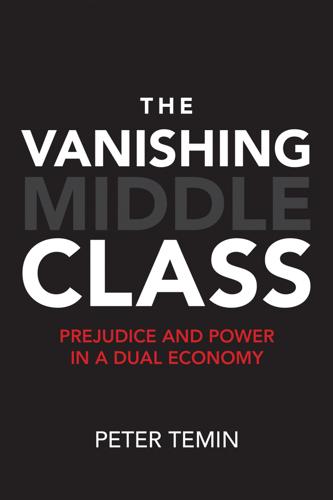
The Vanishing Middle Class: Prejudice and Power in a Dual Economy
by
Peter Temin
Published 17 Mar 2017
They have low morale and will not exert extra effort for the parent company’s benefit. Intrusive monitoring replaces morale, and antagonism replaces cooperation. The increasing role of independent contractors for the low-wage sector can be seen in the switch from consumers using taxi services to using Uber and other computer-based drivers. Uber recently settled a class-action suit by its drivers by paying them a bit more, but continuing to categorize them as independent contractors. And the bargaining power of these independent contractors will fall if Uber replaces them with driverless cars. Drivers now find their way with the aid of Uber maps on their smartphones; driverless cars can use the same maps once they learn how to drive in traffic.6 There also has been a sharp reduction in competition among large companies in America due partly to the growth of network effects and partly to a relaxation of antitrust standards for mergers.
…
For example, the Boston Globe recently tried to reduce the expense of delivering the newspaper. Most of us do not think about how the paper gets to our door in the morning, but paper delivery has evolved into a grueling nocturnal marathon for low-income workers who work invisibly at the edge of the economy. Delivery drivers are classified as independent contractors rather than employees; they therefore do not get guaranteed health care or retirement savings. They work 365 days a year for pay that makes ordinary jobs look good, and they have to find a replacement if they need to take a day off. Many of them work at another job during the day to support their families.
…
See Latinos Home Affordable Modification Program (HAMP), 139–140 Honda, 34 Horton, Willie, 108–109 Housing boom in, 138, 164 bubble of, 154–155 cities and, 131–132 debt and, 138–139 fall in price of, 138 financial crisis of 2008 and, 10, 138, 164 HAMP and, 139–140 integration and, 34, 157, 159 low-wage sector and, 34, 153 mass incarceration and, 105–106, 112–113 mortgages and, 34, 44–45, 69, 80, 117, 137–140, 154, 156, 179n5 rethinking policies on, 157 segregation and, 153, 171n16 TARP and, 139, 179n4 very rich and, 131 white flight and, 34, 38, 117, 125, 179n7 Human capital dual economy and, 11–12 FTE (finance, technology, and electronics) sector and, 23, 44 inequality models and, 165–166 public education and, 121, 124, 126–127 transition and, 44 Hungry Twenties, 155 Hussein, Saddam, 71 Immigrants African Americans, 154 (see also African Americans) border issues and, 55, 103–104 competition and, 31–32, 103 criminal, 173n4 deportation of, 104 dual economy and, 10 emigration and, 32, 50 English, x–xi, 173n4 fear of plots by, 51 FTE (finance, technology, and electronics) sector and, 20 Irish, 54 Jewish, 54, 120 Latinos, 154 (see also Latinos) low-wage sector and, 27–28, 32, 35, 153 mass incarceration and, 103, 110, 112 military and, 103–104, 127 public education and, 123, 125, 159 race and, 50–55 success of some, 53–54 Income distribution capital-income ratio and, 181n3 cross-country comparison and, 147–151 dual economy and, 3–5 expected wage and, 8 FTE (finance, technology, and electronics) sector and, 22 Great Depression and, 21, 52–53, 80, 93 Investment Theory of Politics and, 72, 74 mass incarceration and, 109 median income and, ix–x, 9, 53, 144 public education and, 115 very rich and, 77, 79–80, 84 Independent contractors, 31, 52, 65 India, 148, 150 Individual freedom, 17–19 Industrial Revolution, 87, 155 Industry arms, 144 automobile, 33–34 brokerage, 23 concepts of government and, 87, 93 Dow Jones and, 23 exchange rates and, 23 FIRE (finance, insurance, and real estate) sector and, 80 FTE (finance, technology, and electronics) sector and, 16, 18, 20, 23, 25, 148 Industrial Revolution and, 87, 155 Investment Theory of Politics and, 63 Lewis model and, 163 (see also Lewis model) low-wage sector and, 28–34 manufacturing and, 20, 32–35, 91, 170n10 mass incarceration and, 111 production and, 3, 6, 16, 20, 24, 27–28, 30, 32, 59, 80–81, 84, 138, 155, 164 public education and, 115–116 race and, 53 subcontractors and, 30–31, 57 tariffs and, 21, 32–33 transition and, 41, 43 very rich and, 80, 82, 84–85 Inequality civil rights and, 15, 20, 22, 27, 53, 56–59, 67, 72, 94, 104, 113, 133, 142 concepts of government and, 87–88, 94 cross-country comparison and, 147–151 discrimination and, 15, 20–21, 38, 51–54, 56, 58, 66, 89, 105, 117, 153, 171n29 dual economy and, 10 Great Depression and, 21, 52–53, 80, 93 Great Gatsby Curve, The, and, 46 human capital and, 165–166 income mobility and, 46 increase of, ix, 154 Investment Theory of Politics and, 61, 69–70, 72 Lewis model and, 162–166 mass incarceration and, 113 models of, 161–166 one-percenters and, 3, 9–12, 22–24, 77–85, 92, 96, 155, 170n28 Piketty and, 3, 156, 161–166, 181n3 production and, 164 public education and, 124, 128 race and, 49–60 (see also Race) segregation and, ix, 27, 34, 53, 80, 117–121, 131, 153–154, 171n16 slavery and, 50 (see also Slavery) social capital and, 165–166 taxes and, 161–162, 166 transition and, 46 women and, 12, 61 (see also Women) World War I era and, 162 Inflation, 16, 21–24, 43, 126 Infrastructure capital and, 11 cities and, 129–137, 156–158, 163 debt and, 143 FTE (finance, technology, and electronics) sector and, 36, 154 investment in, 154 Lewis model and, 10, 36 public education and, 157 (see also Public education) repairing, 156–158 very rich and, 79 Institute for New Economic Thinking, xvii, 85 Integration civil rights and, 142 (see also Civil rights) dual economy and, 13 housing and, 34, 157, 159 public education and, 34, 80, 115–117, 120, 122, 128, 159 race and, 13, 34, 80, 82, 106, 115–117, 120, 122, 128, 142, 157, 159 Investment Theory of Politics African Americans and, 61, 64–67 competition and, 68 concepts of government and, 89 Constitutional Convention and, 62 democracy and, 63, 65, 67 Democrats and, 73 discrimination and, 66 farmers and, 62, 66 financial crisis of 2008 and, 174n15 FIRE (finance, insurance, and real estate) sector and, 80 FTE (finance, technology, and electronics) sector and, 67–70, 74–75 income distribution and, 72, 74 industry and, 63 inequality and, 61, 69–70, 72 Lewis model and, 62, 89 low-wage sector and, 62, 65–70, 75 mass incarceration and, 66, 111 Median Voter Theorem and, xv, 61–62, 66–68, 71–74 mortgages and, 69 North and, 62–66 Republicans and, 61, 66 slavery and, 64 South and, 62–67 taxes and, 62, 65 unemployment and, 64 unions and, 64 U.S.
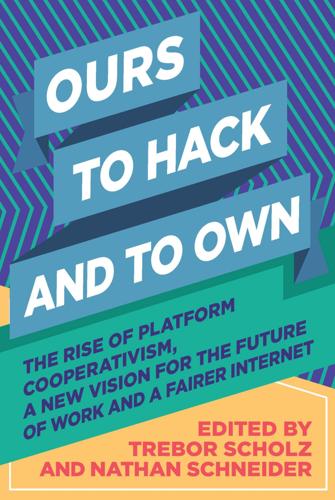
Ours to Hack and to Own: The Rise of Platform Cooperativism, a New Vision for the Future of Work and a Fairer Internet
by
Trebor Scholz
and
Nathan Schneider
Published 14 Aug 2017
Microsoft paid $97 million to settle a lawsuit for denying benefits to over eight thousand perma-temps. Besides temp workers, another type of worker is known as the “independent contractor.” Fritz Elienberg worked for five years as a full-time employee installing cable and Internet service for RCN Corporation in Boston. Elienberg often worked ten to fourteen hours a day yet he never received time-and-a-half for overtime. When a ladder fell on his foot and seriously injured it, workers’ compensation would not cover his medical bills. Why? Because RCN did not regard him as a regular employee; instead he was an “independent contractor.” That meant, legally speaking, he worked for himself and was not employed by RCN.
…
Privacy should be a concern for workers and customers, too. Uber is analyzing the routines of its customers, from their commutes to their one-night stands, to then impose surge pricing when they most rely on the service. Navigating legal gray zones, these deregulated commerce hubs sometimes misclassify employees as independent contractors. They are labeling them “turkers,” “driver-partners,” or “rabbits,” but never workers. Hiding behind the curtain of the Internet, they would like us to believe that they are tech rather than labor companies. In the decade between 2000 and 2010, the median income in the United States declined by 7 percent when adjusted for inflation.
…
In the decade between 2000 and 2010, the median income in the United States declined by 7 percent when adjusted for inflation. In 2014 51 percent of Americans made less than $30,000 a year, and 76 percent of them had no savings whatsoever. Since the 1970s, we have witnessed concerted efforts to move people out of direct employment, which has led to the steady growth of the number of independent contractors and freelancers. Digital labor, a child of the low-wage crisis, is part of that process. What has the “sharing economy” really gotten us? Beyond the consumer convenience and efficiency in creating short-term profits for the few, it has demonstrated how, in terms of social well-being and environmental sustainability, capitalism turns out to be amazingly ineffective in watching out for people.

The Smartphone Society
by
Nicole Aschoff
The defeat in court of Deliveroo drivers in the UK who pursued employee rights and the April 2019 National Labor Relations Board advisory memo designating Uber drivers as independent contractors with no right to unionize show how entrenched the new app-work models have become in just a short time, and how difficult it will be to change expectations about work in the gig economy. But difficult does not mean impossible. As this book went to press, California legislators approved a landmark bill that forces app-based service companies (such as Uber and Lyft) to reclassify their workers as employees rather than independent contractors. Tech companies are sitting atop mountains of cash thanks to mass quantities of unpaid and underpaid work, a technological infrastructure that was developed with taxpayer money, and access to cheap credit for development and expansion, courtesy of low-interest rates engineered by the Federal Reserve.
…
Many don’t even know they are being tracked, because employers are not required to tell them, and a significant percentage are tracked twenty-four hours a day, whether they’re working or not.55 Moreover, many algorithmically managed workers don’t have the rights that regular employees have. Those designated as independent contractors—pretty much all on-demand workers today—are not entitled to minimum wage, sick days, overtime pay, safety protections, unemployment or health insurance, a pension plan, or disability pay. App workers in service jobs are held hostage to the reviews of fickle customers, and if they have a problem, their app boss isn’t much help.
…
A customer sent Melissa a pornographic video through the DoorDash app, but when Melissa tried to report the incident it was extremely difficult to reach an actual person at the company. She finally reached someone at DoorDash only to be told there wasn’t much the company could do, and that as an independent contractor she should know the risks. Melissa was on her own. When a customer grabbed her breast a month later, she didn’t even bother reporting it.56 Some app workers say they really like what they’re doing and appreciate the opportunity to earn some extra cash. That may be so. But it’s also important to be clear-eyed about the types of employment relationships being generated through our smartphones.

How to Fix the Future: Staying Human in the Digital Age
by
Andrew Keen
Published 1 Mar 2018
It claimed that Uber has misclassified its drivers as independent contractors, when in fact they are official employees and thus have the legal right to benefits like workers’ compensation, unemployment, and social security. The suit also claimed that Uber fixed the price of rides by promising that tips were included and then failed to pass on the extra money to the drivers. In 2015 Liss-Riordan compromised with Uber, negotiating a settlement of $84 million on behalf of 325,000 drivers in California and 60,000 in Massachusetts, which allowed the Silicon Valley company to continue employing its drivers as independent contractors. She has also pursued similar class action cases against Lyft, the food-delivery companies DoorDash and Grubhub, the grocery app Instacart, and the shipping app Shyp.
…
When Kelman founded Redfin in 2006, having sold his previous internet start-up for $200 million, he insisted that the new start-up employ real estate agents as full-time employees, with health benefits and 401(k) retirement contributions, rather than independent contractors. Glenn Kelman’s rationale for this—in addition to sharing the wealth created by Redfin with everyone who worked for the company—was to provide better customer service. As a pioneer of this alternative model for start-ups, Kelman has even become what the New York Times calls an “informal counselor” for other start-up entrepreneurs also interested in shifting away from the independent contractor employment model because the shift makes both ethical and moral sense.41 As the subtitle of that NELP on-demand economy report said, “Why Treating Workers as Employees Is Good for Business.”
…
Yes, he confirms, he enjoys the freedom of choosing his own hours; but the income, he says, isn’t as much he’d hoped it would be—particularly after he’s subtracted the insurance, gas, depreciation, and the other costs of running his Prius. In fact, he admits, on slow days he suspects that he ends up with less than the eleven-dollar-an-hour Massachusetts minimum wage. “So Uber doesn’t provide any benefits at all?” I ask. “No, nothing. I’m an independent contractor,” he tells me a little sadly. “I work for myself.” A pioneer of the so-called sharing or gig economy, Uber—borrowing from the Silicon Valley libertarian fantasy of absolute personal freedom—describes itself as a company that empowers people to work when and where they want, without having the restrictive commitments of a regular full-time job.
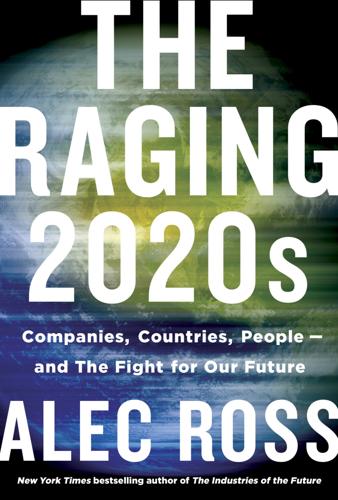
The Raging 2020s: Companies, Countries, People - and the Fight for Our Future
by
Alec Ross
Published 13 Sep 2021
about five hundred of the estimated three hundred thousand rideshare drivers: Brian Dolber, interview with Will Peischel, May 15, 2020; “About Us,” Rideshare Drivers United, accessed May 21, 2020, https://drivers-united.org/about. the group had recruited most of its members: Brian Dolber, From Independent Contractors to an Independent Union: Building Solidarity through Rideshare Drivers United’s Digital Organizing Strategy (Philadelphia, PA: Media, Inequality & Change Center, October 2019), 9, https://mic.asc.upenn.edu/wp-content/uploads/2020/07/Dolber_final1.pdf. Armed with an academic grant: Dolber, From Independent Contractors to an Independent Union, 9, https://mic.asc.upenn.edu/wp-content/uploads/2020/07/Dolber_final1.pdf. The strategy was simple: Brian Dolber, interview with Will Peischel, May 15, 2020.
…
But its founder proved to be the very caricature of the brotastic boy billionaire, kicked out of his own company for its misogynistic culture. And the driver is working on terms that seem more 19th century than 21st—she makes near minimum wage, with zero worker protections or benefits because her employment status classifies her as an independent contractor. Boeing and the airline I’m flying recently received massive government bailouts despite the airlines having generated more than $49 billion in free cash flow during the previous decade. The reason they were not able to tap that $49 billion once trouble hit was not because they had been investing in new planes, better service, or better salaries for their workers.
…
It is easier to mobilize a strike or build support for a union in a large workplace with lots of employees, like a coal mine or an auto plant, than among workers scattered across branch offices, franchise restaurants, and chain stores. If people do not stand shoulder to shoulder on the job, they are less willing to do so on the picket line. The proximity problem is amplified when businesses outsource operations to contingent workers, freelancers, and independent contractors. These “alternative work arrangements” offer workers more flexible hours and commitments, but they also let companies avoid extending them certain benefits and protections available to full-fledged employees. Contract workers can be found everywhere. They include nearly all the baggage handlers and skycaps at airports, about one in three construction workers, and more than half the employees at Google.

Squeezed: Why Our Families Can't Afford America
by
Alissa Quart
Published 25 Jun 2018
But they also telegraph another useful message: Uber’s drivers have turned to rideshare-driving not as a full-time professional pursuit but as a second job that serves a purely supplementary purpose. This is a useful message for Uber, which has been working hard to push the idea that its 400,000 drivers are independent contractors, not employees of the company. As employees, they would be entitled to minimum wage, overtime pay, benefits, and basic employee protections—which would strike at the very engine of the Uber business model, costing the company billions of dollars. As independent contractors, they receive none of these benefits. Uber is fueled in part by those trying to make ends meet in an overall economy that devalues their work. The sharing economy helps deny its participants basic worker rights or, in the case of Airbnb, creates more scarcity in the rental market by turning apartments into illegal hotels, in a cruel cycle.
…
By most measures, Tanner, at thirty-eight, made a fine living, in the very low six figures. He had a $3,000 monthly mortgage, which was less than half of his monthly income. In 2016, he worked three jobs to pay for his health insurance and his family’s expenses: as a meteorologist for Weather Underground, a weather site; as an independent contractor; and as an instructor at San Jose State University. In other words, he was not as under siege financially or as pressed for time as the Hogans, who ran the twenty-four-hour day-care center, or the frantic parents of the children who attended it. Nevertheless, Tanner felt tense. Living in the shadow of the tech industry had been bad for some of his friends too: most of them didn’t have “ridiculous” tech jobs, but the cost of living created alienating comparisons.
…
Yet, stripped of its “generous” veneer, Uber’s teacher-driver campaigns are also sharing in a more twisted Silicon Valley fantasy: low taxes, good schools, and teachers who drive you home after your expense-account meal with a venture capitalist! These conglomerates are gargantuan outfits that offer short-term, cheap services delivered by “independent” contractors. They have become hugely successful by trading labor across platforms over which workers have little to no say. There was also a gendered element of this dark Silicon Valley fantasia. Of the dozen Uber and Lyft driver-teachers I spoke to in 2016, most were also parents, and almost all were men.
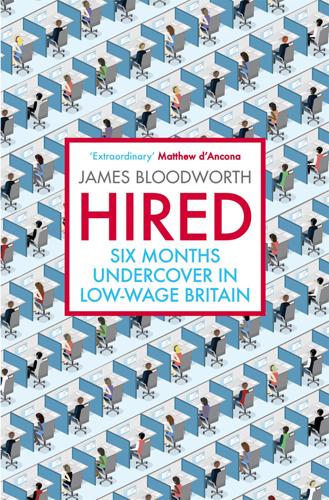
Hired: Six Months Undercover in Low-Wage Britain
by
James Bloodworth
Published 1 Mar 2018
But there is also a suspicion that, as profit margins in many areas of the economy have shrunk, companies have been offloading more of the business costs onto employees by effectively pretending that they are not employees. Jobs that would at one time have had regular pay and hours, entitling workers to the minimum wage, holiday pay and perhaps even a contract of employment, were increasingly done by people classified as ‘independent contractors’ who enjoyed none of those benefits. Behind the algorithms through which you got your jobs were usually tech entrepreneurs, often based in California’s so-called Silicon Valley. Thus while Dickens’s proletariat had gone from the streets of London, so too had many of the capitalist overlords he depicted so brilliantly.
…
Dan, another bicycle courier I spoke to, had been forced to take time off after damaging ligaments in his arm. In order to afford to live while he was hors de combat, Dan had to sign on and claim Employment and Support Allowance (ESA) together with housing benefit until he was fit enough to ride again. It has been estimated by industry insiders in the US that relying on independent contractors rather than employees can lower direct business costs for companies by as much as 25 per cent.29 At least some of those costs are being offloaded onto the state, and by extension onto taxpayers and other workers. Due to the paucity of many people’s earnings in the ‘gig’ economy, signing on for social security when you fall ill is sometimes the only option.
…
In a landmark 2002 case, a self-employed joiner who worked exclusively for one firm of building contractors was found to be a worker, despite supplying his own tools and paying his own tax and national insurance.31 A ‘worker’ was defined as someone who worked under a contract of employment (or an implied contract of employment) and who could not send someone else to carry out his or her job. They also could not be a client or customer of the individual’s profession or business. In three recent cases involving Uber, CitySprint and Pimlico Plumbers, supposed ‘independent contractors’ were declared workers by tribunals. The law itself is not as clear as it might be, but only in the sense that it currently allows employers to obfuscate and shirk their responsibilities. Some people don’t like to take responsibility for their own shit, as someone once said. Employment law also requires that individual workers come forward with their own cases, rather than any rulings being automatically rolled out to others in the sector.
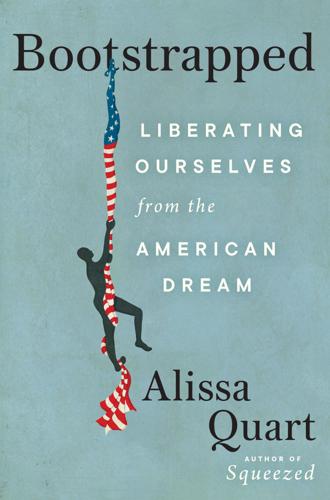
Bootstrapped: Liberating Ourselves From the American Dream
by
Alissa Quart
Published 14 Mar 2023
A few years before, Bain, a college graduate, had started an Instacart grassroots advocacy network, first through Facebook and the nonprofit group Gig Workers Collective. How could companies keep them as “independent contractors rather than employees with full benefits” when a disease was rampant, she wondered out loud. * * * One of the ways that gig companies have been able for years to define their workers as independent contractors is by exploiting the allure of individualism. The contractor has their freedom, the thinking goes, so why would they exchange that for a full-time job with benefits? But another culprit emerges from popular culture: the trendy pidgin to describe contract work tends to glamorize such work.
…
See inequality income tax, xi, 10, 104, 146 on excess profit, 159, 220, 255n in Participatory Budgeting (PB), 210–15 as wealth tax, 54–56, 69, 76, 156–58, 160–63, 237n independence, 19–21, 30–32, 119–20, 125, 223, 230 See also individualism independent contractors, 146–50, 253n indigence, vii, x, 39, 166, 192, 219, 240n, 253n Indigenous people, 19, 25–26, 29–33, 171–72, 239n individualism, xii, 3–8, 13–20, 92–94, 172–74, 257n affluence and, 4, 48–50, 230 independent contractors and, 146–50, 253n libertarianism and, 46–47, 83, 243n limits of, 183–85, 188, 193, 215, 218 rugged, 14, 27–29, 32, 36, 238n inequality, 44, 54–59, 154–56, 181, 199, 254n as bootstrapping, 5–8, 217 as gender inequity, 4, 11, 22, 69, 123, 126, 145, 172, 252n in gig work, 138–43, 145–50, 179 in health care, 205–8 as product of trickle-down economics, 62–63, 68, 231 Inequality.org, 154 inherited wealth, 18, 56–57, 76, 153–57, 163, 218, 242n, 245n heiresses, 61–62 injustice, 21, 97, 115, 156 as administrative burden, 108–11 instability, financial, 7, 143, 147 and employment instability, 126, 132, 144, 181 student debt and, ix, 7, 11, 104, 163, 246n, 251n Instacart, 138, 140–41, 146–49, 253–54n Institute for Family Studies, 134 interdependence, art of, 8–10, 22–23, 219–23, 227–31 in health care, 206–9 in Kropotkin, 170–74 in local governance, 210–15 in mutual aid, 165–77 in worker cooperatives, 180–90 intersectionality, 195, 201, 218, 252n, 258n invisible labor, ix, 10, 18, 77, 201, 218, 238n, 247n Jane Eyre (Brontë), 20 Jenner, Kylie, 40 Jobs, Steve, 46, 58, 242n Johnson, Eric Michael, 173–74, 257n judgment, 7, 35, 55, 67–68, 125, 162, 171, 209 on laziness, 19, 78, 81–82 as moral injury, xi, 15, 59, 85, 104–5, 223, 238n, 260n justice, 65, 96–97, 149, 182, 211, 222 Workers for Justice, 162 “just-world” hypothesis, 65–67, 244n Kabat-Zinn, Jon, 91, 249n Kahneman, Daniel, 79, 199 Kalanick, Travis, 46 Karol, David, 74 Kawano, Emily, 181 KC Tenants (Kansas City), 224 Keeping Up with the Kardashians, 63 Kemper, Bob, 78–80 Kendall, Mikki, 188 Kerr, Camille, 180–81 Keywords: A Vocabulary of Culture and Society (Williams), 147–48 Keywords: The New Language of Capitalism (Leary), 141, 147–48 Kiatpongsan, Sorapop, 57 King, Martin Luther, Jr., 9–11, 237n Koch brothers (Charles and David), 243n Kolokotronis, Alexander, 214, 260n Kropotkin, Peter, 170–74, 188–89 Krugman, Paul, 55 Kucinskas, Jaime, 92 labor market, 9–10, 78–79, 95, 120 and invisible labor, 117–20, 124–26, 129–31, 228, 238n Laird, Pamela Walker, 7–9, 236n landlessness, 33–34, 37, 239n landlords, 8, 153–54, 224 Landon, Michael, 35, 240n Lane, Rose Wilder, 27–28, 238n Langone, Ken, 161 Lapham, Mike, 75 Latino Exit from the Democratic Party (LEXIT), 82–83 Law for Black Lives, 162 laziness, 19, 78, 81–82 Lean In (Sandberg), 46, 61, 127–28, 245 Leary, John Patrick, 141, 144, 147, 253n Lerner, Joshua, 211–12 Lerner, Melvin, 65–67, 244n A Fundamental Delusion, 65 liberation in child tax credit, 219–20 as community-mindedness, xi, 5, 9, 21, 167–70, 174, 228–30, 257n in counternarratives, 65, 133, 141, 218, 224–25, 231, 260–61n from disease, 205, 207 from fear, 193–96 in free community college, 11–12, 258n as freedom from, 47–49, 72, 239n and freelance gigs, 140–41, 145 and free lunch, 111, 123 and freethinking, 17–21, 230, 237n as medical insurance, 47, 112, 223–24 in mindfulness, 93–95 in mutual aid, 165–70, 176, 185, 215, 218, 220–21, 225–31 libertarianism, 27–28, 46–47, 59–60, 83, 238n, 240n, 243n The Limits of Self-Reliance (Read), 19 Linnemann, Esma, 93 Little House on the Prairie (Wilder), 25–37 log cabins, 25, 27, 29–30 Loper, Nick, 142 Loy, David, 93 Lululemon, 46–47 lunch program, 23, 78, 108–9, 114–15, 224 Mackey, John, 46, 241n Magee, Rhonda, 96–97 Making Volunteers: Civic Life at Welfare’s End (Eliasoph), 209, 259n Manchin, Joe, 69, 114, 134, 251n Manklang, Mo, 180, 184 market worship, 45, 50, 83, 90, 198, 239–40n, 248n, 259n Martel, James, 42, 50, 240n Marx, Leo, 19, 238n masks.
…
Okawa, for instance, became involved in the opposition to California Proposition 22, the Uber- and Lyft-funded ballot measure that worked against California’s AB5. AB5 had been a huge victory when it was signed into law in 2019: it gave employee status to gig workers and made it much harder for the megacorporations to claim their workers were independent contractors rather than employees. Okawa also joined a local organizing group, We Drive Progress. The group defined itself as a collective of “app-based drivers,” those “behind the wheel of every trip for Uber, Lyft, Instacart, and beyond.” Their protests were aimed at “fair wages, benefits, and our unions” as well as earning a “fair share” of “the billions these companies and their investors pocket.”

Road to Nowhere: What Silicon Valley Gets Wrong About the Future of Transportation
by
Paris Marx
Published 4 Jul 2022
Taxi companies wanted to rid themselves of the unions, even though they had become far less radical since the 1950s. In other US cities, the companies had successfully switched from an employment model to one where taxi workers were independent contractors who leased their vehicles from the taxi companies and were covered by corporate insurance. By the end of the 1970s, taxi drivers in San Francisco had also succumbed to the leasing model. As one former driver told Dubal, even though they were classified as independent contractors, “there was nothing that changed, except you signed a document. Nothing else changed. Your relationship with the company didn’t change not one iota.”19 The drivers were still doing the same work, but they were treated as contractors instead of employees.
…
The decades of union power had left San Francisco and other cities with a strong regulatory framework that drivers could use to their advantage. The number of cabs on the street was regulated, meaning the market could not be flooded to drive down their wages. Regulations also protected the fares they could charge. Even though drivers failed to win back employee status or their unionization rights—independent contractors are excluded under the US National Labor Relations Act—they did succeed at getting the city to regulate the price of a daily lease to limit the taxi companies’ ability to squeeze them in 1998. But by then there was another effort to scale back workers’ regulatory protections. In the 1990s, libertarian think tanks made a big push to deregulate the US taxi industry, in line with their ideological bias against regulation and in favor of ostensibly free markets.
…
Transport consultant Hubert Horan explained that this effort was not initiated by local residents in cities around the country, but rather “were entirely organized and financed by external interests who systematically repeated its key messages across a range of contexts and publications.”20 The think tanks’ push to deregulate largely failed, but the communications plan they used was adopted almost wholesale in the early 2010s as Uber rolled out its service and sought to evade the regulations that were the last line of defense for taxi workers to protect their livelihoods. The Uber model built on the leasing model of the 1970s by ensuring drivers were independent contractors that the company had no obligations toward. Only now, instead of providing vehicles and insurance as taxi companies do under the leasing model, all those costs and the associated risks were outsourced to drivers. Even though there is no Uber without drivers, the company claimed its only role was to facilitate the relationship between drivers and riders through its smart-phone app, and most regulators bought it for much of the company’s first decade of operation.

Marx at the Arcade: Consoles, Controllers, and Class Struggle
by
Jamie Woodcock
Published 17 Jun 2019
The sample indicated that the majority of workers were on permanent contracts (70 percent), with only 3 percent on temporary contracts. Apart from this group, 19 percent were self-employed, and 8 percent worked as independent contractors or freelancers. The overwhelming majority (89 percent) worked full time in the industry. However, these figures can paint a deceptively rosy picture. While the 70 percent of workers on permanent contracts may sound like stable employment, respondents had an average of 2.2 employers over the past five years, while independent contractors and freelancers were hired by 3.6, and the self-employed had contracts with 2.9.44 It is therefore possible to deduce that those in the category with which one would expect stability (permanent contracts) are likely to experience surprisingly high turnover, while those in the categories that one would expect the most flexibility (independent contractor, freelancer, and self-employed) have surprisingly stable relationships.
…
While the 70 percent of workers on permanent contracts may sound like stable employment, respondents had an average of 2.2 employers over the past five years, while independent contractors and freelancers were hired by 3.6, and the self-employed had contracts with 2.9.44 It is therefore possible to deduce that those in the category with which one would expect stability (permanent contracts) are likely to experience surprisingly high turnover, while those in the categories that one would expect the most flexibility (independent contractor, freelancer, and self-employed) have surprisingly stable relationships. This implies that there may well be issues “about the misclassification and misuse of freelance/independent contract labour,” as companies “may be skirting the definitions of freelance or independent contractor to hire de facto employees while avoiding regulatory regimes and payroll costs.”45 Within these studios, the workers making videogames are not sitting at desks while icons pop over their heads, as in Game Dev Story.
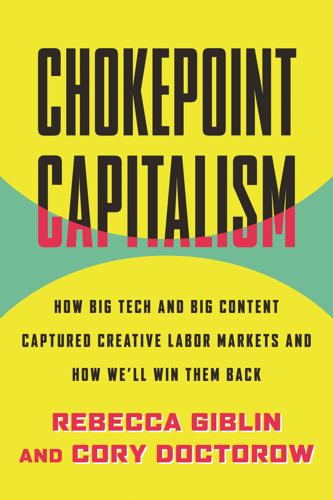
Chokepoint Capitalism
by
Rebecca Giblin
and
Cory Doctorow
Published 26 Sep 2022
Press, “Amazon, Vanguard of Class War,” This Machine Kills, ep. 62, podcast audio, Apr. 21, 2021, https://soundcloud.com/thismachinekillspod/62-amazon-vanguard-of-class-war-ft-alex-n-press. 11. George Skelton, “It’s No Wonder Hundreds of Millions Have Been Spent on Prop. 22. A Lot Is at Stake,” Los Angeles Times, Oct. 16, 2020, https://www.latimes.com/california/story/2020-10-16/skelton-proposition-22-uber-lyft-independent-contractors. 12. Mike Dickerson, “Vons, Pavilions to Fire ‘Essential Workers,’ Replace Drivers with Independent Contractors,” Knock LA, Jan. 4, 2021, https://knock-la.com/vons-fires-delivery-drivers-prop-22-e899ee24ffd0. 13. Board of Governors of the Federal Reserve System, “Report on the Economic Well-Being of U.S. Households in 2017,” May 2018, https://www.federalreserve.gov/publications/files/2017-report-economic-well-being-us-households-201805.pdf. 14.
…
Chicago School antitrust theory doesn’t just allow firms to get very big; it simultaneously clobbers independent workers who seek to band together to collectively enforce their rights. The law has an exemption that protects employees from liability for most kinds of organizing, but it doesn’t apply to gig workers and other independent contractors. If such workers try to band together against a powerful buyer to collectively enforce their rights, they’ll be liable for violating antitrust but the company squeezing them will not. Port of Los Angeles truckers found this out the hard way when they tried to unionize, only for regulators to accuse them of unlawfully colluding to fix the price of their labor.31 These rules are why US organizations like the Authors Guild can’t unionize independent writers.
…
And studios have also long called writers “employees,” since that has allowed them to claim that the studios themselves were the authors of the scripts under US copyright law. Writing under these conditions brought on a great deal of creative despair, but then along came Roosevelt’s New Deal, giving employees (but not independent contractors) those strong new labor protections, and Hollywood writers realized the status they had so begrudged was the key to unlocking greater protections for their profession. The studios backpedaled, trying to argue that their writers were freelancers after all, but the control they maintained over their writers doomed that argument.8 The upshot?

Blood in the Machine: The Origins of the Rebellion Against Big Tech
by
Brian Merchant
Published 25 Sep 2023
In the process, they’ve disrupted Main Street businesses and traditional livelihoods—and concentrated wealth, power, and technological advantage in an ever smaller number of hands. In 1812, skilled weavers feared that a factory filled with power looms would automate the job of weaving cloth and put them out of work. In 2012, veteran taxi drivers feared that Uber’s algorithm would flood the market with independent contractors beholden to an app and put them out of work. In 1812, those fears drove Britain, then the richest and most technologically advanced nation in the world, to the brink of civil war. There, at the dawn of the Industrial Revolution, a small but growing number of industrialists took the work that artisans had done in their own homes or in small shops—on their terms, with their families, for generations—and automated it with machinery and moved it into factories.
…
Kalanick’s business idea—that it would be convenient to hail a taxi from your smartphone—was not remarkably inventive. But he had intense levels of self-determination and pugnacity, which helped him overrun the taxi cartels and dozens of cities’ regulatory codes. His attitude was reflected in Uber’s treatment of its drivers, who, the company insists, are not employees but independent contractors, and in the endemic culture of harassment and mistreatment of the women on staff. These are extreme examples, perhaps. But extremity is often needed to break down long-held norms, and the potential rewards are extreme, too. Like the mill bosses who shattered nineteenth-century standards and traditions by automating cloth-making, today’s start-up founders aim to disrupt one job category after another with gig work platforms or artificial intelligence, and encourage others to follow their lead.
…
It is that it used this moderately novel configuration of technology to argue that the old rules did not apply whenever it brought its taxi business to a market that already had a regulated taxi code. Uber claims that it is not a taxi company but a software company. It says its workers are not, in fact, taxi drivers, or even workers, but independent contractors, who are incidental to its proprietary software. Uber argued exactly this as it moved into city after city after city, setting up shop, recruiting drivers, running ad campaigns, and launching the service whether or not it was sanctioned by local laws. Led by its brash and regulation-despising founder, Travis Kalanick, Uber deployed a strategy to undercut the local taxi drivers, establish its service as the cheaper, sleeker, modern alternative, and gain a foothold if not a dominant share—steamrolling any laws already in place to protect workers in the industry and dealing with local officials after the fact.

Abolish Silicon Valley: How to Liberate Technology From Capitalism
by
Wendy Liu
Published 22 Mar 2020
Service workers were unproductive labour, the sort that ought to be optimised away; I would hire only high-performing engineers and the people needed to support them. If I needed service workers to do maintenance work or food prep, I would simply contract that out for the cheapest wages the market could bear — the innovation behind the recent spate of gig economy startups. Independent contractors wouldn’t qualify for minimum wage protections or benefits, after all. What would happen to the employee? Well, she could find another job. Of course, other jobs were getting automated or made more unpleasant through the intensification of surveillance technology, but the plight of this employee was not my problem.
…
Upward mobility — while not guaranteed, and not available evenly — would be a reasonable expectation for most. If your startup were to shut down, you would probably be able to find a job with similarly lavish pay and benefits. And if your startup were to hit the lottery, you would have a solid chance of becoming unimaginably rich. But if you were an independent contractor working through a gig platform, the paths upward would be much murkier. You could work one-hundred-hour weeks and still barely pay the bills, much less build up your savings. Job security would be an illusion; your pay could drop at a moment’s notice, and you would have little recourse other than to accept it if you didn’t want to lose your work history on the platform.
…
We know who actually benefits from the money in booming sectors; we know that every sector has a divide between the well-paying jobs that will insulate you from economic insecurity, and the poorly-paid jobs that will never get you inside the castle. One afternoon I share a Lyft Line with a passenger who’s on his way to the warehouse of a lesser-known gig economy company, where he works as an independent contractor. He explains that he got called in for his shift last-minute, and he’s taking a Lyft because public transit won’t get him there in time. As we cross the Bay Bridge, sunlight glinting off the canted suspension cables, the passenger waxes poetic about how much he loves his job. They provide dinner before the night shift!

J.K. Lasser's Your Income Tax 2022: For Preparing Your 2021 Tax Return
by
J. K. Lasser Institute
Published 21 Dec 2021
The IRS distinguishes between (1) technicians who in three-party arrangements are assigned clients by a technical services agency and (2) those who directly enter into contracts with clients. Employee status covers only technicians in Group 1. Technical specialists who contract directly with clients may be classified as independent contractors by showing that they have been consistently treated as independent contractors by the client, and that other workers in similar positions have also been treated as independent contractors. Thus, they may treat their income as self-employment income. Firms that are treated as employers of technical specialists are responsible for withholding and payroll taxes. Traders in securities Gains and losses from a trading business are not subject to self-employment tax.
…
If you reimburse employees for food or beverage costs that they do not adequately account for (20.18), the reimbursement is treated as taxable wages, which you can fully deduct. A similar rule applies if you reimburse an independent contractor for meal costs he or she incurs on your behalf, but the contractor does not give you an adequate accounting for the expenses. You should report the rembursements as compensation to the contractor, and you may fully deduct the reimbursement. Final regulations (T.D. 9925) have further details and examples of meal reimbursement arrangements that involve independent contractors. 100% deduction for food and beverages at recreational or social activities for employees. You may deduct 100% of the cost of food and beverages you provide at a recreational, social, or similar activity that is primarily for the benefit of your non-highly compensated employees.
…
Restrictions on fiscal years for partnerships, personal service corporations, and S corporations are discussed in 11.11 and IRS Publication 538. 40.5 Reporting Certain Payments and Receipts to the IRS In certain situations, you are required to report payments and receipts to the IRS. If you fail to comply with this reporting, you can be penalized. Payments to independent contractors. If you pay independent contractors, freelancers, or subcontractors a total of $600 or more within the year, you must report all payments to the IRS and the contractors on Form 1099-NEC. For 2021 payments, furnish the contractor with the form and provide a copy to the IRS by January 31, 2022, whether you file by paper or electronically.

J.K. Lasser's Your Income Tax 2014
by
J. K. Lasser
Published 5 Oct 2013
The IRS distinguishes between (1) technicians who in three-party arrangements are assigned clients by a technical services agency and (2) those who directly enter into contracts with clients. Employee status covers only technicians in Group 1. Technical specialists who contract directly with clients may be classified as independent contractors by showing that they have been consistently treated as independent contractors by the client, and that other workers in similar positions have also been treated as independent contractors. Thus, they may treat their income as self-employment income. Firms that are treated as employers of technical specialists are responsible for withholding and payroll taxes. Traders in securities Gains and losses from a trading business are not subject to self-employment tax.
…
Fiscal year restrictions Restrictions on fiscal years for partnerships, personal service corporations, and S corporations are discussed in 11.11 and IRS Publication 538. 40.5 Reporting Certain Payments and Receipts to the IRS In certain situations, you are required to report payments and receipts to the IRS. If you fail to comply with this reporting, you can be penalized. Payments to independent contractors If you pay independent contractors, freelancers or subcontractors a total of $600 or more within the year, you must report all payments to the IRS and the contractors on Form 1099-MISC. Furnish the contractor with the form by January 31, 2014, for the 2013 payments. You must file the form with the IRS by February 28, 2014 (March 31, 2014, if you file the form electronically)
…
- - - - - - - - - - Caution Penalty and Interest on Nonqualified Deferred Compensation If deferred pay is currently taxable under the rules of Code Section 409A, you must also pay a 20% penalty and interest at a rate 1% higher than the regular underpayment rate. - - - - - - - - - - Plans subject to and excluded from Section 409A Unless an exception applies, Code Section 409A applies to all plans, including arrangements between an independent contractor and a service recipient, and a partner and partnership, under which the service provider has a legally binding right during a year to compensation that is not actually or constructively received, and which is payable in a later year. The law does not apply to qualified retirement plans (such as 401(k) plans), Section 403(b) tax-deferred annuities, SIMPLE accounts, simplified employee pensions, and Section 457 plans; these are excluded from the definition of “nonqualified deferred compensation plans.”

The New Class Conflict
by
Joel Kotkin
Published 31 Aug 2014
WebProNews, December 29, 2013, http://www.webpronews.com/what-was-worse-in-2013-yahoo-mail-or-youtube-comments-2013-12; Steve Wildstrom, “Windows 8 is Worse Than Vista (for Microsoft),” TechPinions, January 22, 2014, http://techpinions.com/windows-8-is-worse-than-vista-for-microsoft/26704. 85. Lasch, The Only and True Heaven, p. 26; Joshua Wright, “Data Spotlight: Independent Contractors On the Rise,” Economic Modeling Specialists Intl., April 29, 2011, http://www.economicmodeling.com/2011/04/29/independent-contractors-other-noncovered-workers-on-the-rise. 86. U.S. Census Bureau, “Nonemployer Statistics,” http://www.census.gov/econ/nonemployer/index.html; Erik Pages, “Living and Working in the 1099 Economy,” New Geography, July 2, 2011, http://www.newgeography.com/content/002314-living-and-working-1099-economy; Wendell Cox, “Toward a Self Employed Nation?”
…
Census Bureau, “Nonemployer Statistics,” http://www.census.gov/econ/nonemployer/index.html; Erik Pages, “Living and Working in the 1099 Economy,” New Geography, July 2, 2011, http://www.newgeography.com/content/002314-living-and-working-1099-economy; Wendell Cox, “Toward a Self Employed Nation?” New Geography, June 6, 2013, http://www.newgeography.com/content/003761-toward-a-self-employed-nation; Joshua Wright, “Data Spotlight: Independent Contractors on the Rise,” Economic Modeling Specialists Intl., April 29, 2011, http://www.economicmodeling.com/2011/04/29/independent-contractors-other-noncovered-workers-on-the-rise. 87. William Fulton, “Economic Development in the 1099 Economy,” Governing, May 2011. 88. Wendell Cox, “Decade of the Telecommute,” New Geography, October 5, 2010, http://www.newgeography.com/content/001798-decade-telecommute; Joel Kotkin, “Marissa Mayer’s Misstep and the Unstoppable Rise of Telecommuting,” New Geography, March 26, 2013, http://www.newgeography.com/content/003597-marissa-mayers-misstep-and-the-unstoppable-rise-of-telecommuting. 89.
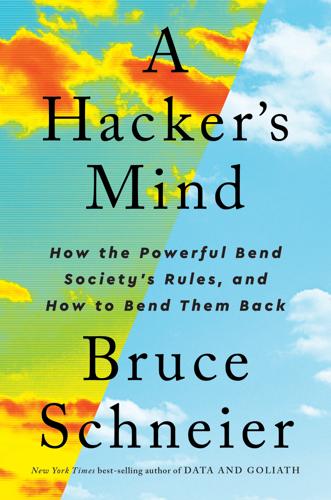
A Hacker's Mind: How the Powerful Bend Society's Rules, and How to Bend Them Back
by
Bruce Schneier
Published 7 Feb 2023
It looks like a taxi service. It acts like a taxi service. But if you ask Uber—and any of its competitors—it is not a taxi or a livery company. It is an Internet services company that connects people who are driving cars with people who want to be driven somewhere. Those drivers are supposedly independent contractors, not employees; Uber claims to have no control over them. Uber schedules the drivers and handles their billing, but that’s nothing more than a courtesy. To hear Uber tell it, the company really doesn’t have anything to do with cars at all, at least as far as any government regulations are concerned.
…
In 2017, the European Union’s top court ruled that Uber is a transportation service, not the technology company it claimed to be in the hope of evading transportation regulations. In 2018, the UK Court of Appeal ruled that Uber drivers are employees, contrary to Uber’s contention that they are independent contractors; the French Cour de Cassation made a similar decision in 2020. In the US, California passed legislation in 2019 requiring companies like Uber to treat their workers as employees; litigation ensued, and continues. Other cities and states are trying to do the same, although most states have preempted local rulings on this issue.
…
But Airbnb maintains that because it is not actually a hotel company, Airbnb accommodations should not be subject to any of the laws and regulations—or occupancy taxes—imposed on conventional hotels. Because Airbnb doesn’t own any properties, it maintains that it is just a technology company. The people who own the accommodations are independent contractors, and are responsible for paying taxes and complying with local regulations. Of course, most fail to do so. Municipalities either let Airbnb slide without paying its share of occupancy fees or try to fight back. Some sought to limit its expansion through regulation, and Airbnb sued them (while still operating), resulting in lengthy court battles.

J.K. Lasser's Your Income Tax
by
J K Lasser Institute
Published 30 Oct 2012
The IRS distinguishes between (1) technicians who in three-party arrangements are assigned clients by a technical services agency and (2) those who directly enter into contracts with clients. Employee status covers only technicians in Group 1. Technical specialists who contract directly with clients may be classified as independent contractors by showing that they have been consistently treated as independent contractors by the client, and that other workers in similar positions have also been treated as independent contractors. Thus, they may treat their income as self-employment income. Firms that are treated as employers of technical specialists are responsible for withholding and payroll taxes. Traders in securities Gains and losses from a trading business are not subject to self-employment tax.
…
Restrictions on fiscal years for partnerships, personal service corporations, and S corporations are discussed in 11.11 and IRS Publication 538. 40.5 Reporting Certain Payments and Receipts to the IRS In certain situations, you are required to report payments and receipts to the IRS. If you fail to comply with this reporting, you can be penalized. Payments to independent contractors. If you pay independent contractors, freelancers or subcontractors a total of $600 or more within the year, you must report all payments to the IRS and the contractors on Form 1099-MISC. Furnish the contractor with the form by January 31, 2013, for the 2012 payments. You must file the form with the IRS by February 28, 2013 (April 1, 2013, if you file the form electronically)
…
- - - - - - - - - - Caution Penalty and Interest on Nonqualified Deferred Compensation If deferred pay is currently taxable under the rules of Code Section 409A, you must also pay a 20% penalty and interest at a rate 1% higher than the regular underpayment rate. - - - - - - - - - - Plans subject to and excluded from Section 409A. Unless an exception applies, Code Section 409A applies to all plans, including arrangements between an independent contractor and a service recipient, and a partner and partnership, under which the service provider has a legally binding right during a year to compensation that is not actually or constructively received, and which is payable in a later year. The law does not apply to qualified retirement plans (such as 401(k) plans), Section 403(b) tax-deferred annuities, SIMPLE accounts, simplified employee pensions, and Section 457 plans; these are excluded from the definition of “nonqualified deferred compensation plans.”
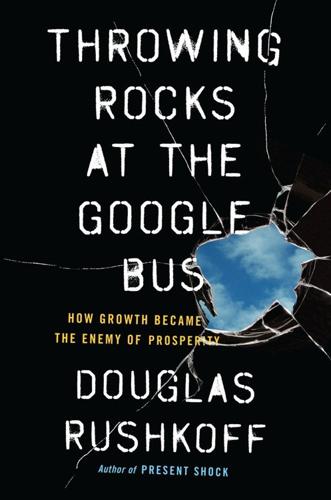
Throwing Rocks at the Google Bus: How Growth Became the Enemy of Prosperity
by
Douglas Rushkoff
Published 1 Mar 2016
The whole idea of retaining employees as quasi-family members over the course of their entire careers and then rewarding them with money for life seemed quaint but contrary to the free-market principles of the Thatcher-Reagan era, anyway. Companies and government alike began to treat employees more as independent contractors—free-market players, personally responsible and ultimately dispensable. Independent contractors and other self-employed workers were already using tax-deferred individual retirement accounts to save for their futures. Although IRAs rarely made as good returns as professionally managed and collectively pooled pension funds, they were still a legal instrument through which self-employed people could earn tax credits for making contributions to their own retirements.
…
An airline can let fliers trade miles with one another. A restaurant can forgo the bank loan and crowdfund an expansion, just as a startup can choose not to scale but to grow as needed. A business can share ownership with its workers and let them participate in the expression of its mission. Independent contractors—competitors, even—can forge networked guilds and establish best practices and minimum wages. As investors we can begin to consider supporting companies that make our world a better place, and recognizing those returns as real. As consumers we can begin to value and reward the human labor invested in the things we buy.
…
It is one of the few brick-and-mortar discount retailers whose “same-store sales” have been increasing year after year. This may also be because Costco charges an annual membership fee to shop at its stores, which accounts for about 70 percent of its operating income, as well as increased loyalty from its member-customers. * As of this writing, lawsuits against the company contesting the independent-contractor status of its drivers are under way. Uber is objecting to the notion that it is an employer or anything more than a neutral platform enabling the business dealings between individuals. * There’s still some debate among participants over how to define DACs, Dapps (decentralized applications), and DAOs (decentralized autonomous organizations), as well as the principles to which they must adhere

Enshittification: Why Everything Suddenly Got Worse and What to Do About It
by
Cory Doctorow
Published 6 Oct 2025
The company markets itself heavily to Black women, relying on an MLM-like strategy that encourages women to recruit their friends and family, and pays them a bonus when they do. The workers who take calls for Disney aren’t Disney employees. They’re also not Arise employees. Arise classifies them as self-employed independent contractors, recruited to “be their own bosses.” As independent contractors, Arise’s workers have no employment rights—and, boy, did Arise know it.1 To work for Arise, you have to use your own (likely borrowed) money to outfit yourself with a high-end PC, a headset, and a broadband connection. But—according to a 2020 investigative series by ProPublica’s Ken Armstrong, Justin Elliott, and Ariana Tobin that sparked a successful suit by the DC attorney general—you also have to pay a “background check fee” and put down a deposit to train to work as a call center operative.
…
When your boss is an app, you live with algorithmic wage discrimination and other arbitrary forms of abuse, like getting suspended without any explanation or appeal. Apps do all kinds of sneaky things. The industry has thought up all kinds of ways to break the law and get away with it. When your boss is an app and you are misclassified as an independent contractor, you have no one to argue with and you’ve got little legal recourse. Of course, this strategy isn’t perfect. Instawork is an app that dispatches people to work as low-wage temps. In July 2023, when members of the UNITE HERE Local 11 who worked at Orange County’s Laguna Cliffs Marriott Resort & Spa, owned by the University of California and managed by Aimbridge Hospitality, tried to bargain for a contract with their employer, the boss refused to deal, triggering a strike.
…
The tens of billions of dollars that Uber blew on subsidies (losing 41 cents on every dollar it brought in for twelve years) convinced many cities that public transit was an irrelevant historical curiosity and that cheap ride hailing would be here forever, prompting a lost decade of disinvestment in transit. Meanwhile, rival taxi companies shuttered, unable to compete with Uber thanks to the company’s labor misclassification, in which Uber pretended its employees were independent contractors and got away with it because Uber did it “with an app.” Uber now dominates urban transportation in many US and global cities, and it has used its monopolistic power to drive up prices—but it has also used its monopsonistic power to drive down drivers’ wages. Platforms aspire to both monopoly and monopsony.

J.K. Lasser's Your Income Tax 2016: For Preparing Your 2015 Tax Return
by
J. K. Lasser Institute
Published 19 Oct 2015
The IRS distinguishes between (1) technicians who in three-party arrangements are assigned clients by a technical services agency and (2) those who directly enter into contracts with clients. Employee status covers only technicians in Group 1. Technical specialists who contract directly with clients may be classified as independent contractors by showing that they have been consistently treated as independent contractors by the client, and that other workers in similar positions have also been treated as independent contractors. Thus, they may treat their income as self-employment income. Firms that are treated as employers of technical specialists are responsible for withholding and payroll taxes. Traders in securities Gains and losses from a trading business are not subject to self-employment tax.
…
Restrictions on fiscal years for partnerships, personal service corporations, and S corporations are discussed in11.11 and IRS Publication 538. 40.5 Reporting Certain Payments and Receipts to the IRS In certain situations, you are required to report payments and receipts to the IRS. If you fail to comply with this reporting, you can be penalized. Payments to independent contractors. If you pay independent contractors, freelancers or subcontractors a total of $600 or more within the year, you must report all payments to the IRS and the contractors on Form 1099-MISC. Furnish the contractor with the form by February 1, 2016, for the 2015 payments. You must file the form with the IRS by February 29, 2016 (March 31, 2016, if you file the form electronically).
…
Caution Penalty and Interest on Nonqualified Deferred Compensation If deferred pay is currently taxable under the rules of Code Section 409A, you must also pay a 20% penalty and interest at a rate 1% higher than the regular underpayment rate. Plans subject to and excluded from Section 409A. Unless an exception applies, Code Section 409A applies to all plans, including arrangements between an independent contractor and a service recipient, and a partner and partnership, under which the service provider has a legally binding right during a year to compensation that is not actually or constructively received, and which is payable in a later year. The law does not apply to qualified retirement plans (such as 401(k) plans), Section 403(b) tax-deferred annuities, SIMPLE accounts, simplified employee pensions, and Section 457 plans; these are excluded from the definition of “nonqualified deferred compensation plans.”
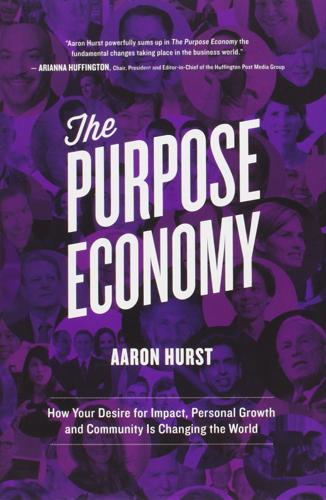
The Purpose Economy: How Your Desire for Impact, Personal Growth and Community Is Changing the World
by
Aaron Hurst
Published 31 Aug 2013
It is right-sizing, to steal the term back from big business. From TaskRabbit to Elance, technology is changing the way we can earn a living, but also changing the way employers think about labor. More than 17 percent of the fourteen million self-employed workers in the United States consider themselves independent contractors or freelancers.1 Fractional Labor, as it sometimes called, is concentrated heavily in sales, IT, creative services, marketing, and operations. As Generation X and Millennials have entered the workforce, more professionals of their generations (and even older) have been seeking alternative ways to do work that is meaningful, powered by Internet 3.0.
…
Seeking Purpose Outside the Organization Rather than just volunteering to find purpose outside their day job, many professionals are leaving the role of employee all together and living in a constant state of start-up. As of 2009, more than 17 percent of the fourteen million self-employed workers in the United States considered themselves independent contractors or freelancers, concentrated heavily in sales, IT, creative services, marketing, and operations.4 The drive to be more purposeful explains much of the momentum behind the massive exodus from mainstream corporate life. As Generation X and Millennials have entered the workforce, more professionals have created alternative ways to do work that is meaningful.
…
There are, of course, plenty of people who have become freelancers out of necessity, especially in the wake of the financial crisis, and Fabio points out they tend to have a different perspective about their work, seeing it still as a more conventional job. But for those who have come to freelance out of choice, he sees that they’ve done so largely out of the desire to gain more control over their destiny, and in turn, their source of purpose. When asked if they would prefer a more traditional work environment, fewer than one in ten independent contractors indicated they would prefer to return to a traditional work arrangement. Elance refers to the shift to freelancing as the “work differently,” and finds that so many have chosen the freelance path because they are put off by the strictures of corporate life and want to have the latitude to select their clients.

Rentier Capitalism: Who Owns the Economy, and Who Pays for It?
by
Brett Christophers
Published 17 Nov 2020
But Forde and his colleagues found that, even where platform workers are theoretically entitled to employee benefits, in many cases ‘relatively low levels of hours or income mean that in practice they may not reach the necessary income or hours thresholds to access social protection’.84 Annarosa Pesole and her co-authors’ 2018 study of platform workers in Europe (again, including the UK) came to similar conclusions: [D]igital labour platforms typically rely on a workforce of independent contractors whose conditions of employment, representation and social protection are at best unclear, at worst clearly disadvantaged. In most cases, independent contractors are not covered by the labour rights and welfare support applicable to dependent employment. Health and safety regulations and social security contributions are typically the responsibility of independent contractors alone. Both the platforms and the platforms’ clients tend to discharge themselves of any responsibility with respect to the conditions of work and employment of the independent contractors. This can result in a cheaper and more flexible supply of labour services, but at the expense of precarious conditions of work and employment for workers.85 If the UK government was minded to turn a blind eye to such conclusions, it will have become harder for it to do so since the publication in February 2018 of a report on the experiences of individuals in the gig economy specifically in the UK, which came to similarly damning conclusions – albeit featherbedded with the odd nugget of positivity – and which was commissioned, what is more, by its own Department for Business, Energy and Industrial Strategy.
…
In the United States, a ‘1099 job’ is the colloquial term for a job performed by a self-employed contractor or separate business, as opposed to an employee; the ‘1099’ refers to the number of the Internal Revenue Service form that companies use to report payments to independent contractors and other non-salary payments. Thus, the ‘1099 economy’ invoked by Kenney and Zysman is an economy in which a significant volume of labour is provided by independent contractors rather than by employees. 78. On such resistance, see especially the writing of Callum Cant – for example, ‘The Fast Food Strikes Put Britain’s Exploited Service Workers on the Offensive’, 12 October 2018, at vice.com. 79.

The Lonely Century: How Isolation Imperils Our Future
by
Noreena Hertz
Published 13 May 2020
Matthew Haag and Patrick McGeehan, ‘Uber Fined $649 Million for Saying Drivers Aren’t Employees’, New York Times, 14 November 2019, https://www.nytimes. com/2019/11/14/nyregion/uber-new-jersey-drivers.html. 68 State of California, ‘Assembly Bill no. 5’, published 19 September 2019, https://leginfo.legislature.ca.gov/faces/billTextClient.xhtml?bill_id=201920200AB5; ‘ABC is not as easy as 1-2-3 – Which independent contractor classification test applies to whom after AB5?’, Porter Simon, 19 December 2019, https://www.portersimon.com/abc-is-not-as-easy-as-1-2-3-which-independent-contractor-classification-test-applies-to-whom-after-ab5/. 69 Kate Conger, ‘California Sues Uber and Lyft, Claiming Workers Are Misclassified’, New York Times, 5 May 2020, https://www.nytimes.com/2020/05/05/technology/california-uber-lyft-lawsuit.html. 70 ‘3F reaches groundbreaking collective agreement with platform company Hilfr’, Uni Global Union, 18 September 2018, https://www.uniglobalunion.org/news/3f-reaches-groundbreaking-collective-agreement-platform-company-hilfr. 71 GMB Union, ‘Hermes and GMB in groundbreaking gig economy deal’, 4 February 2019, https://www.gmb.org.uk/news/hermes-gmb-groundbreaking-gig-economy-deal; see also Robert Wright, ‘Hermes couriers awarded union recognition in gig economy first’, Financial Times, 4 February 2019, https://www.ft.com/content/255950d2-264d-11e9-b329-c7e6ceb5ffdf. 72 Liz Alderman, ‘Amazon Loses Appeal of French Order to Stop Selling Nonessential Items’, New York Times, 24 April 2020, https://www.nytimes.com/2020/04/24/business/amazon-france-unions-coronavirus.html. 73 Even then, the kits took weeks to arrive, the ordering process was mired in bureaucracy, and the number of kits was limited.
…
Now, chipped employees can use their hands as contactless ID cards, simply waving them in front of a scanner for entry to the building and secure areas.64 Whilst in this case participation was completely voluntary, and there are no reported cases of employers anywhere making this compulsory, the very prospect of companies implanting devices in employees’ bodies is highly disconcerting and was enough to inspire legislation in Arkansas and Indiana that would ban any forced microchipping of employees.65 Legal scholars have even begun to raise the question of whether laws may be required to protect employees who decline ‘voluntary’ chipping.66 When it comes to gig economy workers – who have to contend not only with especially demoralising forms of surveillance but also in many cases with low pay, precarious employ and only the most skeletal worker rights – what is crucial is that digital platforms not be allowed to persist in claiming that their workers are not ‘real’ employees but independent contractors who are not subject to rights such as sick pay and holiday. A distinction needs to be made here between those who use the platforms as ways to dip in and out of employ and top up their earnings, and those for whom the platform is essentially their full-time employer. New legislation approved by the European Parliament in April 2019, and a landmark bill passed in California that took effect in January 2020, make significant progress on these fronts.67 The California bill presumes a worker is an employee unless the employer can show that the worker is free from the control of the company, does work outside the company’s core business and has an independent enterprise in the same nature as the company.68 And in May 2020, California’s attorney general and a coalition of city attorneys in the state, frustrated that Uber and Lyft had not only not taken steps to reclassify their drivers but had also poured millions of dollars into a campaign for a ballot initiative that would exempt them from complying with the law, sued both the companies for wrongly classifying their drivers as independent contractors in violation of this new law.69 The case, at the time of writing, is ongoing.
…
New legislation approved by the European Parliament in April 2019, and a landmark bill passed in California that took effect in January 2020, make significant progress on these fronts.67 The California bill presumes a worker is an employee unless the employer can show that the worker is free from the control of the company, does work outside the company’s core business and has an independent enterprise in the same nature as the company.68 And in May 2020, California’s attorney general and a coalition of city attorneys in the state, frustrated that Uber and Lyft had not only not taken steps to reclassify their drivers but had also poured millions of dollars into a campaign for a ballot initiative that would exempt them from complying with the law, sued both the companies for wrongly classifying their drivers as independent contractors in violation of this new law.69 The case, at the time of writing, is ongoing. Critical, too, is that all workers are able to organise and find strength and solidarity in numbers, however their employ is categorised. At present very few gig economy, temporary or shortterm contract workers are unionised.
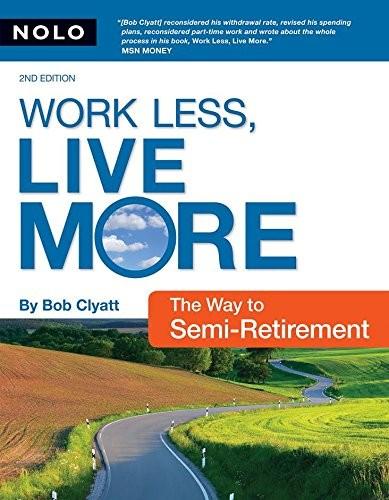
Work Less, Live More: The Way to Semi-Retirement
by
Robert Clyatt
Published 28 Sep 2007
. $34.99 DEPO Tax Savvy for Small Business............................................................................................................ $36.99 SAVVY Whoops! I’m in Business.................................................................................................................. $19.99 WHOO Working for Yourself: Law & Taxes for Independent Contractors, Freelancers & Consultants............. $39.99 WAGE Working With Independent Contractors (Book w/CD-ROM)........................................................... $29.99 HICI Your Crafts Business: A Legal Guide (Book w/CD-ROM)................................................................. $26.99 VART Your Limited Liability Company: An Operating Manual (Book w/CD-ROM)................................... $49.99 LOP Your Rights in the Workplace.......................................................................................................... $29.99 YRW CONSUMER How to Win Your Personal Injury Claim.......................................................................................... $29.99 PICL Nolo’s Encyclopedia of Everyday Law............................................................................................... $29.99 EVL Nolo’s Guide to California Law......................................................................................................... $24.99 CLAW ESTATE PLANNING & PROBATE 8 Ways to Avoid Probate ................................................................................................................. $19.99 PRAV Estate Planning Basics . ................................................................................................................... $21.99 ESPN The Executor’s Guide: Settling a Loved One’s Estate or Trust........................................................... $34.99 EXEC How to Probate an Estate in California............................................................................................. $49.99 PAE Make Your Own Living Trust (Book w/CD-ROM)........................................................................... $39.99 LITR Nolo’s Simple Will Book (Book w/CD-ROM).................................................................................. $36.99 SWIL Plan Your Estate............................................................................................................................... $44.99 NEST Quick & Legal Will Book (Book w/CD-ROM) ................................................................................ $19.99 QUIC Special Needs Trust: Protect Your Child’s Financial Future (Book w/CD-ROM)............................... $34.99 SPNT ORDER 24 HOURS A DAY @ www.nolo.com call 800-728-3555 • Mail or fax the order form in this book Price Code FAMILY MATTERS Always Dad...................................................................................................................................... $16.99 DIFA Building a Parenting Agreement That Works.................................................................................. $24.99 CUST The Complete IEP Guide................................................................................................................. $34.99 IEP Divorce & Money: How to Make the Best Financial Decisions During Divorce................................. $34.99 DIMO Divorce Without Court.................................................................................................................... $29.99 DWCT Do Your Own California Adoption: Nolo’s Guide for Stepparents & Domestic Partners (Book w/CD-ROM)....................................................................................................................... $34.99 ADOP Every Dog’s Legal Guide: A Must-Have for Your Owner.................................................................. $19.99 DOG Get a Life: You Don’t Need a Million to Retire Well........................................................................ $24.99 LIFE The Guardianship Book for California.............................................................................................. $34.99 GB A Legal Guide for Lesbian and Gay Couples..................................................................................... $34.99 LG Living Together: A Legal Guide (Book w/CD-ROM)........................................................................ $34.99 LTK Nolo’s IEP Guide: Learning Disabilities........................................................................................... $29.99 IELD Parent Savvy..................................................................................................................................... $19.99 PRNT Prenuptial Agreements: How to Write a Fair & Lasting Contract (Book w/CD-ROM)...................... $34.99 PNUP Work Less, Live More....................................................................................................................... $17.99 RECL GOING TO COURT Beat Your Ticket: Go To Court & Win!
…
And your children’s earned income may also be used to fund a Roth IRA, as discussed below. Resource For a detailed discussion of how to find and take advantage of all appropriate tax deductions for your business, see Deduct It! Lower Your Small Business Taxes; Working for Yourself: Law & Taxes for Independent Contractors, Freelancers & Consultants; or Home Business Tax Deductions: Keep What You Earn, all by Stephen Fishman (Nolo). And if you own rental property, see Every Landlord’s Tax Deduction Guide, also by Stephen Fishman (Nolo). A good summary table of tax rates, exemptions, contribution limits, and other provisions is available from Fidelity at http://personal.fidelity.com/ planning/tax/pdf/fidmatrix.pdf. 248 | Work Less, Live More And detailed information, including more ways for semi-retirees to reduce income taxes and worksheets for the federal tax estimation calculator at http://turbotax.intuit.com/tax_help/tax_calculators/tax_estimator.jhtml, is available in The Work Less, Live More Workbook: Get Ready for SemiRetirement, by Bob Clyatt (Nolo).
…
. $69.99 CNP California Workers’ Comp: How to Take Charge When You’re Injured on the Job............................... $34.99 WORK The Complete Guide to Buying a Business (Book w/CD-ROM)....................................................... $24.99 BUYBU The Complete Guide to Selling a Business (Book w/CD-ROM)........................................................ $24.99 SELBU Consultant & Independent Contractor Agreements (Book w/CD-ROM).......................................... $29.99 CICA The Corporate Records Handbook (Book w/CD-ROM).................................................................... $69.99 CORMI Create Your Own Employee Handbook (Book w/CD-ROM)............................................................. $49.99 EMHA Dealing With Problem Employees................................................................................................... $44.99 PROBM Deduct It!
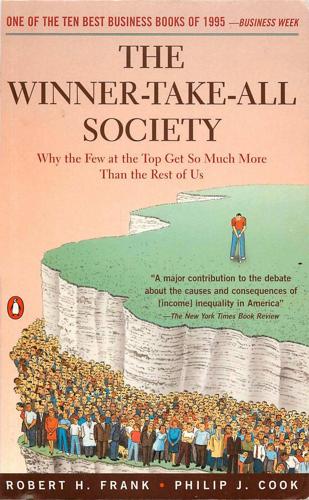
The Winner-Take-All Society: Why the Few at the Top Get So Much More Than the Rest of Us
by
Robert H. Frank, Philip J. Cook
Published 2 May 2011
The Growth ofWinner-Take'-AII Markets 57 The Rise of Independent Contracting Several factors have caused traditional employment contracts to be in creasingly replaced by independent-contractor relationships. Electronic communications, for example, make it possible to work in remote sites and still remain in effective contact with other team members. Advances in infonnation processing have also reduced the overhead costs associ ated with independent-contractor status. Computer software can now bill clients electronically, keep accounts in order, and file tax returns. The rising costs of health care and other fringe benefits, together with increasing exposure to tort liability, have given £inns additional incen tives to deal with independent contractors rather than employees.
…
When people work as employees of large firms, their com pensation is typically detennined by bureaucratic personnel formulas that link pay to seniority, education, job title, and a variety of other easily measured characteristics. Within any given category, pay usually varies little among individuals, even in the face of substantial individ ual variations in productivity. Under this traditional system, the most productive employees in a group effectively subsidize the least pro ductive.21 The move to independent-contractor status eliminates this subsidy, and enables the most productive individuals to come much closer to capturing their full market value. Changes in the Level and Distribution of Income Although the rate of income growth has declined since the early 1970s, real per capita income in the United States was nonetheless more than 1 1 percent higher in 1989 than it had been a decade earlier.
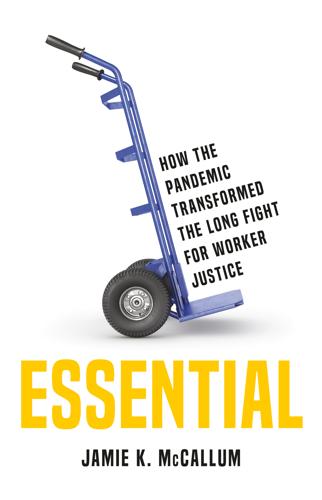
Essential: How the Pandemic Transformed the Long Fight for Worker Justice
by
Jamie K. McCallum
Published 15 Nov 2022
The entire rideshare economy—where drivers are independent contractors and not employees of Uber, Lyft, etc.—is an example of a fissured industry. Many gig workers slogged through the pandemic, but most of their services were rendered impossible during the lockdown phase. As they trickled back to work, they found themselves facing a new employment reality. In November 2020, California voters faced Proposition 22. Drafted by major gig company lawyers, its aim was to escape a 2018 state law that classified gig workers as employees rather than independent contractors. UC Berkeley polling had shown that just a year earlier, a mere 39 percent of Californians supported Prop 22.
…
Monthly measurements as dots, recessions in gray In 1990, we had a roughly equal division between high- and low-quality jobs. Since then, 63 percent of the jobs created have been low-quality. Why? A major cause of declining job quality, and the risk shift to workers, has been “workplace fissuring,” economist David Weil’s coinage for the trend in major American business to outsource to independent contractors what are deemed fringe services, like janitorial, food service, and delivery.30 Consider a dietary worker at a national nursing home chain. The property where she works is owned by a private equity firm. Her day-to-day duties are supervised by a third party, which also supervises dietary staff in colleges, universities, and hotels across the country.
…
Press, “With Prop 22’s Passage in California, Tech Companies Are Just Writing Their Own Laws Now,” Jacobin, November 5, 2020, https://jacobinmag.com/2020/11/proposition-22-california-uber-lyft-gig-employee. 38. George Skelton, “It’s No Wonder Hundreds of Millions Have Been Spent on Prop. 22. A Lot Is at Stake,” Los Angeles Times, October 16, 2020, www.latimes.com/california/story/2020-10-16/skelton-proposition-22-uber-lyft-independent-contractors. 39. Sam Harnett, “Prop. 22 Explained: Why Gig Companies Are Spending Huge Money on an Unprecedented Measure,” KQED, October 26, 2020, www.kqed.org/news/11843123/prop-22-explained-why-gig-companies-are-spending-huge-money-on-an-unprecedented-measure. 40. Alexander Sammon, “Prop 22 Is Here, and It’s Already Worse Than Expected,” American Prospect, January 15, 2021, https://prospect.org/api/content/2967b920-56ac-11eb-904a-1244d5f7c7c6/. 41.

How I Found Freedom in an Unfree World: A Handbook for Personal Liberty
by
Harry Browne
Published 1 Jan 1973
He could claim as business deductions part of his household expenses, telephone bills, utility bills, car expenses, and other things that are normally considered to be personal expenses. Even with no income tax withheld, very few of them owed anything in taxes at the end of the year. None of them bothered to file quarterly tax estimates, and none of them ran into any trouble from the Internal Revenue Service. The simple change from employee status to that of independent contractor resulted in lower taxes for everyone concerned. It's a small and common examplebut there are probably millions of people who could use that loophole and don't. It's well known that there are thousands of millionaires who don't pay income taxes. Some of them avoid property taxes as well.
…
The owners of those businesses avoid the normal problems that most businessmen take for granted. "Employees" (suppliers) are more devoted to their work, very little supervision is required, costs are always clearly discernible and the lowest available commensurate with quality. I mentioned in Chapter 16 that I had avoided payroll taxes by transforming employees into independent contractors. That was only one of the benefits. The business had been losing money so fast it was about to go under. After eliminating all employees (including myself) and contracting for services needed, the business was in the black. Those who continued to work with me made more money per hour worked, and I was able to cut my working time by about half.
…
VISCOTT There is a tide in the affairs of men, Which, taken at the flood, leads on to fortune; Omitted, all the voyage of their life Is bound in shallows and in miseries. SHAKESPEARE 31 A Fresh Start (Part II) THE STARTING FROM ZERO TECHNIQUE can be used on a smaller scale to straighten out problems in any specific area of your life. I've mentioned before the way I changed a business from an employee-employer structure to the use of independent contractors. The employees and myself all benefited from the tax advantages, the free time provided, and the lesser amount of supervision required. This plan came about as a result of using the starting-from-zero technique. The business was operating at a loss and seemed hopeless. Every time I tried to cut costs, I got nowhereevery expense seemed to be a necessity.

System Error: Where Big Tech Went Wrong and How We Can Reboot
by
Rob Reich
,
Mehran Sahami
and
Jeremy M. Weinstein
Published 6 Sep 2021
One of the recent battlefronts in tech companies’ push to influence regulation comes from California’s effort to reclassify gig economy workers, such as Uber and Lyft drivers and delivery people for companies such as DoorDash, as employees rather than contractors of the firms they work for. In 2019, the California legislature passed Assembly Bill 5 (AB 5), with the aim of reclassifying thousands of independent contractors as employees, thereby guaranteeing them numerous benefits such as minimum wage, unemployment insurance, and sick leave. The bill was a textbook case of government seeking to contain a negative externality created by a profit-seeking company. Assemblywoman Lorena Gonzalez, an author of the bill, described her motivation: “As lawmakers, we will not in good conscience allow free-riding businesses to continue to pass their own business costs onto taxpayers and workers.”
…
First, they tried to get an injunction against the new law, delaying its effective date. They were denied. Then they threatened to shut down their operations in the state. In the meantime, they worked on producing a ballot initiative, Proposition 22, that defined “app-based transportation (rideshare) and delivery drivers as independent contractors and [the adoption of] labor and wage policies specific to app-based drivers and companies,” effectively exempting them from the requirements of AB 5. A consortium of tech companies, including Uber, Lyft, and DoorDash, raised more than $200 million to get Prop 22 onto the ballot and sing its praises to the electorate, including pushing smartphone alerts to millions of their users, encouraging them to vote for the proposition.
…
“Washingtonization of Brussels”: Adam Satariano and Matina Stevis-Gridneff, “Big Tech Turns Its Lobbyists Loose on Europe, Alarming Regulators,” New York Times, December 14, 2020, https://www.nytimes.com/2020/12/14/technology/big-tech-lobbying-europe.html. “As lawmakers, we will not”: Matthew De Silva and Alison Griswold, “The California Senate Has Voted to End the Gig Economy as We Know It,” Quartz, September 11, 2019, https://qz.com/1706754/california-senate-passes-ab5-to-turn-independent-contractors-into-employees/. “app-based transportation (rideshare)”: “California Proposition 22, App-Based Drivers as Contractors and Labor Policies Initiative (2020),” Ballotpedia, https://ballotpedia.org/California_Proposition_22,_App-Based_Drivers_as_Contractors_and_Labor_Policies_Initiative_(2020).

Live Work Work Work Die: A Journey Into the Savage Heart of Silicon Valley
by
Corey Pein
Published 23 Apr 2018
She was the model of a twenty-first-century microentrepreneur, which is to say she was a grossly exploited worker. She lived in Oakland but woke up early to drive to central San Francisco, where she picked up two shifts as a public school bus driver. She drove for Lyft on her lunch break and again after work until bedtime. Both employers classified Simone as a part-time independent contractor, and neither seemed at all concerned about her level of fatigue behind the wheel. She wasn’t expecting a raise. “I want to wean away from Lyft,” she told me. “I’m just making someone else rich. I know I could be putting that time into my own company.” In Hollywood, everybody has an unfinished script.
…
LinkedIn—which set a historic sales price record following Microsoft’s $26 billion buyout in 2016—conducted a galling spam campaign that was critical to its growth and settled a class-action lawsuit over it for $13 million. TripAdvisor was officially sanctioned in the UN for misleading advertising, and settled a claim that it classified its employees as independent contractors. Groupon settled various consumer protection lawsuits. This outlaw tradition carried forward to the second wave of postmillennial unicorns, which picked up unstoppable momentum in 2004 or 2005. Uber, the unlicensed taxi service launched in 2010, proved once and for all that a few people really can change the world using nothing more than powerful connections, billions of dollars in capital, and a willingness to trample long-standing norms such as the nigh-universal requirement for taxi companies to obtain operating permits and insurance and to certify their drivers for the sake of public safety.
…
Uber, the unlicensed taxi service launched in 2010, proved once and for all that a few people really can change the world using nothing more than powerful connections, billions of dollars in capital, and a willingness to trample long-standing norms such as the nigh-universal requirement for taxi companies to obtain operating permits and insurance and to certify their drivers for the sake of public safety. In the early days, the company operated under the name UberCab, promoting itself as a “one-click” service to hire “licensed, professional drivers”—a misleading claim, as the company itself was unlicensed and recruited anyone who happened to own a car. By classifying its drivers as “independent contractors” rather than employees, the company shrugged off the burden of minimum wage laws, payroll taxes, health insurance, and other obligations. This brazen startup raised $50 million in several early investment rounds, then pressured state regulators and elected officials until its service was effectively legalized.

Care: The Highest Stage of Capitalism
by
Premilla Nadasen
Published 10 Oct 2023
Hiring temporary workers, particularly workers from abroad, has become a means of profit, exploitation, and labor trafficking—not only for companies looking for cheap labor but also for agencies that match workers and employers. Temporary and subcontracted workers, both US citizens and noncitizens, are part of a growing class of precarious workers that includes outsourced workers, independent contractors, consultants, and foreign and temporary workers. According to a survey by Staffing Industry Analysts, 51 million American workers—about 35 percent of the labor force—were contingent as of 2020.35 This includes self-employed workers, people placed by staffing agencies, people hired directly by companies, and people hired on digital platforms.
…
There has been a proliferation of small-scale, precarious work arrangements in which workers are hired through a third-party agency or hired as contingent labor. More people, whether they are drivers, college teachers, factory workers, or accountants, tend to work part time, intermittently, or as independent contractors. And, because of the defunding of the regulatory apparatus, labor laws are inadequately enforced—compounded by the climate of fear and surveillance that discourages workers from addressing workplace violations regardless. The precarious conditions of employment in the US today have been a reality for workers of color for a long time.
…
Domestic worker organizing, for example, offers a model of resistance applicable to a growing number of precarious workers in a neoliberal economy. The declining status and increasing precarity of other workers under neoliberalism is coming to resemble that of domestic workers, who have always been gig workers and independent contractors. The organizing strategies employed by domestic workers and other social reproductive workers point the way toward new forms of working-class protest. There is much to learn about organizing precarious workers from this group of people that has struggled historically to claim the benefits of social citizenship.
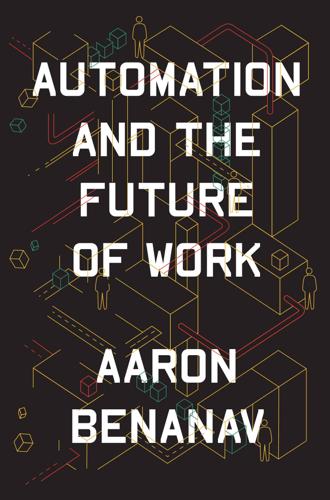
Automation and the Future of Work
by
Aaron Benanav
Published 3 Nov 2020
Some firms do utilize alternative working arrangements to get around US labor law—witness the small but significant boom in gig-economy jobs, like Uber and Lyft, which offer work through online platforms as a way of disguising their employees as independent contractors.12 But when all is said and done, just 10 percent of US workers were employed in such arrangements in 2017, including as independent contractors, on-call workers, temp agency workers, and fixed-contract workers.13 Set against this American case, the employment landscape in European and wealthy East Asian countries is more complicated. In these regions, postwar labor market institutions were mostly designed not by left-wing governments but by right-wing politicians who emphasized the importance of national-imperial identities, the formation of male-breadwinner households, and the maintenance of relatively fixed workplace hierarchies.14 In return for accepting corporatist arrangements, male heads of households received substantial job protections: unlike in the United States, regularly employed workers were not hired and fired at will.
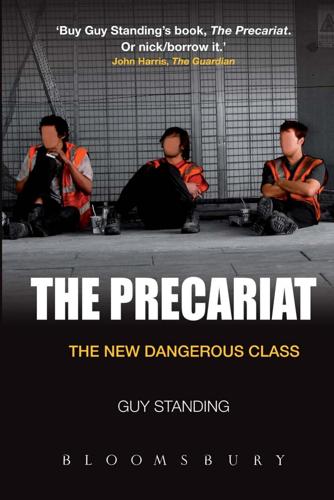
The Precariat: The New Dangerous Class
by
Guy Standing
Published 27 Feb 2011
Thus, in Germany, shifting more people into ‘mini-jobs’ has maintained the illusion of high employment and led some economists to make foolish claims about a German employment miracle after the financial crash. Other categories overlapping with the precariat are ‘independent contractors’ and ‘dependent contractors’. There is no equivalence with the precariat here, since many contractors are secure in some respects and have 16 THE PRECARIAT a strong occupational identity. One thinks of the self-employed dentist or accountant. But differentiating dependent from independent contractors has caused headaches for labour lawyers everywhere. There have been interminable debates over how to distinguish between those who provide services and those who provide service labour, and between those dependent on some intermediary and those who are concealed employees.
…
(Maltby) 138 Canada 79, 114 capital funds 176–7 Capitalism and Freedom (Friedman) 156 care work 61, 86, 125–6 careers, leisure 129 cash transfers 177 see also conditional cash transfers (CCTs) CCTs (conditional cash transfer schemes) 140 Cerasa, Claudio 149 Channel 4, call centre programme (UK) 16 charities 53 children, care for 125 China 28 and contractualisation 37 criminalisation 88 deliberative democracy 181 education 73 immigrants to Italy 4–5 invasion of privacy 135 migrants 96, 106–9, 109–10 old agers 83 191 192 INDEX China 28 (Continued) Shenzhen 133, 137 and time 115 wages 43 youth 76 see also Chindia China Plus One 28 Chindia 26, 27–9, 83 see also China Chrysler Group LLC 43 circulants 90, 92 Citizens United vs Federal Election Commission (US) 152–3 civil rights 14, 94 class, social 6–8, 66–7 Coase, Ronald 29 Cohen, Daniel 57, 66, 69 collaborative bargaining 168 collective attention deficit syndrome 127 commodification of companies 29–31 of education 67–72 and globalisation 26 labour 161–2 of management 40 of politics 148–53 re- 41–2 conditional cash transfers (CCTs) 140 see also cash transfers conditionality 140, 175 and basic income 172–3 and workfare 143–5, 166–7 connectivity, and youth 127 contract status 35, 36, 37, 44, 51, 61 contractors, independent/ dependent 15–16 contractualisation 37 counselling for stress 126 Crawford, Matthew 70 credit 44 crime 5, 129–30 criminalisation 14, 145, 146 crystallised intelligence 85 cultural rights 14 de Tocqueville, Alexis 145 de-industrialisation 5, 37–8 debt, and youth 73–4 Delfanti, Alessandro 78 deliberative democracy 180–1, 182 denizens 14, 93–102, 105, 113, 117, 157–8 Denmark 150 dependent/independent contractors 15–16 deskilling 17, 33, 40, 124 developing countries 12, 27, 60, 65, 105–9 disabled people 86–7, 89, 170 discrimination age 84–5 disability 81 gender 60, 123 genetic profiling 136–7 and migrants 99, 101–2 disengagement, political 24 distance working 38, 53 dole (UK) 45 Duncan Smith, Iain 143 Durkeim, Emile 20 economic security 157, 171, 173–6 The Economist 17–18, 33, 52, 137 economy, shadow 56–7 education 10, 67–73, 135–6, 159–60 Ehrenreich, Barbara 21, 170–1 elites 7, 22, 24, 40, 50 criminality 152 and democracy 181 ethics 165 Italian 148 and the Tea Party (US) 151 empathy 22–3, 137 employment agencies 33 employment security 10b, 11, 17, 36, 51, 117 Endarkenment 70 Enlightenment 24, 70 enterprise benefits 11, 12 environmental issues 167 environmental refugees 93 Esping-Andersen, G. 41 ethics 23–4, 121–2, 165 ethnic minorities 86 EuroMayDay 1, 2, 3, 167 European Union (EU) 2, 39, 146, 147 and migrants 97, 103, 105 and pensions 80 see also individual countries export processing zones 105–6 Facebook 127, 134, 135 failed occupationality 21 INDEX family 27, 44, 60, 65, 126 fear, used for control 32 fictitious decommodification 41 financial capital 171, 176–7 financial sector jobs 39–40 financial shock 2008-9 see Great Recession Financial Times 44, 55, 121, 155 firing workers 31–2 Fishkin, James 180 Fletcher, Bill 170–1 flexibility 18 labour 23–4, 31–6, 53, 60, 61, 65 labour market 6, 120–1, 170 Ford Motor Company 42, 43 Foucault, Michel 88, 133 Foxconn 28–9, 43, 105, 137 see also Shenzhen France criminalisation 88 de-industrialisation 38 education 69 leisure 129 migrants 95, 97, 101–2, 114 neo-fascism 149 and old agers 85 pensions 79 shadow economy 56 Telecom 11 youth 65–6 fraternity 12, 22, 155 freedom 155, 167–70, 172 freelance see temporary employment freeter unions 9 Friedman, Milton 39, 156 functional flexibility 36–8, 52 furloughs 36, 50 gays 63–4 General Motors (GM) 42, 43, 54 genetic profiling 136 Germany 9 de-industrialisation 38 disengagement with jobs 24 migrants 91, 95, 100–1, 114 pensions 79 shadow economy 56 temporary employment 15, 35 wages 40 and women 62 youth and apprenticeships 72–3 193 Glen Beck’s Common Sense (Beck) 151 Global Transformation 26, 27–31, 91, 115 globalisation 5–7, 27–31, 116, 148 and commodification 26 and criminalisation 87–8 and temporary employment 34 Google Street View 134 Gorz, Andre 7 grants, leisure 180–2 Great Recession 4, 49–51, 63, 176 and education 71 and migrants 102 and old agers 82 and pensions 80 and youth 77–8 Greece 52, 56, 117, 181 grinners/groaners 59, 83–4 Habermas, Jürgen 179 Haidt, J. 23 Hamburg (Germany) 3 happiness 140–1, 162 Hardt, M. 130 Hayek, Friedrich 39 health 51, 70, 120, 126 Hitachi 84 Hobsbawm, Eric 3 hormones 136 hot desking 53 Howker, Ed 65 Human Rights Watch 106 Hungary 149 Hurst, Erik 128 Hyatt Hotels 32 IBM 38, 137 identity 9 digital 134–5 work-based 12, 15–16, 23, 158–9, 163 Ignatieff, Michael 88 illegal migrants 96–8 In Praise of Idleness (Russell) 141, 161 income security 10b, 30, 40, 44 independent/dependent contractors 15–16 India 50, 83, 112, 140 see also Chindia individuality 3, 19, 122 informal status 6–7, 57, 60, 96, 119 inshored/offshored labour 30, 36, 37 194 INDEX International Herald Tribune 21 internet 18, 127, 139, 180, 181 surveillance 134–5, 138 interns 16, 36, 75–6 invasion of privacy 133–5, 167 Ireland 52–3, 77 isolation of workers 38 Italy education 69 neo-fascism 148–9 pensions 79 Prato 4–5 and the public sector 52, 53 shadow economy 56 and temporary employment 34 youth 64 Japan 2, 30 and Chinese migrants 110 commodification of companies 30 and migrants 102, 103 multiple job holding 119–20 neo-fascism 152 pensions 80 salariat 17 subsidies 84 and temporary employment 15, 32–3, 34–5, 41 and youth 66, 74, 76, 77 job security 10b, 11, 36–8 Kellaway, Lucy 83–4 Keynes, John Maynard 161 Kierkegaard, Søren 155 Klein, Naomi 148 knowledge 32, 117, 124–5, 171 labour 13, 115, 161–2 labour brokers 33–4, 49, 110, 111, 167, 168 labour flexibility 23–4, 31–45 labour intensification 119–20 labour market flexibility 6 labour security 10–11, 10b, 31 Laos 112 lay-offs see furloughs Lee Changshik 21 legal knowledge 124–5 legal processing 50 Legal Services Act of 2007 (UK) (Tesco Law) 40 leisure 13, 128–30 see also play lesbians 63–4 Liberal Republic, The 181 Lloyds Banking Group 50–1 localism 181–2 long-term migrants 100–2 loyalty 53, 58, 74–5 McDonald’s 33 McNealy, Scott 69 Malik, Shiv 65 Maltby, Lewis 138 Manafort, Paul 152 management, commodification of 40 Mandelson, Peter, Baron 68 Maroni, Roberto 97 marriage 64–5, 92 Martin, Paul 141 Marx, Karl 161 masculinity, role models for youth 63–5 Massachusetts Institute of Technology 68–9 Mayhew, Les 81 Mead, Lawrence 143 mergers, triangular 30 Mexico 91 Middle East 109 migrants 2, 13–14, 25, 90–3, 145–6 and basic income 172 and conditionality 144 denizens 93–102, 157–8 government organised 109–13 internal 105–9 and queuing systems 103–5 and recession 102–3 Mill, John Stuart 160 Morris, William 160, 161 Morrison, Catriona 127 multinational corporations 28, 92 multitasking 19, 126–7 National Broadband Plan 134 near-sourcing/shoring 36 Negri, A. 130 neo-fascism 25, 147–53, 159, 175, 183 Netherlands 39, 79, 114, 149–50 New Thought Movement 21 New York Times 69, 119 News from Nowhere (Morris) 161 Niemöller, Martin 182 INDEX non-refoulement 93 Nudge (Sunstein/Thaler) 138–9 nudging 138–40, 155–6, 165, 167, 172, 178, 182 numerical flexibility 31–6 Obama, Barack 73, 138–9, 147, 148 Observer, The 20 occupations associations of 169–70 dismantling of 38–40 freedom in 162–4 obsolescence in 124 offshored/inshored labour 30, 36, 37 old agers 59, 79– 86, 89 old-age dependency ratio 80–1 Organisation for Economic Co-operation and Development (OECD) 27 origins of the precariat 1–5 outsourcing 29, 30, 33, 36, 37, 49 Paine, Thomas 173 panopticon society 132–40, 142–3 Parent Motivators (UK) 139–40 part-time employment 15, 35–6, 51, 61, 82 Pasona 33 paternalism 17, 29, 137, 153, 178, 182 nudging 138–40, 155–6, 165, 167, 172, 178, 182 pensions 42, 51, 52, 76–7, 79–81, 84–6 PepsiCo 137 personal deportment skills 123 Philippines 109 Phoenix, University of 71 Pigou, Arthur 117, 125 play 13, 115, 117, 128, 141 pleasure 141 Polanyi, K. 163, 169 political engagement/disengagement 24, 147 Portugal 52, 56 positive thinking 21, 86 Prato (Italy) 4–5 precariat (definition) 6, 7–13 precariato 9 precariatisation 16–18 precarity traps 48–9, 73–5, 114, 129, 144, 178 pride 22 prisoners 112, 146 privacy, invasion of 133–5, 167 private benefits 11 productivity, and old age 85 proficians 7–8, 15, 164 proletariat 7 protectionism 27, 54 public sector 51–4 qualifications 95 queuing systems 103–5 racism 97–8, 101, 114, 149 Randstad 49 re-commodification 41–2 recession see Great Recession refugees 92, 93, 96 regulation 23, 26, 39–40, 84, 171 Reimagining Socialism (Ehrenreich/ Fletcher) 170–1 remote working 38, 53 rentier economies 27, 176 representation security 10b, 31 retirement 42, 80–3 rights 14, 94, 145, 163, 164–5, 169 see also denizens risk management 178 Robin Hood gang 3 role models for youth 63–5 Roma 97, 149 Rossington, John 100 Rothman, David 88 Russell, Bertrand 141, 161 Russell, Lucie 64 Russia 88, 115 salariat 7, 8, 14, 17, 32 Santelli, Rick 150 Sarkozy, Nicolas 69, 97, 149 Sarrazin, Thilo 101 Schachar, Ayelet 177 Schneider, Friedrich 56 Schwarzenegger, Arnold 71 seasonal migrants 98–100 security, economic 157, 171, 173–6 self-employment 15–16, 66, 82 self-esteem 21 self-exploitation 20, 122–3 self-production 11 self-regulation 23, 39 self-service 125 services 37–8, 63 195 196 INDEX Sex, Drugs and Chocolate: The Science of Pleasure (Martin) 141 sex services 63 sexism, reverse 123 shadow economy 56–7, 91 Shenzhen (China) 133, 137 see also Foxconn Shop Class as Soulcraft (Crawford) 70 short-time compensation schemes 55–6 side-jobs 119–20 skill reproduction security 10b skills 157, 176 development of 30, 31, 40 personal deportment 123 tertiary 121–4 Skirbekk, Vegard 85 Smarsh 138 Smile or Die (Ehrenreich) 21 Smith, Adam 71 snowball theory 78 social class 6–8, 66–7 social factory 38, 118, 132 social income 11–12, 40–5, 51, 66 social insurance 22, 104 social memory 12, 23, 129 social mobility 23, 57–8, 175 social networking sites 137 see also Facebook social rights 14 social worth 21 sousveillance 134, 135 South Africa, and migrants 91, 98 South Korea 15, 55, 61, 75 space, public 171, 179–80 Spain BBVA 50 migrants 94 and migrants 102 pensions 79 and the public sector 53 shadow economy 55–6 temporary employment 35 Speenhamland system 55, 143 staffing agencies 33–4, 49, 110, 111, 167, 168 state benefits 11, 12 status 8, 21, 32–3, 94 status discord 10 status frustration 10, 21, 63, 67, 77, 78, 79, 89, 114, 123, 160 stress 19, 126, 141, 141–3 subsidies 44, 54–6, 83–6, 176 suicide, work-related 11, 29, 58, 105 Summers, Larry 148 Sun Microsystems 69 Sunstein, Cass 138–9 surveillance 132–6, 153, 167 see also sousveillance Suzuki, Kensuke 152 Sweden 68, 110–11, 135, 149 symbols 3 Taking of Rome, The (Cerasa) 149 taxes 26 and citizenship 177 France 85 and subsidies 54–5 Tobin 177 United States (US) 180–1 Tea Party movement 150–1 technology and the brain 18 internet 180, 181 surveillance 132–6 teleworking 38 temporary agencies 33–4, 49, 110, 111, 167, 168 temporary employment 14–15, 49 associations for 170 Japan 9 and numerical flexibility 32–6 and old agers 82 and the public sector 51 and youth 65 tertiarisation 37–8 tertiary skill 121–4 tertiary time 116, 119 tertiary workplace 116 Tesco Law (UK) 40 Thailand, migrants 106 Thaler, Richard 138–9 therapy state 141–3, 153 Thompson, E.P. 115 time 115–16, 163, 171, 178 labour intensification 119–20 tertiary 116, 119 use of 38 work-for-labour 120–1 titles of jobs 17–18 Tobin taxes 177 Tomkins, Richard 70 towns, company 137 INDEX toy-factory incident 108–9 trade unions 1, 2, 5, 10b, 26, 31, 168 and migration 91 public sector 51 and youth 77–8 see also yellow unions training 121–4 triangular mergers 30 triangulation 34 Trumka, Richard 78 trust relationships 8–9, 22 Twitter 127 Ukraine 152 undocumented migrants 96–8 unemployment 145 benefits 45–8, 99, 104 insurance for 175 voluntary 122 youth after recession 77 uniforms, to distinguish employment status 32–3 unions freeter 9 yellow 33 see also trade United Kingdom (UK) 102–3 benefit system 173 Channel 4 call centre programme 16 company loyalty 74–5 conditionality 143–5, 166–7 criminalisation 88 de-industrialisation 38 disabled people 170 and education 67, 70, 71 financial shock (2008-9) 49–51, 71 labour intensification 119 Legal Services Act (2007) (Tesco Law) 40 leisure 129 migrants 91, 95, 99, 103–5, 114, 146 neo-fascism 150 paternalism 139–40 pensions 43, 80 and the public sector 53 public spaces 179 and regulation of occupational bodies 39 shadow economy 56 and social mobility 56–8 and subsidies 55 197 temporary employment 15, 34, 35 as a therapy state 142 women 61–2, 162 workplace discipline 138 youth 64, 76 United States (US) care for children 125 criminalisation 88 education 69, 70–1, 73, 135–6 ethnic minorities 86 financial shock (2008-9) 49–50 migrants 90–1, 93, 94, 97, 103, 114 neo-fascism 150–1, 152–3 old agers 82–3, 85 pensions 42, 52, 80 public sector 52 regulation of occupational bodies 39 social mobility in 57–8 subsidies 55, 56 taxes 180–1 temporary employment 34, 35 volunteer work 163 wages and benefits 42 women 62, 63 youth 75, 77 universalism 155, 157, 162, 180 University of the People 69 University of Phoenix 71 unpaid furloughs 36 unpaid leave 50 uptitling 17–18 utilitarianism 88, 132, 141, 154 value of support 11 Vietnam 28, 111–12 voluntary unemployment 122 volunteer work 86, 163–4 voting 146, 147, 181 Wacquant, L. 132 wages 8, 11 and benefits 41–2 family 60 flexibility 40–5, 66 individualised 60 and migrants 103 and temporary workers 32, 33 Vietnam 28 see also basic income Waiting for Superman (documentary) 69 Wall Street Journal 35, 163 198 INDEX Walmart 33, 107 Wandering Tribe 73 Weber, Max 7 welfare claimants 245 welfare systems 44 Wen Jiabao 105 Whitehead, Alfred North 160 Williams, Rob 62 wiretapping 135 women 60–5 and care work 125–6 CCTs (conditional cash transfer schemes) 140 labour commodification 161 and migration 92 multiple jobholding 119–20 reverse sexism 123 work 115, 117, 160–1 and identity 158–9 and labour 13 right to 145, 163, 164–5 security 10b work-for-labour 120–1, 178 work-for-reproduction 124–7 work–life balance 118 worker cooperatives 168–70 workfare 143–5, 166–7 working class 7, 8 workplace 116, 122, 130, 131 discipline 136–8 tertiary 116 Yanukovich, Victor 152 yellow unions 33 youth 59, 65–7, 89, 156 commodification of education 67–72 connectivity 127 and criminality 129–30 generational tension 76–7 and old agers 85 precarity traps 73–5 prospects for the future 78–9 and role models 63–5 streaming education 72–3 zero-hour contracts 36

Death of the Liberal Class
by
Chris Hedges
Published 14 May 2010
FedEx has lavished $17 million on Congress—double its 2008 total—to fight off an effort by UPS and the Teamsters to revoke Smith’s tailor-made ban on unions. Smith, again thinking “long-term,” plans to continue to hire thousands of full-time employees and list them as independent contractors. If his workers are listed as independent contractors, he does not have to pay Social Security, Medicare, and unemployment insurance taxes. And when they get sick or injured or old, he can push them onto the street. Henderson says FedEx treats its equipment as shabbily as its employees. There is no difference between trucks and people to corporations that view everything as a commodity.
…
But at least I have not had to devote forty hours a week to a minimum-wage job that does not pay me a living wage. People here are really hurting. The real underemployment rate must be at least twenty percent. A lot of people are working part-time jobs when they want full-time jobs. There are many people like me, independent contractors and small business owners, who can’t file for unemployment insurance. Unemployment [coverage] is not available to me because I worked as a 1099, a self-employed contractor, even when I worked for the construction company. “People are scared,” he says. “They want to live their lives, raise their children, and be happy.
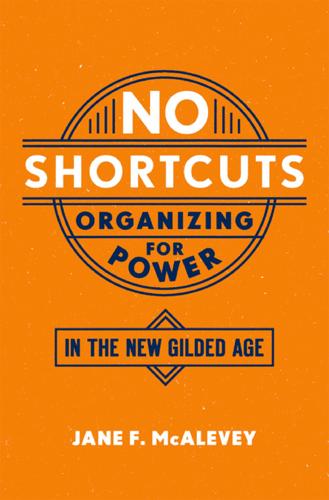
No Shortcuts: Organizing for Power in the New Gilded Age
by
Jane F. McAlevey
Published 14 Apr 2016
Between 1999 and 2000, the national SEIU hatched a plan to create what would become a breakthrough growth strategy, a plan to unionize public-sector homecare workers into a single union in the state of Washington. But to even attempt developing a statewide local, SEIU had to first create and pass a new state law, because in Washington, as in most of the nation in early 2001, homecare workers were treated as independent contractors. If successful, the creation of a statewide homecare authority would represent a second major breakthrough for SIEU in homecare worker unionization. The first breakthrough had been made in California, over an eleven-year period, 1987 to 1999. In 1992, after a five-year campaign to do it, the union passed a statewide law that gave local authorities at the county and municipal levels the right to form legal entities creating an employer of record, with which thousands of homecare employees could then negotiate over the terms and conditions of their work.
…
In 1992, after a five-year campaign to do it, the union passed a statewide law that gave local authorities at the county and municipal levels the right to form legal entities creating an employer of record, with which thousands of homecare employees could then negotiate over the terms and conditions of their work. This changed their employment status from that of independent contractors working for an individual to that of employees working for the local authorities who actually paid their salaries.12 As a result, between 1994 and 1997, 17,000 homecare workers had unionized in northern California as employees of three separate local authorities—Alameda, San Francisco, and Contra Costa counties, in that order.13 Then, in 1999, SEIU succeeded in the largest single homecare victory: the unionization of 74,000 homecare workers in Los Angeles County.
…
The result was substantial back-wage payments: C-Town in Queens had to pay baggers more than $300,000 in back wages, Pioneer Grocery in Brooklyn had to pay more than $160,000, and Key Foods in Brooklyn more than $44,000. Prior to the sweeps, these employers had typically made workers sign agreements classing them as independent contractors, working for tips and receiving no wages, and yet treated them just like employees, assigning them other jobs, such as cleaning, and firing them if they wouldn’t comply. MRNY’s large membership helps the generally underfunded state agencies launch “sting” operations against these unscrupulous employers, and the impact ripples out well beyond the shops that get fined.
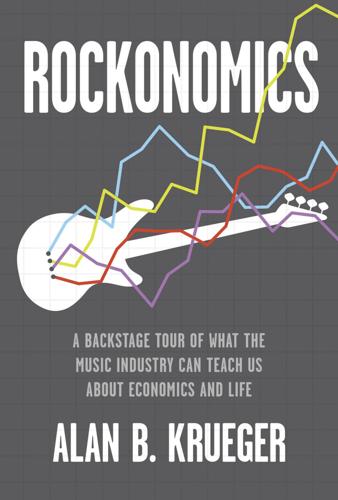
Rockonomics: A Backstage Tour of What the Music Industry Can Teach Us About Economics and Life
by
Alan B. Krueger
Published 3 Jun 2019
But several companies outside of the music industry have implemented strategies to shroud the gender of job applicants to increase the representation of women at work and counteract discrimination, and these strategies have had some success.49 More progress is needed, however, to nurture women’s careers, eradicate explicit and implicit forms of sexual harassment, and change attitudes. These challenges are especially difficult in industries that are characterized by large imbalances of power and industries in which independent contractor relationships are common, conditions now common in music and in a growing number of other industries. A Musical Life The life of most musicians is often economically challenging but personally rewarding. Only a lucky few achieve fame and fortune. The rest struggle to make ends meet.
…
As Q Prime’s Cliff Burnstein told me, “When you’re coming to town with a hot show, the venue pretty much has to do what you want.”10 Merchandise sales, sponsorship income, endorsements, and other potential sources of income would likely skew the industry further in the direction of a superstar market, as the superstars receive a greater share of such income. Before turning to the question of how superstars become so popular, it is worth emphasizing how the rules of an economy constrain or amplify superstars’ incomes. In the United States, most top musicians are independent contractors, who, together with their managers, are free to negotiate their own compensation and touring schedule.11 In South Korea, however, K-pop groups sign long-term contracts with their management companies, which essentially prevent them from receiving a large share of the profits that they generate.12 Similarly, in Japan, musicians typically work on a work-for-hire basis, which restricts their upside earning potential.
…
Musicians are not so different from many Americans when it comes to making financial decisions, but the unpredictable nature of their income, the high rate of self-employment, and the laser-like focus on their art often makes their financial situation more perilous. Because musicians typically earn their income as independent contractors, they do not have an employer who withholds income from their pay for taxes. Like Will Smith, many musicians fail to set aside income for tax purposes, and run into trouble with the IRS. Many musicians have also been aggressive in trying to avoid tax payments. The pop singer Shakira, for example, came under investigation for possible tax evasion in Spain.31 And some musicians have gotten into trouble because their business manager or tax adviser set up a scheme to evade taxes—for example, by booking income through a third party in a tax haven—that caused the musicians to lose control of their income.

Lifestyle Entrepreneur: Live Your Dreams, Ignite Your Passions and Run Your Business From Anywhere in the World
by
Jesse Krieger
Published 2 Jun 2014
Learning how to operate the basic functions of each component is important, if only so you can delegate to: • The Operators - Your team of contractors sourced through online talent platforms or in-house salaried employees For some individuals, the goal is to put the entire operation on “auto pilot” where every function the business performs is handled by external service providers who work as independent contractors. Others like to be more hands-on, staying involved in the day-to-day operations and personally executing the functions needed to run the business. Either way it is a good practice to learn at least the basics of each function in The Model, if only to be a more effective delegator later. Now let’s take a look at The Model, as experienced from the customer’s perspective.
…
Or they may have come from another similar site (i.e. a Guru.com freelancer didn’t do well there and moved to Elance) and wants you to be their first project on the new platform. Our experience is that you get what you pay for. Forget the lowest cost provider unless he or she has a high feedback score. You’ll be glad you did. Intellectual and Copyrights Be sure that you spell out, either in the description of the project or in your independent contractor agreement you sign, that the work performed becomes yours exclusively and that all intellectual property rights and copyrights are assigned to you. The project should always be “for hire” and you don’t want to imply ownership, but spell it out directly and clearly before you get down to work.

Terms of Service: Social Media and the Price of Constant Connection
by
Jacob Silverman
Published 17 Mar 2015
On many commenting platforms, we rate other comments and give stars or other plaudits to individual commenters. Lulu, a smartphone app, and ReportYourEx.com allow women to warn others about deadbeat ex-boyfriends. And a range of products and services—from eBay to Lyft to Sidecar to TaskRabbit, many of them falling under the umbrella of the sharing economy—allow us to review independent contractors who have only a tenuous connection to the app or Web site that connected us with them. When we rate an Uber driver, who doesn’t technically work for Uber, we are, in essence, rating him as an individual, adjudicating his personal value to us. Robert Moran, head of the Brunswick Group, a communications consultancy, sees what he calls the “rateocracy” as an opportunity for transparency, when good corporations and citizens will be rewarded for acting ethically and in others’ best interests.
…
Make sure you always give your employers good reviews, because they might retaliate if you pan them. If you run into trouble, as did Franklin Leonard with a racist property owner on Airbnb, then perhaps you just need to recalibrate your public identity. The sharing economy includes some online labor outlets, such as TaskRabbit, in which independent contractors perform menial tasks, such as fetching groceries or assembling furniture, for small fees. Companies such as Lyft, Uber, and Sidecar provide taxi-type services, but they almost never call themselves taxi or transportation companies. This is because the transportation industry is highly regulated, something that Uber would like to disrupt.
…
That this self-indulgent convenience ultimately comes at the expense of others is easily brushed off or shrouded in the magical promise that anything you want can be produced immediately. This is the Amazon ethic—customer first, costs slashed to the bone, goods delivered as soon as possible through cut-rate independent contractors—to the max. That’s why Amazon, so adept at hiding the exploitative conditions in its sweltering warehouses, has committed to ferrying goods by speedy drones and patented a method to ship customers items before they’ve even ordered them. Waiting for anything is now treated as a market inefficiency.
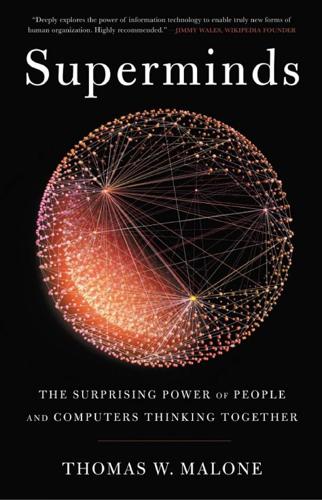
Superminds: The Surprising Power of People and Computers Thinking Together
by
Thomas W. Malone
Published 14 May 2018
In other words, having a single hierarchical management structure that can appropriately adapt to changing situations can often lead to lower long-term costs of group decision making. This is the best explanation we have for why hierarchically managed companies exist in our economy instead of every worker being an independent contractor who negotiates with others every day to do the work that needs to be done. Comparing Markets to Communities Like hierarchies, markets can have either higher or lower decision-making costs than communities. The same price mechanism that often makes markets cheaper than hierarchies also makes them cheaper than communities when coordinating large numbers of people and decisions.
…
Some of the tasks can be done by anyone who speaks English; others require expertise about topics like business strategy, economics, or political science. Almost all these tasks can be done remotely from anywhere in the world. Since many of these jobs don’t require full-time work for a single customer, many people will do them as independent contractors. In a 1997 Harvard Business Review article, my colleague Rob Laubacher and I coined the term e-lancers—short for “electronically connected freelancers”—to describe these workers.12 Today many people use the term gig economy to describe essentially the same phenomenon. Many of the tasks so far in the gig economy are physical tasks, like driving for Uber, but almost all of them rely on electronic matching of workers to jobs.
…
But it also seems like a very promising way that markets could finance programs for unemployed workers to learn the skills they need to find new work, regardless of what life stage they are in at the time. Worker associations. Another possibility is that associations of workers could pay to retrain their own members. For instance, in work I did with my colleague Rob Laubacher, we suggested that independent contractors (like Uber drivers) could form associations (which we called guilds) to provide many of the benefits that might otherwise come from long-term employers (like training, health care, retirement plans, and a place to socialize).15 Some of these guilds might be based on occupation (like unions and professional associations), and others on where you went to college or where you live.

Don't Be Evil: How Big Tech Betrayed Its Founding Principles--And All of US
by
Rana Foroohar
Published 5 Nov 2019
That varies based on the algorithm; according to my own anecdotal interviews with drivers in NYC, it has been decreasing as Uber has built its market share, and is around 20 percent now, as opposed to roughly 30 percent for the local independent cab services that some people in the neighborhood still use. Uber touts its drivers as “free and independent” contractors, yet thanks to its automated algorithmic management system, the company is able to control how they work and penalize them when their behaviors deviate from what might be most profitable—for Uber.10 Using artificial intelligence, Uber is able to identify a class of consumers that might be willing to pay more than others for rides, depending on their zip codes.
…
The digital gig economy, it turns out, is no less bifurcated than the analog one. This is concerning, given that a spate of new research by various organizations, from McKinsey to the Organization for Economic Co-operation and Development, points to the fact that in the next ten to twenty years, the number of people working as freelancers, independent contractors, or part-time for multiple employers will increase dramatically. In the United States, 35 percent of the labor force is already working this way. If “freelance nation” is the future, the divides in this new world will only further exacerbate the winner-takes-all trend that has driven the polarized politics of the moment.
…
“Ideologically, I come out of the Jewish labor movement of the 1920s, which included not only garment factory workers but also small entrepreneurs,” she says. Indeed, she has brought an interesting mix of entrepreneurial zeal and strategic thinking to her community. The Freelancers Union was, for example, instrumental in getting a law passed in New York City that allows independent contractors to sue for double damages and legal fees when clients fail to pay. Horowitz’s group subsequently developed an app to help members find lawyers who would take on their cases, and since most of those legal professionals were independent or working for small firms, she began organizing them, too.

We Are All Fast-Food Workers Now: The Global Uprising Against Poverty Wages
by
Annelise Orleck
Published 27 Feb 2018
And the forms of resistance I encountered were, similarly, part of a larger struggle. Though rooted in and motivated by local politics and history, the activists I spoke with were all engaged in fighting the same things: poverty wages, the disappearance of public services (education, healthcare, water), the transformation of workers into independent contractors (and with that a loss of seniority, benefits, pensions), disrespect, sexual harassment and violence, mass evictions and disregard of people’s land rights. What follows are some stories of their resistance—their struggles, their losses, their victories, their visions for the future. When I began this book Donald Trump had not yet been elected president of the United States.
…
In expensive cities—New York, Los Angeles, Boston—three and four generations live together. They pool resources so that they can afford rent. Employed workers sleep on relatives’ couches. Some commute to work from homeless shelters.6 Secure jobs are disappearing. Employees are reduced to “independent” contractors, as corporate managers relentlessly cut costs. College graduates stagger under crushing levels of debt, unable to purchase homes or even cars. Stagnant wages erode workers’ living standards. Wage theft runs rampant. Marx’s proletariat has grown scarce, replaced by an expanding global “precariat”—contingent, commodified labor to whom no one owes anything.
…
And the corporations, hospitals, universities, and government agencies for which they work evade legal responsibility for meeting minimum wage, maximum hours, and safety standards by classifying them as “temporary” or as “contract” employees provided by third-party labor suppliers. In many countries, full-time employees are protected by federal and state labor laws, fought for by labor unions and passed between the 1910s and the 1950s. But few people are classified as full-time employees these days. Suddenly almost everyone is an “independent contractor.” Welcome to the so-called “gig economy.” Twenty dollars an hour, most studies show, is the minimum required to comfortably support a family with two children in the US. Nearly two-thirds of American workers earn less. And though the 2016 election sparked discussion of falling real wages among high school-educated white men, only a quarter of low-wage workers in the US are men.

Stakeholder Capitalism: A Global Economy That Works for Progress, People and Planet
by
Klaus Schwab
Published 7 Jan 2021
Martin Wolf, Financial Times, April 2018, https://www.ft.com/content/e00099f0-3c19-11e8-b9f9-de94fa33a81e. 15 “The Worldwide Uber Strike Is a Key Test for the Gig Economy,” Alexia Fernandez Campbell, Vox, May 219, https://www.vox.com/2019/5/8/18535367/uber-drivers-strike-2019-cities. 16 “Uber Pre IPO, 8th May, 2019 Global Strike Results,” RideShare Drivers United, May 2019, https://ridesharedriversunited.com/uber-pre-ipo-8th-may-2019-global-strike-results/. 17 “Worker or Independent Contractor? Uber Settles Driver Claims Before Disappointing IPO,” Forbes, May 2019, https://www.forbes.com/sites/kellyphillipserb/2019/05/13/worker-or-independent-contractor-uber-settles-driver-claims-before-disappointing-ipo/#7a157b93f39f. 18 “Uber and Lyft Drivers in California Will Remain Contractors”, Kate Conger, The New York Times, November 2020, https://www.nytimes.com/2020/11/04/technology/california-uber-lyft-prop-22.html. 19 “Are Political Parties in Trouble?”
…
Moller–Maersk case study on efforts to reduce, 167–168 Boston Consulting Group study on reducing, 167 CO2 emissions, 160, 161, 165–166, 182, 200, 202, 203, 207 EU's emissions cap-and-trade scheme to lower, 166, 183 fossil fuels, 49 Stakeholder Capitalism Metrics used to measure reduced, 249 See also Climate change; Pollution Green New Deal (EU), 183 Greenpeace, 50 Die Grünen (the Greens) [Germany], 78–79 The Guardian, 223 H Hartmann machine works (Chemnitz, Kingdom of Saxony), 103fig Hartmann, Richard, 103 Harvard Business School, 11 Health care COVID-19 pandemic revealing inequalities in, 3–4, 43, 73, 227 digital connectivity providing access to, 227–228 effective government focus on, 225–227 high EU percentage of GDP spent on, 231 high US cost of, 227, 231, 232 improving access in China, 225–226 Singapore's universal health care system, 230–232 Health inequalities COVID-19 pandemic revealing, 3–4, 43, 73, 227 health insurance, 43 wealth inequality, social mobility, and related, 41–42 Healthy365 app (Singapore), 232 Hess-Maier, Dorothee, 9 High-quality debt, 29 Hiroshima bombing (1945), 5 Hirsch, Jeffrey, 240 Hitachi (Japan), 142 Hong Kong carbon footprint per capita, 159 globalization driving economic growth of, 98 Nanyang Commercial Bank of, 57–58 See also Asian Tigers Horowitz, Sara, 242 Housing financial crisis 2008 and loss of, 227 redlining discriminatory practice, 226 Singapore's HDB public, 228–230 stakeholder government providing access to, 225–227 Housing Development Board (HDB) [Singapore], 228–230 Houston Natural Gas (US), 217 Houten, Frans van, 250 Huawei, 55, 60 Hughes, Chris, 128 Human capital definition of, 235 New Zealand's Living Standards Framework on, 235fig–236 Humanity Forward, 239–240 Human rights, Singapore's regulation of, 123 Hungary erosion of political center in, 83–84 Fidesz-KNDP coalition in, 83 financial crisis (2008) impact on, 112, 113 vote for right-wing populist parties (2000, 2017–2019), 84fig I IBM, 139 Iceland, 224 IDN Media (Indonesia), 94–95, 114 IDN Media HQ (Jakarta, Indonesia), 95 Inclusive Development Index (World Economic Forum), 189, 190 Income equality Denmark's success with, 119, 186 EPI plotting union membership against, 186 stakeholder government role in enabling, 178–179, 225 union membership impact on, 186 universal basic income (UBI) concept of, 239 See also Prosperity Income inequality COVID-19 pandemic revealing increased, 3–4, 43, 73 Elephant Curve of Global Inequality and Growth graph, 137–138fig First Industrial Revolution (19th century) and, 132–134 Gini Indices on China and India impact on, 37fig–38, 226 history of US, 34–36, 38–39fig, 88–89 impact on the global economic system by, 36–41 Kuznets curve on problem of, 34–41, 44–45 Kuznets Wave on, 45fig–46 wealth inequality higher than, 41 World Inequality Lab (WIL) on India and China's, 72–73fig World Inequality Report (2018) on, 38, 138fig See also Inequalities; Wealth inequality Independent contractors (freelancers), 237–238, 240–243 Independent Drivers Guild (New York), 238, 241–242 India continued trust in public institutions in, 196 COVID-19 pandemic impact on, 66, 67, 68–69 demographic changes in, 161 economic growth (1980s-2020) in, 66, 67–69, 96–97 gig workers of, 240, 243 Gini Indices on global income inequality impact of, 37fig–38 increasing national income inequality in, 40 protectionist policies and License Raj system of, 67, 69 WHO on unsafe air (2019) in, 72 World Inequality Lab (WIL) on rising inequality in, 72–73fig Indian Institutes of Technology (IIT), 68 Indignados protest (Spain), 40, 86 Indochina (19th century), 56 Indonesia Bandung entrepreneurs story (2012) on MYCL, 93–94, 96, 98, 114 continued trust in public institutions in, 196 economic recession (1997) in, 98, 109 gig workers of, 237, 240 globalization success stories in, 93–99 history of international trade by, 97 IDN Media, 94–95, 114 IT and Internet revolution role in expanding economy of, 137 predicted economic growth (2020–2021) in, 65–66 Spice Islands trade (Maluku Islands), 100 tech unicorns of, 66, 67fig Industrial Revolution (19th century), 56, 71, 108, 116, 119, 130–134, 161 Inequalities Benioff on the problem of growing, 210 Big Tech widening, 210 COVID-19 pandemic revealing increased, 3–4, 43, 73, 227 “digital divide,” 227 World Inequality Lab (WIL) on India and China's, 72–73fig See also Income inequality; Wealth inequality Inflation rates debt burden and low, 33 low-interest rates and low, 31–33 Infosys [India], 68 Infrastructure increasing funding gap (2016–2040) for, 32 New Zealand's physical capital, 235fig–236 Institute of International Finance (IIF), 27 Institutions international, 178, 179, 194, 196–197 loss of trust in public, 196 stakeholder model on need for robust, 185, 193–198 Intel, 141 Interest rates COVID-19 pandemic impact on, 31 low inflation and low, 31–33 US Federal Reserve (2009–2019), 31 Intergovernmental Panel on Climate Change (IPCC) [UN], 51, 149 Intergovernmental Platform on Biodiversity and Ecosystems Services (IPBES) report [2019], 51 International Bank for Reconstruction and Development (now World Bank), 6 International Business Council (World Economic Forum), 193, 214, 249 International communities aim to preserve peace, 179 civil society and the, 237–238 as key stakeholders, 178 weakening of institutions of, 194, 196–197 See also specific international community International Monetary Fund (IMF) continued low global GDP growth expectation by, 26–27 creation of the, 6 GDP measure used by, 24 on increasing rates of median debt by mid-2021, 28 lack of representation evidenced in, 197 2020 fiscal monitor of, 19 World Economic Outlook (2020) on ASEAN economies, 65–66 Internet “digital divide” and, 227 improving digital connectivity to, 225, 227–228, 232 Internet Agenda (World Economic Forum), 246 Internet Explorer, 139 Internet of Things, 18, 72, 161 InterNorth (US), 217, 218 Ireland, 194 Iron Curtain, 77, 80 Israel OPEC members in opposition to, 12 Yom Kippur War, 12 Italy COVID-19 pandemic impact on economy of, 68 erosion of the political center in, 83 Five Star Movement in, 83, 87–88 Marshall Plan to rebuild economy of, 6 Pitchfork protests (2013), 86 ruined post-World War II economy of, 5 J Jacobin Magazine (socialist publication), 243 Japan demographic decline in, 161 Second World War occupation of Chinese territory by, 56 Japanese economy economic boom (1945–1970s) in, 8, 109 reconstruction of post-war society and, 8 ruined post-World War II, 5 Jensen, Claus, 117 Jobs, Steve, 126 Johnson, Lyndon B., 135, 184 Jordan, 162 JPMorgan Chase, 132 Julius, Otto, 9 K Kambhampati, Uma, 224 Kennedy, John F., 76 Kenya, 27, 70 Keynes, John Maynard, 103, 104 Khadija, 99 Khan, Lina, 127, 140 Klein, Alice, 220 Klein, Ezra, 231–232 Kohl, Helmut, 78, 81 KPMG (US), 215, 250 Krugman, Paul, 127–128 Kuznets, Simon Smith, 21–25, 34, 44–45, 53, 234 Kuznets' theories Environmental Kuznets Curve, 21–22, 46–47, 53 on mistaken pursuit of GDP growth, 21–25, 34, 46, 53 on problem of income inequality, 34–41, 44–45 Kuznets Wave, 45fig–46 L Labor force automation challenges for, 115–126 collective bargaining in European countries, 10 comparison of US and Danish approach to, 117–120, 123 constructive relationship between Danish companies and, 117–120 Financial Times on loss of manufacturing jobs (1990–2016), 120 gig economy, 237–238, 240–243 increased female participation in the, 9 US and UK politically polarizing, 122–123 Labor market reskilling American labor market deficiencies in, 121–122 Denmark's “Active Labour Market Policies,” 120–121 Labor strikes call for global Uber and Lyft (2019), 187 UK miners' strike, 122 US air traffic controllers, 122 Labor unions collective bargaining, 10, 14, 17 EPI plotting income inequality against history of, 186 high membership in Denmark, 240 stakeholder approach to modern, 240–243 strikes held by, 122 Laissez-faire economy, 225 Lakner, Christoph, 137, 138 Lasn, Kalle, 40 Latin American countries average economic mobility improvement in, 44 capitalism vs. communism ideological battle in, 7 dropping voter turnout for elections in, 188 emerging markets in, 63 income inequality in, 40 “reefer ships” (1870s) and international trade by, 104, 110 “21st century socialism” of, 225 See also specific country “League of Legends” game, 60 Lee Hsien Loong, 230 Lee, Kai-Fu, 143 Legacy preferences (university admissions), 226 Lega (League) [Germany], 83, 88 Legatum Prosperity Index (2019), 231 Lenin, Vladimir, 22 Leonhard, David, 140 LGBTQ people, 123, 195 LGBTQ rights groups, 243 Liberal political parties (Europe), 188 License Raj system (India), 67, 69 “The Limits to Growth” study (Peccei), 47, 48, 52 Lin, David, 49 LinkedIn (US), 211 “Little Mermaid” statue (Copenhagen), 200 Liu Guohong, 57 Living Standards Framework (LSF) [New Zealand], 222–223, 234–236 Local government.

Stakeholder Capitalism: A Global Economy That Works for Progress, People and Planet
by
Klaus Schwab
and
Peter Vanham
Published 27 Jan 2021
Martin Wolf, Financial Times, April 2018, https://www.ft.com/content/e00099f0-3c19-11e8-b9f9-de94fa33a81e. 15 “The Worldwide Uber Strike Is a Key Test for the Gig Economy,” Alexia Fernandez Campbell, Vox, May 219, https://www.vox.com/2019/5/8/18535367/uber-drivers-strike-2019-cities. 16 “Uber Pre IPO, 8th May, 2019 Global Strike Results,” RideShare Drivers United, May 2019, https://ridesharedriversunited.com/uber-pre-ipo-8th-may-2019-global-strike-results/. 17 “Worker or Independent Contractor? Uber Settles Driver Claims Before Disappointing IPO,” Forbes, May 2019, https://www.forbes.com/sites/kellyphillipserb/2019/05/13/worker-or-independent-contractor-uber-settles-driver-claims-before-disappointing-ipo/#7a157b93f39f. 18 “Uber and Lyft Drivers in California Will Remain Contractors”, Kate Conger, The New York Times, November 2020, https://www.nytimes.com/2020/11/04/technology/california-uber-lyft-prop-22.html. 19 “Are Political Parties in Trouble?”
…
Moller–Maersk case study on efforts to reduce, 167–168 Boston Consulting Group study on reducing, 167 CO2 emissions, 160, 161, 165–166, 182, 200, 202, 203, 207 EU's emissions cap-and-trade scheme to lower, 166, 183 fossil fuels, 49 Stakeholder Capitalism Metrics used to measure reduced, 249 See also Climate change; Pollution Green New Deal (EU), 183 Greenpeace, 50 Die Grünen (the Greens) [Germany], 78–79 The Guardian, 223 H Hartmann machine works (Chemnitz, Kingdom of Saxony), 103fig Hartmann, Richard, 103 Harvard Business School, 11 Health care COVID-19 pandemic revealing inequalities in, 3–4, 43, 73, 227 digital connectivity providing access to, 227–228 effective government focus on, 225–227 high EU percentage of GDP spent on, 231 high US cost of, 227, 231, 232 improving access in China, 225–226 Singapore's universal health care system, 230–232 Health inequalities COVID-19 pandemic revealing, 3–4, 43, 73, 227 health insurance, 43 wealth inequality, social mobility, and related, 41–42 Healthy365 app (Singapore), 232 Hess-Maier, Dorothee, 9 High-quality debt, 29 Hiroshima bombing (1945), 5 Hirsch, Jeffrey, 240 Hitachi (Japan), 142 Hong Kong carbon footprint per capita, 159 globalization driving economic growth of, 98 Nanyang Commercial Bank of, 57–58 See also Asian Tigers Horowitz, Sara, 242 Housing financial crisis 2008 and loss of, 227 redlining discriminatory practice, 226 Singapore's HDB public, 228–230 stakeholder government providing access to, 225–227 Housing Development Board (HDB) [Singapore], 228–230 Houston Natural Gas (US), 217 Houten, Frans van, 250 Huawei, 55, 60 Hughes, Chris, 128 Human capital definition of, 235 New Zealand's Living Standards Framework on, 235fig–236 Humanity Forward, 239–240 Human rights, Singapore's regulation of, 123 Hungary erosion of political center in, 83–84 Fidesz-KNDP coalition in, 83 financial crisis (2008) impact on, 112, 113 vote for right-wing populist parties (2000, 2017–2019), 84fig I IBM, 139 Iceland, 224 IDN Media (Indonesia), 94–95, 114 IDN Media HQ (Jakarta, Indonesia), 95 Inclusive Development Index (World Economic Forum), 189, 190 Income equality Denmark's success with, 119, 186 EPI plotting union membership against, 186 stakeholder government role in enabling, 178–179, 225 union membership impact on, 186 universal basic income (UBI) concept of, 239 See also Prosperity Income inequality COVID-19 pandemic revealing increased, 3–4, 43, 73 Elephant Curve of Global Inequality and Growth graph, 137–138fig First Industrial Revolution (19th century) and, 132–134 Gini Indices on China and India impact on, 37fig–38, 226 history of US, 34–36, 38–39fig, 88–89 impact on the global economic system by, 36–41 Kuznets curve on problem of, 34–41, 44–45 Kuznets Wave on, 45fig–46 wealth inequality higher than, 41 World Inequality Lab (WIL) on India and China's, 72–73fig World Inequality Report (2018) on, 38, 138fig See also Inequalities; Wealth inequality Independent contractors (freelancers), 237–238, 240–243 Independent Drivers Guild (New York), 238, 241–242 India continued trust in public institutions in, 196 COVID-19 pandemic impact on, 66, 67, 68–69 demographic changes in, 161 economic growth (1980s-2020) in, 66, 67–69, 96–97 gig workers of, 240, 243 Gini Indices on global income inequality impact of, 37fig–38 increasing national income inequality in, 40 protectionist policies and License Raj system of, 67, 69 WHO on unsafe air (2019) in, 72 World Inequality Lab (WIL) on rising inequality in, 72–73fig Indian Institutes of Technology (IIT), 68 Indignados protest (Spain), 40, 86 Indochina (19th century), 56 Indonesia Bandung entrepreneurs story (2012) on MYCL, 93–94, 96, 98, 114 continued trust in public institutions in, 196 economic recession (1997) in, 98, 109 gig workers of, 237, 240 globalization success stories in, 93–99 history of international trade by, 97 IDN Media, 94–95, 114 IT and Internet revolution role in expanding economy of, 137 predicted economic growth (2020–2021) in, 65–66 Spice Islands trade (Maluku Islands), 100 tech unicorns of, 66, 67fig Industrial Revolution (19th century), 56, 71, 108, 116, 119, 130–134, 161 Inequalities Benioff on the problem of growing, 210 Big Tech widening, 210 COVID-19 pandemic revealing increased, 3–4, 43, 73, 227 “digital divide,” 227 World Inequality Lab (WIL) on India and China's, 72–73fig See also Income inequality; Wealth inequality Inflation rates debt burden and low, 33 low-interest rates and low, 31–33 Infosys [India], 68 Infrastructure increasing funding gap (2016–2040) for, 32 New Zealand's physical capital, 235fig–236 Institute of International Finance (IIF), 27 Institutions international, 178, 179, 194, 196–197 loss of trust in public, 196 stakeholder model on need for robust, 185, 193–198 Intel, 141 Interest rates COVID-19 pandemic impact on, 31 low inflation and low, 31–33 US Federal Reserve (2009–2019), 31 Intergovernmental Panel on Climate Change (IPCC) [UN], 51, 149 Intergovernmental Platform on Biodiversity and Ecosystems Services (IPBES) report [2019], 51 International Bank for Reconstruction and Development (now World Bank), 6 International Business Council (World Economic Forum), 193, 214, 249 International communities aim to preserve peace, 179 civil society and the, 237–238 as key stakeholders, 178 weakening of institutions of, 194, 196–197 See also specific international community International Monetary Fund (IMF) continued low global GDP growth expectation by, 26–27 creation of the, 6 GDP measure used by, 24 on increasing rates of median debt by mid-2021, 28 lack of representation evidenced in, 197 2020 fiscal monitor of, 19 World Economic Outlook (2020) on ASEAN economies, 65–66 Internet “digital divide” and, 227 improving digital connectivity to, 225, 227–228, 232 Internet Agenda (World Economic Forum), 246 Internet Explorer, 139 Internet of Things, 18, 72, 161 InterNorth (US), 217, 218 Ireland, 194 Iron Curtain, 77, 80 Israel OPEC members in opposition to, 12 Yom Kippur War, 12 Italy COVID-19 pandemic impact on economy of, 68 erosion of the political center in, 83 Five Star Movement in, 83, 87–88 Marshall Plan to rebuild economy of, 6 Pitchfork protests (2013), 86 ruined post-World War II economy of, 5 J Jacobin Magazine (socialist publication), 243 Japan demographic decline in, 161 Second World War occupation of Chinese territory by, 56 Japanese economy economic boom (1945–1970s) in, 8, 109 reconstruction of post-war society and, 8 ruined post-World War II, 5 Jensen, Claus, 117 Jobs, Steve, 126 Johnson, Lyndon B., 135, 184 Jordan, 162 JPMorgan Chase, 132 Julius, Otto, 9 K Kambhampati, Uma, 224 Kennedy, John F., 76 Kenya, 27, 70 Keynes, John Maynard, 103, 104 Khadija, 99 Khan, Lina, 127, 140 Klein, Alice, 220 Klein, Ezra, 231–232 Kohl, Helmut, 78, 81 KPMG (US), 215, 250 Krugman, Paul, 127–128 Kuznets, Simon Smith, 21–25, 34, 44–45, 53, 234 Kuznets' theories Environmental Kuznets Curve, 21–22, 46–47, 53 on mistaken pursuit of GDP growth, 21–25, 34, 46, 53 on problem of income inequality, 34–41, 44–45 Kuznets Wave, 45fig–46 L Labor force automation challenges for, 115–126 collective bargaining in European countries, 10 comparison of US and Danish approach to, 117–120, 123 constructive relationship between Danish companies and, 117–120 Financial Times on loss of manufacturing jobs (1990–2016), 120 gig economy, 237–238, 240–243 increased female participation in the, 9 US and UK politically polarizing, 122–123 Labor market reskilling American labor market deficiencies in, 121–122 Denmark's “Active Labour Market Policies,” 120–121 Labor strikes call for global Uber and Lyft (2019), 187 UK miners' strike, 122 US air traffic controllers, 122 Labor unions collective bargaining, 10, 14, 17 EPI plotting income inequality against history of, 186 high membership in Denmark, 240 stakeholder approach to modern, 240–243 strikes held by, 122 Laissez-faire economy, 225 Lakner, Christoph, 137, 138 Lasn, Kalle, 40 Latin American countries average economic mobility improvement in, 44 capitalism vs. communism ideological battle in, 7 dropping voter turnout for elections in, 188 emerging markets in, 63 income inequality in, 40 “reefer ships” (1870s) and international trade by, 104, 110 “21st century socialism” of, 225 See also specific country “League of Legends” game, 60 Lee Hsien Loong, 230 Lee, Kai-Fu, 143 Legacy preferences (university admissions), 226 Lega (League) [Germany], 83, 88 Legatum Prosperity Index (2019), 231 Lenin, Vladimir, 22 Leonhard, David, 140 LGBTQ people, 123, 195 LGBTQ rights groups, 243 Liberal political parties (Europe), 188 License Raj system (India), 67, 69 “The Limits to Growth” study (Peccei), 47, 48, 52 Lin, David, 49 LinkedIn (US), 211 “Little Mermaid” statue (Copenhagen), 200 Liu Guohong, 57 Living Standards Framework (LSF) [New Zealand], 222–223, 234–236 Local government.

Platform Revolution: How Networked Markets Are Transforming the Economy--And How to Make Them Work for You
by
Sangeet Paul Choudary
,
Marshall W. van Alstyne
and
Geoffrey G. Parker
Published 27 Mar 2016
It’s a classic illustration of how regulatory debates that evoke majestic concepts such as equity, freedom, and the sanctity of the marketplace often turn, in the end, on nitty-gritty issues of dollars and cents and the political clout that various players bring to the legislative table. Labor regulation. Those who operate labor platforms usually choose to describe their systems as intermediaries that serve solely to match labor with demand for services. In this view, the people who sign up for work through firms such as Uber, TaskRabbit, and Mechanical Turk are truly independent contractors, and the platform bears little legal (or moral) responsibility to the parties on either side of the interaction once the match has been made. However, from the perspective of regulators who are charged with safeguarding the welfare of working men and women, this position is dubious. In the traditional world of offline business, a number of firms that classify full-time, permanent employees as contract labor for legal and regulatory purposes have been drawing unfavorable attention for the practice.
…
Perhaps equally significant, the reputation of online labor platforms has already taken a serious hit in the unofficial “court of public opinion”—as reflected, for example, in more than a million Google results, many from respectable mainstream media outlets, in response to the query “Internet sweatshop.”46 In the long run, public disapproval of business behavior can have a meaningful impact on the value of a company’s brand—which means that the court of public opinion operates, at times, as an unofficial regulatory body that business leaders are wise to heed. Similarly, there are limits to the extent to which labor platforms will be able to evade responsibility for their practices in hiring, screening, training, and supervising workers—even when those workers are technically classified as independent contractors. Uber, for example, has experienced significant criticism for alleged sexual assaults committed by its drivers on passengers.47 At a time when Uber is engaged in a fierce battle over regulation with the traditional taxi industry, it can ill afford the suspicion that its labor practices are shoddy.
…
B., 54–55 classified ads, 49, 63, 120, 131, 133–34 click-throughs, 190, 197 cloud-based networking, 30, 56 cloud-based storage, 54, 56, 56, 59, 102, 177–78 cloud computing, 145, 155, 209 Coase, Ronald, 234–35 Coca-Cola, 198–99 code, computer, 53, 79–80, 131–32, 140, 143, 166, 170, 172, 240, 254–55, 267 coffee machines, 143, 157–58, 159 colleges and universities, 8–9, 91, 97–99, 265–68 community-driven curation, 67–68, 78 comparative advantage, 188–89 competition complexities, 210–13 computer programming, 52, 99, 131–32, 267 Confinity, 80, 83 Congress, U.S., 248–49 connectivity platforms, 200–201, 285, 289 consulting firms, 8, 194 consumer relationship management (CRM), 11, 96, 174 consumer-to-consumer marketplace, 2–3, 29 contact information, 163, 190 contracts, 142, 166, 172, 197, 225–26 control systems, 164–65 convex growth, 20, 295, 297 Cook, Tim, 148 co-opetition (co-creation), 194, 212, 227 copyright, 57, 167, 208, 258, 259 core developers, 141–42 corporations, 157–58 governance by, 164, 256–60 image ads for, 229–30 sponsorship by, 137, 139–40 corruption, 160, 236–37 cosmetics industry, 206 Coursera, 8, 265, 266, 267 Craigslist, 47, 49, 91–92, 101, 103, 165, 193, 224 credit, 170, 175, 243–44, 263, 275–76, 277 credit cards, 37, 81, 83, 84, 137, 139–40, 175, 226, 243, 275 credit reports, 243–44 crime, 165, 231, 257 critical assets, 220–21 critical mass, 97, 112, 188, 195, 201–2 Croll, Alistair, 191, 196 cross-side effects, 29, 30, 34, 295 crowd curation, 167–70 crowdfunding, 40, 51, 92, 96, 102, 111 crowdsourcing, 12, 267 Cryptography, 171 currency, 5, 15, 36, 37–38, 46, 159, 173–74 customized ads, 244 Cusumano, Michael A., 58, 178–79 Damodaran, Aswath, 16–18 data: accountability based on, 253–56 aggregators for, 141, 145–46, 244–48, 254, 255, 262–63, 278 big, 11, 247–48, 276 brokers of, 244–45 capture and collection of, 218–19, 264, 296 in communications, 176–78 flow of, 170, 246–48 leveraging of, 217–20 manipulation of, 251–53 in nationalism, 247–48, 260 platforms for, 200 profiles derived from, 48, 119, 127 security of, 230, 243–46, 260 software for, 91–92, 107, 255, 269, 270–71, 275, 276–77, 278, 284, 286 storage of, 54, 56, 56, 59, 102, 171–73, 177–78 strategic, 217–20 tactical, 217–18 tools for, 10–11, 48, 49, 71 databases, 24–25, 42–44, 63, 72–75, 76, 91–92, 107 “Data Brokers: A Call for Transparency and Accountability,” 245 Data.gov, 283 Data Jams, 282 dating services, 26–28, 30, 93, 97–98, 120, 123, 166, 194 De Beers, 208–9 decentralization, 159, 171–73, 272–74 deep design, 179–80 defaults, 170, 263, 276 Delicious, 95–96 demand-side economies of scale, 18–20, 32, 34, 226 democracy, 149–50, 257, 283 department stores, 264, 287 designers, graphic, 66, 72, 106, 118–19, 267 design structure matrices, 57–58 diabetes, 269–70 diamond industry, 208–9 digital currency, 171, 274–78 digital message deliveries, 94–95 digital real estate, 174–75, 216 digital rights management (DRM), 31 Diners Club, 84 direct-to-consumer channels, 264 discounts, 22, 25–26 disintermediation, 68–69, 71–72, 78, 161–62, 170–71, 298 disk defragmentation, 200 dispute resolution, 169–70 Djankov, Simeon, 238, 239 doctors, 263, 268, 269, 271, 279 Dorsey, Jack, 97 dot-com bubble, x, 22, 79, 80, 113, 288 Dribbble, 37, 66, 118–19 driverless cars, 284 driver ratings, 254, 264 driving records, 232–33, 277 Dropbox, 32, 102, 109 Drucker, Peter, 210 drug trafficking, 162 Duhigg, Charles, 146 Duracell, 162 DVDs, 63, 111, 139 e-commerce, 56, 91, 111, 124–25, 145, 204–5 Earth Class Mail, 94–95 eBay, vii, ix, 2, 3, 17, 24, 36, 38, 40, 83–84, 85, 91, 93, 111, 112–13, 125, 135, 161–62, 163, 169–71, 172, 173, 196n, 205, 206, 207, 215, 262 economics, 72, 78, 230, 234–39 economies of scale, 18–20, 206 Edison, Thomas, 19, 284 editors, 7, 10, 68, 72, 93, 129–30, 262 education, 7–8, 77, 96, 111, 122, 124, 212, 233, 261, 263, 265–68, 269, 288, 289 education platforms, 96, 111, 265–68, 289 Eisenmann, Thomas R., ix, 130 electric lighting, 19, 285 electric power, 19, 69, 247, 284–85 Electronic Arts (EA), 94, 124, 240 electronic health records, 270 electronics, 75, 178, 206 email, 81, 85, 101–4, 185 Encyclopaedia Britannica, 10–11 encyclopaedias, 10–11, 129–30, 133, 149–51 Endomondo, 75 end-to-end design principle, 52–54 energy: efficiency of, 254, 284–85, 286 industry for, 261, 272–74, 289 resources of, 69–70, 254, 272–74 enhanced access, 112, 118, 119–21, 126, 127, 296 enhanced curation, 121–22, 126–27 enhanced design, 223–24 enterprise management, 173–75 enterprise resource planning (ERP), 11 entrepreneurs, 79–83, 86, 96, 111, 205, 282 environmental issues, 62, 70–71, 233, 237, 272, 274 Equal Credit Opportunity Act (1974), 243–44 Equity Bank, 277–78 e-readers, 178 eToys, 22 Etsy, 65, 73, 149, 212, 262, 299 European Union (EU), 242, 247–48 events listings, 112–15, 126 Excel, 216 excess inertia, 241, 296 exclusive access, 213–15 expert networks, 30, 36, 68, 93, 96, 99, 117–18 extension developers, 141, 142–45, 147, 148–49, 153–54 external networks, 100–101, 102, 103–4, 105 Facebook, 3, 12, 20, 32, 33, 37, 39, 41–50, 66, 90–91, 98–103, 104, 112, 121, 126, 131–35, 132, 133, 145, 151, 159, 163, 168, 181, 184, 185, 197, 204, 216–18, 221, 226, 245, 251–52, 267, 270–71 Fair Credit Reporting Act (1970), 175 fairness, 179–81, 230 fair use doctrine, 259 farm prices, 42–44, 60 FarmVille, 221 Fasal, 42–44 Federal Reserve, 174 Federal Trade Commission (FTC), 242, 243–44, 245 FedEx, 61, 249–50, 278 feedback loops, 21, 28, 45–46, 68, 71, 72, 100–101, 108, 139, 167–70, 218–19, 223, 296 feet on street (FOS) sales forces, 43–44, 91 files, 63, 166 encryption of, 200 formats for, 29–30 film industry, 9, 66, 138–39, 163, 178, 259, 267 filters, 38–41, 42, 59, 133, 295, 296–97 financial crash of 2008, 178, 230 financial services industry, 11, 16–18, 33, 164, 171–73, 178, 230, 261, 274–78, 289 fitness and sports activities, 74–76, 245, 270–71 five forces model, 207–10, 212, 213, 221 500px, 37, 47 Fiverr, 116, 193 fixed costs, 9–10, 209, 224–25, 278 follow-the-rabbit strategy, 89–91, 105 food industry, 76, 254, 255, 278 Ford, Henry, 19, 32 Ford Motor Co., 19 Fortune 500, 65 Foursquare, 97, 98 fragmented industries, 131, 262, 265, 268–69, 289 fraud, 175, 196–97, 255, 257, 276 Free: The Future of a Radical Price (Anderson), 22 freelancers (independent contractors), 21, 36, 37, 64, 65, 117–18, 193–94, 196, 210, 213, 233–34, 249–51, 279, 280, 287, 297, 299 free trade, 205, 206, 235 Friedersdorf, Conor, 236 Friendster, 98 FuelBand, 74, 75 full-time employees, 249–50 FUSE Labs, 252–53 games, gaming, 94, 103, 124, 132, 159, 163, 178, 211, 212, 217, 221, 240 “Gangnam Style,” 84, 147 gatekeepers, 7–8, 151–52, 171–73, 243, 253, 262, 265, 268, 275–76, 281, 289, 298 Gawer, Annabelle, 58, 178–79 Gebbia, Joe, 1–2 General Electric (GE), 4, 13, 19, 76, 78, 86, 110, 201, 204, 208, 247, 284 Generally Accepted Accounting Principles, 238–39 geographic focus, 98–99, 271 Germany, 96–97, 161, 205 Gillette, King, 109–10 Global 500, 209–10 Go-Jek, 278 Goldberg, Whoopi, 23 Goodwin, Tom, 11–12 Google, vii, 3–7, 21–25, 30–33, 49–50, 55, 58, 64, 72, 111, 112, 120, 121, 125, 134, 137, 140–41, 148, 153–54, 159, 198–99, 214–17, 226, 240, 242, 250, 267, 270–71 Google AdWords, 72, 120, 121, 125 Google Maps, 49–50, 55, 148, 200 Google Play, 154 government platforms, 261, 281–83, 289 graphical processing units (GPUs), 56, 57, 58 graphic design, 67, 226 Great Britain, 160, 205 gross domestic product (GDP), 160, 161 Grossman, Nick, 253, 254, 255, 256 Guardian, 144–45 Gurley, Bill, 16–18, 21 Haber-Bosch process, 19 Hachette Book Group, 251 Haier Group, vii, 76, 125, 198–99, 222 Halo, 94, 240 Halo: Combat Evolved, 94 Hammurabi, Code of, 274 hard drives (HDs), 56, 57, 58 hardware, 56, 57–58, 136, 152–53, 178–79 Harvard University, 98–99, 266 hashtags, 58, 104 Havas Media, 11–12 health care, 32–33, 35, 69, 71, 77, 200, 233, 234, 238, 245, 261, 263, 265, 268–72, 277, 280, 289 health insurance, 234, 263, 271–72, 277, 280 Heiferman, Scott, 113–14, 126 heirlooms, 161–62 Here, 49–50 Hertz, 9 heuristics, 123–24 Hilton Hotels, 8, 64 Hipstamatic, 100 homeowners’ insurance, 175, 232 horizontal integration, 33, 74–76, 208 hospitals, 69, 71, 233, 270, 271–72 hosting sites, 88, 198, 223–24 hotel industry, 1–2, 8–9, 10, 12, 64, 67, 101, 111, 142–43, 198, 224, 229–33, 236, 253, 287 Hotmail, 103, 104 Houghton Mifflin Harcourt, 204, 208, 225 HTTP, 177 Huffington Post, 90 human resources, 14, 39 human rights, 159, 160–61 hypercompetition, 209–10, 213 IBM, x, 137, 152, 179, 284 iCloud, 75 identity theft, 244 InCloudCounsel, 279 income streams, 139–41, 143, 144, 215 India, 73, 91 Indiegogo, 96, 124 Indonesia, 278 Industrial Awakening, 285–86 industrial development, 205–10, 224–25, 268 industrial-era firms, 19, 32, 34, 256, 285, 288 Industrial Revolution, 288 Industry Standard Architecture (ISA), 58 information, 40, 42 agencies for, 243–44 age of, 253, 256, 260 asymmetries of, 161–62, 164, 181, 182, 220, 228, 258–59, 262–63, 265, 269, 281, 289 exchange of, 36, 37, 39, 41, 47–48, 51, 134 intensive need for, 262–63, 265, 268, 281, 289 mis-, 129–30 platforms for, 190, 200, 287 units of, 296–97 initial public offerings (IPOs), ix, 91, 204–5 Instagram, 3, 13, 32, 46, 47, 66, 85, 100, 102–3, 104, 204, 217, 218, 299 instant messaging, 131, 198, 211 insurance industry, 9, 62, 71, 142, 164, 175–76, 232, 268, 277 integrated systems, 33, 74, 131 Intel, vii, x, 57–58, 89, 137, 178–81, 270–71, 284 Intel Architecture Labs (IAL), 179–81 intellectual property (IP), 33, 57, 167, 174–75, 180, 258 interaction failures, 190, 192, 196–97 Interbrand, 198–99 interest rates, 170, 244, 276 Internal Revenue Service (IRS), 93 internal transparency, 176–79 International Financial Reporting Standards, 238–39 Internet, 24–25, 32, 60–63, 76–79, 95–96, 107–13, 121, 167, 201, 204, 205, 209, 244, 249, 250, 263, 264, 283–89, 299 Internet of things, 76, 201, 204, 283–86, 289 inventory, 9, 11–12, 25, 42, 141, 184, 186, 262 investment, ix, 16, 63, 164, 168–69, 184–86, 209, 278 iPads, 95 iPhone, 3, 6–7, 72, 131, 140, 147, 148, 178, 211, 213–14, 222 iStockphoto, 167–68, 173 iTunes, 75, 131, 142, 153, 164, 214, 231 Japan, 66, 205–6 Jassy, Andrew, 177–78 Java programming language, 140 Jawbone, x, 77, 245 job listings, 39, 49, 50, 51, 63, 111, 118–19, 120, 131, 133–34, 137, 184–86, 196, 201, 218 Jobs, Steve, viii, 53, 131, 214 joint venture model, 137, 138 judiciary, 237, 238, 250 JVC, 138–39 Kalanick, Travis, 18, 62 Kelley, Brian P., 157 Kenya, 277–78 Kercher, Meredith, 129–30, 149–50 Keurig Green Mountain, 143, 157–58, 159, 181 Kickstarter, 40, 92, 96, 102, 111 Kindle, 7, 10, 67, 140, 154, 243 Kindle Fire, 140 Knox, Amanda, 129–30, 149–50 Korengold, Barry, 61 Kozmo, 22–23 Kretschmer, Tobias, 257 Kuraitis, Vince, 270, 271 labor: child, 164 division of, 280 market for, 39, 49, 50, 51, 63, 111, 118–19, 120, 131, 133–34, 137, 196, 201, 218, 235 platforms for, 200, 201, 213, 233–34, 248–51, 279–81, 289 regulation of, 230, 249–51, 260, 288 self-employed, 21, 36, 37, 64, 65, 117–18, 193–94, 196, 210, 213, 233–34, 249–51, 279, 280, 287, 297, 299 unions for, 280, 288 Laffont, Jean-Jacques, 235, 237 law firms, 8, 204, 279 laws and legal systems, 88, 164–70, 182, 230, 247–49, 257, 258, 260, 281 lead generation, 113, 117 Lean Analytics (Croll and Yoskovitz), 191, 196 lean startups, 199, 201–2 Lee Kuan Yew, 160–61 LegalZoom, 204, 225 Lending Club, 77, 275, 276 Lessig, Lawrence, 164–65, 166 Levchin, Max, 79–81 Lexis, 204, 225 liability coverage, 175, 232 libertarianism, 79, 80, 236, 238 licensing fees, 61, 131, 258–59 licensing model, 136–37, 138, 139, 214, 235, 296 lightbulbs, 284–85 linear value chains (pipelines), 6, 183–84, 297, 298 LinkedIn, 39, 41–42, 48, 50–51, 103, 111, 119, 170, 173, 184, 197, 218–19, 223, 226, 245 Linux, 137, 138, 154, 200 liquidity, 189–91, 193, 194–95, 201–2, 297 local content regulations, 246–47 logos (icons), 82, 83 “long tail” (software adoption), 216–17, 219 Lyft, 49, 50–51, 67, 213, 227, 250–51, 297 Ma, Jack, 125, 206, 215 MacCormack, Alan, 57 magazines, 72, 151, 197, 244, 264, 275 magnetic resonance imaging (MRI), 69, 71 mail, 63, 94–95, 171 MailChimp, 109 Malaysia, 160 Management Science (MacCormack and Baldwin), 57 mandis (market-makers), 42–44 Manghani, Ravi, 273–74 manufacturing efficiencies, 208, 209, 261 MapMyFitness, 75 mapping services, 49–50, 55, 148, 200 marginal economics, 72, 78 Marini, Rick, 184–85 marketing, 14, 19, 25, 52–53, 72, 73–74, 84–85, 100, 101, 105, 183–84, 209–10, 267 Marketplace Fairness Act (2013), 249 marketplaces, 60, 91, 190, 204, 249 markets: access to, 87–88, 98, 194, 215, 218, 220 aggregation of, 68–69, 72–73, 78, 262, 297 controls for, 164–65 data on, 42–44 emerging, 210–11 entry barriers to, 207–8, 215, 219–20 expansion of, 4, 20, 31–32 failure of, xiii, 161–63, 164, 170–71, 182, 234–35, 256, 257, 258–59, 263, 289 free, 149, 161–65, 173–76, 180, 182, 234–36 frictionless entry into, 25–26, 34, 81, 107–8, 111, 117, 124–25, 130, 168, 206, 297 incumbent advantage in, 86, 218, 261, 263 late-mover problem in, 87–88, 98 liquidity of, 171, 196 local, 70–71, 117–18, 264 manipulation of, 238, 251–53, 260, 287 micro-, 98–99, 105 multi-sided, 159, 164 new entrants to, 207–10, 262, 296 niche, 88, 216, 223–24, 228, 300 one-sided, 157–58, 159 share of, 16–22, 33, 53, 60–62, 65, 81, 87–88, 112–13, 131–33, 132, 133, 137–40, 152–53, 157, 222–26, 260, 287 strategy for, viii, xi, 10, 16–18, 20, 21, 31–32, 33, 42–44, 57–58, 69–73, 77, 78, 89, 111, 124, 173, 210–11, 272–74, 278 supply and demand in, 69–71, 173, 210–11, 272–74, 278 “thickness” of, 164, 171, 173 two-sided, 81, 89, 93, 110, 119, 175, 196, 215, 218, 295, 298 winner-take-all, viii, 224–27, 228, 279–80, 300 marquee strategy, 94–95, 105 Marriott Hotels, 8–9 massive open online courses (MOOCs), 266–67 mass media, 40, 63, 72, 77, 262, 264 MasterCard, 226, 275 matching services, 17, 47–48 Matharu, Taran, 4–5 McCormick Foods, 76 McGraw-Hill, 204, 208 Mechanical Turk, 249, 280 Medicare, 250 Medicast, 269, 279 Medium, 71–72 Meetup, 113–15, 126 Megaupload, 87–88 membership fees, 123, 125 Mercateo, 96–97 mergers and acquisitions, 208, 216, 220–21, 228 Metcalfe, Robert, 20, 297 Metcalfe’s law, 20, 21, 295, 297 metering tools, 272–73 Microsoft, vii, x, 3, 13, 20, 29, 33, 52–53, 94, 103–4, 110, 124, 131, 140, 152–53, 179, 181, 200, 211, 216, 226, 240, 241, 252, 267, 270–71 Microsoft Outlook, 103–4 Microsoft Vista, 52–53 Microsoft Windows, 30, 53, 140, 152–53, 200, 222, 240 Microsoft Windows XP, 53 middlemen, 68–69, 71–72, 78, 161–62, 170–71, 298 Minerva Project, 268 mining, 225, 263 mislabeled bargains, 161–62, 170–71 MIT, ix–x, xi, 214, 266, 267 MIT Initiative on the Digital Economy, ix–x MIT Platform Strategy Summit, xi, 214 moderators, 151–52 modular design, 54–57, 221 monetary policy, 159, 173–74 monetization, 38, 63, 106–27, 188, 215 MonkeyParking, 233, 234 monopolies, 18–19, 162, 163, 172–73, 182, 208–9, 227, 237, 238, 240–41, 242 Monster, 218–19, 223, 226 mortgages, 237, 243, 263 Mount, David, 285–86 MP3 players, 178 multidirectional platforms, 272–74 multihoming, 213–15, 223–28, 250–51, 297, 300 multinational corporations, 246–48 multi-sponsor decision-making, 139–40 multi-user feedback loop, 46, 100–101 music industry, 63, 71, 75, 87, 111, 134–35, 147, 178, 213, 226, 231, 258, 287, 297 MyFitnessPal, 75, 245 Myspace, 87, 92, 98, 125–26, 131–34, 132, 133, 135, 143, 204, 221, 226 Nakamoto, Satoshi, 171–73 Nalebuff, Barry J., 212 NASDAQ, ix, 80 National Transportation Safety Board (NTSB), 237 navigation tools, 191, 297 NBC, 204, 225 negative cross-side effects, 30–32, 34, 295 negative externalities, 163, 229–34, 257, 287 negative feedback, 28, 157–58, 166–67 negative network effects, 17, 26–32, 34, 47, 49, 51, 68, 112–15, 120, 121, 123, 126, 151, 229–34, 287, 298 negative same-side effects, 30, 298 Nest, 204, 225 Netflix, 63, 163, 204, 225 Netscape, 62, 110 network matching, 26–28 network orchestrators, 32 News Corp., 126 news feeds, 121, 168, 251–52 newspapers, 63, 144–45, 264, 287 New York City, 61, 113, 123, 229–30, 231, 258–59 New York State, 69–70, 274 New York Stock Exchange, 55, 171 New York Times, 205 NeXT, 53 Nigeria, 247 Nike, 4, 74–76, 78, 205, 271 9/11 attacks, 113 99designs, 66, 106 Nintendo, 94, 211, 240 noise, 28, 114, 120, 199, 200 Nokia, 49–50, 64, 131, 226 Novel Writing Month, 4–5 NTT, 89 oDesk, 201 oil and gas industry, 225, 235, 259, 263, 272 OkCupid, xi, 26–28, 30, 195–96 oligopolies, 209, 238 on-boarding effect, 90–91, 97 online courses, 96, 111, 265–68, 289 Open Data, 282 “open in” vs.

The Job: The Future of Work in the Modern Era
by
Ellen Ruppel Shell
Published 22 Oct 2018
Starting with the economic meltdown and continuing through the recovery, the number of Americans working for contract agencies rose to sixteen million—a faster rate of growth than that of overall employment. Such statistics make clear what reported labor numbers do not: that the economic recovery brought a dramatic rise in temporary contracts (at an average duration of about three months) as well as a growth in independent contractors tied to labor platforms like Uber and Lyft. The pay for these “alternative” gigs typically averages about $17 an hour, compared with the US average of $24.57 an hour. Often they are part time, occasional, or seasonal. In Irving, contract employees working at Amazon received about $8 an hour, minus a portion retained by the employment agency for transportation and check-cashing fees.
…
So it is hopeful indeed that as traditional unions fail to recruit younger workers, organizations better able to adapt to the challenges of the demands of the digital marketplace are rising to fill the gaps. Sara Horowitz, executive director of the Freelancers Union, first confronted this challenge more than a quarter century ago. Shortly after arriving at a new job, she learned that she had been hired as an independent contractor, with no retirement plan, no health insurance, no vacation days, and no job security. In response she and two other young associates formed the Transient Workers Union, with the motto “The union makes us not so weak.” Of course, this was a joke…there was no union, so Horowitz quit to start one.
…
See David Grogan, “ABA Criticizes President’s Choice of Venue for Jobs Speech,” American Booksellers Association, news release, July 29, 2013, http://www.bookweb.org/news/aba-criticizes-president%E2%80%99s-choice-venue-jobs-speech. an inordinate number of Texans Louise Story, “Texas Business Incentives Highest in Nation,” New York Times, December 2, 2012, http://www.nytimes.com/2012/12/03/us/winners-and-losers-in-texas.html?pagewanted=all. independent contractors tied to labor platforms See Lawrence Katz and Alan Krueger, “The Rise and Nature of Alternative Work Arrangements in the United States, 1995–2015” (NBER Working Paper No. 22667, National Bureau of Economic Research, Cambridge, MA, September 2016), http://dx.doi.org/doi:10.3386/w22667. like Chattanooga, Tennessee Ana Campoy, “Amazon’s Exit Spurs Tax Fight in Texas,” Wall Street Journal, last modified February 17, 2011, https://www.wsj.com/articles/SB10001424052748703961104576148634038574352.

How the World Ran Out of Everything
by
Peter S. Goodman
Published 11 Jun 2024
He set his own schedule and determined his own routes as he navigated the tangle of freeways linking the ports of Long Beach and Los Angeles to the low-lying warehouses to the east, in the flatlands of the Inland Empire. But on his worst days, which were many, Jackson had only his status as an independent contractor. Which is to say he had nothing. He had no guarantees of work, even as the bills demanded payment: the insurance for his rig, the fee to park it at a yard near his home, and the unrelenting expenses of everyday life, from his mortgage to his phone bill to the costs of keeping his family fed.
…
See consumers; procurement Deng Xiaoping, 25–26, 89 dockworkers, 163–76 automation and, 174–76 displaced by containerization, 94, 97 early container shipping and, 163, 166, 173–74 unionized workers of, 163–69 unions, reduction in, 169–73 Dodge brothers, 51 Dong Fang International Containers, 106 Drake, John, 172 Dray Alliance, 184–86, 188, 190 dray operators, 177–92 chassis used by, 179, 188–90 defined, 178 drivers at docks, 168–69 importers’ booking of, 177, 192 inconsistent nature of work, 179–80, 185–92 as independent contractors, 178–80 job assignment platform for, 184–86, 188, 190 long haul truckers vs., 181–84 Drewry, 106 drones, 338 dwell time, 212–13. See also rail freight and Precision Scheduled Railroading Dye, Rebecca, 144 Dzinski, Bruce, 341 East Palestine (Ohio) train derailment, 225 Economic Impact Payments (stimulus checks), 229 economic inequality.
…
See almond growers Farrell, Max, 233–34 Farrell, Michael, 80 F9 Brands, 114 Federal Maritime Commission, 138–51 authority of, 127, 134, 140 inception of, 109–10 Matthei’s appointment to, 138–46 Ocean Shipping Reform Act (2022) and, 139, 146–51, 344–45 Federal Reserve, 265, 311 Federal Trade Commission, 267, 269–70, 276, 345 Fei, Deanna, 8–9 F-150 (Ford), 290, 351 Fiat Chrysler, 42 Fields, Freddy, 97 flexible workforce concept casual dockworkers, 157, 164, 167 dray operators as independent contractors, 178–80 (see also dray operators) union power reduction and, 169–70 (see also unions) warehouse positions and, 67–68 floor-loading, pallets vs., 119 FNV Havens, 174 Food and Drug Administration, 263 Ford, Henry. See also Ford Motor Company assembly line of, as Just in Time precursor, 44–50 characterization of, 47 death of, 52 employees’ treatment by, 221–23, 299–300, 333–34, 336 raw materials sought by, 303 on reinvestment in company vs. shareholder profit, 51–53, 70 as supply chain pioneer, 15 Ford, William Clay, Jr., 52 Ford Motor Company components from Mexico, 328 electric vehicles, 305 F-150 pickup, 53, 55, 290, 351 Highland Park factory, 50 Maverick, 53 Rouge plant, 46, 51, 52–55, 62 Toyota as model for (1970s), 63–64 Forsythe, Michael, 70 Fossey, John, 107 Freightos, 177, 228 Friedman, Milton, 272 Friedmann, Peter, 133–34, 141 Fritz, Lance M., 213 Fukushima earthquake (2005), 76–79 Futong Group, 329 FutureStitch, 297, 299, 310, 312 García, Samuel, 324–25 Garfield, James, 199 Gatik, 337 General Motors (GM), 26, 63, 214, 328 George, Mark, 220, 225 Georgia Ports Authority, 159 Gibson, Rosemary, 44 Gillette, 262 Glo, 4–5, 15, 20–23.
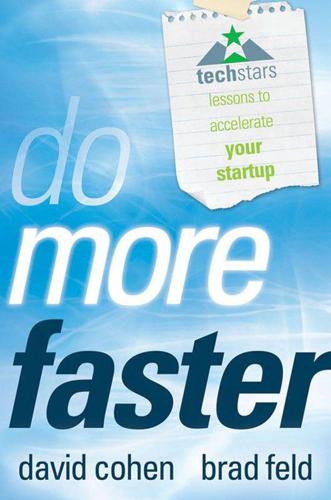
Do More Faster: TechStars Lessons to Accelerate Your Startup
by
Brad Feld
and
David Cohen
Published 18 Oct 2010
It sounds easy, but following this advice is not always intuitive. For example, roughly over half of the companies that come to the Colorado Law School's Entrepreneurial Law Clinic previously worked with independent contractors on a handshake basis. These companies are surprised to learn that the contractor, not the company, may well own IP developed by the contractor. A simple solution when working with independent contractors is to have a written contract that unambiguously assigns IP over to the company. By having a legal entity formed, it is easier to have agreements and assignments that get IP into the company.
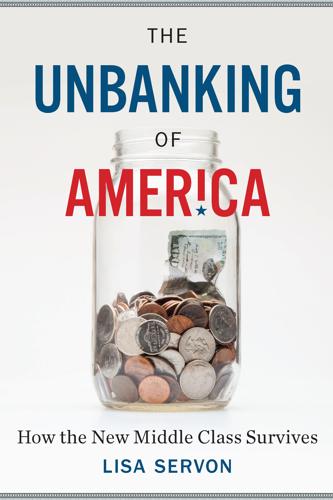
The Unbanking of America: How the New Middle Class Survives
by
Lisa Servon
Published 10 Jan 2017
Despite this new regulation, both the Consumer Banking Project at the Pew Charitable Trusts and the Consumer Financial Protection Bureau (CFPB) have found that the opt in/opt out process is confusing, and many customers don’t know whether they have opted in or out. More than half of the consumers surveyed for a Pew study don’t recall opting in to their bank’s overdraft service. Both Pew and the CFPB found that consumers would rather have their transactions declined than pay the overdraft fees. Many independent contractors are willing to pay the fees charged by alternative financial-services providers to “stay afloat,” as my contractor Tom puts it. But others simply need their money as soon as they can get it. Customer after customer told me that they couldn’t afford to have the bank hold their check, waiting for it to clear.
…
But the financial advising business has taken two substantial hits over the past fifteen years: first, when the dot-com bubble burst in the early 2000s, and then when the 2008 financial crisis occurred. David couldn’t foresee these shocks, and his earnings dipped both times, leaving him unprepared and unable to manage his expenses until business picked up again. A key factor in this increase in income volatility is the rise in part-time work and tenuous “independent contractor” arrangements. Twenty percent of employed individuals are working part-time, the highest part-time rate since 1983, and their predicaments are often painfully difficult, and sometimes tragic. In August 2014, a woman named Maria Fernandes died in her car while taking a nap between shifts at her four part-time jobs.
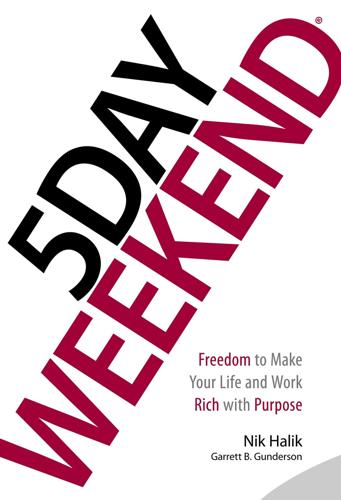
5 Day Weekend: Freedom to Make Your Life and Work Rich With Purpose
by
Nik Halik
and
Garrett B. Gunderson
Published 5 Mar 2018
SalesIncome directly from commissions from the sale of goods or services. Real estate, insurance, direct marketing, and a wide variety of other types of sales, including technology, pharmaceuticals, and business services. Income is a percentage of the sales amount or a flat fee. You may be an independent contractor or an employee. Frequency of Work: Varies greatly depending on whether you’re an independent contractor or an employee. Presence: Not required on an ongoing basis. Focus is on performance, not presence. Owning a Business, Working in It, Managing ItSalary and/or income from the profits of a business that you own fully or partially. Your participation in the business is significant and often requires long hours.
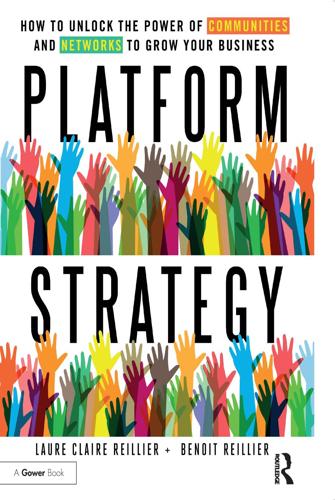
Open for Business Harnessing the Power of Platform Ecosystems
by
Lauren Turner Claire
,
Laure Claire Reillier
and
Benoit Reillier
Published 14 Oct 2017
Who do platform participants work for? While this chapter focuses on competition issues, it is also important to mention the tension between labour laws in many countries and many platforms’ use of self-employed or independent contractors. When the California Labor Commission suggested that an Uber driver could in fact be considered an employee, rather than an independent contractor, it sent shockwaves throughout the industry. Similar judgments have been reached in UK courts,5 where the self-employed status of Uber drivers has been called into question. Such findings, under appeal by Uber at the time of writing, would have far-reaching consequences since they would undermine many platform business models that are predicated on the participation of self-employed workers.
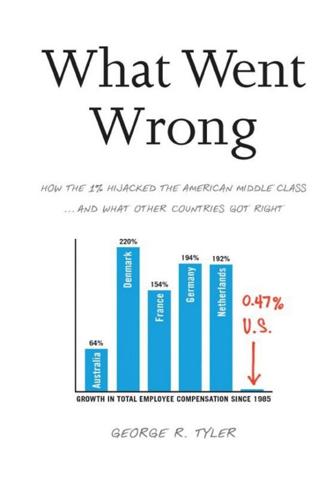
What Went Wrong: How the 1% Hijacked the American Middle Class . . . And What Other Countries Got Right
by
George R. Tyler
Published 15 Jul 2013
Yet American managers didn’t even rank wages among their top five retention tools; instead, they prioritize ephemeral steps such as enriched “supervisor relationships” and improved “workplace culture.”15Similar findings are noted in the Society for Human Resource Management’s 2007 Job Satisfaction Survey Report.16 The American judiciary has added to the downward spiral of wages, indifferent to enforcing employee protections or the right to organize and refusing even to establish guidelines on burgeoning issues including independent contractors. Among others, Nissan and SuperShuttle exploit the resulting gray area to routinely misclassify employees as contractors or franchisees. SuperShuttle, for example, shifts traditional routine firm costs (equipment purchases, fringe benefits, and Social Security/Medicare fees) to employees, while also dodging traditional obligations (minimum wages, overtime pay, and workers’ compensation fees).
…
Rosen of the Peterson Institute testified before Congress in 2007 that tighter rules imposed since 1980 reduced the share of jobless Americans eligible for unemployment compensation by nearly a quarter.27 Eligibility was sharply reduced, for example, to include only former full-time employees with at least one year of employment. That excluded the rapidly growing legions of independent contractors and part-timers being utilized today to implement just-in-time staffing needs in the vast service sector and elsewhere. The Obama administration and Congressional Democrats reversed this trend in February 2009, nearly doubling eligibility to about 70 percent. They also extended coverage to 99 weeks during the recession.28 Even so, the duration of support in nations such as Belgium, Denmark, and Australia is at least double this temporary American maximum of 99 weeks, according to OECD data.29 Unemployment benefits are supplemented in America mostly with food stamps and smaller assistance programs administered locally or by states.
…
Fair Work America should also enjoy the same mandatory arbitration authority provided Fair Work Australia, with short deadlines to settle wage disputes. Other wage-related reforms should enhance employee organizing and bargaining rights and rigorously police the employer tactic of misclassifying employees as independent contractors. Importantly, work councils should be mandated to ease the drag on productivity from the hierarchical structure of American firms. After all, American firms in northern Europe routinely operate with work councils, and their shareholders would benefit from the same system back home. Turning to minimum wages, the higher levels proposed repeatedly by President Obama are important ancillary steps to boosting productivity and wages.

The Pirates of Somalia: Inside Their Hidden World
by
Jay Bahadur
Published 18 Jul 2011
After being held for fifty-two days, during which they were allegedly abused and brutally beaten by the pirates, the Germans were released for a reported ransom of $1 million.1 Yusuf’s references from his previous employers must have been laudatory, because Ombaali’s gang quickly sought his services. “We knew him from that operation, so we gave him a call,” said Ombaali. Interpreters, I would later learn, are in such high demand that they essentially functioned as independent contractors, hiring themselves out to various pirate groups and moving from job to job. Many translators are simply English-speaking members of the Somali diaspora out to make a few quick dollars in their homeland—where English is rarely spoken by the local inhabitants—while others establish themselves as dilals, professional negotiators who take pride in exacting the best possible price from shipowners.
…
“SomCan was keeping the security of their own licensed ships, instead of keeping the security of the sea,” explained Abdiwahid Mahamed Hersi “Joaar,” the long-serving director general of the Puntland Ministry of Fisheries. SomCan’s tripartite role as law enforcer, trade commissioner, and independent contractor enabled the company to establish what could be described as a maritime protection racket. From 2002 to 2005, the coast guard served directly as an agent for the Thai concession Sirichai Fisheries, guaranteeing the company’s security in Somali waters and protecting it from local fishermen-cum-pirates, even to the point of posting its own armed guards on the decks of Sirichai’s ships.
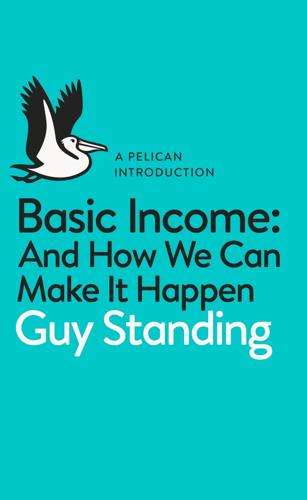
A Pelican Introduction: Basic Income
by
Guy Standing
Published 3 May 2017
In developing country contexts, basic income and cash transfers have been shown to have positive effects on entrepreneurship;3 in Madhya Pradesh, basic income was strongly associated with new entrepreneurial activities.4 In industrialized countries, basic income would provide essential security for the growing numbers of unwillingly self-employed and independent contractors, as well as for those with entrepreneurial ambitions. More generally, it would encourage people to seek training and job opportunities in line with their skills and motivations rather than those most likely to ‘put food on the table’. This would make the economy more productive by facilitating the efficient reallocation of talent and increasing the level of job engagement.
…
Since the UK National Minimum Wage Act was introduced in 1998, only nine employers have been prosecuted for not paying it, out of hundreds of firms found to be breaking the law. Those who do not respond to ‘naming and shaming’ must be pursued in lengthy proceedings through the courts. In addition, minimum wages only cover employees, ignoring those without jobs as well as the growing numbers of self-employed and so-called independent contractors that are now a feature of all industrialized countries. And they are an inefficient way of tackling poverty because, in Britain at least, most people on the minimum wage do not live in the poorest households. Opponents of a minimum wage, or who consider its level ‘too high’, usually claim that it will result in companies employing fewer workers in order to save on payroll costs.
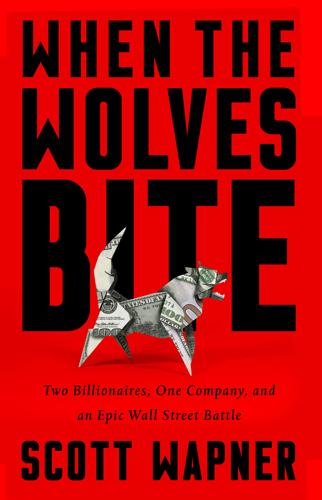
When the Wolves Bite: Two Billionaires, One Company, and an Epic Wall Street Battle
by
Scott Wapner
Published 23 Apr 2018
She was just thirty-six years old.13 “That’s why I dedicated my life to finding a better way to help people manage their weight,” Hughes later said of his mother’s passing, pushing the phony story until well after her death.14 In the mid-1970s, Hughes began selling weight-loss products for the Slendernow brand, which was owned by the Seyforth Laboratories.15 Its founder, Mark Seyforth, was a pioneer in the fast-growing direct-selling industry, where products are sold by individuals acting as independent contractors.16 People who signed up would either use the products themselves or sell them to family, friends, and co-workers, sometimes trying to recruit new salespeople into the operation. Their pay structure was controversial. Seyforth had invented a system where the independent contractors, called distributors, were compensated for what they sold as well as for how many new recruits they brought in. This multilevel marketing (MLM) structure was booming at the time.17 Mary Kay Cosmetics, Amway, and Tupperware were well-established brands with histories dating back to the 1950s, but in the 2000s the practice was experiencing a rebirth, and these familiar companies were doing well, along with hundreds of lesser-known brands.

Home Comforts: The Art and Science of Keeping House
by
Cheryl Mendelson
Published 4 Nov 1999
The exemption applies if the baby-sitter was younger than age eighteen at any time during the year, even if he or she turned eighteen on January 2. Independent Contractors. You need not pay employment taxes for any “independent contractors” who worked for you. An independent contractor is not your employee. Rather, he or she is someone who runs his or her own business or who follows an independent trade, business, or profession, offering services to the general public. (Independent contractors file schedule C, for the self-employed, and they pay their own taxes.) When you control or direct only the result of the work and not the means and methods of accomplishing the result, that is a good indication that the worker is an independent contractor, not your employee.
…
When you control or direct only the result of the work and not the means and methods of accomplishing the result, that is a good indication that the worker is an independent contractor, not your employee. See IRS Publication 926, “Household Employer’s Tax Guide.” There are many other factors that might be considered in making this determination. If your housecleaner cleans for many other households besides yours, supplies the cleaning tools and materials, and determines what to do and how, these are all indications that he or she is not your employee but is running his or her own business. If you are in doubt about whether any worker is an independent contractor or an employee, ask your lawyer or accountant for advice, or call the IRS information number in your area and request help.
…
Every employer, including any employer of domestic workers on a regular basis, is required to complete a Form I-9, Employment Eligibility Verification, for each employee, foreign or not. The only exception is for workers employed on a sporadic, irregular, or intermittent basis. Form I-9 must be completed for part-time domestic employees as well as full-time ones, even if the employee works only a few hours for you each week. You do not need to complete Form I-9 for independent contractors. The purpose of this form is to require employers to make at least a superficial determination that their employees are working in the United States legally. The form requires you to obtain at least minimal information about your employees and to look at some minimal documentation. You do not have to do any detective work or determine whether the documentation is valid or forged.

Home Building Secrets: Save Thousands Building Your Next Home: For the first time homeowner or the second time homeower who did not learn from their first mistakes
by
Ronald Jones
Published 22 Dec 2015
Get your price in writing, ask for an itemization. Do not accept, “I will build your house for $200.000.00.” You need far more details that just a price. Do not pay your contractor or sub-contractors by the hour. You will typically always pay more. And, if you pay by the hour, guess what, you have just transformed your independent contractor into one of your employees. If you pay by the hour, you will be paying for driving time, lunch breaks, every mistake that requires time to fix, unforeseen delays, and a variety of other factors. You will be paying every time your contractor thinks about your job. Don’t be a pest! Assuming you have hired a professional because you do not know how to build a house, quit trying to prove that you know more than the contractor.
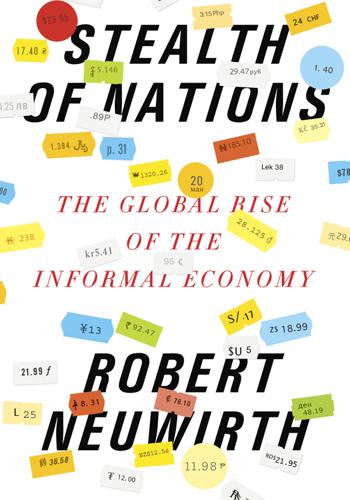
Stealth of Nations
by
Robert Neuwirth
Published 18 Oct 2011
It’s ubiquitous, yet you won’t find it in any stores or at any snack bars, because Gala is sold almost exclusively by hawkers who line the city’s congested expressways and roam the bus depots. UAC does not hire these hawkers. Indeed, the company says it doesn’t even know who they are. The hawkers are independent contractors who work for distributors. And the distributors, in turn, are independent firms that buy the sausage rolls in bulk from UAC. UAC made a conscious decision to sell Gala this way, and, without this large force of street hawkers, no one would be buying Gala, and UAC’s profits would decline.
…
Indeed, recent census estimates have shown that twenty-seven million Americans—almost one-fifth of the U.S. workforce—report that they are working only part-time, and nine million of them say that they’ve been forced into part-time work because they simply couldn’t find a full-time job. And one study has suggested that 3.4 million people around the country are working full-time but are classified as independent contractors so their employers can avoid the expense of providing health insurance and other benefits. And, of course, a whole lot of people are working extra jobs—off or on the books. Once upon a time we had an honorable word for this. If someone worked a second job—it might involve after-hours hourly wages, or a self-employed situation doing something the person enjoyed more than his or her day job—we said they were “moonlighting.”

Driverless Cars: On a Road to Nowhere
by
Christian Wolmar
Published 18 Jan 2018
Uber already got itself thrown out of San Francisco when it attempted to test its Volvo cars there, and it ended up decamping to Arizona where the regulatory framework is looser. Indeed, among potential fleet owners it is Uber that has been most eager to dispense with drivers. Not surprising since it uses (not ‘employs’, since the whole Uber model is based on its drivers being ‘independent contractors’, a situation which is currently being challenged in Britain’s courts) at least 160,000 of them (a figure obtained in early 2015). In January 2015 the company claimed that entirely autonomous taxis would be available in 2018. At the time, as already mentioned, Uber’s chief executive, Travis Kalanick, indicated in a tweet that he expected Uber’s fleet to be entirely driverless by 2030.
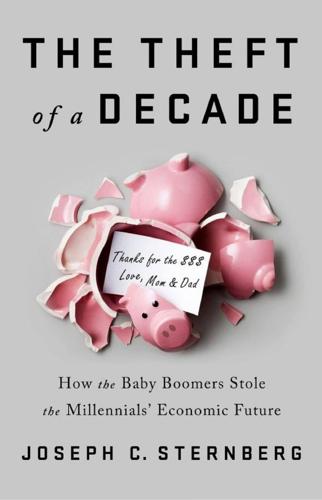
The Theft of a Decade: How the Baby Boomers Stole the Millennials' Economic Future
by
Joseph C. Sternberg
Published 13 May 2019
The central premise of Uber or Lyft or Airbnb or many other sharing platforms is that the app will allow a micro-entrepreneur (or the platform itself) to extract maximum profits from personal assets like a car or an apartment that otherwise would sit idle for large parts of the day. The companies are desperate to have as few employees as possible. Uber has waged a series of years-long legal battles to stick to its designation of taxi drivers using its service as independent contractors rather than employees eligible for benefits and overtime pay.¶ The other thing that’s new about this type of temporary work for Millennials is how pervasive it has become. This is controversial, because the government still struggles to measure this evolution in the labor market, and some data indicate that fewer workers might be engaged in gig employment than the media would have us believe.
…
For example, will a full-time employee at a large company think of renting out her spare room on Airbnb for extra cash as a “job”?* Differences in how surveys phrase the question may account for differences in the number of gig workers various polls find. For instance, another survey found that 24 percent of Millennials had reported working a freelance or independent contractor gig in 2015, compared to only 9 percent of Baby Boomers.46 Meanwhile, measurements of what people actually do and how they actually work tend to point to a much bigger gig economy than surveys. The number of 1099 forms that record self-employment income for tax purposes has shot up by 22 percent since 2000, compared to a 3.5 percent decline in the W-2 tax filings that employers use to report pay for regular employment.
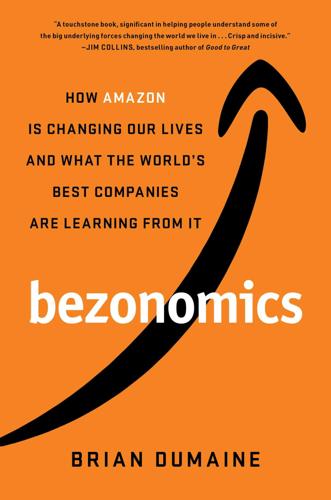
Bezonomics: How Amazon Is Changing Our Lives and What the World's Best Companies Are Learning From It
by
Brian Dumaine
Published 11 May 2020
Amazon Flex is its same-day delivery service, which operates in some ways like Uber, using independent contractors who drive their own cars and get paid by the delivery. In fact, some Amazon Flex drivers are actually moonlighting Uber drivers. As is the case with many gig economy workers, these drivers find it hard to make a living. They might get paid $18 to $24 an hour for delivering Amazon packages to homes and apartment buildings, but after deducting gas, insurance, and maintenance costs, their pay ends up much less than that. Also, the Flex drivers, because they’re independent contractors, don’t receive corporate benefits, even though some wear Amazon uniforms and report to an Amazon manager.

Forward: Notes on the Future of Our Democracy
by
Andrew Yang
Published 15 Nov 2021
But Americans are turning on their television sets every week to exploitation; if you address that, you can change the narrative. What do I mean? Professional wrestling shows are among the highest-rated shows on cable every week. Vince McMahon has been falsely labeling them independent contractors for years while controlling every aspect of their behavior, including whether they use Twitch or Cameo, and firing any employee who breathes the word “union.” It’s a similar situation for UFC fighters who are labeled independent contractors even while their lives and schedules and attire are controlled. NCAA athletes are being pushed to play sports in the time of COVID because schools have too much on the line financially for them not to play, and the athletes don’t have a say.
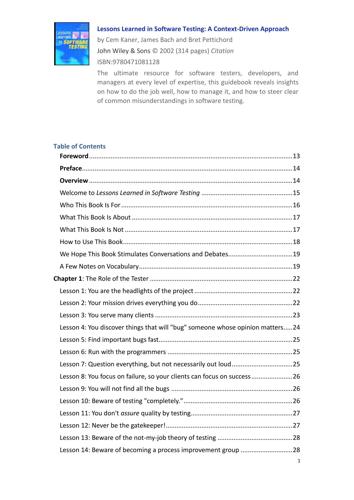
Lessons-Learned-in-Software-Testing-A-Context-Driven-Approach
by
Anson-QA
You can choose the certification that seems most useful or most sensible to you. It is an educational vehicle and not a regulatory vehicle (see Lesson 273, "A warning about the efforts to license software engineers"). We should raise one concern. If you get certified and you're an independent consultant or independent contractor, be cautious about how you market your services. If you present yourself as being certified in Quality Engineering (or some other specialty), you can be held to have promised that you have a certain level of expertise and that you will perform your services up to the level that one should expect from someone who has that level of expertise.
…
In fields that face significant malpractice litigation, insurance premiums are in the thousands, sometimes in the tens of thousands of dollars per year. Many states require licensed professionals to carry malpractice insurance if they practice 208 their profession in that state. How much do you want to have to spend on insurance in order to be allowed to practice as an independent contractor or consultant? Our statements about malpractice are sometimes misinterpreted as efforts to protect engineers who do bad work. We would like to clear that up. We are passionate about software quality. We strongly favor laws that hold developers, including development companies, accountable for bad work.
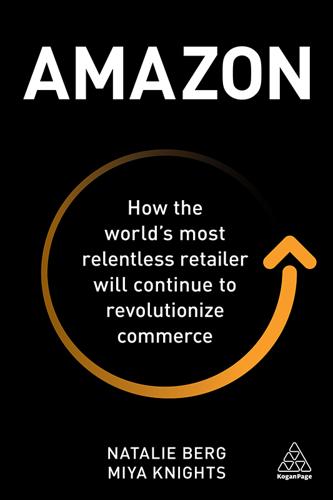
Amazon: How the World’s Most Relentless Retailer Will Continue to Revolutionize Commerce
by
Natalie Berg
and
Miya Knights
Published 28 Jan 2019
Its use of express courier services to deliver Prime Now orders is also another extra labour-intensive expense Amazon must absorb for the price of having the fastest and most extensive last mile. This is why it also quickly followed up on its initial launch of Prime Now with the introduction of Amazon Flex, a platform for independent contractors to provide delivery services, towards the end of 2015. The platform capitalizes on the expanding gig economy popularized by Uber and other express delivery rivals to first meet the demand for Prime Now, but it now manages regular Amazon deliveries too.4 In the same way as Uber matches drivers with what it calls ‘riders’ and Instacart matches customers with ‘shoppers’, the Amazon Flex Android-based app directs ‘Flexers’ to delivery locations within a radius local to them.
…
The platform capitalizes on the expanding gig economy popularized by Uber and other express delivery rivals to first meet the demand for Prime Now, but it now manages regular Amazon deliveries too.4 In the same way as Uber matches drivers with what it calls ‘riders’ and Instacart matches customers with ‘shoppers’, the Amazon Flex Android-based app directs ‘Flexers’ to delivery locations within a radius local to them. Flex is interesting for two main reasons: the first is that its entry into the ‘gig economy’ by employing independent contractors over its last mile hasn’t exactly proved the most customer-centric solution to last-mile express delivery Amazon might have hoped for. True, it gives Amazon end-to-end control, where it can share its last-mile visibility with customers through its delivery tracking app feature. But the fact that Flexers use their own vehicles and initially wore nothing that identified them as working for Amazon, led to an initial backlash by worried neighbourhood watch activists, who were ‘creeped out’ by these strangers coming to their door.5 Like Uber, Amazon has also had to defend contractor lawsuits brought by ex-Flexers, who argued that they took home less than minimum wage after costs associated with running their own vehicles.

Six Degrees: The Science of a Connected Age
by
Duncan J. Watts
Published 1 Feb 2003
By this statement he meant that the larger the pool of potential consumers, the more resources a firm can afford to invest in building production facilities, designing and creating specialized machinery, and employing workers, thereby benefiting from economies of scale. But this description doesn’t specify why it should be formal entities called “firms” that are responsible for production, instead of, say, independent contractors, temporary workers, or consultants. Nor does the division of labor necessarily imply that firms, when they do exist, should resemble the hierarchical authority structures that form our image of nineteenth- and early-twentieth-century industrialization. Just because tasks can be accomplished more effectively by breaking them down, in a hierarchical fashion, into more and more specialized subcomponents, doesn’t imply on its own that firms have to be organized in the same way.
…
To cut a (very) long story short, the most generally agreed-upon economic theory of industrial organization essentially divides the world between hierarchies and markets. Firms, it claims, exist because markets in the real world suffer from a set of imperfections that the Nobel Prize–winning economist Ronald Coase called transaction costs. If everyone could discover, draw up, and enforce market-based contracts with everyone else (if we could all be independent contractors, for example), then the immense flexibility of market forces would effectively eliminate the need for firms entirely. But in the real world, as we have already seen in a number of contexts, information is costly to discover and hard to process. Furthermore, any agreement between two parties, even if it seems like a good idea at the time, is subject to uncertainty about future conditions and unexpected eventualities.

Exponential: How Accelerating Technology Is Leaving Us Behind and What to Do About It
by
Azeem Azhar
Published 6 Sep 2021
In the developed world, what the pro-gig-work crowd normally focuses on is flexibility. A gig worker can work when they want rather than under the permanent subordination of an employment contract. Lyft and Uber drivers show remarkable levels of satisfaction with the flexible work set-up: 71 per cent of drivers want to remain independent contractors, albeit down from 81 per cent prior to the Covid-19 pandemic. When asked what is most important to them, drivers ranked pay and flexible schedule as their top priorities.53 In a similar vein, a 2018 British government survey reckoned that more than half of gig workers were satisfied with the independence and flexibility provided by their jobs.54 If gig work is generally more flexible and less formal in richer countries, the reverse is often true in poorer ones.
…
The state of California passed Assembly Bill 5 in 2019, which mandated freelancers to be classified as employees and so have access to the requisite perks. Uber, Lyft and DoorDash were not keen. Through the most expensive lobbying effort in Californian history, they successfully got the state to pass Proposition 22, which granted them an exception – to keep classifying their drivers as independent contractors, albeit with some wage and health protections.59 A similar battle was underway across the Atlantic. In London, James Farrar and Yaseen Aslam, two drivers, took Uber to court, arguing that they weren’t self-employed but should be considered workers under British law. (The classification of ‘worker’ in British law is a curious one – it does not offer all the protections of an employee, but more than those of a freelancer.)

Arriving Today: From Factory to Front Door -- Why Everything Has Changed About How and What We Buy
by
Christopher Mims
Published 13 Sep 2021
For all the TED Talk–style hand-waving and hypothesizing by analysts, technologists, and think tanks, it remains to be seen what the real-world impacts of autonomous trucking will be. A world in which autonomous trucks have taken all the plum gigs—regular routes over long distances, for example—is just as likely to be one in which independent contractors continue to be exploited as they haul goods between the hubs served by autonomous trucks, says sociologist Steve Viscelli. In this future, something like an “Uber for freight hauling” would mean the same downward pressure on wages that such marketplaces for labor have always meant. As one economist who worked with actual Uber data discovered, the wage that workers in such fluid, two-sided markets for unskilled labor inevitably garner is whatever the local minimum wage happens to be.
…
It’s important to qualify what I mean by “the market” here, since it excludes the largest private delivery network ever conceived—Amazon’s. In June 2018, Amazon announced that entrepreneurs would have the opportunity to start their own regional delivery services, buy their own Amazon-branded vans, and start shipping for Amazon as independent contractors. Just eighteen months later, analysts predicted that Amazon would soon be moving more packages than FedEx. By the middle of the 2020s, Amazon Logistics, as it’s known, is projected to take the number one spot from UPS. By one estimate, the volume of Amazon’s air and ground delivery network grew 155 percent from 2019 to 2020 alone, from about 750 million to 1.9 billion packages.

The Secret Life of Groceries: The Dark Miracle of the American Supermarket
by
Benjamin Lorr
Published 14 Jun 2020
But there is always some other team just starting out that is willing to come get the load and drive it to its destination.” And the process continues. Large trucking companies have one hundred new recruits coming in every week. They have that 112 percent turnover. And so we have cheap freight. “These companies don’t have enough independent contractors willing to do that type of work. Especially not if they have a contract with a company the size of Amazon,” Desiree explains. “What they do have are students driving team.” * * * — CRST, which runs one of the larger training programs, brings in approximately ten thousand new drivers each year alone.
…
And of course, expertise being a humbling thing to achieve, these auditors were likely to know exactly how much they didn’t know about lettuce wash cycles and thus subtly defer to the undeniable experts who were running the plants or farms in question when they noticed something borderline or suspicious.* Similarly, it became useful to hire independent contractors rather than nurturing long-term employees, thus pushing the question of auditor quality to another day. All of which combined to ensure that whenever the boom subsides, the standard of the mildly inexperienced, mildly untrained, mildly invasive auditor will have become the norm in the industry rather than a temporary thing.

Blackwater: The Rise of the World's Most Powerful Mercenary Army
by
Jeremy Scahill
Published 1 Jan 2007
We’re going to rock their world.”55 Interestingly, the covert operations Black organized immediately after 9/11 relied heavily on private contractors, answering directly to him, rather than active-duty military forces. Black’s men used their contacts to recruit about sixty former Delta Force, ex-SEALs, and other Special Forces operators as independent contractors for the initial mission, making up the majority of the first Americans into Afghanistan after 9/11.56 In late 2001, Black was exactly where he had wanted to be his entire career, playing an essential role in crafting and implementing the Bush administration’s counterterror policies. “There was this enormous sense among the officers that had lived in this campaign before Sept. 11 that . . . finally, these lawyers and these cautious decision makers who had gotten in our way before can be overcome, and we can be given the license that we deserve to have had previously,” said Steve Coll, author of Ghost Wars.57 Black’s CTC rapidly expanded from three hundred staffers to twelve hundred. 58 “It was the Camelot of counterterrorism,” a former counterterrorism official told the Washington Post.
…
“Our Rapid Response Enterprise has global reach and can make a positive difference in the lives of those who are affected by natural disasters and terrorist events.”59 Shortly after Blackwater’s Katrina profits started rolling in, Erik Prince sent out a memo on Prince Group letterhead to “all Blackwater USA officers, employees, and independent contractors.” Its subject: “Blackwater USA National Security Oath and Leadership Standards.” It required Blackwater workers to swear the same oath to the Constitution as Blackwater’s “National Security-related clients” to “support and defend the Constitution of the United States against all enemies, foreign and domestic. . . .
…
But, more important, it also allows the mercenary companies to favorably shape the rules that govern their deployments, as Blackwater did in the aftermath of the Fallujah ambush when it was reported to be “leading a lobbying effort by private security firms and other contractors to try to block congressional or Pentagon efforts to bring their companies and employees under the same justice code as [active-duty] servicemen.”60 Well aware of the severe image problems plaguing the mercenary industry, the IPOA has attempted to bring in representatives from Amnesty International and other respected human rights organizations as consultants. 61 The IPOA boasts of a “code of conduct” written with “the input of dozens of international and non-governmental organizations, human rights lawyers, and scholars.”62 In Congressional testimony in 2006, Chris Taylor pointed to his company’s membership in the IPOA as evidence that Blackwater is “committed to defining the standards by which our independent contractors are credentialed as qualified to work in the industry, improving the federal contracting and oversight process, providing increased transparency in business operations, and encouraging discussion of our industry so that it can become more fully integrated into the process of finding solutions to difficult challenges.”63 Taylor hads also suggested that “contracting agencies” use the IPOA as a “certification, somewhat like an ISO 9000 quality-management program.”64 The IPOA Code, which all member companies are required to sign, commits its members to “agree to follow all rules of international humanitarian law and human rights law that are applicable as well as all relevant international protocols and conventions.”65 It has sections on transparency, ethics, and accountability, and IPOA warns: “Signatories who fail to uphold any provision contained in this Code may be subject to dismissal from IPOA at the discretion of the IPOA Board of Directors.”66 But the IPOA Code is not a binding document with any legal weight whatsoever.

Machine, Platform, Crowd: Harnessing Our Digital Future
by
Andrew McAfee
and
Erik Brynjolfsson
Published 26 Jun 2017
Coase proposed that the choice between firms and markets was essentially a cost minimization exercise. It almost had to be, in fact, because competition tends to drive out high-cost players. The boundary of the firm was incredibly flexible; it could be set either to encompass thousands of people and billions of dollars of assets or much more narrowly, with most people working as independent contractors, owning or renting the necessary equipment, and buying and selling goods and services from others. Companies must be so large and powerful, then, because they are often able to produce goods and services at a lower total cost than pure markets can. But why is this? Aren’t markets supposed to be super efficient?
…
As a result, ownership affects the incentives for innovation, whether large (like a new product idea) or small (like a better way to sort inventory). The bottom line is that changing ownership changes incentives, and therefore results. Employees working with someone else’s assets have different incentives from those of independent contractors who own their own assets. That’s an important reason why firm boundaries matter. A crucial question in the efficient design of a company, a supply chain, or a whole economy is how the assets, and thus incentives, are arranged. One of the fundamental reasons that firms exist, then, is that it’s just not possible for market participants to get together and write complete contracts—ones that specify who does what, and who gets what, in all possible contingencies: all the ways the real world could unfold in the future.

The Most Powerful Idea in the World: A Story of Steam, Industry, and Invention
by
William Rosen
Published 31 May 2010
Hargreaves’s experience was telling. Both ends of the clothmaking process—spinning and weaving—were dominated by artisans who defined their own interests in terms rather more complicated than a simple desire for wealth. Prior to the introduction of the jenny, Britain’s spinning was performed largely by what we would call independent contractors: the original cottage industrialists, taking raw materials from manufacturers who “put out” for contract the production of finished fabric. This was efficient—no huge capital expenses for the manufacturer, for example—but it contained within its organization what one might call a moral hazard.
…
In the first spinning machines, the operator had to simultaneously shape the winding and turn the spindles at precisely the same rate, so as to wind up the yarn—the term of art is “winding the cop”—without either stretching the yarn or allowing it to go slack. The craft was difficult enough that spinners became not only indispensable to the process, but highly protective of their place in it, exhibiting all the rent-seeking mania of a medieval guild. Along the way they transformed themselves from independent contractors into the nation’s most powerful and highly organized craft union. At one union meeting, a spinner argued violently against allowing “piecers” (the subordinates on the spinning line, who tie together threads when they break) to actually put up a cop of cotton yarn unless he was “a son, brother, or orphan nephew.”51 In the industry’s Lancashire heartland,52 mule spinners developed work rules in 1780 that remained in force until the 1960s, and partly in consequence, the new and improved ring-spinning machines, invented by the American John Thorp in 1828, which operated continuously and twisted fibers into yarn by attaching them to a rotating ring, didn’t catch on in Britain53 until the end of the nineteenth century.
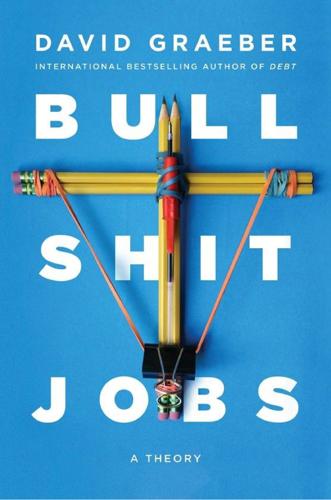
Bullshit Jobs: A Theory
by
David Graeber
Published 14 May 2018
An apartment complex in which I once lived was once plagued by a series of burglaries, that always took place on a Monday. It was eventually determined that the burglar was a hairdresser, who generally get Mondays off. 13. Many thieves, ranging from art thieves to ordinary shoplifters, will hire out their services, but as such they are still just independent contractors, hence, self-employed. The case of the hit man is more ambiguous. Some might argue that if one is a long-standing but subordinate member of a criminal organization that does qualify as a “job,” but it’s not my impression (I don’t really know, of course) that most people in such positions see it quite that way. 14.
…
Much of this argument and several of the examples are taken from the first chapter of Graeber, Utopia of Rules, 3–44. 27. Of course, this is not the way things are represented, and, naturally, in any branch of industry defined as “creative,” whether software development or graphic design, production is typically outsourced to small groups (the celebrated Silicon Valley start-ups) or individuals (casualized independent contractors) who do work autonomously. But such people are often largely uncompensated. For a good recent critical history of managerialism, see Hanlon, 2016. 28. Definitions of feudalism vary, from any economic system based on tribute-taking, to the specific system prevalent in Northern Europe during the High Middle Ages, in which land was granted in exchange for military service in ostensibly voluntary relations of vassalage—a system which outside Europe is documented mainly in Japan.

Codependent No More Workbook
by
Melody Beattie
Published 3 Dec 2011
ISBN 978-1-59285-470-7 Ebook ISBN 978-1-61649-188-8 1. Codependency—Problems, exercises, etc. 2. Substance abuse—Patients— Rehabilitation—Problems, exercises, etc. I. Beattie, Melody. Codependent no more. II. Title. RC569.5.C63B433 2011 616.86’9—dc22 2010043011 Author’s Note: As an independent contractor and freelance writer, I relied on professional research, personal experience, conclusions, and opinions to form this workbook. Although I’ve used expert opinions as resources, this book doesn’t necessarily reflect any viewpoint or opinions except my own. Neither the book nor I am affiliated with, represent, or work for any organization or treatment program.
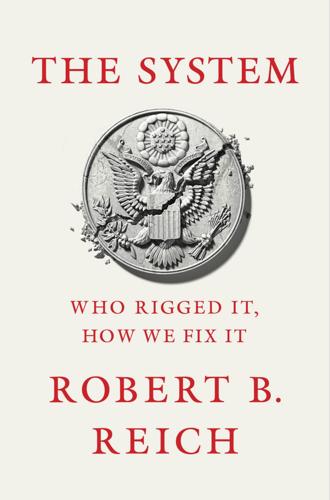
The System: Who Rigged It, How We Fix It
by
Robert B. Reich
Published 24 Mar 2020
Even before the crash of 2008, the Panel Study of Income Dynamics at the University of Michigan found that over any given two-year stretch in the two preceding decades, about half of all families experienced some decline in income. Today, nearly one out of every five working Americans is in a part-time job. Many are consultants, freelancers, and independent contractors. Eighty percent of Americans are living paycheck to paycheck. Employment benefits have shriveled. The portion of workers with any pension connected to their job has fallen from just over half in 1979 to under 35 percent today. Fifty years ago, when General Motors was the largest employer in America, the typical GM worker earned $40 an hour in today’s dollars.

Microtrends: The Small Forces Behind Tomorrow's Big Changes
by
Mark Penn
and
E. Kinney Zalesne
Published 5 Sep 2007
If they do, will that breed a more passive kind of leader—because the more aggressive ones will have broken free to start their own ventures? It has even bigger implications for certain industries. Lower-income older workers tend to work retail, often part-time; higher-income older workers tend to become consultants and independent contractors, either in the field they once mastered or in a hobby they love. And they are far more likely to run their own show: Older workers make up 7 percent of independent contractors, versus only 2.5 percent of workers in traditional arrangements. But either way, expect an easier time for the HR departments of Home Depot and CVS, as well as many technical fields. In all industries, though, employers need to adjust.

Blockchain Revolution: How the Technology Behind Bitcoin Is Changing Money, Business, and the World
by
Don Tapscott
and
Alex Tapscott
Published 9 May 2016
If partners spend more time up front determining the terms of an agreement, the monitoring, enforcement, and settlement costs drop significantly, perhaps to zero. Further, settlement can occur in real time, possibly in microseconds throughout the day depending on the deal. Most important, by partnering with superior talent, companies can achieve better innovation and become more competitive. Let’s consider the use of independent contractors. In the early days of digital trade, the blockchain accommodated only the simplest two-party transactions. For instance, if Alice needed someone to complete a piece of code quickly, she would post an anonymous “coder needed” request on an appropriate discussion board. Bob would see it.22 If the price and timing were right, he would send work samples.
…
See also Digital identity in bAirbnb, 116 for citizens, 197–98, 203–4 economic inclusion and, 176, 177–78 in financial services, 61, 64, 78–79 for IoTs, 147–48 personal avatars, 14–16, 45, 99, 204 privacy and, 41–45 Ilves, Toomas Hendrik, 197 Implementation challenges, 24, 195–96, 253–77 Big Brother watching you, 274–75 criminal use, 275–76 DAEs forming Skynet, 273–74 energy consumption unsustainable, 259–63 governing protocols, 271–72 governments stifle or twist it, 263–65 incentives inadequate for distributed mass collaboration, 267 job killer, 270–71 powerful incumbents usurping it, 265–67 technology not ready for prime time, 254–58 Inaccessibility, 256–57 Incentives, 35–39, 130–31, 202, 267 Inclusion, 49–51, 202–3, 308 economic, as fundamental right, 19–20, 175 Incumbency, 265–67 Independent contractors, 103–4, 137–38 Industrial blockchain, 154, 160 Inequality, 12–13, 173, 174, 175 Infinite data, 151, 162, 274–75 Inflation, 37–38, 256 Infrastructure management, 157, 206–7 InnoCentive, 95, 137–38 Inno360, 95, 137 In-Out Matrix, 111–12, 112 Institute for Blockchain Studies, 110, 204, 224, 248 Institute for Liberty and Democracy, 19 Insurance, 63, 64, 116–17, 159, 181 Insuring value, in financial services, 63, 64 Integrated government, 203–5 Integrity, 10, 30–33, 74, 76, 108, 199, 201–2 Intel, 38, 155 Intellectual property rights, 21 art, 239–43 music, 226–39 International Corporation for Assigned Names and Numbers (ICANN), 271, 281, 300, 301 International Labour Organization, 172–73 International Monetary Fund, 183, 281, 295 International Telecommunications Union, 195 Internet, first era.
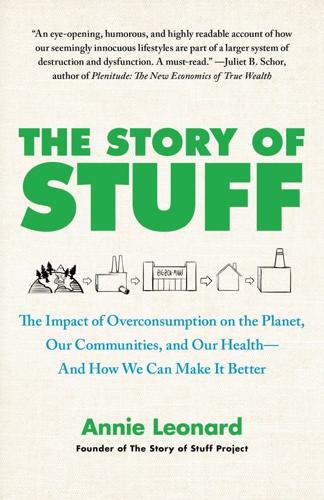
The Story of Stuff: The Impact of Overconsumption on the Planet, Our Communities, and Our Health-And How We Can Make It Better
by
Annie Leonard
Published 22 Feb 2011
Not surprisingly, no company has more trucks on America’s roads than Wal-Mart, with more than eight thousand drivers racking up more than 850 million miles per year.83 Wal-Mart, like most major retailers, frequently deals with trucking brokers who sell their services as independent contractors. This means Wal-Mart doesn’t have to buy or maintain the trucks, pay for fuel, or provide benefits for these contracted drivers—no health insurance, unemployment insurance, workers’ comp, Social Security, pension plans, vacations, or sick days. This also means they’re not required to ensure compliance with federal OSHA (Occupational, Safety and Health Administration) regulations for drivers.84 A study in New Jersey found that 75 percent of truckers (statewide, not Wal-Mart’s alone) were independent contractors, earning just $28,000 per year on average, with zero employer-paid benefits.85 Like Wal-Mart’s store employees, these drivers have to rely on public health care programs, so taxpayers are essentially also subsidizing Wal-Mart’s and other retailers’ transport systems.

Stacy Mitchell
by
Big-Box Swindle The True Cost of Mega-Retailers
and
the Fight for America's Independent Businesses (2006)
No matter what their public relations materials say, their goal is to eliminate the need for customers to spend money at other businesses—thus their relentless expansion into new services. WalMart is installing gas stations and banks in its stores. Home Depot and Lowe’s are now doing some twenty-six thousand home-installations a day of windows, roofing, flooring, and other products, so their customers do not have to hire independent contractors. Maximizing spending at their own stores is part of the reason chains favor stand-alone boxes removed from established retail districts. But even under optimal circumstances big-box stores generate little spillover for other businesses. In Rutland, Vermont, where Wal-Mart built a superstore downtown, a survey found that 80 percent of its shoppers did not visit other downtown stores.11 Another problem is that, even if the majority of the business failures and layoƒs that result from a new megastore occur in nearby towns, they are still losses that undermine the region’s economic health and prosperity.
…
Department of Labor, Bureau of Labor Statistics, “Employees on Nonfarm Payrolls by Industry Sector and Selected Industry Detail,” multiple years; Sam Porter and Paul Raistrick, “The Impact of Out-of-Centre Food Superstores on Lo- NOTES 267 cal Retail Employment” (occasional paper, National Retail Planning Forum, London, 1998). 11. Wal-Mart’s public relations site, www.walmartfacts.com; Simeon Teqel, “Every Day Higher Sales: Wal-Mart Wunderkind Walmex Shows Them How It’s Done in a Down Economy,” Latin Trade, Aug. 2003; “Home Depot, Lowe’s Squeeze Independent Contractors,” Hometown Advantage Bulletin, July 26, 2005. The Rutland survey was undertaken by DANTH, Inc., in 1998. 12. Stone, “Competing with the Discount Mass Merchandisers”; Brenden Sager, “Too Close for Comfort? Some Say Super Wal-Marts Three Miles Apart Is Overdoing It,” Atlanta Journal Constitution, July 6, 2005, B1. 13.
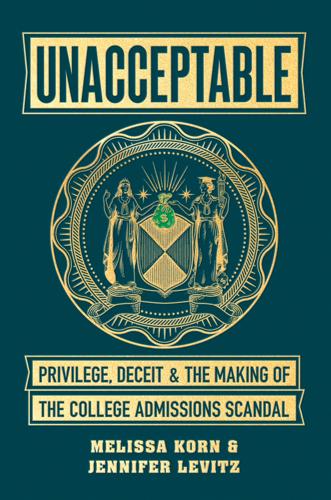
Unacceptable: Privilege, Deceit & the Making of the College Admissions Scandal
by
Melissa Korn
and
Jennifer Levitz
Published 20 Jul 2020
While coaches of nonrevenue sports may have whined about their salaries, they had that one particularly useful perk: minimal oversight of recruiting and major influence with the admissions office. Ernst started taking payments from Singer or others as far back as 2007, and he would be listed at times as an independent contractor, paid six figures, on Singer’s foundation’s annual tax documents. In exchange, Ernst tagged as recruits at least a dozen applicants, some of whom didn’t play competitive tennis. The government would say he also took in revenue from parents outside Singer’s client base and solicited a $220,000 bribe from one father, who paid via check, cash, and school tuition payments for Ernst’s daughters.
…
In 2015, the foundation said it spent $287,000 “developing and researching student placement process at eastern US Tier One Universities, and the average cost per student.” A few pages later in that same document, Key Worldwide says it paid Gordon Ernst, the Georgetown tennis coach, $287,000 as an independent contractor, listing no description of services. And in 2016, the foundation gave him $825,000 for “consulting.” Singer would later say parents gave to the charity knowing the payments were for side deals to get kids into college, and they were only pretending to donate to help needy kids. Singer’s bookkeeper, Steven Masera—listed as treasurer of the foundation on tax documents—was generally the one responsible for making sure parents came through on their promised donations, and distributing receipts for those gifts after.

The View From Flyover Country: Dispatches From the Forgotten America
by
Sarah Kendzior
Published 24 Apr 2015
—Originally published March 12, 2013 Who Is a “Journalist”? People Who Can Afford to Be On September 12, a U.S. Senate panel approved legislation designed to protect journalists from having to reveal their confidential sources. In order to do this, the panel had to define “journalist.” According to the proposed law, a journalist is “an employee, independent contractor or agent of an entity that disseminates news or information … [who has been] employed for one year within the last 20 years or three months within the last five years.” The definition was met with approval by some and dismay by others. Politico, a website that tracks the minutiae of the D.C. elite, praised it as “a step forward for independent and non-traditional media organizations.”

Chicken: The Dangerous Transformation of America's Favorite Food
by
Steve Striffler
Published 24 Jul 2007
Perdue, for example, was forced to compensate such workers a total of $, in unpaid overtime. Wayne Farms, the sixth-largest poultry producer in the country, paid almost $, to thirty-seven workers for the same violation. As a result of these and other problems, integrators are now hiring independent contractors to do the work, effectively relieving the industry of any responsibility for pay, working conditions, benefits, vacation time, and the like. Unfortunately, the industry record is equally troubling when it comes to consumer safety. Contaminated chicken kills at least one thousand people and sickens millions of others every year in the United States.
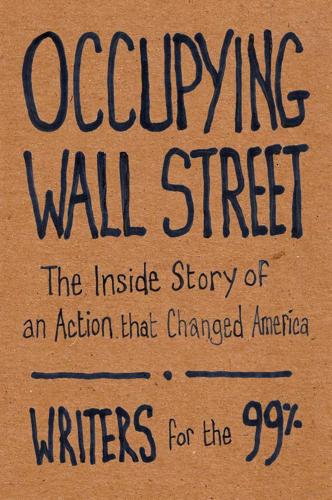
Occupying Wall Street: The Inside Story of an Action That Changed America
by
Writers For The 99%
Published 17 Dec 2011
While the strike did not totally shut down the city, it did garner the widespread support of students, workers, labor unions, and even small business owners, some of whom closed down in solidarity with the Occupy movement. Thousands of demonstrators, with tacit solidarity from ILWU dockworkers and independent contractor port truck drivers, shut down the Port of Oakland for the evening. The success of this “General Strike” in Oakland invigorated activists across the country and the world, leading to solidarity actions by the New York occupation and others, and giving many a new sense of the possible and the power of the 99 percent.

The New Class War: Saving Democracy From the Metropolitan Elite
by
Michael Lind
Published 20 Feb 2020
When China is excluded from the data, developing countries grew at a lower rate in the globalizing era of 1980–2000 than in the more protectionist period of 1960–1980.6 Dani Rodrik has argued that developing countries today and in the future can no longer benefit from export-oriented manufacturing strategies like those of China, Japan, South Korea, and Taiwan and must instead focus on upgrading their nontraded domestic service industries.7 * * * — GLOBAL LABOR ARBITRAGE in the forms of offshoring and immigration is not the only cause of rising inequality and stagnant wages in the US and similar nations, or even the most important. Only a minority of workers labor in import-competing industries or compete directly against immigrants at home. And wages and unemployment levels are affected by many other factors, including changes in tax laws, reclassification of employees as independent contractors, zero-hours contracts, central bank austerity policies, and, in the US, the continuing practice of interregional labor arbitrage among states and the erosion of the minimum wage by inflation. But the two forms of global labor arbitrage have had their effects multiplied by weakening two institutions that reinforce the bargaining power of workers: unions and the welfare state.
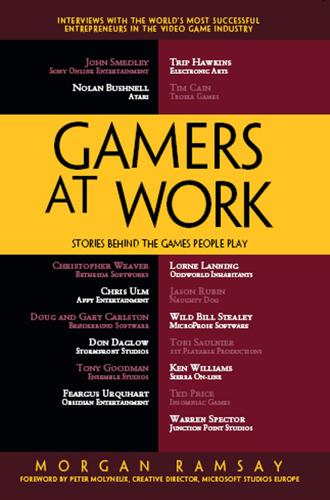
Gamers at Work: Stories Behind the Games People Play
by
Morgan Ramsay
and
Peter Molyneux
Published 28 Jul 2011
I have a natural talent for programming and graduated at the top of my class. From 1972 to 1979, I worked in a wide variety of software jobs in Los Angeles, including Children’s Hospital, Bekins Moving and Storage, Financial Decision Systems, Aratek Services, Informatics, McDonnell Douglas, and more. I had a few full-time jobs, but most of my work was as an independent contractor specializing in online networks. My consulting practice was called On-Line Systems. This was at a time when the idea of terminals connected to a mainframe computer was just getting started. Just as my life changed when I saw my first mainframe, I knew the second I saw a microcomputer that my life would change forever.
…
Rubin: Naughty Dog made the decision to not renew its deal with Universal Interactive. By the time that Crash 3 rolled around, Universal’s role had shrunk to nothing. Sony was financing and publishing the games, and additionally providing valuable worldwide production advice. Mark Cerny, who started at Universal and was a large contributor to Crash’s success, had become an independent contractor and continued to work with us. And, of course, Naughty Dog was doing the heavy lifting of developing the titles. Universal was simply being paid for the intellectual property rights. Andy and I decided that we were not willing to split the developers’ share of revenue with an entity which was contributing nothing to the mix, which was extremely difficult to work with, and which was actively trying to take credit for Crash’s success.
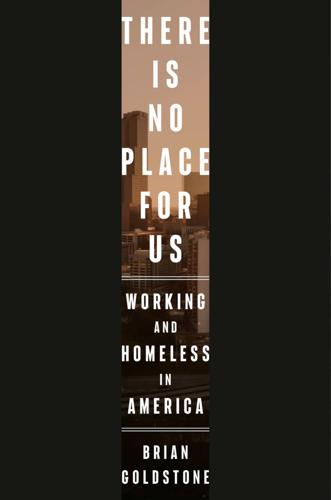
There Is No Place for Us: Working and Homeless in America
by
Brian Goldstone
Published 25 Mar 2025
Thus Kara frequently found herself accepting three- or four-dollar orders that required her to drive a total of ten miles, sometimes even farther. In Atlanta traffic, it could take a half hour or more to drive that distance. What made this work especially brutal was the fact that DoorDash, like delivery apps such as Uber Eats, Grubhub, and Instacart, classified its drivers not as employees but as “independent contractors,” allowing the company to circumvent labor laws that applied to all other businesses. Dashers were not entitled to a minimum wage, overtime and sick pay, health insurance, or workers’ compensation for injuries on the job. Nor, crucially, were their work-related expenses reimbursed: drivers had to cover their own gas, cellphone use, and any necessary repairs to their vehicle.
…
“I will contact you as soon as I get a response,” she wrote, “but I plan to email them daily until the form is completed and returned.” At week two, Kara received a message from DoorDash. Hi, This email is to notify you that your DoorDash Dasher account has been deactivated due to multiple incidents of extreme lateness. This is a violation of our DoorDash Independent Contractor Agreement. After our review and in the interest of maintaining safety of all users, we have deactivated your DoorDash Dasher account. Kara was dumbfounded. She had been given no advance warning. A quick Google search revealed that by “extreme lateness” DoorDash meant any order dropped off eleven minutes or beyond the anticipated delivery time.

The Start-Up of You: Adapt to the Future, Invest in Yourself, and Transform Your Career
by
Reid Hoffman
and
Ben Casnocha
Published 14 Feb 2012
On our website, we link to each of these books, as well as to numerous other articles, blogs, Twitter feeds, and more. Free Agent Nation: The Future of Working for Yourself By Daniel H. Pink In 2002, Pink made popular the phrase “free agent” to describe the self-employment phenomenon in the United States. At the time, Pink estimated that one-quarter to one-third of American workers worked as independent contractors. He explores their attitudes toward autonomy, informal networks, self-constructed safety nets, and more. The mentality of the self-employed people Pink profiles is relevant to anyone who wants to think more like an entrepreneur. The Brand You 50: Or, Fifty Ways to Transform Yourself from an “Employee” into a Brand That Shouts Distinction, Commitment, and Passion!
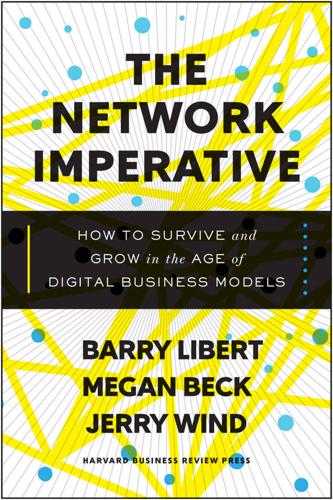
The Network Imperative: How to Survive and Grow in the Age of Digital Business Models
by
Barry Libert
and
Megan Beck
Published 6 Jun 2016
Here’s Why the Contractor Model Works Anyone who has worked in the corporate world knows how difficult it is to take a project from inception to implementation. Even the simplest undertakings somehow become epic battles against corporate dragons, such as competing interests, organizational politics, budget constraints, and plain old inertia. Remarkably, though, a group of independent contractors can sometimes come together efficiently to complete a complex project that an organization might struggle with for years. The Hollywood model, for example, benefits from clear expectations for each role, workers who have specialized expertise, and recurring project opportunities. It used to be difficult to find available independent workers with the right skills for a particular need, but online networks such as Linked-In, Upwork, and Guru have dramatically reduced the friction in the contract labor market.
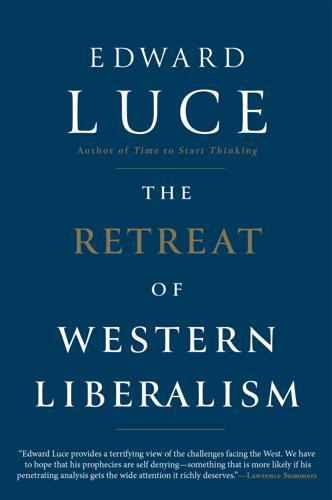
The Retreat of Western Liberalism
by
Edward Luce
Published 20 Apr 2017
In Britain, the move towards zero hours, in which the employee has no say over how long they can work, has metastasised. Almost 60 per cent of the US labour force are now paid hourly wages rather than annual incomes.5 The median hourly wage is $15.61. The working class has moved from making stuff to serving people. Most of America’s truck drivers are now independent contractors. They are known as sharecroppers on wheels.6 Regardless of where history places them, these people are on the wrong side of the economy. But it is not the sum total of who they are. Our tidy minds shunt all such trends into the economic silo. If only we could raise the minimum wage, or offer portable benefits to gig workers, we would fix the problem.

The Second Curve: Thoughts on Reinventing Society
by
Charles Handy
Published 12 Mar 2015
There will always be the elephants, the large organisations that will still account for the largest part of any national output. As I suggest in Essay 8, ‘The Citizen Organisation’, they and their constituent bits will be shamrock-shaped, with most subsidiary functions separated out either to independent contractors or to subsidiary businesses owned but not managed by the centre. There will also be numbers of what I once called fleas, or the third leaf of the shamrock. These are specialist individuals or small partnerships who sell their skills and expertise to organisations but are not directly employed by them.

Without Their Permission: How the 21st Century Will Be Made, Not Managed
by
Alexis Ohanian
Published 30 Sep 2013
He had plans to use the Internet to circumvent traditional access to capital because it could help his business bring home the bacon.9 That event was hosted on a bridge that had been closed to traffic, thanks to an Iowa legend, Dwolla, a startup aiming to be the future of online payment. Their network has already transformed businesses large and small—in fact, I even use it to pay my own independent contractors. We attended a high school football game with the founders of Hudl, a company in Lincoln, Nebraska, that builds software enabling coaches and their athletes to share game footage, and saw firsthand how much of a difference their startup was making.10 This platform also allows a talented athlete to put together a professional-looking highlight reel, something that would otherwise be nearly impossible for low-income students to afford.
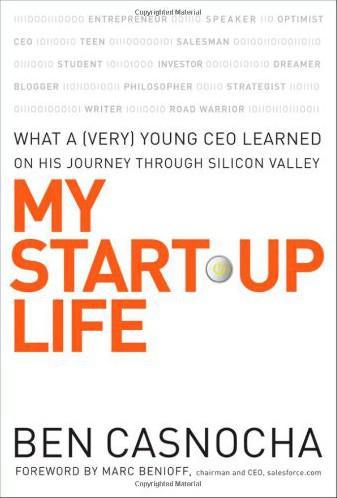
My Start-Up Life: What A
by
Ben Casnocha
and
Marc Benioff
Published 7 May 2007
I searched the Web to find a software programmer to code a 32 MY START-UP LIFE prototype of a complaint-tracking product that reflected city manager Ramsey’s vision. I had neither the skills nor inclination to try to learn how to code by myself. So I posted a sketch of the project on eLance, an online marketplace for independent contractors. Many programmers submitted bids. The highest was $31,000. The lowest was $2,200. I picked the $2,200 guy. His English name was Russell; he lived in Bangladesh. I looked at the balance of my savings account, and then, since it had worked before, I wrote a memo to my Dad: Dear David G. Casnocha, This memo is to request $5,000 to launch a company to be known as Comcate, as in “communicate.”
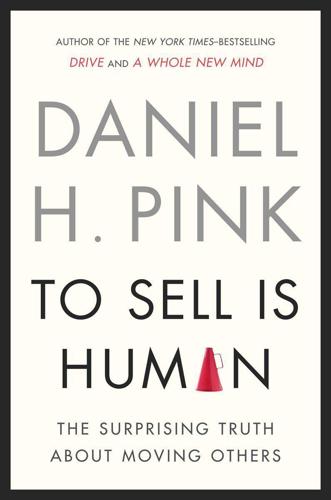
To Sell Is Human: The Surprising Truth About Moving Others
by
Daniel H. Pink
Published 1 Dec 2012
Census Bureau, The Statistical Abstract of the United States: 2012, 131st ed., Table 606, which suggests that more than 16 percent of the self-employed are in “sales and office occupations.” The labor economics consulting firm Economic Modeling Specialists Intl. likewise argues that one reason for the seeming drop in the number of salespeople is that huge numbers have gone from traditional employment to independent contractor status: “Sales jobs (like other jobs) are not disappearing from the economy nearly as much as they are disappearing as traditional, ‘covered’ employment—all the while, growing in numbers and size outside the spotlight of the usual employment datasets.” EMSI’s analysis is available at http://www.economicmodeling.com/2010/09/30/the-premature-death-of-the-salesman/. 8.
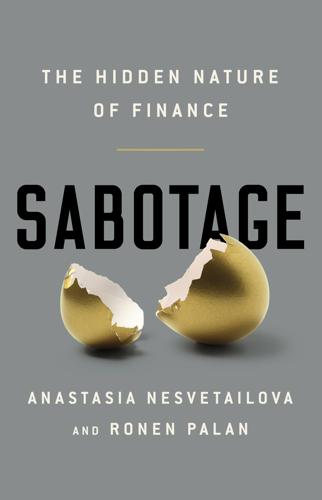
Sabotage: The Financial System's Nasty Business
by
Anastasia Nesvetailova
and
Ronen Palan
Published 28 Jan 2020
In a world where anyone can create money, crime groups have an interest in launching their own money transmission services and popularizing them as legitimate ‘fintech’ alternatives. As more and more jobs and services go off the official economic radar into the underground of the ‘gig’ economy, exchanging their skills for money, the more bitcoin and other cryptocurrencies offer a convenient way around the traditional income reporting demanded of employees and independent contractors.18 The authorities have taken steps to try and regulate the crypto world. The American IRS reacted to the tax implication of bitcoin use by treating it not as mere currency but as a capital asset, subject to rules governing stock and barter transactions when exchanged for dollars. Put simply, the IRS considers bitcoin a speculative investment.
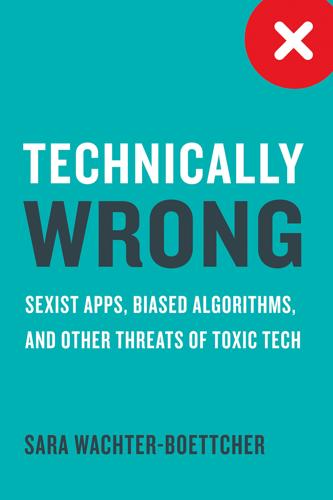
Technically Wrong: Sexist Apps, Biased Algorithms, and Other Threats of Toxic Tech
by
Sara Wachter-Boettcher
Published 9 Oct 2017
Take Uber: If it were perceived as a taxi service, or an auto loan financer, it would be part of an industry with existing regulations and expectations (even if those industries have problems, which, well, yeah). But by being labeled “technology”—by being better known as an app you download to your phone, rather than a massively complex system of vehicles and drivers—Uber gets to change the conversation. Instead of discussing the ethics of hiring legions of drivers as “independent contractors” and then selling them high-interest subprime loans to finance the vehicles they need to do their jobs (while aggressively pursuing the driverless technologies that will take away all those jobs), you’re encouraged to marvel at the seamlessness of the experience as you watch a little car icon navigate the streets on its way to your location.

The People's Republic of Walmart: How the World's Biggest Corporations Are Laying the Foundation for Socialism
by
Leigh Phillips
and
Michal Rozworski
Published 5 Mar 2019
Labour had resurrected the old demand of the friendly societies—that doctors become salaried public servants, rather than independent small-business people that contracted with the state—but the BMA insisted doctors remain an independent power, formally beyond the remit of immediate democratic direction. In the face of the BMA’s dogged opposition, Bevan ultimately conceded that family doctors, unlike those in nationalized hospitals, would remain independent contractors—“ stuffing their mouths with gold” in his words. Within a few months of the NHS being established, the vast majority of doctors, however reluctantly, signed up. Public planning won out over private interests. How the NHS Planned The first task of the early NHS was turning an inadequate patchwork of clinics, hospitals and other services into a functioning, properly joined-up and universal public healthcare system.

Survival of the Richest: Escape Fantasies of the Tech Billionaires
by
Douglas Rushkoff
Published 7 Sep 2022
Hockey stick user growth leads to hockey stick stock growth. Then, with the increased capital at their disposal, tech companies build “war chests” with which to lobby for policy changes in the real world. Uber and Doordash spend millions lobbying to be allowed to hire drivers as low-cost independent contractors rather than employees entitled to benefits. Airbnb uses its war chest to fund “independent, host-led local organizations that serve as a forum to connect and gather passionate hosts”—so that they can fight against regulatory pressure from local governments and city councils. By 2017, facing antitrust accusations, Google was outspending every other company lobbying lawmakers in Washington—only to be outspent by Facebook , facing similar charges in 2020.

Dark Money: The Hidden History of the Billionaires Behind the Rise of the Radical Right
by
Jane Mayer
Published 19 Jan 2016
It exposed a “nationwide scourge of dark money nonprofit networks hiding the identities of their contributors,” Ravel said in a public statement that also noted that the groups involved were tied to “the ‘Koch Brothers’ Network.’ ” Koch Industries officials leaped in, stressing that the settlement had stipulated that the lawbreaking was “inadvertent, or at worst negligent,” and that the Kochs had not personally donated money to influence the California ballot initiatives. Further, they argued, Noble was merely an independent contractor. “There is not a Koch network in the sense of we control these groups, I don’t understand what that means,” Mark Holden, the company’s general counsel, told Politico’s Vogel, who pointed out that, to the contrary, Charles Koch had referred to “our network” himself, in his invitation to the 2011 donor seminar.
…
“public education programs”: Ken Vogel, “Tea Party’s Growing Money Problem,” Politico, Aug. 9, 2010. “We met for 20 or 30 years”: Bill Wilson and Roy Wenzl, “The Kochs Quest to Save America,” Wichita Eagle, Oct. 3, 2012. Not only had he been invited: Mark Holden, the general counsel to Koch Industries, described Noble as “an independent contractor” and “a consultant” to the company, in an interview with Kenneth Vogel, Big Money, 201. “pack the hall”: Lee Fang, “Right-Wing Harassment Strategy Against Dems Detailed in Memo,” ThinkProgress, July 31, 2009. “We packed these town halls”: Johnson, “Inside the Koch-Funded Ads Giving Dems Fits.”

Who Stole the American Dream?
by
Hedrick Smith
Published 10 Sep 2012
Airline pilots pushed into feeder airlines have had to accept de facto demotions at lower pay for similar work. Ticket clerks, back-office workers, and bank cashiers as well as factory workers have been pushed out of full-time jobs and then hired back by the old company as theoretically “independent contractors” at lower pay as temporary or part-time workers with few or no benefits. “Permatemps”: A New Economy Lower Caste One hallmark of the New Economy in the 1990s was the rapid expansion of part-time and temporary work. So-called contingent workers became the fastest-growing segment of the U.S. workforce.
…
In 2005, roughly 30 percent of the labor force—42.6 million people—were classified as contingent workers, paid lower wages and lower benefits than regular workers and highly vulnerable to layoffs. By late 2011, more than 8 million Americans were working part-time against their will. Tens of millions more were hired through temp agencies or classified, questionably, as “independent contractors” to keep them off the company payroll but permanently on the job, doing the same work as regular employees for years on end but at lower pay and benefits. “Permatemps,” they were called, the wage serfs of the New Economy. As the corporate poster child of “permatemping,” Microsoft used thousands of long-term temps for the sophisticated designing, editing, and testing of software, among other jobs.

The Technology Trap: Capital, Labor, and Power in the Age of Automation
by
Carl Benedikt Frey
Published 17 Jun 2019
For this purpose, the merchant had to employ workers, and thus he became a merchant manufacturer. These workers still lived in the countryside, where they were independent contractors, but their livelihoods increasingly came to depend on the merchant manufacturer. If the harvest was bad, they might lack the means to replace some of their tools and equipment. Aware of this dilemma, merchant manufacturers began to provide the tools for production. The independent contractors who had lived in the countryside now became employed and waged and were gathered under one roof in the town where the merchant manufacturer resided.
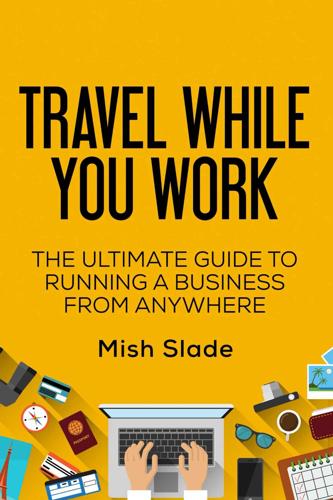
Travel While You Work: The Ultimate Guide to Running a Business From Anywhere
by
Mish Slade
Published 13 Aug 2015
Then the house that my husband and I had been renting for the past three years was sold and we were given 30 days' notice. I was upset for about an hour and then my imagination kicked in and I started seeing all of this as THE BEST THING TO EVER HAPPEN. Within weeks I'd put our motorcycles in storage, got rid of just about everything else, shifted my tech work from employee to location-independent contractor, took an official sabbatical from portraiture, and booked a pair of one-way tickets overseas. What was your main reason for wanting to live this sort of lifestyle? Agency. I want to have control over what I'm doing, where I am, and who I'm spending my time with. I love working but I hate the bullshit constraints that typically come with "jobs" and have nothing to do with getting your work done effectively.
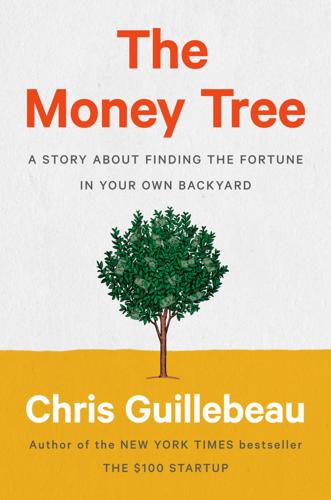
The Money Tree: A Story About Finding the Fortune in Your Own Backyard
by
Chris Guillebeau
Published 6 Apr 2020
Almost as soon as I did, I realized that my anger was misplaced. I wasn’t mad at you—or if I was, I shouldn’t have been. I was envious. I felt bad that I haven’t been able to do something like this for myself.” He explained that a few years before, he’d bought into a network marketing program. The program promised to help its independent contractors “create financial freedom.” The pathway to freedom seemed to be based entirely on purchasing large quantities of vitamins and supplements from the company, and then convincing other people to sign up. Sloan spent $800 on membership dues and supplies before giving up, and never made a single referral.
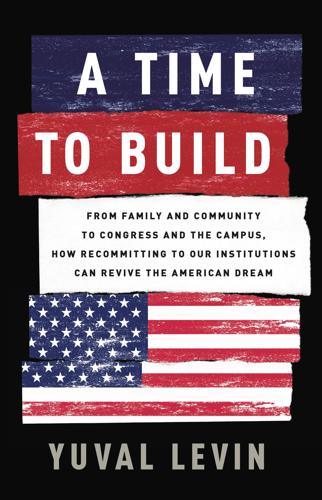
A Time to Build: From Family and Community to Congress and the Campus, How Recommitting to Our Institutions Can Revive the American Dream
by
Yuval Levin
Published 21 Jan 2020
We can judge ourselves by their standards, hold ourselves up to their ideals, take seriously their forms of integrity, and align our pride and ambition with theirs. We can serve them by reforming them to make them better able to achieve their potential. And we can serve through them. We can yearn not for the formless autonomy of the independent contractor but for the rootedness and responsibility of the member and the partner and the worker and the owner and the citizen. There is a word for attitudes like this. The word is devotion. What’s required of each of us is devotion to the work we do with others in the service of a common aspiration, and therefore devotion to the institutions we compose and inhabit.
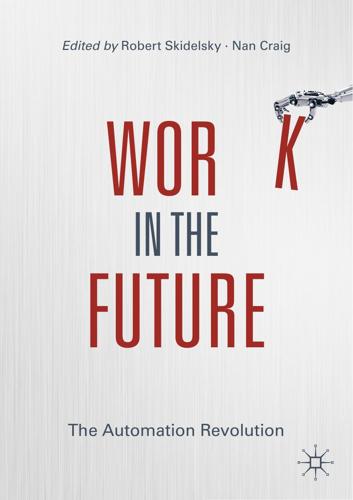
Work in the Future The Automation Revolution-Palgrave MacMillan (2019)
by
Robert Skidelsky Nan Craig
Published 15 Mar 2020
Uber drivers, for instance are attempting to build unions; Deliveroo drivers are attempting to as well; and many of these lean platform companies are facing a number of lawsuits. Uber had to pay $100 million in one settlement; Lyft had to pay $27 million in another settlement; Postmates is currently facing an $800 million suit.6 One lawsuit for Uber estimated they would owe drivers $852 million if they were deemed employees and not independent contractors. Uber retorted that it would only be $429 million.7 The result of this worker pushback is that these very low margin businesses are going to become even more unprofitable in the future, and the business model is unlikely to expand much further. What is Uber’s plan? Here we see that even Uber doesn’t think the business model they pioneered is likely to succeed.

The Line Becomes a River: Dispatches From the Border
by
Francisco Cantú
Published 1 Jan 2018
It’s a shame—José was such a great employee, such a sweet man. Well, Elizabeth said, it’s rare to see an employer invested in someone enough to come to these meetings, rare for them to support someone’s case against deportation. Diane shrugged. I really thought he had everything in order, she said. At first we hired him on as an independent contractor. He filled out all his paperwork, had a social security number, and at the end of each year we gave him a 1099. It never occurred to me that even after months and years of working with us he never asked to be put on payroll, never asked for benefits. Maybe he wanted to keep things vague to protect himself, to protect us from knowing his status.

Confessions of a Crypto Millionaire: My Unlikely Escape From Corporate America
by
Dan Conway
Published 8 Sep 2019
But a lot of future-looking, smart people believe it is coming. Naval Ravikant is CEO of AngelList. He is one of the best at explaining how the blockchain-based Internet could be the heart of a new, decentralized economy. Why does Ravikant think this is more likely to happen now, years after the migration to the gig economy and independent contractors is underway? Blockchains powered by cryptocurrency. He says, “The Internet evolved media from physical to digital, from paid to free, from editorial to social. Next up: from corporate to ownerless.” The gig economy provides some measure of freedom, but it still requires people to play by the corporate rules, like Google’s army of contractors, or hand over a disproportionate cut to its market maker, like Uber and Airbnb.
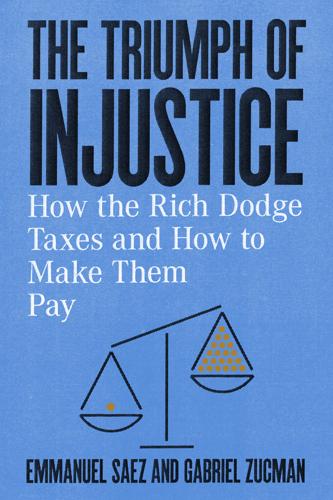
The Triumph of Injustice: How the Rich Dodge Taxes and How to Make Them Pay
by
Emmanuel Saez
and
Gabriel Zucman
Published 14 Oct 2019
Owners of financial assets can move their portfolios of stocks and bonds into holding companies. The owner-managers of private businesses can decide to slash their wages to keep more of their earnings within their firm. Even highly paid employees—software engineers, financial analysts, columnists—can become independent contractors, incorporate, and bill Google, Citigroup, or the Washington Post for their labor. The threat of wealthy individuals incorporating is why all countries that have a progressive income tax also have a corporate tax. The corporate tax is a safeguard: it prevents wealthy individuals from shielding their income from the taxman by pretending it’s been earned by a firm.
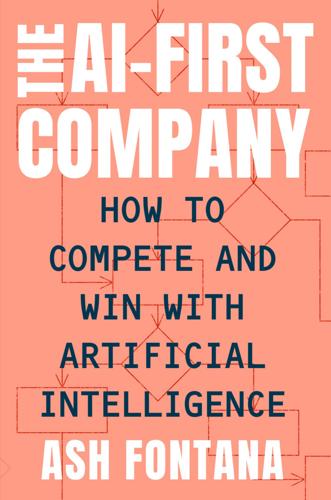
The AI-First Company
by
Ash Fontana
Published 4 May 2021
Machine learning researcher: seventh, because finding solutions to edge cases demands going beyond readily available ML frameworks to push the state of the art forward. A final note: outsourcing is feasible for some of these roles, depending on the product, team, and systems. Discrete pieces of analytical work, with accompanying datasets, lend themselves to being outsourced to individual data analysts or scientists who operate as independent contractors. This works well when the analysis to perform, or the questions to answer, are clear, and the data to find those answers is contained in just a few databases. Further, hiring consultants to set up data pipelines, make sound data infrastructure choices, and implement data storage systems can be an effective way to inquire about and instill best practices.
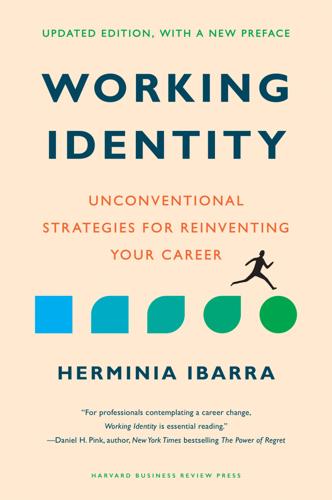
Working Identity, Updated Edition, With a New Preface: Unconventional Strategies for Reinventing Your Career
by
Herminia Ibarra
Published 17 Oct 2023
For now, I am working with the largest U.K. consulting firm that specializes in charities. The firm has helped me launch myself in the sector. It’s probably a temporary passage to the next stage, which will certainly be in the charity area, because I enjoy that enormously. It could be as an independent contractor or as a full-time employee, on the consulting side or on the line side. All I hope is that I never again make the mistake of jumping before giving myself the chance to explore what I really want to do. Small Wins for Big Change Susan took a major misstep at the start of her journey by accepting a job that was old wine in new bottles.

The Black Banners: The Inside Story of 9/11 and the War Against Al-Qaeda
by
Ali H. Soufan
and
Daniel Freedman
Published 11 Sep 2011
Rather, the goal of the CIA interrogation program was to condition the detainee gradually in order to break down his resistance to interrogation.” I wonder if the person who wrote the word “gradually” had any idea of the urgency of counterterrorist operations. I later learned that Boris’s path from being an independent contractor with no interrogation or Islamic extremism experience to running one of the most crucial fronts in our battle against al-Qaeda—our interrogation program of high-value detainees—had its origins on September 17, 2001. On that day, President Bush gave the CIA the authority, in an authorization known as a memorandum of notification, to capture, detain, and interrogate terrorism suspects.
…
Because of this lack of institutional experience, when President Bush ordered the CIA to institute the detention program, they needed to find someone to run it. Brought to their attention—it’s not yet publicly known by whom—were two contractors, Boris and another psychologist. Helgerson writes: “In late 2001, CIA had tasked an independent contractor psychologist [Boris] . . . to research and write a paper on Al-Qaida’s resistance to interrogation techniques.” Boris collaborated with a Department of Defense psychologist, and “subsequently, the two psychologists developed a list of new and more aggressive EITs that they recommended for use in interrogations.”

Delivering Happiness: A Path to Profits, Passion, and Purpose
by
Tony Hsieh
Published 6 Jun 2010
The idea was that even if people didn’t buy anything, we could at least sell them some lemonade. We ended up making more money selling lemonade than anything else from the garage sale. In middle school, I looked for other ways to make money. I had a newspaper route, but I soon discovered that being an independent contractor delivering newspapers on my bike was really just a way for the local newspaper to get around child labor laws. After doing the math, I figured out that my pay worked out to about $2 per hour. I quit my paper route and decided to make my own newsletter instead. Each issue contained about twenty pages of stories I wrote, word puzzles, and jokes.
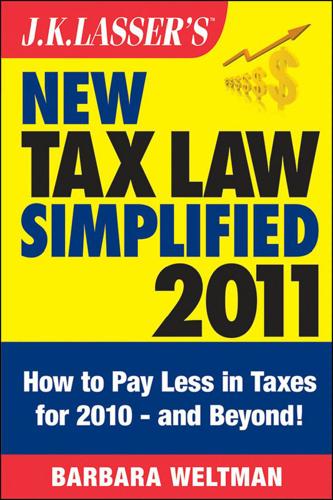
J.K. Lasser's New Tax Law Simplified: Tax Relief From the HIRE Act, Health Care Reform, and More
by
Barbara Weltman
Published 30 Nov 2010
Section 179 deduction See First-year expensing. Section 457 plan A deferred compensation plan set up by a state or local government or tax-exempt organization that allows tax-free deferrals of salary. Self-employed person An individual who operates a business or profession as a proprietor or independent contractor and reports self-employment income on Schedule C. Self-employment tax Social Security and Medicare taxes paid by a selfemployed person. The Social Security portion is 12.4 percent on net earnings from self-employment up to $106,800 in 2010. The Medicare portion is 2.9 percent 199 P1: OTA/XYZ P2: ABC gloss JWBT413/Weltman 200 October 14, 2010 15:16 Printer Name: Yet to Come GLOSSARY on all net earnings from self-employment.

Nickel and Dimed: On (Not) Getting by in America
by
Barbara Ehrenreich
Published 2 Jan 2003
What Mountain Air is really looking for is—and here he reads from a transparency—“Self-disciplined/ Money-motivated/ Positive attitude.” Nothing, I note, about providing a service or healing the sick. In fact, compared with Wal-Mart's unctuous service ethic, Todd's emphasis on the bottom line is positively refreshing. We will be independent contractors, he tells us, not employees, which means, “if you lie to a customer the company is not responsible.” Even, I wonder, if the lies are part of the sales pitch the company has taught you? It's very simple, Todd assures us, just a “matter of taking people who have a very serious problem, though probably not anywhere near as serious as they think it is, and leaving them happy.”
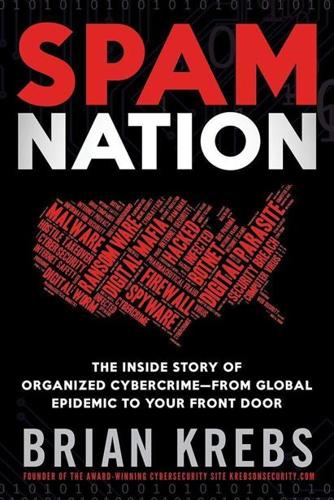
Spam Nation: The Inside Story of Organized Cybercrime-From Global Epidemic to Your Front Door
by
Brian Krebs
Published 18 Nov 2014
When spam emails show up in your inbox or get caught by your firewall, spam filter, or antivirus software, they’re likely from one of these partnerkas. Technology and security experts like to talk about these partnerkas as “organized cybercrime.” But according to UCSD’s Stefan Savage, partnerka systems are more accurately described as “disorganized crime”—that is, loosely affiliated networks of independent contractors, each of whom is essentially out to make a buck for himself and will only continue the partnership so long as it remains economically viable and competitive to do so. “It’s really a brilliant business model on both sides,” said Savage, who has coauthored several long-term studies on various aspects of the partnerka economy, from spam to botnets.
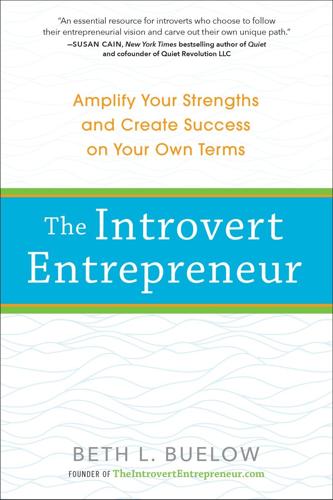
The Introvert Entrepreneur: Amplify Your Strengths and Create Success on Your Own Terms
by
Beth Buelow
Published 3 Nov 2015
The board can be made up of people who you admire and those who are a few steps ahead of you on the entrepreneurial path. You can include mentors, former teachers or employers, or someone in your industry who focuses on a different market (and therefore isn’t a direct competitor). Beyond these more informal affiliations, you may want to collaborate with colleagues by hiring them as independent contractors or for short- or long-term project-based work. The information shared here applies to those types of relationships, in addition to casual ones. The only substantial difference between the two is that when you’re hiring or contracting with someone, the financial and legal considerations are essential parts of the agreements you make together.

Company of One: Why Staying Small Is the Next Big Thing for Business
by
Paul Jarvis
Published 1 Jan 2019
It wouldn’t work for her if she hired just anyone off the street, as they wouldn’t have the requisite trust to represent her brand well without first being trained extensively, which takes a lot of time. As a company of one, Wakefield Brunswick could be limited in the size and scope of the projects it takes on, but by building connections to other independent contractors, the company can pool its expertise and skills with these other businesses and take on much bigger contracts. Remember, Wakefield Brunswick only partners with other businesses when a project requires it; otherwise, they are free to work on whatever they want. Business at every level is built on who we know and who knows us.

The 37th Parallel: The Secret Truth Behind America's UFO Highway
by
Ben Mezrich
Published 5 Sep 2016
But if any of the other engineers or various support staff gathered in the football-field-sized rabbit warren of dry-wall cubes and aluminum-framed equipment cabinets noticed their progress, none of them seemed to have cared enough to give them a second look. To be fair, it was midway through most of the engineering staff’s lunch break, and most of the support staff knew Chuck, at least by sight. He wasn’t technically an employee of the firm anymore, but his role as an independent contractor allowed him some level of access to the design floor. Although his current mission had nothing to do with semiconductors or the kind of work he did for the company that earned him just enough—combined with Tammy’s two salaries from the two service industry jobs she’d been forced to take as he’d focused more of his time on his investigations—to cover their monthly expenses.
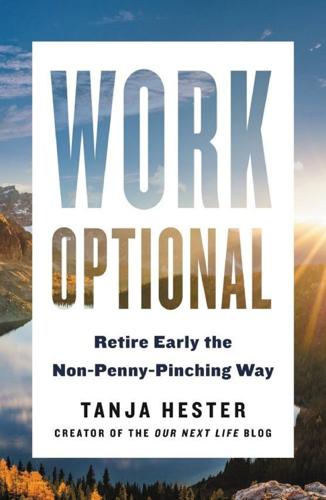
Work Optional: Retire Early the Non-Penny-Pinching Way
by
Tanja Hester
Published 12 Feb 2019
The main restriction on employer-sponsored retirement plans is that you are generally not allowed to withdraw money invested there until you turn 59½ without paying a hefty tax penalty, though there are ways around this that we’ll discuss in chapter 6. Solo 401(k)s If you are self-employed as a sole proprietor, consultant, or independent contractor, you are eligible to open a solo 401(k), which is similar to an employer-sponsored 401(k) in that you contribute pretax dollars to it and pay income tax on it only when you take distributions in retirement. Also like an employer 401(k), the employee may contribute up to the annual limit ($19,000 in 2019, $25,000 over 50).

Death Glitch: How Techno-Solutionism Fails Us in This Life and Beyond
by
Tamara Kneese
Published 14 Aug 2023
Sacred care for the dying person and then the corpse, for the physical remains of a cherished loved one, intersects with data management and other mundane tasks. Despite death startup companies’ presentation of self-care as a way of managing mortality, essential workers, many of whom are immigrants or from marginalized groups, are not protected from death. Uber drivers and other gig workers are classified as independent contractors, so if they die from the coronavirus or something else on the job, the company that employs them cannot be held responsible and owes nothing to their family members left behind. In 2020, the Bureau of Labor Statistics reported that gig workers account for nearly one in eight worker deaths in the United States.32 Worker-led groups are pushing platforms to recognize their workers as employees, which also means caring for them and their families after they die.
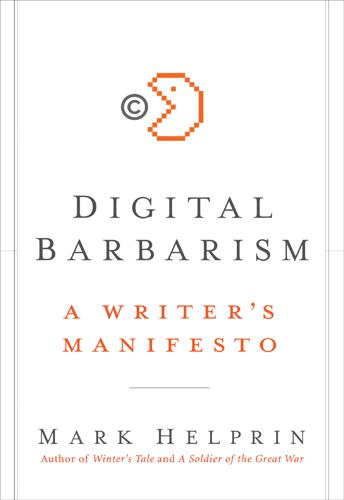
Digital Barbarism: A Writer's Manifesto
by
Mark Helprin
Published 19 Apr 2009
Many swell the ranks of freelancers, doing exactly what they did before—editing, copyediting, designing covers—but as piecework, without benefits, security, stability, or longevity. The more people are fired, the more freelancers there are to lower the price of services, allowing more firings, further deepening the pool of independent contractors. Thus, everyone clings to an uncertain position, and is even less equipped than he might be for resisting the pressure to seek the lowest common denominator. With exceptions, of course, books are tribally marketed to niche groups (including idiots) with affinities of interests, outlooks, or opinions, or thrown upon the open and general sea, the level of which is now so low that fish are flopping on sand.

Branded Beauty
by
Mark Tungate
Published 11 Feb 2012
When McConnell noticed that women were far more interested in his scents than in books, he decided to focus on perfume. But he needed help – and on his bookselling rounds he had come across many impoverished women with time on their hands. What if he could help them and their families while also growing his business? His plan was to take women on as independent contractors, leaving them free to manage their time and their territory. Mrs PFE Albee of New Hampshire, a 50-year-old wife and mother of two, became the first representative of what was then the California Perfume Company in 1886. Just over a decade later, the company had 5,000 representatives. As the company’s website says, ‘at that time it was practically unheard of for a woman to run her own business.

Lethal Passage
by
Erik Larson
Published 27 Jul 2011
Here, for example, were Breath of the Dragon: Homebuilt Flamethrowers; Improvised Land Mines: Their Employment and Destructive Capabilities (“Just in case your future includes a little anarchy,” the blurb reads); Ragnar’s Guide to Home and Recreational Use of High Explosives (with the author’s techniques “a single individual can easily dig a dry well, redirect creeks, blow up bad guys and perform a host of otherwise impossible chores of immense benefit to mankind”); Hit Man: A Technical Manual for Independent Contractors, purportedly written by a practicing professional named Rex Feral; and Death by Deception, on how to turn ordinary objects like computer modems and showerheads into deadly booby traps. Here too I found the How to Kill series by John Minnery, all six books now packaged in one handy 512-page volume called Kill Without Joy: The Complete How to Kill Book, whose chapters according to the catalog “provide gruesome testimony to why these books have been banned by certain countries around the globe.”
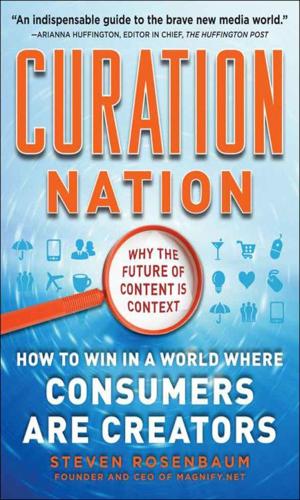
Curation Nation
by
Rosenbaum, Steven
Published 27 Jan 2011
Kurnit and his team curated the guide selection—curating the curators, if you will—but then he let them manage their own content verticals. If you think it sounds like blogging before the advent of blog tools, you’d be half right. “The beauty of guides is that they were passionate about their areas, so we went and found them, we recruited them, we trained them … These people were and are independent contractors, which is a very careful line you can’t cross,” Kurnit says. This relationship works well for both parties, according to Kurnit. His company doesn’t need to have the guides on the payroll as full-time employees, and the guides feel ownership over the content they create and are compensated very well.

Nomadland: Surviving America in the Twenty-First Century
by
Jessica Bruder
Published 18 Sep 2017
It seemed to suggest that the legislator had never set foot in a place like Amazon’s new company towns or met any of the many older Americans who must labor long hours to supplement their meager benefits. It read, “Call when you get honest work!” * Some of these workampers made national headlines in 2010, when the U.S. Department of Labor claimed their employer, Gate Guard Services LP in Corpus Christi, had misclassified them as independent contractors rather than employees and therefore owed them $6.2 million in back pay. A federal judge later dismissed that order. † Not everyone seems to prioritize the touchy- feely incentives, however. “Bottom Line for Workampers at Amazon.com: Money” read the headline of a 2014 CamperForce cover story in Workamper News, which interviewed some of the laborers.

Shortchanged: Life and Debt in the Fringe Economy
by
Howard Karger
Published 9 Sep 2005
This problem is particularly acute for low-income homeowners who obtained down-payment assistance from federal, state, or local sources, which is often forgiven if they remain in the dwelling for some number of years. When predatory mortgage lenders make loans to these homeowners, they often insist that forgivable loans be paid off, which increases the amount borrowed. BROKERS, LOAN SOLICITATION, AND DOWNSTREAMING 123 Mortgage brokers live off of loan fees. Because they are independent contractors rather than employees of large financial institutions, government regulators have limited oversight over their activities. Many sub-prime or predatory loans originate through local mortgage brokers who act as finders, or “bird dogs,” for lenders. Some predatory and subprime lenders have also downsized their operations by shifting their loan originations to independent brokers.
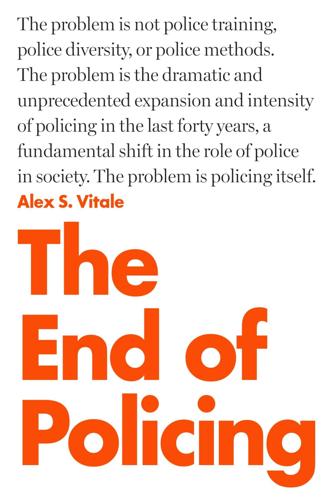
The End of Policing
by
Alex S. Vitale
Published 9 Oct 2017
There is also constant pressure to criminalize parts of the industry on behalf of real estate interests, moral entrepreneurs, and local officials concerned about their international image in connection to events like the World Cup and Olympics. Organized prostitution in brothels has been legal in rural Nevada since 1974. Workers (all female) are part of the formal economy, paying taxes and participating in Social Security. They are treated as independent contractors. They are required to pay the house a percentage and have regular health checks. The house provides clean workspaces, security, and administrative support. Numerous studies show a high degree of worker satisfaction, low levels of violence, and long work histories. There have been no allegations of forced or underage prostitution.

Listen, Liberal: Or, What Ever Happened to the Party of the People?
by
Thomas Frank
Published 15 Mar 2016
What Uber does has been compared to the every-man-for-himself hiring procedures of the pre-union shipping docks, while TaskRabbit is just a modern and even more flexible version of the old familiar temp agency I worked for back in the 1980s. Together, as Robert Reich has written, all these developments are “the logical culmination of a process that began thirty years ago when corporations began turning over full-time jobs to temporary workers, independent contractors, free-lancers, and consultants.”26 This is atavism, not innovation. It has not reversed the trends of the last thirty years; it has accelerated them. And if we keep going in this direction, it will one day reduce all of us to day laborers, standing around like the guys outside the local hardware store, hoping for work.
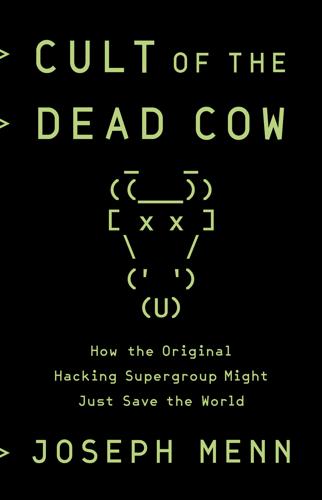
Cult of the Dead Cow: How the Original Hacking Supergroup Might Just Save the World
by
Joseph Menn
Published 3 Jun 2019
Rohozinski was CEO of Psiphon Inc., a proxy network for evading censorship that the Citizen Lab had spun out. He also had worked in the military and as a technical advisor to the UN on telecommunications projects in former Soviet countries around the world. Though he described himself as an independent contractor, he acknowledged an intelligence background, and his affinities were clear. Laird and Villeneuve both called him a “spook,” which Rohozinski said was inaccurate. Laird also denies being a spy, and he never revealed himself as one to cDc. But his odd initial approach to the group, changing Hong Kong Blondes backstory, and later international work have caused several in cDc to wonder, even without being aware of the intelligence relationships that have since come to light.

Artificial Unintelligence: How Computers Misunderstand the World
by
Meredith Broussard
Published 19 Apr 2018
I worked all my networks; it was far more difficult than I anticipated. I talked with a developer who runs her own shop who is a woman of color; I couldn’t afford her. Nor could I afford the heavily discounted services offered by a friend’s software firm. Eventually, I hired a woman and three men, all independent contractors, bringing the project total to a 2:3 women:men ratio. On a small team with a very close deadline, that would have to do. It’s an open secret in project management that nobody knows how to estimate time for a software project. Part of the problem is that writing computer code is more like writing an essay than like manufacturing.
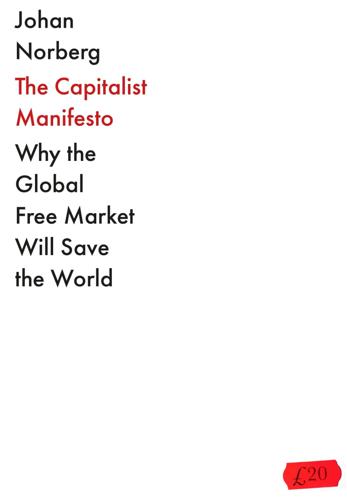
The Capitalist Manifesto
by
Johan Norberg
Published 14 Jun 2023
And this is also the wrong question, since the real choice is between being a gig worker and having a smaller chance of permanent employment, because if companies have to pay fixed salaries and benefits, they will not be able to accept anyone, especially not someone who does not pull in a sufficient number of assignments or is not efficient. When Canada banned Foodora from treating food couriers as independent contractors in 2020, the company left the market. Many dislike the fact that gig workers are only considered to work when they perform a certain task and many platforms have been pressured by trade unions or the law to treat the workers as employees. But if you are to have permanent employment with a fixed salary in an industry with low margins, it presupposes that you give up on the idea of working when it fits your schedule, and instead drivers are directed to the times of day and areas that provide the greatest income.

Rule of the Robots: How Artificial Intelligence Will Transform Everything
by
Martin Ford
Published 13 Sep 2021
Aside from the direct automation of jobs and tasks, a second important force is the de-skilling of jobs. In other words, the adoption of new technology allows a role that once required significant skill and experience to instead be filled by a lower-wage worker with little training, or by an interchangeable independent contractor working in the gig economy. A classic example of this is the experience of the famous “black cab” taxi drivers in London. Obtaining a license to drive such a taxi traditionally requires full memorization of virtually all the streets in the city, a laborious process known as acquiring “The Knowledge.”
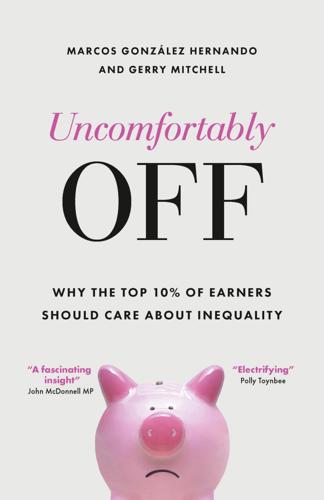
Uncomfortably Off: Why the Top 10% of Earners Should Care About Inequality
by
Marcos González Hernando
and
Gerry Mitchell
Published 23 May 2023
Gemma, a management consultant in her late thirties, and one of the few respondents with no dependants, said she felt insecure about maintaining a sufficiently high income within the corporate sector. Having initially been drawn to the rigid structure of working in a large accountancy firm, she began to feel she was on “a treadmill” and left to become an independent contractor. However, she now finds this “a scary move”, partly because there’s no structured progression and her income “may go up and down a little”. This relative insecurity is made worse because the amount of 108 Business class tickets for a sinking ship money she needs to sustain herself is increasing: “my stable bar gets higher all the time”.

Life After Cars: Freeing Ourselves From the Tyranny of the Automobile
by
Sarah Goodyear
,
Doug Gordon
and
Aaron Naparstek
Published 21 Oct 2025
Sure, the sign hacks were amusing, but why was the city deploying massive expressway-style equipment in two of the most pedestrian-friendly neighborhoods in New York City, if not the entire country? What these enormous highway signs did was send a signal that transportation officials didn’t look at a map of the city and see places where people lived, but traffic sewers. The DOT deflected the criticism, saying only that the message boards did not belong to the department but to independent contractors, who were immediately dispatched to reprogram the signs to their original traffic-related messages. Nevertheless, the mysterious hacker—who, in homage to the anonymous British guerrilla graffiti artist Banksy, came to be known as Bikesy—was not deterred. One week later, a different sign was hacked, this time with a rotating series of messages appearing at three-second intervals: CARS ARE DEATH MACHINES CARS KILL KIDS CARS MELT GLACIERS HONKING WON’T HELP Local community members, long sick of drivers clogging up their neighborhood with space-hogging, noise-making, exhaust-spewing, danger-creating automobiles, hailed Bikesy as a hero.

The Rise of the Network Society
by
Manuel Castells
Published 31 Aug 1996
In 1999, the Institute of Health Policy Studies of the University of California at San Francisco, in cooperation with the Field Institute, conducted a study on work arrangements and living conditions on a representative sample of California workers, the second survey of a three-year longitudinal study.111 They defined “traditional jobs” as holding a single, full-time, day-shift job year round, as a permanent employee, paid by the firm for which the job is done, and not working from home or as an independent contractor – a definition very close to the one employed by Carnoy and myself. Under such a definition, 67 percent of California workers did not hold a traditional job. Adding the criterion of tenure, and calculating the proportion of workers with traditional jobs with three or more years of tenure, the proportion of workers in these standard jobs shrinks to 22 percent (see figures 4.9 and 4.10).
…
Figure 4.8 Employment in the temporary help industry in the United States, 1982–1997 Source: Data from the US Bureau of Labor Statistics, elaborated by Mishel et al. (1999) Figure 4.9 Percentage of working-age Californians employed in “traditional” jobs, 1999 (“traditional” is defined as holding a single, full-time, day-shift job year round, as a permanent employee, paid by the firm for which the work is done and not working from home or as an independent contractor) Source: University of California, San Francisco and The Field Institute, 1999 Figure 4.10 Distribution of working-age Californians by “traditional” job status and length of tenure in the job, 1999 (“traditional” job is as defined in figure 4.9) Source: University of California, San Francisco and The Field Institute, 1999 The California model of flexible employment is even more distinct in Silicon Valley, the center of the new economy.
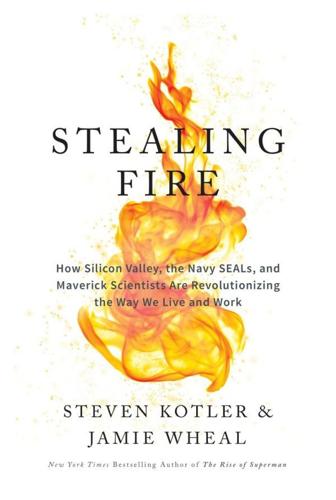
Stealing Fire: How Silicon Valley, the Navy SEALs, and Maverick Scientists Are Revolutionizing the Way We Live and Work
by
Steven Kotler
and
Jamie Wheal
Published 21 Feb 2017
When Shulgin’s recipe for the potent amphetamine DOM was duplicated by underground chemists and sold to unsuspecting hippies—triggering a nationwide spike in emergency room visits—the company hit the breaking point. They decided it was time to part ways. So Shulgin went into private practice, becoming an extremely independent contractor. After converting an old garden shed into his lab, he picked back up where he had left off: formulating and testing new psychedelics. Between 1966, when he first set up his backyard workshop, and his death in 2014, Shulgin became one of the more prolific psychonauts (an explorer of inner space) in history.
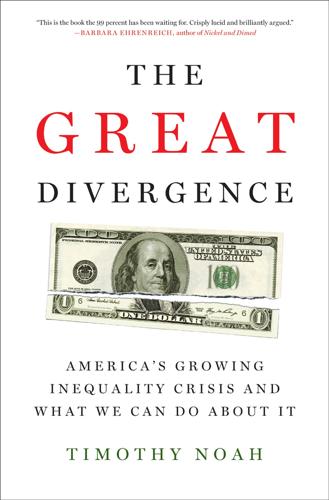
The Great Divergence: America's Growing Inequality Crisis and What We Can Do About It
by
Timothy Noah
Published 23 Apr 2012
Much more important, they argued, was a drop in corporate income taxes and (“to a lesser extent”) a drop in estate and gift taxes, combined with a proportional shift in the composition of top incomes away from capital-derived income (dividends, interest, and rents) and toward labor-derived income (wages and salaries, including stock options, as well as business income derived from partnerships, sole proprietorships, and S-corporations, this last a legal tax dodge for individuals and families who work as independent contractors and want to pay less in Social Security and Medicare taxes). When you factor in all federal taxes (and also the federal payroll tax, which started out regressive and has become even more so), the effective tax rate on the top 0.01 percent fell from 59.3 percent in 1979 to 34.7 percent in 2004—a drop of nearly twenty-five percentage points.7 In their 2010 book Winner-Take-All Politics, the political scientists Jacob Hacker of Yale and Paul Pierson of Berkeley note Piketty and Saez’s calculation that between 1970 and 2000 the top 0.1 percent (a group that today encompasses everyone making $1.7 million or more each year) increased its share of the nation’s after-tax income from 1.2 to 7.3 percent.
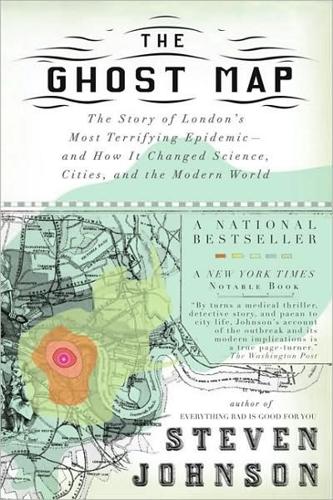
The Ghost Map: A Street, an Epidemic and the Hidden Power of Urban Networks.
by
Steven Johnson
Published 18 Oct 2006
But in that late summer of 1854, as the toshers and the mud-larks and the bone collectors made their rounds, London was headed toward another, even more terrifying, battle between microbe and man. By the time it was over, it would prove as deadly as any in the city’s history. LONDON’S UNDERGROUND MARKET OF SCAVENGING HAD ITS own system of rank and privilege, and near the top were the night-soil men. Like the beloved chimney sweeps of Mary Poppins, the night-soil men worked as independent contractors at the very edge of the legitimate economy, though their labor was significantly more revolting than the foraging of the mud-larks and toshers. City landlords hired the men to remove the “night soil” from the overflowing cesspools of their buildings. The collecting of human excrement was a venerable occupation; in medieval times they were called “rakers” and “gong-fermors,” and they played an indispensable role in the waste-recycling system that helped London grow into a true metropolis, by selling the waste to farmers outside the city walls.
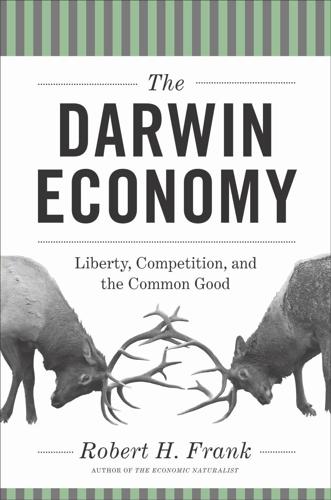
The Darwin Economy: Liberty, Competition, and the Common Good
by
Robert H. Frank
Published 3 Sep 2011
Coase’s first significant paper, “The Nature of the Firm,” published in 1937, was in fact inspired by his observation that practical difficulties often prevented people from negotiating efficient contracts with one another.10 This paper was based on field research he had conducted in 1932, when as an undergraduate he received a fellowship to travel to the United States to observe the operations of large American corporations. The specific question he tackled in the 1937 paper was, why do firms exist in the first place? Why, he wanted to know, weren’t all business transactions carried out directly between independent contractors? His answer—which, like many big ideas, seems painfully obvious in hindsight— was that the latter approach would necessitate a host of complex and costly transactions. If you wanted to buy a car, for example, you’d have to negotiate contracts with numerous miners to extract iron ore from the earth, more contracts with others to process the ore into steel, still more contracts to mold the steel into the desired shapes, and so on.
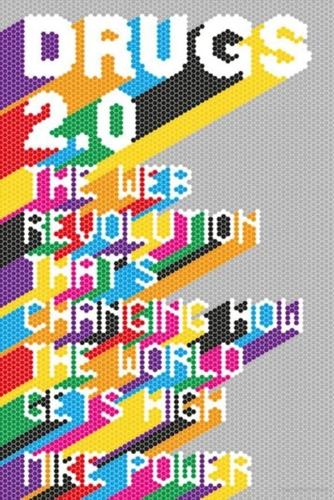
Drugs 2.0: The Web Revolution That's Changing How the World Gets High
by
Mike Power
Published 1 May 2013
The service approached the Tor project in 2006 and said they had noticed that users from all over the world in repressive regimes were using the Tor software to connect to their web pages. They asked the Tor volunteers to form a company, in order to make the service and the network more widely available, which they did. ‘At the time we were still independent contractors with the EFF [the online freedom of speech group, the Electronic Freedom Foundation, set up by .alt newsgroup creator John Gilmore] and the American Department of Defence at the same time, which made for some strange meetings!’ says Lewman. Tor is not just used by those engaged in illicit activity.
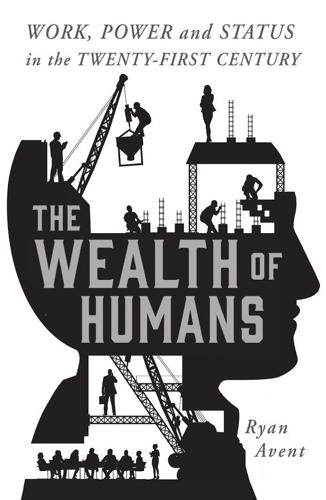
The Wealth of Humans: Work, Power, and Status in the Twenty-First Century
by
Ryan Avent
Published 20 Sep 2016
Coase’s insight, though important, is incomplete. For one thing, creating a firm doesn’t magically eliminate transaction costs. Bosses are not all-knowing and all-powerful, and firms don’t suddenly gain the ability to monitor and influence a worker’s behaviour by making that person an employee of the firm rather than an independent contractor. Instead, firms have to build an internal incentive structure, which tells employees what behaviours will earn them promotions and bonuses (or get them sacked). Such a structure may be easier to set up, in some cases, than a bunch of contracts with freelancers, but it isn’t costless. It requires that management has a clear idea of what it wants the workers to achieve, that they experiment with incentive structures to motivate workers towards that goal, and that they also keep an eye on everything, to make sure the system is working as hoped.
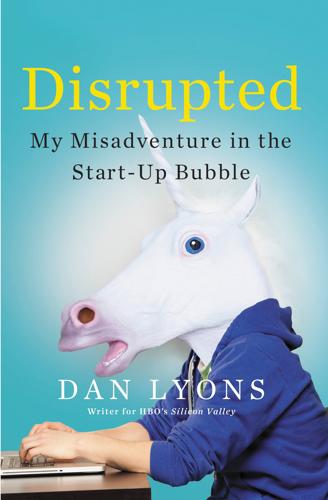
Disrupted: My Misadventure in the Start-Up Bubble
by
Dan Lyons
Published 4 Apr 2016
At a traditional company she would have been owed a week or two of vacation pay, but from HubSpot, she got nothing. Think about how many hundreds of people churn in and out of a place like HubSpot, and you can see how the savings add up. Another way to drive down labor costs is to deny people employee status in the first place. Uber, the ride-sharing company, saves money by categorizing drivers as independent contractors rather than employees. Uber insists drivers prefer this because they enjoy more freedom. Uber and others in the “share economy” are creating a new form of serfdom, an underclass of quasi-employees who receive low pay and no benefits. As former secretary of labor Robert Reich put it in a June 2015 Facebook post: “The ‘share economy’ is bunk; it’s becoming a ‘share the scraps’ economy.”

Please Don't Sit on My Bed in Your Outside Clothes: Essays
by
Phoebe Robinson
Published 14 Oct 2021
No matter how much I remind my mom and dad that this information isn’t worth bragging about, that no chip awaits them to mark their achievement, they’ll find a way to work it into conversation. “Mom, I’m having trouble with my taxes. Can you download your accountant wisdom into me real quick?” “Well, it’s funny you mention 1099 independent contractor forms . . .” “I mean, I didn’t—” “Because it’s been 1,099 days since influenza last felled me.” Secondly, the parental units are incredibly giving and selfless people. A present from them is usually the item you mentioned months ago that you since forgot about, but they never did.

Upgrade
by
Blake Crouch
Published 6 Jul 2022
“License and registration.” I had them ready. He took them, walked back to his car without a word. The wind was whipping off the prairie. The Sprinter shuddered. After five minutes, he stepped back out of his car and walked over. “Welcome to Montana, Mr. Foster. You work for the CDC?” “More of an independent contractor.” “Well, we’re glad to have you.” His name tag said D. TRAUTMANN. D as in David. He was one of 237 state troopers in Montana, and part of District V, based in the town of Glendive. District V covered sixteen counties, including Valley, the one I was currently in. David was twenty-four years old and had graduated from the academy one year ago.

Code Dependent: Living in the Shadow of AI
by
Madhumita Murgia
Published 20 Mar 2024
It was here one Friday evening some years ago when Farrar, who had recently begun driving weekends for Uber, had had an altercation with some drunk passengers. The incident left him shaken up, and when he complained to Uber he realized he had no legal protections as an employee. The reason, they claimed, was because he wasn’t their employee, but an independent contractor. Farrar certainly didn’t feel like an autonomous contractor – Uber decided what jobs to give him and what he would get paid and whether to fire him. So he began a decade-long legal campaign to fight for the rights of app-based workers. ‘This whole area is auspicious – this is a very historic park, Altab Ali Park,’ Farrar told me, pointing to the green patch just visible through the window of the office he rents in a co-working space.

The World's First Railway System: Enterprise, Competition, and Regulation on the Railway Network in Victorian Britain
by
Mark Casson
Published 14 Jul 2009
The Llanelli management understood well that connecting up with the Central Wales line would bring additional traYc, and in anticipation of this they had built lines from Llandeilo to Swansea and to Carmarthen, the latter providing connections via the broad gauge for west Wales and the Irish Sea ports. Each of these Joint Lines 203 two new lines was associated with a separate capital account. Although the LNWR was willing to Wnance these lines, the Llanelli company had employed independent contractors who, partly as a consequence of the Overend Gurney banking crisis of 1866, got into Wnancial diYculties. The date of the LNWR’s arrival in Llandovery was also the date that the Llanelli company’s lease of the Vale of Towy line expired. When the lease was renewed the LNWR and Llanelli became partners—an appropriate arrangement since the Llanelli made connection at one end of the line and the LNWR now made connection at the other.
…
This did not rule out the subcontracting of train operations to independent companies, provided that these companies followed appropriate regulations, and worked to a centrally determined timetable, as on the railway system of today. Indeed, in the Victorian period a number of companies leased the operation of their lines to independent contractors, such as Thomas Brassey, the railway builder, on a short-term basis. Furthermore, many companies that owned short branch lines leased their operation to the company that owned the main line with which they connected. In this latter case the operating company usually took most of the key decisions; the owners of the branch took a passive role in which they received an agreed proportion of the net receipts from branch line traYc.
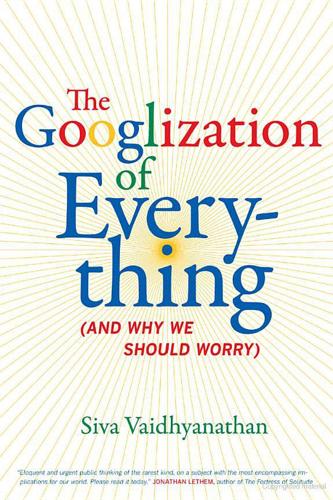
The Googlization of Everything:
by
Siva Vaidhyanathan
Published 1 Jan 2010
He asserts that we do not need the “straitjacket of uniformity” of the university campus to accomplish socialization and networking for young people, because those should be lifetime pursuits. He claims that research should be collaborative and open, rather than cloistered in local laboratories. Testing and certification can easily be replicated online. And teaching should be done by subscription, over the Web, by independent contractors who market their services to a broad consumer base, rather than to a group of captive subscribers. “Why are we still teaching students to memorize facts when facts are available through search?”15 As an insider and career academic (second generation, at that), I was baffled by these prognoses and prescriptions.

The End of Ownership: Personal Property in the Digital Economy
by
Aaron Perzanowski
and
Jason Schultz
Published 4 Nov 2016
In cities big and small, there is evidence that Airbnb contributes to rent increases for residents.2 As more housing units are devoted to the sharing economy, fewer are available for locals to rent. Long-term renters have even been evicted to make room for vacationers.3 The unseen costs of the sharing economy are also borne by the increasing number of workers classified as independent contractors. By insisting on that classification for its drivers, Uber—currently valued at over $50 billion—avoids paying the minimum wage, payroll taxes, health insurance, unemployment benefits, and workers compensation for the vast majority of its workers.4 That cost shifting isn’t apparent to Uber users.

Busting Vegas: The MIT Whiz Kid Who Brought the Casinos to Their Knees
by
Ben Mezrich
Published 26 Sep 2005
Extremely lucky. Kent Tucker, the casino host, had nearly carried them bodily to the penthouse suite after he had gotten a taste of Semyon’s bankroll. It was a host’s job to make high rollers such as Semyon happy; if Semyon was happy, he’d keep coming back to the Mirage. Hosts were essentially independent contractors who built up stables of “whales”—players who were willing and able to gamble big. Tucker didn’t care where the money came from, or even whether Semyon won or lost. Just that he was willing to bet big. “Maybe we should throw in a Kalashnikov,” Semyon joked back as he crossed to one of the many picture windows that lined the curved walls of the megasuite.
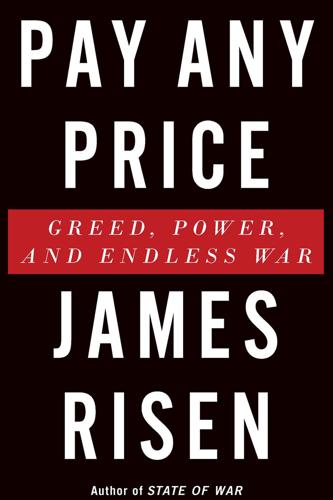
Pay Any Price: Greed, Power, and Endless War
by
James Risen
Published 15 Feb 2014
His New York lawyer, Kelly Moore, also declined repeated requests to respond to questions. 6 Too Big to Fail Far more than any other conflict in American history, the global war on terror has been waged along free-market principles. In Iraq and Afghanistan, American soldiers actually on the payroll of the U.S. Army were outnumbered by independent contractors working for private companies hired to provide services from meals to base security. From Pakistan to Yemen to Somalia, American counterterror operations have relied heavily on outside contractors to provide intelligence and logistics. As a result, the tenets of twenty-first-century American capitalism have become the bywords of twenty-first-century American combat.

The Education of Millionaires: It's Not What You Think and It's Not Too Late
by
Michael Ellsberg
Published 15 Jan 2011
Daniel Pink, in Free Agent Nation: The Future of Working for Yourself, his 2001 book prophesying the current tidal wave of microentrepreneurialism, small business, and self-employment, calls them “self-employed knowledge workers, proprietors of home-based businesses . . . freelancers and e-lancers, independent contractors and independent professionals, micropreneurs and infopreneurs, part-time consultants . . . on-call troubleshooters, and full-time soloists.”9 These new kinds of opportunities, open to anyone who wants to pursue them, without any formal, traditional, or academic qualifications necessary to compete, have arisen largely because of technology.

Doctored: The Disillusionment of an American Physician
by
Sandeep Jauhar
Published 18 Aug 2014
One afternoon I met a Korean internist with a stained shirt and bad breath who talked to me about the merits of being a hospital employee. “Basically, you’re trading income for security,” he explained. Hospital employment offered a guaranteed salary and a better work-life balance. Private practice—where doctors are independent contractors endeavoring for themselves—typically required longer hours but was rewarded with higher earnings. “Do you ever think about private practice?” I asked. He laughed. “Not anymore. My wife tells me all the time, ‘You don’t know how to be social, drum up business.’ It’s easier when you start off private, but once you start working for a hospital, it is hard to develop.”

Only Humans Need Apply: Winners and Losers in the Age of Smart Machines
by
Thomas H. Davenport
and
Julia Kirby
Published 23 May 2016
And in a world of smart machines, that can be a great strategy for remaining gainfully employed. You can focus on knowing one thing, and make it big. Niche Businesses Are Built on Niche People The life of the narrow-stepping expert might seem like a lonely one, given over to freelancers and independent contractors. It isn’t necessarily. Firms will create the apparatus—in today’s parlance, the platforms—to make these people productive. In the acclaimed television series Breaking Bad, the character Walter White recognizes at one point that he needn’t fear any head count reduction, because his exceptional chemistry skills are crucial to his employer’s methamphetamine business.

Reinventing the Bazaar: A Natural History of Markets
by
John McMillan
Published 1 Jan 2002
Firms that contract out some of their production—buying rather than making—place their trust in the market mechanism. If markets achieve such impressive efficiencies, why are so many transactions deliberately taken out of the market and put into the planned sub-economies that are firms? Why isn’t everyone an independent contractor instead of a hired employee? The answer is that firms exist as a response to market frictions. Sometimes it is less expensive to run a hierarchy than to use the market. Whether a firm produces its inputs in-house or procures them from other firms depends on the relative costs of each form of transaction.
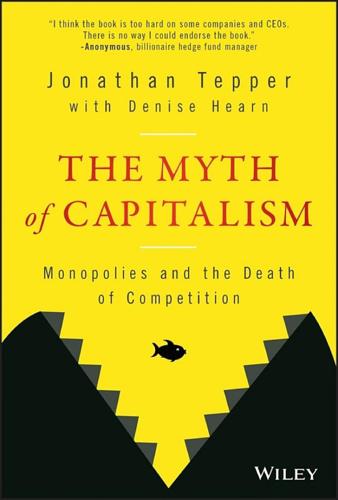
The Myth of Capitalism: Monopolies and the Death of Competition
by
Jonathan Tepper
Published 20 Nov 2018
Temporary jobs are a normal part of the economy, but record numbers tell us something else is going on.20 Research conducted by economists Lawrence Katz at Harvard and Alan Krueger at Princeton shows that almost all of the 10 million jobs that were created since 2005 are temporary.21 The overall number of temp workers (including independent contractors, freelancers, and contract company workers) increased from 10.7% to 15.8%. Temporary work can be empowering when you have the luxury of choice, but it is disempowering when you can't negotiate wages or benefits. Most people think of companies such as Uber, with an estimated seven million drivers worldwide, when they think of part-time and contracted work.

American Pain: How a Young Felon and His Ring of Doctors Unleashed America’s Deadliest Drug Epidemic
by
John Temple
Published 28 Sep 2015
That way, if Florida ever got its act together and successfully banned him from owning one, the money flow would barely be interrupted. Meanwhile, he kept hiring until he had five full-time doctors, plus a number of part-timers and a staff of about twenty. Parking-lot security guards, who were paid in cash. Inside, more security, cashiers, pharmacy techs, and receptionists, all on the payroll. And the cleaning woman, an independent contractor. Fort Lauderdale code enforcement officers began to pressure the clinic, and in March, Chris moved for the third time, this time to Boca Raton, where they stayed for the rest of 2009, the longest the clinic had ever remained in one place. They took over the lion’s share of a strip mall, about ten thousand square feet, with a huge waiting room that could seat 150 patients.

Winners Take All: The Elite Charade of Changing the World
by
Anand Giridharadas
Published 27 Aug 2018
The judge was suggesting that the various ways in which Uber monitored, tracked, controlled, and gave feedback on the service of its drivers amounted to the “functioning of power,” even if the familiar trappings of power—ownership of assets, control over an employee’s time—were missing. The drivers weren’t like factory workers employed and regimented by a plant, yet they weren’t independent contractors who could do whatever they pleased. They could be fired for small infractions. That is power. It can be disturbing that the most influential emerging power center of our age is in the habit of denying its power, and therefore of promoting a vision of change that changes nothing meaningful while enriching itself.

Interplanetary Robots
by
Rod Pyle
JPL is funded by NASA, but that funding goes to the California institute of Technology, or Caltech, in Pasadena, which manages JPL. This university connection is a contrivance of history, and has roots in JPL's origins, but the net effect is that JPL workers are not civil servants like other NASA employees, they are Caltech employees. A substantial portion of JPL's workforce consists of outside and independent contractors as well, who do not share in Caltech's full-time employee benefits, and this saves NASA money. Another effect of this unique relationship is that JPL looks and feels a lot more like a college campus than the other NASA centers, now showing their age in an increasingly inelegant fashion. JPL may be rough around the edges, but no more so than many public universities.

An Ugly Truth: Inside Facebook's Battle for Domination
by
Sheera Frenkel
and
Cecilia Kang
Published 12 Jul 2021
Zuckerberg and Sandberg asked Sullivan to help find his successor. Sandberg said she wanted a high-profile hire as a signal to their board of directors, and to regulators in Washington, of their commitment to security. Sullivan suggested Stamos. He argued that Stamos had a history of holding the powerful to account: as an independent contractor, he had been notoriously fired or forced to resign by employers because of his fierce adherence to privacy and security. Sandberg expressed some concern, asking if she could trust Stamos to do what was best for Facebook. Sullivan demurred. He couldn’t promise that Stamos would always fall into line, but there was no one else in the cybersecurity community with the same type of broad credibility.
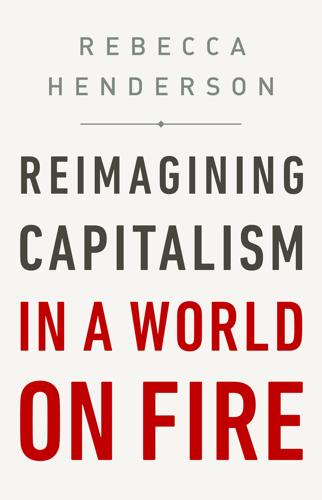
Reimagining Capitalism in a World on Fire
by
Rebecca Henderson
Published 27 Apr 2020
Nike’s celebrity endorsers—including Michael Jordan and Jerry Rice—were publicly hounded. But throughout the fracas, Nike continued to insist that what happened in its supply chain was none of its concern—that it had a code of conduct in place that prohibited abusive behavior, and that its suppliers were independent contractors over whom it had no control. Neal Lauridsen, Nike’s vice president for Asia said, “We don’t know the first thing about manufacturing. We are marketers and designers.”66 John Woodman, Nike’s general manager in Jakarta, explained, “They are our subcontractors. It’s not within our scope to investigate [allegations of labor violations].”

Ghost Road: Beyond the Driverless Car
by
Anthony M. Townsend
Published 15 Jun 2020
In big cities now you can find them in a circle around the downtown like planetoids orbiting a big star, precisely six to nine miles out from the geographic center of population. From here, the heavy lifting is still done by hand, a costly endeavor. Same-day delivery in big cities has historically relied on an itinerant work-force of independent contractors. This setup allows vendors to easily scale the pool of workers with demand. Today, a new courier workforce is on the move, as professional delivery drivers are replaced by phone-guided gig workers dispatched by apps like Uber Eats and Deliveroo. These gadgets allow companies to hire less-skilled workers, but in the switch, valuable local knowledge and curbside experience have been lost.
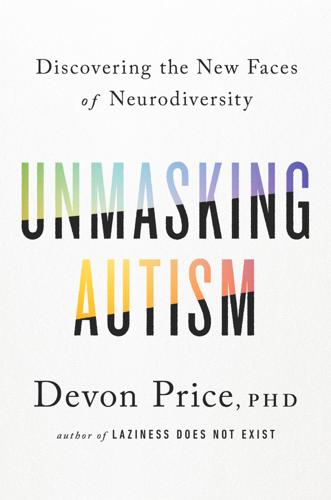
Unmasking Autism: Discovering the New Faces of Neurodiversity
by
Devon Price
Published 4 Apr 2022
In this way, to acknowledge the needs of Autistic workers is to listen to the canaries in the coal mine: our sensitivities and needs help lay bare just how unfair many work expectations are, even for neurotypical people. Many of the Autistic people I interviewed for this book are self-employed, independent contractors, or work in a field that allows for flexible scheduling. Autistic author and stripper Reese Piper tells me that her work schedule at the club varies based on her energy levels. Some weeks, she has it in her to work three ten-hour shifts; other weeks she only has the energy for one. When business is good, Reese can earn enough money to pay her monthly bills after just a couple of days of dancing, and she can take days or weeks off on relatively short notice.

The Devil's Chessboard: Allen Dulles, the CIA, and the Rise of America's Secret Government
by
David Talbot
Published 5 Sep 2016
Wisner was maneuvered into position as OPC chief, and under his gung ho leadership, the obscure unit quickly threw itself into the black arts of espionage, including sabotage, subversion, and assassination. By 1952, the OPC was running forty-seven overseas stations, and its staff had ballooned to nearly three thousand employees, with another three thousand independent contractors in the field. Dulles and Wisner were essentially operating their own private spy agency. The OPC was run with little government oversight and few moral restrictions. Many of the agency’s recruits were ex-Nazis. While President Truman continued to regard the primary purpose of an intelligence agency as the gathering of information for the president and his national security advisers, Dulles and Wisner were engaged in their own no-holds-barred war with the Soviet bloc.
…
Among those he sought out were safecrackers and break-in specialists. Harvey would soon be dealing with men whose skills were of a more violent nature. In November 1961, Harvey was put in charge of the top secret CIA operation to kill Castro, code-named ZR/RIFLE. He quickly nudged aside Bob Maheu, the independent contractor the CIA had originally hired to run its murder racket in the Caribbean, and began working directly with Mafia ambassador at large, Johnny Rosselli. The dumpy, baggy-panted cop and the dapper, silver-haired gangster with the tailored suits formed a tight, if unlikely, bond. Harvey invited Rosselli to dinner at his family’s spacious Chevy Chase home, where little Sally took to calling him “Uncle Johnny.”

Cultureshock Paris
by
Cultureshock Staff
Published 6 Oct 2010
Some countries have multilateral treaties with France by which citizens working abroad are not doubletaxed. You must still file your tax return on time. Find out the deadline for people living abroad. The French tax year coincides with the calendar year. Tax filing for salaried employees and independent contractors is due by the end of May. Taxes are based on le revenu (earned income) and capitaux mobiliers (unearned income). Taxes can reach up to 40% of gross income (but are set to go down at least somewhat), and there are also other forms of tax: capital gains tax, death duties, gift tax, wealth tax and land tax, etc.
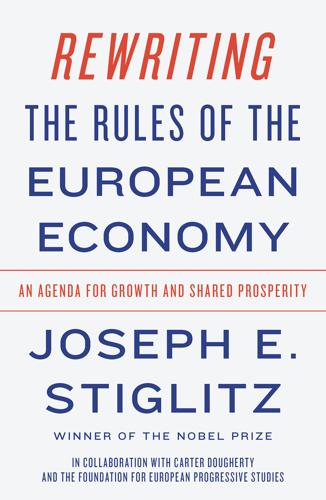
Rewriting the Rules of the European Economy: An Agenda for Growth and Shared Prosperity
by
Joseph E. Stiglitz
Published 28 Jan 2020
The paradox is that, in some respects, we seem to be reversing a long-term trend associated with development, which is the move from informal jobs to formal jobs with better protections. In some cases, firms like Uber have tried to take advantage of legalistic arguments by claiming that their workers are independent contractors—even as the company controls many details of what they do. In some countries, courts have ruled against these obvious ruses. Box 9.1: The Gig Economy in Europe, Its Problems, and Possible Solutions Uber, Airbnb, and TaskRabbit are examples of internet-based companies that connect clients with service providers (mini-cab drivers, owners of accommodation, and domestic work, respectively) through easy-to-use mobile apps.

Trees on Mars: Our Obsession With the Future
by
Hal Niedzviecki
Published 15 Mar 2015
These are task brokers like Fiverr and Taskrabbit, or driver-on-demand apps like Uber and Lyft—low-wage, task-based labor hubs that take a cut of every transaction but don’t take much, if any, responsibility for the estimated seventeen million or so Americans who work at least part time as “independent contributors.”81 These workers who race around walking dogs, hanging pictures, and giving rides to the airport don’t know what work at what wage they’ll have next day or next week. They are hired—or connected to jobs—by companies who say they are not employees, but independent contractors, which conveniently insures that the workers “don’t qualify for employee benefits like health insurance, payroll deductions for Social Security or unemployment benefits.”82 Guy Standing, a labor economist, has dubbed this rapidly expanding class of laborer “the precariat.”83 “These are not jobs, jobs that have any future, jobs that have the possibility of upgrading; this is contingent, arbitrary work,” says Stanley Aronowitz, director of the Center for the Study of Culture, Technology and Work at the Graduate Center of the City University of New York.

Custodians of the Internet: Platforms, Content Moderation, and the Hidden Decisions That Shape Social Media
by
Tarleton Gillespie
Published 25 Jun 2018
But Twitter, like many social media platforms, now employs a substantially larger group of people to provide a first wave of review, beneath the internal moderation team. They might be employed by the platform, at the home office, or in satellite offices located around the world in places like Dublin and Hyderabad. But more and more commonly they are hired on a contract basis: as independent contractors through third-party “temp” companies, or as on-demand labor employed through crowdwork services such as Amazon’s Mechanical Turk, Upwork, Accenture, or TaskUs—or both, in a two-tiered system.19 The leaked 2017 documents discussed at the start of this chapter were the removal instructions provided by Facebook to its crowdworkers, to guide, harmonize, and speed their review of flagged content.
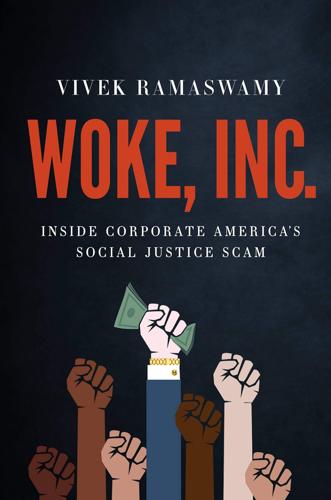
Woke, Inc: Inside Corporate America's Social Justice Scam
by
Vivek Ramaswamy
Published 16 Aug 2021
Lastly, Khosrowshahi wrote, “Let me speak clearly and unequivocally: Black Lives Matter.” In the weeks later, he pledged that Uber would be an “anti-racist company.” Meanwhile, at the exact same time, he was aggressively lobbying California to pass Proposition 22, which permits Uber to classify its drivers as independent contractors rather than as employees. Uber said it would go out of business if it had to reclassify drivers as employees, pleading unprofitability even as it doled out millions to BLM. I don’t know what exactly it means to be anti-racist, and Khosrowshahi’s dual actions certainly didn’t help clarify it for me.

The Heat Will Kill You First: Life and Death on a Scorched Planet
by
Jeff Goodell
Published 10 Jul 2023
In fact, during a reporting trip to the Willamette Valley, when temperatures were in the midnineties, I didn’t see any shade structures for workers in the fields of any of the nurseries or farms I visited. It’s not clear how much attention growers even pay to their workers, other than scrutinizing the numbers on their paychecks. Like many other nurseries and farms, Ernst subbed out the task of finding and hiring workers to an independent labor contractor. In effect, independent contractors allow farm and nursery owners to distance themselves from responsibility for who is working on their farm or how they are treated. It also makes it harder for workers to speak up against unsafe working conditions, since it is often not clear who is in charge, the nursery owner or the contractor.

You've Been Played: How Corporations, Governments, and Schools Use Games to Control Us All
by
Adrian Hon
Published 14 Sep 2022
Workers merely have the choice to adhere to all of Amazon’s rules or be fired. That’s no choice at all—it’s coercion. Uber is more cunning when it comes to its gamification experience. It has to be: Amazon employs its workers, who gain stability in exchange for control over their working conditions, whereas Uber’s drivers are generally independent contractors and theoretically free to come and go as they please. What’s more, drivers usually have a choice of rideshare companies to work with, so Uber can’t afford to be quite as punitive as Amazon. Instead, its gamification is a veritable bonanza of quests and bonuses, all to entice drivers into working as long as they possibly can.

The Hidden Globe: How Wealth Hacks the World
by
Atossa Araxia Abrahamian
Published 7 Oct 2024
“To resolve the problems of overpopulation in this infertile land (where there was no public spending to improve agriculture) the heads of the ruling families thought up an ingenious solution: they sold their compatriots to foreign governments,” writes the Swiss politician, intellectual, and activist Jean Ziegler in Switzerland: The Awful Truth. At first, the mercenaries from the cantons were independent contractors: free “lancers” who were often paid late and enjoyed few workplace protections. In the absence of prospects at home, they made the most of military life and took part in the requisite looting, drunkenness, and womanizing. By the seventeenth century, the mercenary economy had become more formalized, with recruiters, middlemen, managers, and codes of conduct.

Mood Machine: The Rise of Spotify and the Costs of the Perfect Playlist
by
Liz Pelly
Published 7 Jan 2025
“After all, this radical change did not emerge from the actions of a few isolated celebrities, nor a disorganized consumer boycott, nor a tech utopian cure-all, but rather the flexing of strike power by an organized mass of music workers.” As the new music labor organizers took on Spotify, they were building on a long history of musicians organizing to win.6 This is all despite the fact that UMAW and MWA are not actually unions: because independent artists are technically independent contractors, U.S. labor laws currently prohibit them from unionizing, instead making it so that musicians coordinating boycotts can be deemed illegal cartels. As of this writing, a piece of pending legislation, the Protect Working Musicians Act, aims to change that. Thus, the work of groups like UMAW and MWA is more comparable to efforts by the National Writers Union’s Freelance Solidarity Project than, say, the work of the AFM, which today reportedly largely caters towards full-time musicians working in theaters and orchestras.
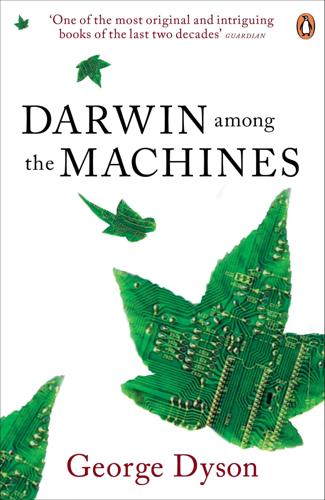
Darwin Among the Machines
by
George Dyson
Published 28 Mar 2012
There were to be four hundred switching nodes, each supporting up to eight full-duplex “minicost” microwave links. By 1966 the air force had received a favorable evaluation from an independent review. Only then was it determined that jurisdiction over the project would have to be assigned not to the air force and its independent contractors but to the Defense Communications Agency, which Baran and some influential colleagues believed was ill prepared to construct a nationwide network based on digital principles at odds with the communications establishment of the time. Baran was forced to advise against the implementation of his own project, lest “detractors would have proof that it couldn’t be done . . . a hard decision, but I think it was the right one.”62 Baran’s packet-switched data network did eventually materialize—not out of whole cloth, as envisioned in 1960, but by the gradual association of many different levels of digital communication systems that ultimately converged, more or less closely, on Baran’s original design.
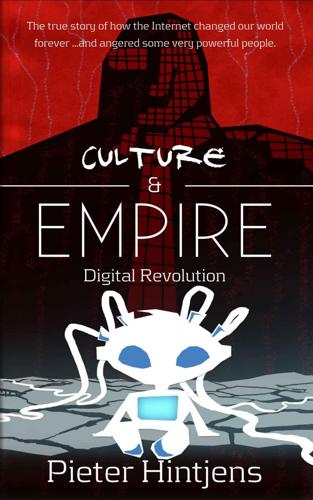
Culture & Empire: Digital Revolution
by
Pieter Hintjens
Published 11 Mar 2013
The perception that a real firm must be backed by a real building died in theory around the turn of the millennium, and in practice perhaps five years later. All we need now is a postal address, fast Internet access, coffee, and temporary meeting spaces. We don't need to hire employees or have a human resources department because more and more skilled staff choose to work as independent contractors or small businesses. Contracting and partnerships are more flexible than classic employment -- especially in Europe, which still struggles with an over-regulated labor market. Europe's heavy laws on permanent staff were effective tools against labor abuse in the last century. Today they're increasingly punishing for small, agile businesses.

America, You Sexy Bitch: A Love Letter to Freedom
by
Meghan McCain
and
Michael Black
Published 31 May 2012
I think they will be perfect for breaking the ice with Michael and accompanying us on our tour of the underworld of exotic dancing. Michael: Here’s something you might not know about Vegas strippers : they pay to take their clothes off. Strippers are not employees of any club but are rather “independent contractors,” who give the clubs a house fee for the privilege of taking off their clothes in front of drunken bachelor partiers and handsy conventioneers. Think about how genius that is for a second: the Sapphire Gentlemen’s Club, which bills itself as “the world’s largest Las Vegas strip club” (whatever that means), claims to have up to four hundred girls dancing there a night.

City on the Verge
by
Mark Pendergrast
Published 5 May 2017
There I met Rick, fifty-nine, who complained of arthritis. “My health ain’t too good.” A black navy veteran with white hair and mustache, he lived with his fiancée, Robbie, in a Hi Hat hut with a kind of attached tarp-covered porch. Lettuce grew in milk crates. Rick had worked in asbestos abatement for ten years, then labored for independent contractors doing home improvements, but with his health issues and the recession, that work disappeared. Nearby I found a fetid, mosquito-breeding body of water that turned out to be the old swimming pool of Funtown, a defunct amusement park that once featured rides, a miniature golf course, and a model rocket showing a film of an imaginary trip to the moon.
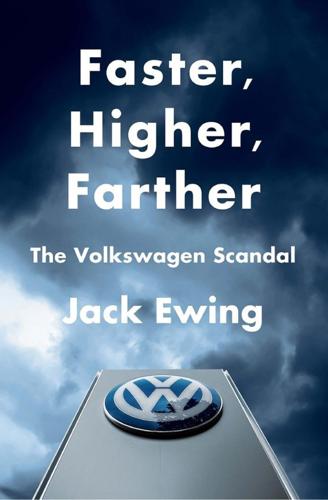
Faster, Higher, Farther: How One of the World's Largest Automakers Committed a Massive and Stunning Fraud
by
Jack Ewing
Published 22 May 2017
He had built a battery-powered car around the turn of the century and during World War I oversaw motorization of Austrian artillery at the Skoda automobile works in what is now the Czech Republic. (Many years later, after the fall of the Berlin Wall, Volkswagen would acquire Skoda.) Between the wars, working mostly as an independent contractor, Porsche designed and built a series of innovative race cars for companies including Daimler-Benz and Auto-Union, which would later become part of Audi. Though he had never earned a university degree and was largely self-taught, Porsche’s reputation as an engineer was such that Josef Stalin tried to lure him to the Soviet Union to oversee vehicle construction there.
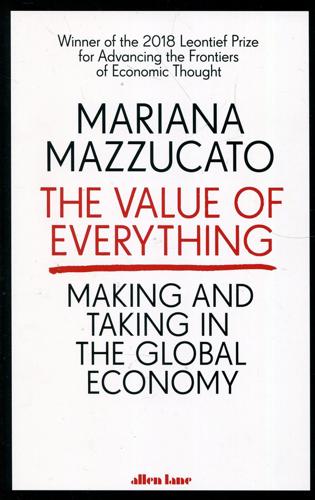
Value of Everything: An Antidote to Chaos The
by
Mariana Mazzucato
Published 25 Apr 2018
But the result of this sharing economy is that Uber Black drivers are paid less, ‘standards' rise (with pressure for drivers to offer ‘pool' services to customers) and competition from Uber's other services intensifies.68 While drivers are increasingly complaining, Uber's market reach is higher than ever and growing every day: as of October 2016 it had 40 million monthly riders worldwide.69 In 2016 it had 160,000 drivers in the US, with millions more spread across 500 cities globally - all working as ‘independent contractors', so that Uber does not have to provide them with the kind of healthcare and other benefits which they would receive as full-time employees. Uber, like Google, Facebook and Amazon, seems to have no limit to its size. The network effects that pervade online markets add an important peculiarity: once a firm establishes leadership in a market its dominance increases and becomes self-perpetuating almost automatically.

New Laws of Robotics: Defending Human Expertise in the Age of AI
by
Frank Pasquale
Published 14 May 2020
And what could be more tough minded than rulers made of silicon and steel? Nor is this image of mechanical domination some fantastic Last and First Men vision of a far-distant future.20 When an app already manages thousands of Uber drivers, it is not hard to imagine some future programmers at the company coding software to urge two or more of its “independent contractors” to race toward a particularly lucrative ride—winner-take-fare.21 It’s a world of “skin in the video game,” the ultimate instigation of flexible workers to scramble for wages and ratings from inflexible machines they cannot challenge or alter.22 Politico-economic change is today mainly chalked up to “technology,” an all-purpose category that can obscure as much as it reveals.

After the Fall: Being American in the World We've Made
by
Ben Rhodes
Published 1 Jun 2021
And yet, in each locale, there was the discovery that the same thing was happening everywhere. In March 2017, I went to Myanmar to help the government there prepare for peace negotiations with a patchwork of provincial ethnic groups who had been waging civil war for decades. Diplomacy, it turned out, was privatized like everything else. I would be an independent contractor for a British-based nongovernmental organization (NGO) led by Jonathan Powell, who had served as chief of staff for Tony Blair. Powell had led the negotiations to secure the Good Friday Accords that secured peace in Northern Ireland in the late nineties. Ever since, he’d become something of a globe-trotting private peacemaker from Africa to Latin America to Southeast Asia, a figure out of a Graham Greene novel meeting rebels in jungles and deserts, seeking to recapture the accomplishment of his career’s high-water mark.

The Costs of Connection: How Data Is Colonizing Human Life and Appropriating It for Capitalism
by
Nick Couldry
and
Ulises A. Mejias
Published 19 Aug 2019
The result is that artists and record companies collect less revenue from YouTube than from other music-streaming platforms, even though their content is played many more times on YouTube than anywhere else.79 Underpaid Labor Sometimes, participating in the Cloud Empire economy is not an unpaid job but an underpaid one. The Turker is perhaps the quintessential example. Turkers are freelance independent contractors who perform small tasks on Amazon’s Mechanical Turk platform, or MTurk, a crowd sourcing marketplace launched in 2005 where Requesters (businesses or individuals) can post tasks that computers can’t currently perform or that are cheaper for humans to do. Armies of Turkers can then earn small amounts of money (usually less than one cent per task) to perform the jobs, which might include doing things such as categorizing, sorting, testing, rating, generating content, or training artificial intelligence algorithms that will eventually make the human Turker redundant.
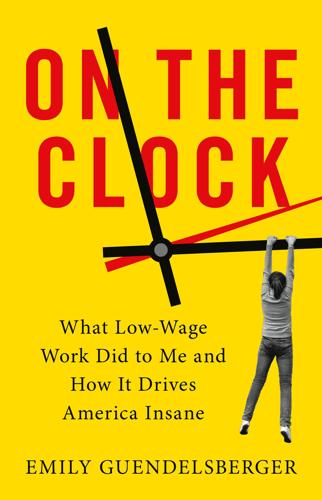
On the Clock: What Low-Wage Work Did to Me and How It Drives America Insane
by
Emily Guendelsberger
Published 15 Jul 2019
This is one of those weird quirks of the US employment market. If a full-time employee is injured in the course of doing her job, she’s eligible for workers’ compensation—government-mandated employer coverage of medical costs and money to make up for injury-related lost wages. But freelancers, independent contractors, and seasonal or temp workers—like all of us here for orientation—are just out of luck. We have a personal responsibility not to injure ourselves by overworking, cautions Miguel. “If you’re experiencing pain or discomfort, keep in mind that this might be because you’re injured,” in which case we should report to AMCARE.
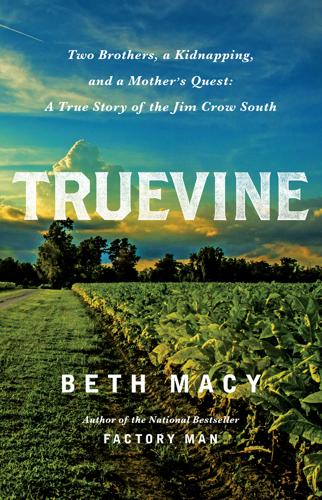
Truevine: Two Brothers, a Kidnapping, and a Mother's Quest: A True Story of the Jim Crow South
by
Beth Macy
Published 17 Oct 2016
One season he placed the brothers front and center, flanking Sadie and her sister, Rosie. While the Muses wore tuxedos with sashes, in stark contrast to their wild and dreadlocked hair, the Anderson sisters wore halter tops and short skirts to bring optimum exposure to their pearl-colored patches. An independent contractor, Kelty gave half his proceeds to circus management in exchange for its cooperation in the elaborate group portraits. He made most of his money from selling prints to circus employees and fans, and via publications like Billboard. Kelty’s drinking binges were legend, prompted, people said, after he returned shell-shocked from World War I.
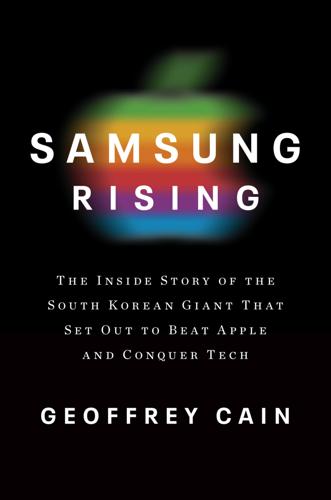
Samsung Rising: The Inside Story of the South Korean Giant That Set Out to Beat Apple and Conquer Tech
by
Geoffrey Cain
Published 15 Mar 2020
During a blazingly fast thirty days of talks that Pendleton negotiated himself shortly after the botched Galaxy S4 launch, Jay-Z rhymed and rapped as he talked business, a sight that dazzled Samsung’s side of the table. Samsung agreed to pay close to $30 million to Roc Nation. The first million owners of the Galaxy S III, S4, or Note II who registered—using a downloadable software app by an independent contractor—would get a free download of Jay-Z’s next album. Jay-Z got an up-front payment that underwrote the making of the album, a set number of downloads, and a guarantee of profitability. Samsung got a major endorsement for its brand. Jay-Z was set to become the face of Samsung in America. But the purpose of having Jay-Z was not only to sell more Galaxy phones.
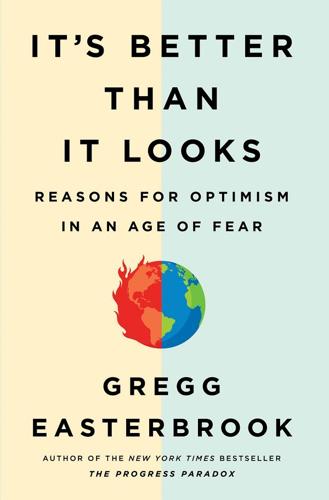
It's Better Than It Looks: Reasons for Optimism in an Age of Fear
by
Gregg Easterbrook
Published 20 Feb 2018
Journalism as a profession is being convulsed by technological change in much the same way mining and manufacturing are being convulsed. Print newspaper circulation in the United States peaked in 1957 at one copy per day for every 2.8 people; today it’s one per 7.7 people. Reporting pays steadily less in real-dollar terms, while journalism jobs that once offered security are becoming easily canceled independent contractor arrangements without benefits. This makes mainstream journalists an unhappy cohort, and they radiate unhappiness on all known frequencies. Yet just as there’s never been a better time to purchase a product built in a US factory, there’s never been a better time to be a news consumer. The advent of the Internet has increased the supply of news and opinions in the same way that open global trade has increased the supply of consumer goods.
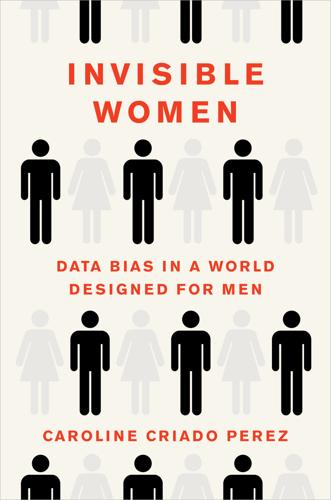
Invisible Women
by
Caroline Criado Perez
Published 12 Mar 2019
They vary from country to country, but they tend to include a right to paid sick and maternity leave, a right to a set number of hours, and protection from unfair and/or sudden dismissal. But these rights only apply if you are an employee. And, increasingly, many workers are not. In many nail salons, technicians are technically independent contractors. This makes life much easier for the employers: the inherent risk of running a company based on consumer demand is passed on to workers, who have no guaranteed hours and no job security. Not enough customers today? Don’t come in and don’t get paid. Minor accident? You’re out of here, and forget about redundancy pay.

Up and Down Stairs: The History of the Country House Servant
by
Jeremy Musson
Published 12 Nov 2009
In contrast, the new technology might itself quickly be made obsolete. In 1913, new motor-driven laundries were installed at houses such as Sledmere in Yorkshire and Carberry Tower in Scotland, but during the interwar period, as attempts were made to reduce domestic expenditure, many country-house laundries were closed and laundry sent out to an independent contractor.49 Modernisation took place at different rates in different houses, so assumptions cannot be made that innovations in new-built country houses in this period would typically be found in older ones. The conservatism of country-house owners made many slow to modernise their historic houses, certainly before the First World War.
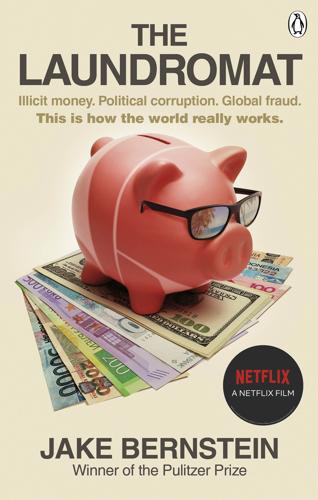
The Laundromat : Inside the Panama Papers, Illicit Money Networks, and the Global Elite
by
Jake Bernstein
Published 14 Oct 2019
In fact, Montoya, who earned about $900 a month, was one of Mossfon’s most prolific nominees,6 acting as a director for almost eleven thousand of its companies. Montoya’s affidavit stated that none of the companies had responsive documents, nor did they do any business within one hundred miles of Las Vegas. Mossfon further claimed that M. F. Corporate Services was an independent contractor—a stand-alone entity—not controlled by the Panamanians. Paul Singer’s team then sought to depose Patricia Amunategui,7 a Chilean-born former casino worker who had run Mossfon’s Nevada office for more than a decade. The Singer/Elliott lawyers wanted to investigate how the Báez money moved and the exact relationship between Mossfon and M.

Billionaires' Row: Tycoons, High Rollers, and the Epic Race to Build the World's Most Exclusive Skyscrapers
by
Katherine Clarke
Published 13 Jun 2023
With Firtash out of the picture, Manafort, too, was out, and Cohen didn’t want to continue to fund the overhead. The company’s phones and internet service were cut off and the New York State Department of Labor opened an investigation into the company for failing to fully pay employees and misclassifying them as “independent contractors” to avoid paying them worker’s compensation and unemployment benefits. Zackson faded back into oblivion. Meanwhile, as another summer came and went, the vacant Drake site, enclosed in fencing, became overgrown with weeds. CHAPTER 4 The Chess Master New York City had long been considered the home of the skyscraper.
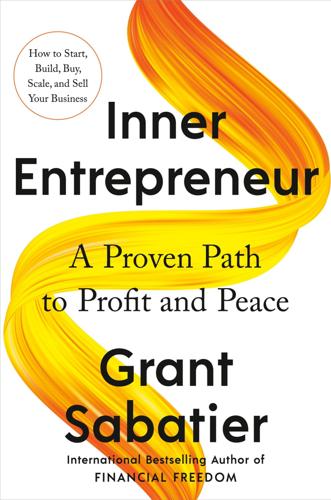
Inner Entrepreneur: A Proven Path to Profit and Peace
by
Grant Sabatier
Published 10 Mar 2025
One of the best ways to reduce your taxable income is to reinvest more of your profit in the business by paying as many expenses as you can before the end of the year. You can also contribute to a tax-advantaged investment account, like a solo 401(k) or a SEP-IRA, specifically designed for business owners and independent contractors. As with a regular IRA or 401(k), you won’t pay tax on any contributions you make until you withdraw from the account. Another way to potentially reduce your taxes is to elect to be taxed as an S corp, or S corporation. An S corp requires you to pay yourself a reasonable salary based on your role and current market rates for a similar position.

Red-Blooded Risk: The Secret History of Wall Street
by
Aaron Brown
and
Eric Kim
Published 10 Oct 2011
Different people in different parts of the company will face different constraint sets, so there will be diversity of approaches. Too much of this might lead to waste, but not enough can stifle growth. The only reason a company exists in the first place, instead of all physical assets being leased and all employees being independent contractors, is that some activities run better without money exchange at each stage. Overly tight cost controls defeat that. The same is true of the economy as a whole. If everything is priced in money, marked to market and subject to liquid trading, you get a narrowly efficient result. Because the result is highly specialized to a set of prices and uniform throughout the economy, even a small change in prices can cause a large dislocation.
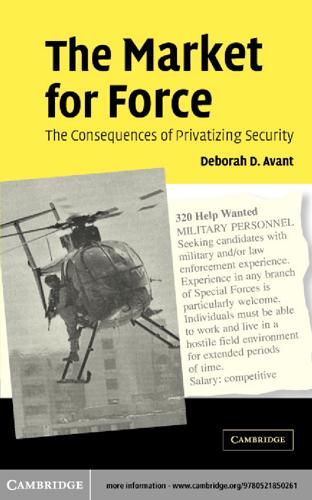
The Market for Force: The Consequences of Privatizing Security
by
Deborah D. Avant
Published 17 Oct 2010
This was the case when DynCorp employees working for the US (doing aircraft maintenance for the Army) or for the UN (part of the UN’s International Police Task Force) were implicated in prostitution (or worse) rings in Bosnia.53 About the time the DynCorp scandals were unfolding the US passed legislation, the Military Extraterritorial Jurisdiction Act or MEJA, which promises to hold personnel who have committed criminal acts under contract with the Department of Defense to account in US Federal Courts.54 Though there are many uncertainties about how this law will work in practice and it covers a fairly narrow range of PSC activity (PSCs under contract to the US DOD), it does close the loophole under which the DynCorp employees doing aircraft maintenance for the Army evaded responsibility for their actions.55 Contractor involvement in the abuses at Abu Ghraib prison in Iraq has led the US Justice Department to begin a criminal investigation under the MEJA.56 The passage of the Patriot Act in 2001 extends US Federal law to crimes committed by or against US citizens on lands or facilities designated for use by the US government.57 In 2004 an independent contractor working for the CIA was charged under the Patriot Act for abuses of a prisoner in Afghanistan that led to the prisoner’s death.58 Finally, the US has taken additional steps to 53 54 55 56 57 58 Patricia O’Meara Kelly, “Broken Wings,” Insight Magazine (29 April 2002); Robert Capps, “Outside the Law,” Salon.com News, 26 June 2002. http://caselaw.lp.findlaw.com/casecode/uscodes/18/parts/ii/chapters/212/toc.html.

From Airline Reservations to Sonic the Hedgehog: A History of the Software Industry
by
Martin Campbell-Kelly
Published 15 Jan 2003
For example, between 1962 and 1967 IBM spent about $150 million on its System/360 software, of which only $4 million went to independent software companies. Another disappointment came from the commercial sector, where the majority of big users, such as banks and insurance companies, had chosen to develop in-house programming capabilities rather than rely on software contractors. The few crumbs that fell to the independent contractors tended to be for small-scale, specialized software, or for contract programmers to bridge a temporary manpower gap—the inglorious business of body shopping. Hence, to stabilize their revenues and achieve a measure of corporate growth, all the major software contractors diversified into other areas of computer services: large-scale systems integration, time-sharing services, facilities management, software products, and peripheral activities such as leasing and education.

The Race Underground: Boston, New York, and the Incredible Rivalry That Built America's First Subway
by
Doug Most
Published 4 Feb 2014
He was born in County Cork, Ireland, on November 7, 1844, a year before the Irish potato famine leveled the country in starvation and disease. Like many parents, Bartholomew and Mary McDonald fled from the famine with their children. John was three when they came to New York and settled in the Bronx. His father, an independent contractor, taught his boy from a young age the value of combining politics and hard work, making a fortune in labor while also serving as a city alderman. His son tried college but wasn’t interested, and he dropped out to partner with his father in work. He quickly showed himself to be skilled as both a laborer and a manager.
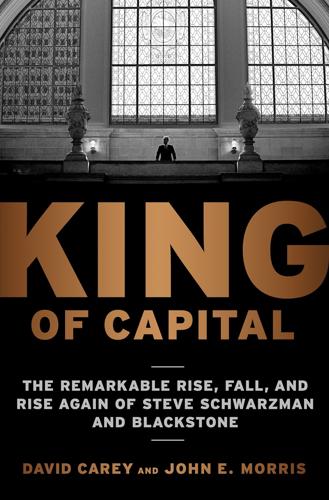
King of Capital: The Remarkable Rise, Fall, and Rise Again of Steve Schwarzman and Blackstone
by
David Carey
Published 7 Feb 2012
The inventory of troubled real estate, mortgage loans, and entire thrifts that the RTC was poised to auction off ran to tens of billions of dollars. Up and down Wall Street, people were salivating at the prospect of the RTC’s liquidation sales, and Batten arranged to work with Robert on scooping up real estate at distressed prices. (Robert didn’t join the Blackstone partnership, preferring to stay an independent contractor.) A second new business emerged almost unintentionally, a by-product of the need to invest the $100 million Blackstone had received from Nikko. Blackstone’s abortive risk-arbitrage fling in 1989 had eaten into the original hoard, but Schwarzman shuddered at the thought of putting the cash at risk in the turbulent markets.

Against Intellectual Monopoly
by
Michele Boldrin
and
David K. Levine
Published 6 Jul 2008
As a result, we find that, far from being driven out of business, “Boulton and Watt for many years afterwards kept up their price and had increased orders.”7 In fact, it is only after their patents expired that Boulton and Watt really started to manufacture steam engines. Before then, their activity consisted primarily of extracting hefty monopolistic royalties through licensing. Independent contractors produced most of the parts, and Boulton and Watt merely oversaw the assembly of the components by the purchasers. In most histories, James Watt is a heroic inventor, responsible for the beginning of the Industrial Revolution. The facts suggest an alternative interpretation. Watt is one of many clever inventors who worked to improve P1: KNP head margin: 1/2 gutter margin: 7/8 CUUS245-01 cuus245 978 0 521 87928 6 April 29, 2008 17:24 Introduction 3 steam power in the second half of the eighteenth century.
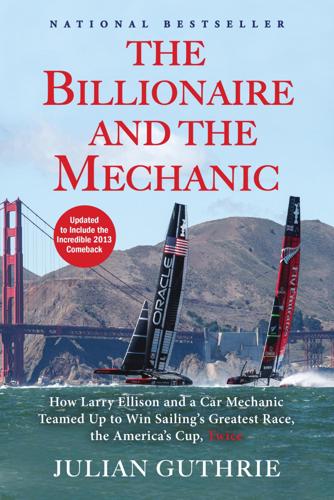
The Billionaire and the Mechanic: How Larry Ellison and a Car Mechanic Teamed Up to Win Sailing's Greatest Race, the Americas Cup, Twice
by
Julian Guthrie
Published 31 Mar 2014
He was well versed in the lexicon of boatbuilding and boat design, as well as in business administration, but nothing could have prepared him for the inflated egos of superstar athletes, the factions, the tension, and the jockeying for position. Things were far simpler on Sayonara, where sailors were hired for a race, arrived for practice, performed during the regatta, and left afterward. Some were hired for the next race; others weren’t. The sailors—Dickson included—were independent contractors. And Dickson’s role was specific: he was either the helmsman or, when Larry drove, the coach. Brad Butterworth, easygoing and professional, served as Sayonara’s tactician, the “eyes on the water,” looking for wind changes, plotting their next move, and reporting speed in relation to the competition.

Off the Books
by
Sudhir Alladi Venkatesh
For all these reasons, it is not surprising that women in Maquis Park move between the home and the wider community, or that they are at the forefront of dealing with the negative consequences that underground economic activity can have on quality of life. It is that particular struggle for African American women that bell hooks calls "homeplace resistance."16 There are different forms of shady activity that weigh upon the minds of Maquis Park residents. A steady stream of peddlers and independent contractors, like car mechanics and gypsy cab drivers, loiter in public space seeking customers. Their presence effectively turns recreational spaces, alleys, and other thoroughfares into workplaces. Some of this work, such as automotive repair, can be hazardous for children and passersby. There are also myriad illegal activities, ranging from gun trading to drug trafficking to sex work, that can become violent and make it difficult for parents to take their children safely about the neighborhood.

Virtual Competition
by
Ariel Ezrachi
and
Maurice E. Stucke
Published 30 Nov 2016
Instead, if Uber possesses market power, the surge price enables both Uber and its drivers to simply earn extra profits, at consumers’ expense, all under the guise of a “market-clearing” price. A Privately Planned Economy? Notice here that Uber is in effect an uber–price regulator. Uber does not own the cars. Nor does Uber employ the drivers, who are “independent contractors.”18 Nor does Uber allow individual drivers and passengers to negotiate prices in each city. Uber sets the price. It also increases and lowers the price based on its capturing all the relevant market information. So if Uber captures the sum of all knowledge to set the market-clearing price, why can’t other platforms and super-platforms do the same?

Competition Overdose: How Free Market Mythology Transformed Us From Citizen Kings to Market Servants
by
Maurice E. Stucke
and
Ariel Ezrachi
Published 14 May 2020
As for Generation Z (defined as those born in the mid-1990s to the early or mid-2000s) 17 percent of young adults ages eighteen to twenty-four are out of work in mid to large cities in the United States, totaling 2.3 million young people.14 They and future generations will likely join the swelling ranks of “precariats”—those clinging precariously to their current economic rung, while bearing ever greater risks in the digital economy.15 Should they try to organize to secure fairer wages, as many Uber and Lyft drivers attempted to do in Seattle in 2015, they can expect the government to intervene—and not on their behalf. Competition is inherently good, the FTC and DOJ will tell the court: Antitrust law “forbids independent contractors from collectively negotiating the terms of their engagement.”16 That’s price-fixing, which “is at the very core of the harms the antitrust laws seek to address.”17 Unionizing, which may be the only remedy left to the powerless, has also come under attack, in part for being anticompetitive—the very same rationale we saw that sent union leaders (and socialists) to jail under the Sherman Antitrust Act of 1890.

Construction Project Management
by
S. Keoki Sears
Published 7 Feb 2015
The prime contractor may choose to self‐perform certain parts of the work or may choose to subcontract all of the work to specialty contractors. When multiple prime contracts are used, the project is not constructed under the centralized control of a single prime contractor. Rather, several independent contractors work on the project simultaneously, and each is responsible for a designated portion of the work. Each of the contractors is under contract with the owner, and each functions independently of the others. Responsibility for coordination of these contractors may be undertaken by the owner, the architect‐engineer, a construction manager, or one of the prime contractors who is paid extra to perform certain overall job management duties. 1.8 Competitive Bidding The owner selects a prime contractor on the basis of competitive bidding, negotiation, or some combination of the two.

The Search for Life on Mars
by
Elizabeth Howell
Published 14 Apr 2020
All five orbiters worked and, for their time, produced the highest resolution images of the surface of the Moon. In the fallout from the Voyager cancellation, NASA Headquarters felt that dealing with Langley would be easier than dealing with JPL, based on recent experiences with the invariably independent contractor in Pasadena. As Gerry Soffen noted, Ed Cortright held a lot of sway with the NASA higher-ups in Washington, DC, and could see which way the wind was blowing. 98 NASA Langley came out top: NASA Langley established the Viking Project Office, which managed the whole project. JPL would continue to look after the Deep Space Network and would lead the development of the orbiters.
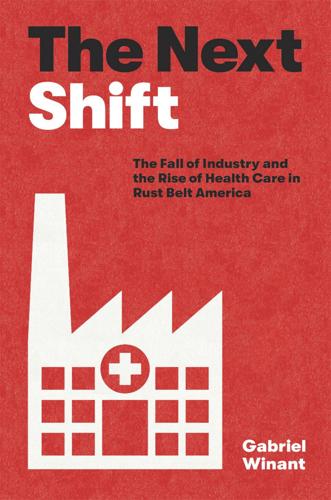
The Next Shift: The Fall of Industry and the Rise of Health Care in Rust Belt America
by
Gabriel Winant
Published 23 Mar 2021
Because of its organizational structure, UPMC argued, it was not obligated to act in ways expected of an employer. This contention put UPMC in the growing camp of employers in all industries seeking to avoid responsibility for employment’s costs through the use of subcontracting or misclassification of workers as independent contractors—a phenomenon known as the “fissuring” of the workplace. A 2018 magazine feature on the subject used UPMC’s practices for its central example, telling the story of the outsourcing of the job of medical transcriptionist Diana Borland to a contractor that paid her per line rather than per hour.
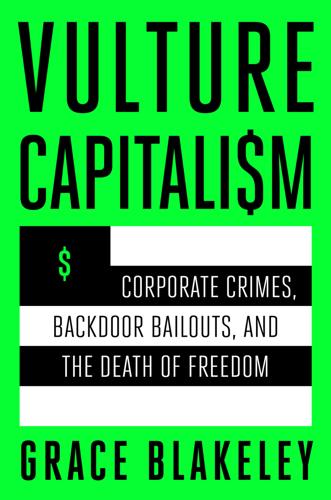
Vulture Capitalism: Corporate Crimes, Backdoor Bailouts, and the Death of Freedom
by
Grace Blakeley
Published 11 Mar 2024
It is this right of control or interference, of being entitled to tell the servant when to work (within the hours of service) and when not to work, and what work to do and how to do it (within the terms of such service) which is the dominant characteristic in this relation and marks off the servant from an independent contractor, or from one employed merely to give to his employer the fruits of his labor. 70. Joseph A. Schumpeter, Capitalism, Socialism and Democracy (London: Routledge, 2006). 71. Tepper and Hearn, The Myth of Capitalism. 72. Meagher, Competition Is Killing Us. 73. Ibid. 74. Ibid. 75. Thomas Philippon, The Great Reversal: How America Gave Up on Free Markets (Cambridge, MA: Belknap Press, 2019). 76.

The Cobweb
by
Neal Stephenson
and
J. Frederick George
Published 31 May 2005
But they agreed that at any one time there were in town at least five people, desk officers six levels down from the President, who actually knew what was going on. There was no lack of information. The combined forces of the intelligence community—with all its spectacular satellites, sneaky HUMINT heads, NSA intercepts, independent contractors such as Dr. Schoendienst, the never-flagging torrent of governmental studies and statistics from national and international bodies, privileged information from multinational firms, and the best mainframes and libraries in the world—provided all the information that anybody needed. There was no lack of smarts among the analysts, either.
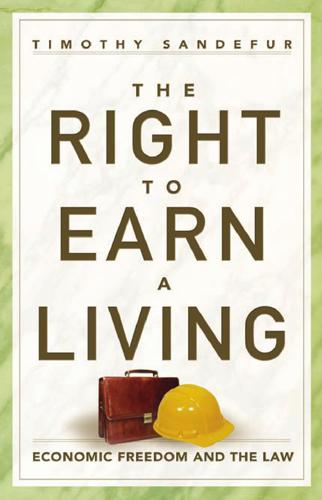
The Right to Earn a Living: Economic Freedom and the Law
by
Timothy Sandefur
Published 16 Aug 2010
Judge Stephen Reinhardt wrote the opinion declaring that Microsoft’s employment benefit documents were ambiguous because the documents declared eligible all “common law employees.” A reasonable person, Reinhardt continued, might have thought that this meant that freelancers, too, were eligible for benefits, and “[t]he fact that Microsoft did not intend to provide benefits to persons who [sic] it thought were freelancers or independent contractors sheds little or no light on that question.”105 Although Microsoft separated freelancers from other employees; paid them out of different funds, gave them different badges, different e-mail addresses, and different training, and even though the freelancers repeatedly testified that they knew they were ineligible for the benefits, the court declared them eligible anyway.
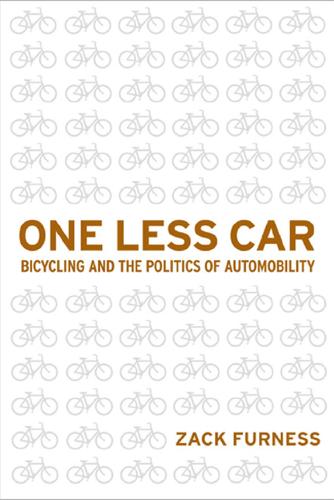
One Less Car: Bicycling and the Politics of Automobility
by
Zack Furness
and
Zachary Mooradian Furness
Published 28 Mar 2010
For example, Frank Trippett writes, “inspired by the fact that more deliveries mean more money, many messengers whiz around the city in pseudokamikaze style, heeding neither red lights nor one-way signs, zagging on and off sidewalks, leaving behind a wake of screeching tires and cursing pedestrians.”75 Messenger companies almost universally hire messengers as independent contractors, meaning that workers receive no hourly wage, job security, health insurance, vacation pay, or sick pay despite working a very dangerous job and being subject to regular harassment from drivers, police officers, and building security guards. yet employees in new york City—the proverbial lions’ den of messenger controversy—made approximately $13,500 (average) per year in the mid1980s, according to McCorkell, and this figure assumes a ten-hour workday throughout the entire year.76 Financial issues were then, as now, compounded by the delivery deadlines that messengers are by their very nature required to meet. rebecca “lambchop” reilly, a bike messenger historian and former messenger, speaks directly to the dilemma this poses in terms of safety and lawful behavior: “There are times when deadlines can’t be met, unless a messenger breaks the law.

Wealth and Poverty: A New Edition for the Twenty-First Century
by
George Gilder
Published 30 Apr 1981
D. “An Economic Renaissance.” In Galenson, Walter, ed. Economic Growth and Structural Change in Taiwan. Ithaca, NY: Cornell University Press, 1979. Macaulay, Thomas. The History of England. 4 vols. New York: E. P. Dutton, Everyman’s Library, 1953. McClaughry, John. “Uncle Sam’s War on the Independent Contractor.” National Review 31 (51) December 21, 1979. McClelland, David C. The Achieving Society. New York: Irvington Publishers, Inc., 1976. McKinnon, Ronald I. Money and Capital in Economic Development. Washington, DC: the Brookings Institution, 1973. Macoby, Eleanor Emmons, and Jacklin, Carol Nagy.
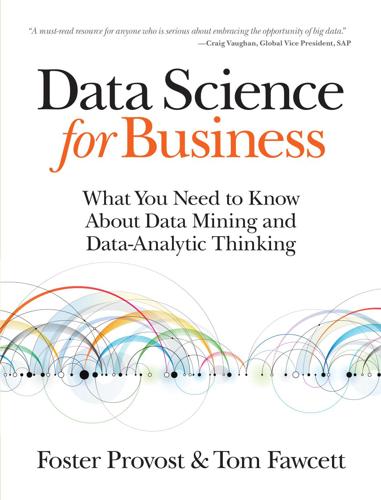
Data Science for Business: What You Need to Know About Data Mining and Data-Analytic Thinking
by
Foster Provost
and
Tom Fawcett
Published 30 Jun 2013
Final Example: From Crowd-Sourcing to Cloud-Sourcing The connectivity between businesses and “consumers” brought about by the Internet has changed the economics of labor. Web-based systems like Amazon’s Mechanical Turk and oDesk (among others) facilitate a type of crowd-sourcing that might be called “cloud labor”—harnessing via the Internet a vast pool of independent contractors. One sort of cloud labor that is particularly relevant to data science is “micro-outsourcing”: the outsourcing of large numbers of very small, well-defined tasks. Micro-outsourcing is particularly relevant to data science, because it changes the economics, as well as the practicalities, of investing in data.[84] As one example, recall the requirements for applying supervised modeling.

More: The 10,000-Year Rise of the World Economy
by
Philip Coggan
Published 6 Feb 2020
If a worker performs a service almost exclusively for a single company, and the company imposes sufficient conditions on the way in which the job is performed, then it may be proved that the worker is an employee, not a contractor.43 Furthermore, such an employee may be entirely at the mercy of the platform provider. Comparisons have been drawn with the old system for employing dockers, who gathered at the port every day and were picked out by the foreman for work. On the other hand, many people choose to operate as freelancers and independent contractors, and surveys show that they are happier than traditional employees.44 The idea that everyone would have a full-time job in a factory or in an office, and would stay with a single employer for a large chunk of their career, developed in the 19th and 20th centuries. It was unusual before 1820 and may become unusual again.
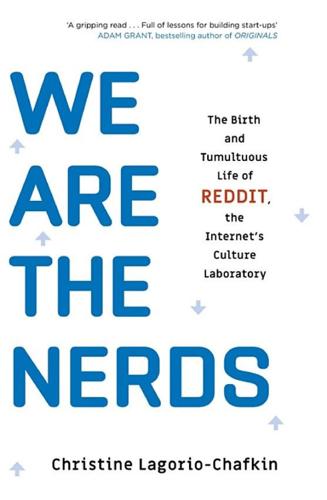
We Are the Nerds: The Birth and Tumultuous Life of Reddit, the Internet's Culture Laboratory
by
Christine Lagorio-Chafkin
Published 1 Oct 2018
A few weeks later, onstage at a conference in Brooklyn, Huffman was confronted with the question of whether Facebook’s longtime defense—that it was not a publisher of content, which would require editorial control, but rather merely a technology platform, useful for distribution of individuals’ content—was valid. The “neutral platform” defense had become a common one not just for Facebook, but also for tech companies of all stripes. Its core concept, that a platform merely connects buyers with sellers of a service, was one that allowed Uber to pay its drivers as independent contractors and therefore not provide them costly employment benefits, one that Airbnb had used at times to throw up its hands when rental listings broke local laws or when users behaved inappropriately. Reddit itself had been here before, in dealing with the dissemination of copyrighted material, and in arguing the fundamentals of the SOPA and PIPA legislation that could have held Internet companies responsible for the content they disseminated.

Amazon Unbound: Jeff Bezos and the Invention of a Global Empire
by
Brad Stone
Published 10 May 2021
Instacart raised millions from venture capital firms including Sequoia, the original backer of Webvan, and struck partnerships with grocery chains like Whole Foods Market, Costco, and Safeway. It then contracted with smartphone-toting pickers to select orders off the shelves of retail stores and with drivers to transport them in their own cars to customers’ homes. There was no inventory risk or costly employment contracts, since the workers were all independent contractors. With few of the fixed costs that sank Webvan, the startup had tremendous leverage. After Instacart burst onto the scene in 2012 and started furiously expanding into new cities, Amazon’s M&A team tried to reach out to learn more about the company. Wise to Amazon’s methods, Apoorva Mehta didn’t return the call.

Fancy Bear Goes Phishing: The Dark History of the Information Age, in Five Extraordinary Hacks
by
Scott J. Shapiro
On Friday, September 25, 2015—six months before Fancy Bear launched its attack—FBI special agent Adrian Hawkins called the DNC. He asked for the computer security department but was told that the DNC did not have a computer security department. Hawkins was transferred to the Computer Help Desk, and the Help Desk handed the phone over to the IT director, Yared Tamene. Tamene was an independent contractor who worked for MIS Department but was embedded in the DNC to run their networks. He was not a security specialist. Hawkins told Tamene that the FBI had intelligence indicating that the DNC network was compromised and asked him to look for malware on the system. Hawkins did not tell him what the malware was, except that it was called the Dukes.
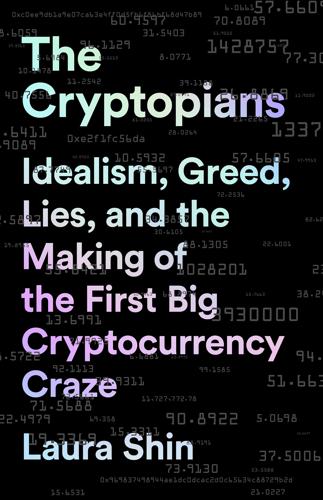
The Cryptopians: Idealism, Greed, Lies, and the Making of the First Big Cryptocurrency Craze
by
Laura Shin
Published 22 Feb 2022
Kelley said the UG would have sent it if the EF had asked. In the end, it was agreed that Patrick would take over the directorship. Although she didn’t say so, Ming, scrutinizing the budgets of ETH Dev, had become convinced that Frithjof, the CFO, was embezzling money—up to $100,000—and that Kelley and Christian were involved. Frithjof, an independent contractor because, Kelley says, he had refused to become an employee, though Frithjof says he was offered a contractor agreement, was partially financially responsible for all the Ethereum entities at that time except the Dutch one. He was tasked with cleaning up the long period without proper bookkeeping and administrative and tax management.

The Oil and the Glory: The Pursuit of Empire and Fortune on the Caspian Sea
by
Steve Levine
Published 23 Oct 2007
The presence of western oilmen made a mark on towns all along the north Caspian area. The wildest place was Aksai, near the North Kazakhstan natural gas field called Karachaganak. There, Jeffery saw buses ferrying prostitutes into the work camp and retrieving the women the next day. In Atyrau, some independent contractors took apartments in town and found Kazakh or Russian girlfriends. Oilmen from Sunkar sometimes managed to strike up romantic relationships, too. Jeffery and others were amused by two paramedics on alternating twenty-eight-day work schedules who unknowingly had the same girlfriend. Because one was on duty while the other was on break, neither realized they were courting the same woman.
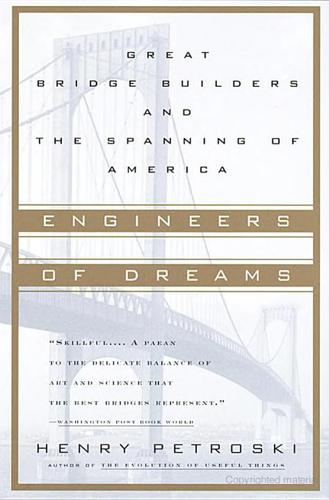
Engineers of Dreams: Great Bridge Builders and the Spanning of America
by
Henry Petroski
Published 2 Jan 1995
Besides designing the machinery to effect the spinning of the twenty-one-inch cables, then the largest ever, during his tenure with Glyndon he produced an unsuccessful design for a suspension bridge to cross the St. Lawrence River at Quebec, where the great cantilever had failed. He left Glyndon in 1910 to build, as an independent contractor, a suspension bridge near his hometown; this structure was completed in about six months at a cost of $40,000, 50 percent lower than the lowest bid that had been received by the town of Massena. Over the next several years, Robinson worked on a variety of bridge, tunnel, and navy war projects; his experience was broad and deep by the time Steinman met the “modest, distinguished-looking man” in 1920.

The Tylenol Mafia
by
Scott Bartz
Published 21 Sep 2011
Deacon had been the director of transportation at Zahn Drug when he took those bribes. Zahn Drug also had a history of making some really bad hires. In the mid-1970s, Zahn Drug hired PDM Contracting of Norwood Park, Illinois to remodel drugstores that belonged to its group of Family Drug Centers. The firm’s owner, John Gacy, worked as an independent contractor for Zahn Drug for 2 1/2 years. Gacy often gained contracts by undercutting his competitors’ bids. He stayed profitable by hiring a number of teenage boys at low wages. Gacy was in the midst of a remodeling job for Zahn Drug FDC affiliate, Nisson Pharmacy, in Des Plaines, Illinois, when on December 13, 1978 police followed a man they believed had abducted a missing boy, last seen at Nisson Pharmacy.

The Unwinding: An Inner History of the New America
by
George Packer
Published 4 Mar 2014
The distractions were different now, but he was still trying to set down what he saw and felt with utmost accuracy, and in the American din, that small thing was everything. DEAN PRICE Dean spent seven years in Pennsylvania. He married a girl who also worked for Johnson & Johnson, and they lived in Harrisburg and had two boys—Chase in 1993, Ryan in 1995. After leaving the company, Dean went to work as an independent contractor selling Johnson & Johnson orthopedic knees and hips. He made good money, but within a few years the marriage fell apart, and Dean turned to drinking. It got harder and harder to walk out the front door in the morning, and eventually he stopped making his sales quotas. He quit before the company could terminate his contract.

Leviathan Wakes
by
James S. A. Corey
Published 14 Jun 2011
It’ll look exactly like what it is: something a bunch of Belters slapped together in a hurry.” He handed the paper to Fred. Fred began laughing in earnest, either at the terrible drawing or at the absurdity of the whole thing. “You could give a pirate a hell of a surprise,” he said. “If I do this, you and your crew will record my depositions and hire on as an independent contractor for errands like the Eros run and appear on my behalf when the peace negotiations start.” “Yes.” “I want the right to outbid anyone else who tries to hire you. No contracts without my counteroffer.” Holden held out his hand, and Fred shook it. “Nice doing business with you, Fred.” As Holden left the office, Fred was already on the comm with his machine-shop people.

Abaddon's Gate
by
James S. A. Corey
Published 3 Jun 2013
The truth was it wouldn’t even put a dent in the payout from their most recent contract, and that was only one of three contracts they’d completed in the last four months. It was going to be a very flush year. Holden had made a lot of mistakes over the last three years. Deciding to quit his job as the OPA’s bagman and become an independent contractor wasn’t one of them. In the months since he’d put up his shingle as a freelance courier and escort ship, the Rocinante had taken seven jobs, and all of them had been profitable. They’d spent money refitting the ship bow to stern. She’d had a tough couple of years, and she’d needed some love.
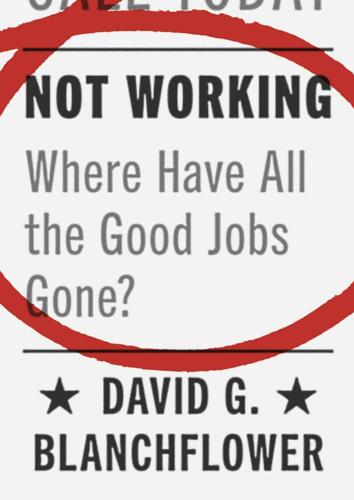
Not Working: Where Have All the Good Jobs Gone?
by
David G. Blanchflower
Published 12 Apr 2021
Of those wanting to work more hours, 74 percent pointed to the lack of available work. Katz and Krueger (2017) reported that in the United States the percentage of workers engaged in alternative work arrangements—defined as temporary help agency workers, on-call workers, contract workers, and independent contractors or freelancers—rose from 10.1 percent in February 2005 to 15.8 percent in late 2015. In an update Katz and Krueger (2019) walked those conclusions back somewhat based on new BLS data for 2017 arguing any upward trend was in fact more modest. They found a slight decline in the incidence of alternative work arrangements from 10.7 percent in 2005 to 10.1 percent in 2017.
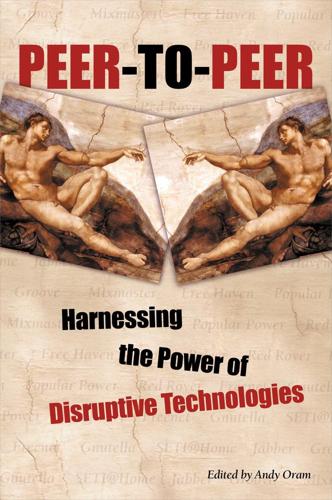
Peer-to-Peer
by
Andy Oram
Published 26 Feb 2001
So far, all these models assume that collaboration is an internal affair—that we work in groups under the umbrella of a single corporate security infrastructure. For many real-world collaborative projects, that assumption is plainly false. Consider the project that produced this chapter. Two of the authors (Nimisha Asthagiri and Walt Tuvell) are employees of Groove Networks, Inc. Another ( Jon Udell) is an independent contractor. Beyond this core team, there was the editor (Andy Oram, an employee of O’Reilly & Associates, Inc.), and a group of reviewers with various corporate and academic affiliations. Projects like this aren’t exceptions. They’re becoming the norm. To support our project, one of the authors created a Groove shared space.

Troublemakers: Silicon Valley's Coming of Age
by
Leslie Berlin
Published 7 Nov 2017
Though it was true that Bushnell had launched the startup company with Dabney, he had done so with a safety net that Alcorn did not have: he was a full-time salaried employee at Nutting Associates, the company that licensed and built Computer Space. Bushnell’s salary was higher than what he had earned at Ampex—and on top of it, he had negotiated licensing fees from Nutting as an independent contractor. Bushnell had told his wife that he would be running his own company within two years of coming to California. He decided to consider the Nutting job “kind of a rounding error” that he could “edit out of conversations” when he talked about his new video game business. “Entrepreneur” sounded “more glamorous,” he later explained when asked why he had not told Alcorn about his job with Nutting.10 Appearances mattered to Bushnell; his first hire at Atari was a receptionist, his children’s seventeen-year-old babysitter, whom he told to place all callers on hold with a promise to “see if Mr.

Against All Enemies
by
Tom Clancy
and
Peter Telep
Published 13 Jun 2011
He worked with a crew of five other men, all loyal and sworn to secrecy, and he said that the intelligence they had gathered would be very useful. Because they were so well paid, they had been able to avoid the temptation of joining one of the cartels. In fact, when they encountered sicarios, many assumed they were part of some other group, and not, as Felipe referred to his men, “independent contractors.” “Thank you for this, and for all of your other help,” said Samad, accepting the key and plugging it into the notebook computer sitting on the kitchen’s small bar. He climbed onto the stool and sat there, clicking open the files, which contained hundreds of photographs. Felipe nodded and said, “Señor, we know what it is you plan to do.”

The Outlaw Ocean: Journeys Across the Last Untamed Frontier
by
Ian Urbina
Published 19 Aug 2019
There is a tacitly accepted practice to ignore a clear pattern that screams at anyone willing to look at it and that ranges from debt bondage to systematic abandonment. In the rare instance that such cases get covered in the press, they are dismissed by industry spokespeople as aberrations, or they get watered down by discussions of the inevitable bureaucratic challenges that are distinct to transnational and offshore commerce. Those workers are independent contractors and not our responsibility. Those ships are flagged to another country. A manning agency should be handling their repatriation and pay. The shipowner, not the industry, should be held accountable. And so on. The self-serving talking points are well-worn tools in an increasingly globalized economy, but nowhere are they more effective than on the ocean.

Empire of Guns
by
Priya Satia
Published 10 Apr 2018
George Markbee, a London gunmaker who had become an Ordnance viewer, went to Birmingham permanently on four shillings per day, out of which he would defray his expenses and “go wherever the Board shall have occasion to send him.” The London company’s proofhouse hired a new assistant to cope with the increasing work. Regimental agents were banned from buying arms independently. Contractors knew that sending arms directly to a ship seriously violated protocol. In this climate, contractors gained leverage on prices. Lockmakers asserted their demand for seven shillings rather than the office’s offer of six. In 1756, Galton, too, requested higher prices on the grounds that competition had driven prices up for locks and iron—the very problem that had plagued his commercial sales.

The Bin Ladens: An Arabian Family in the American Century
by
Steve Coll
Published 29 Mar 2009
Then after a long time—maybe a year or a year and a half—he went to Aramco and said, ‘I want to start my own business.’” It was difficult to bring in Americans to Saudi Arabia to do every little job, from catering to fence repair; therefore, Aramco supported any Arab who showed promise as an independent contractor. “They said, ‘Go on out, get started, we’ll give you some jobs. You can always come back here.’ He got his contracting job going well enough so that he could go to Riyadh and hang out for days and days.” A profile of Bin Laden assembled several decades later by the American government reported that he struck out on his own from Aramco in 1935.9 Building contracts in Riyadh depended upon the favor of King Abdulaziz.

Powerhouse: The Untold Story of Hollywood's Creative Artists Agency
by
James Andrew Miller
Published 8 Aug 2016
The shift meant that agents were now seen as necessities rather than options or luxuries. In the 1950s, Lew Wasserman transformed the talent agency MCA into a “packager” that would approach studios with already assembled teams of directors, actors, and writers. With this, Hollywood saw the birth of a new species—film stars who were also independent contractors, with the textbook case being Jimmy Stewart. The star of Harvey and many other iconic hits saw his wealth multiply with a single role in Universal’s Winchester ’73. By forgoing a standard salary and taking profit participation instead, Stewart paved the way for actors, directors, producers, and writers to leverage their celebrity at the negotiating table.
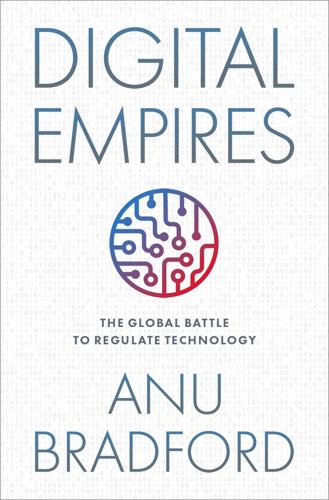
Digital Empires: The Global Battle to Regulate Technology
by
Anu Bradford
Published 25 Sep 2023
Tech companies cannot decouple themselves from governments, and while these companies may resist government regulations, they ultimately must comply with them. They cannot coerce their way into merger clearances, refuse to pay digital taxes, or restore content that the government has ordered them to take down. Neither can they engage in targeted advertising if governments ban such targeting, or treat gig workers as independent contractors if the government has legislated for these workers to be employees. The power of these companies—their ultimate sovereignty—is limited to not doing business in jurisdictions whose laws they do not like. However, that is a distinctly costly way for them to exercise sovereignty. Acknowledging that tech companies remain subject to the coercive power of the state does not mean that regulating these companies is easy, or always effective.

The Vietnam War: An Intimate History
by
Geoffrey C. Ward
and
Ken Burns
Published 4 Sep 2017
Long Binh also housed a military jail that held hundreds of prisoners and forty separate air-conditioned clubs at which officers and enlisted men could drink and eat, a bakery that produced 180,000 loaves of bread a day, a Chinese restaurant, a go-cart track—and a “massage parlor,” operated by an independent contractor and open twenty-four hours a day. Since most of the men who lived and worked on the base rarely moved beyond the barbed wire and never saw combat, the Army built for them what was officially called “the Nature of the War Museum,” a replica of a Viet Cong–held village—a hut, a Buddhist temple, artificial booby traps, and a hollowed-out haystack with an opening at the side and a helpful sign reading “Hiding-Place in Haystack.”

Dirty Wars: The World Is a Battlefield
by
Jeremy Scahill
Published 22 Apr 2013
We’re going to rock their world.” In a sign of things to come, the covert operations Black organized immediately after 9/11 relied heavily on private contractors. The initial CIA team consisted of about sixty former Delta Force, ex-SEALs and other Special Forces operators working for Black as independent contractors, making up the majority of the first Americans to go into Afghanistan after 9/11. In the beginning, the list of people who had been pre-cleared for CIA targeted killing was small: estimates ranged from seven to two dozen people, including bin Laden and his deputy, Ayman al Zawahiri. And the operations were largely focused on Afghanistan.

To Sleep in a Sea of Stars
by
Christopher Paolini
Published 14 Sep 2020
The doctor, she guessed, based off the stethoscope draped around his neck. His hands were long and restless, fingers darting fish-like with quick intent. Instead of a jumpsuit, he wore a slate-blue turtleneck and matching slacks. Neither outfit was a standard uniform. The two definitely weren’t military. And they weren’t Hydrotek personnel. Independent contractors, then, or freelancers, which confused her. If she wasn’t on the gas-mining station, where was she? The doctor noticed her looking. “Ah, Ms., you’re awake.” He cocked his head, his large, round eyes serious. “How are you feeling?” “Not—” Kira’s voice came out in a harsh croak. She stopped, coughed, and then tried again.

The Pursuit of Power: Europe, 1815-1914
by
Richard J. Evans
Published 31 Aug 2016
After finding work in a sugar refinery he subsequently became a farm servant on an estate before running away to Hamburg and then being called up for military service. On his discharge he went back to agricultural work. Steam-powered threshing machines were by now widely used in Schleswig-Holstein, but only the richest estate-owners could afford their own, so most of them were hired out, with their operators, by independent contractors who moved the machines from farm to farm as required. The quantity of labour needed was considerable – up to thirty men for each machine, carrying out tasks such as stoking and carrying water to the engine, baling the straw, collecting the ears of corn, and so on. A few machine-owners also used a mechanical binder or baler, which reduced the number of men needed, but mostly the work was done by hand.

Ashes to Ashes: America's Hundred-Year Cigarette War, the Public Health, and the Unabashed Triumph of Philip Morris
by
Richard Kluger
Published 1 Jan 1996
Publication was suppressed because, accordingly to an account by DeNoble ten years later, his lab was “generating information that the company did not want generated inside the company [and] it was information that would not be favorable to the company in litigation.” Consideration was given to moving DeNoble’s staff and facilities to Switzerland, where the work could have been done at arm’s length from the company, with the scientists funded as independent contractors. Instead, on April 5, 1984, just a few weeks before Mrs. Cipollone’s lawyers filed a massive request for company research documents, DeNoble was told to close down his laboratory, to kill the animals, to suspend all further investigation of possibly less toxic or harmful alternatives to nicotine, never to try to publish or discuss his work on addicting rats, and to find work elsewhere.